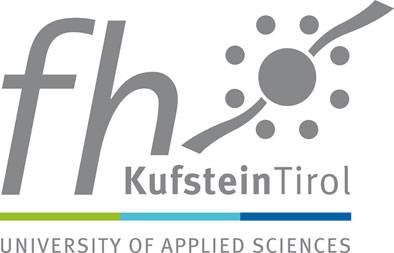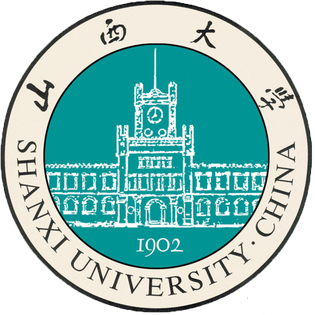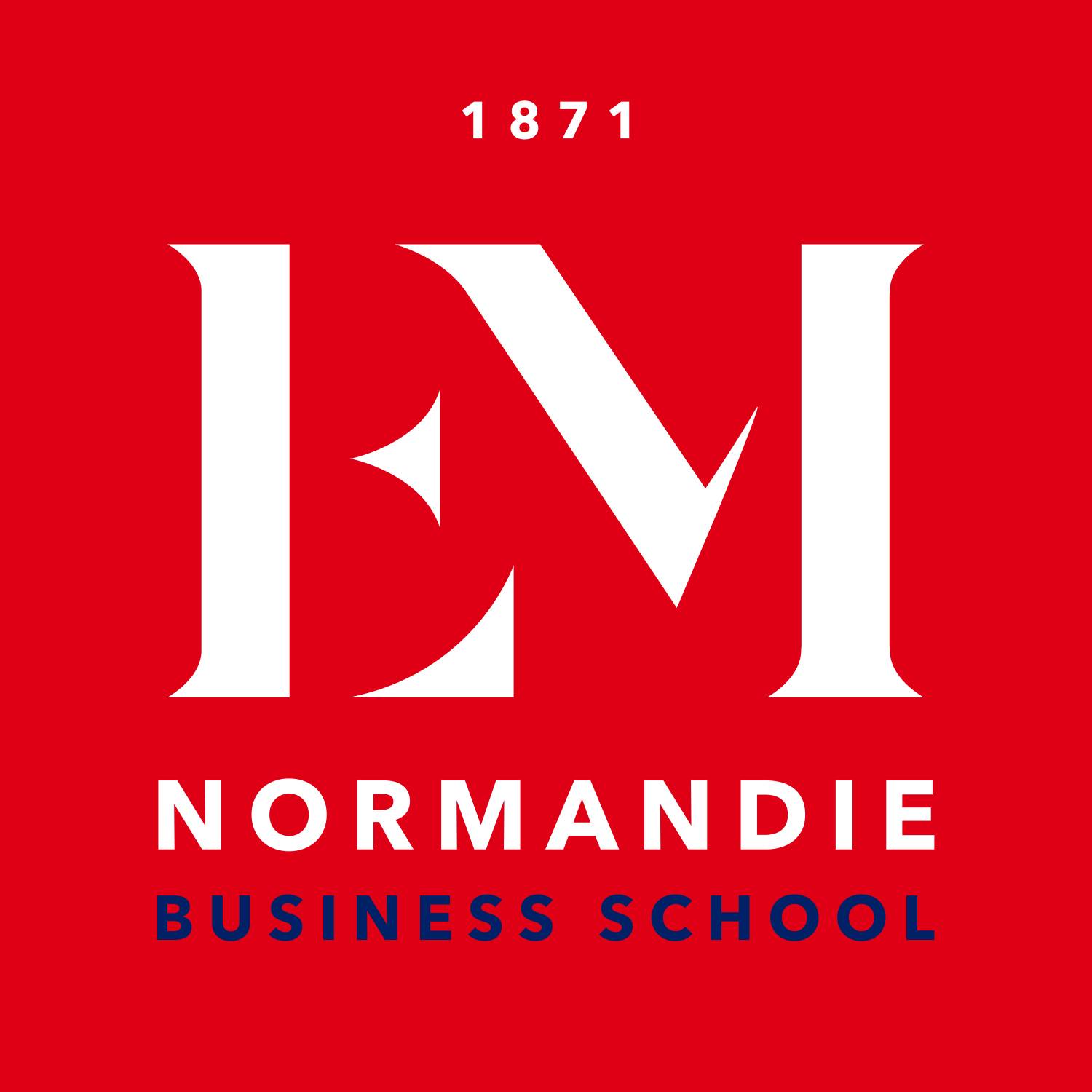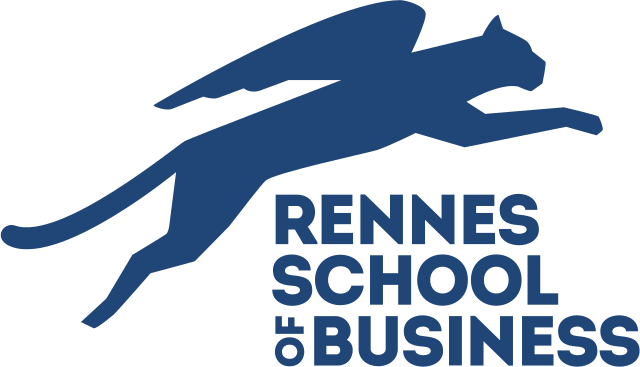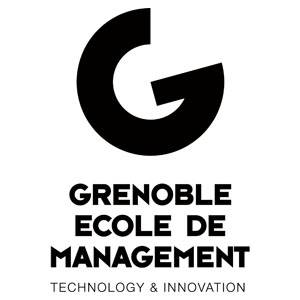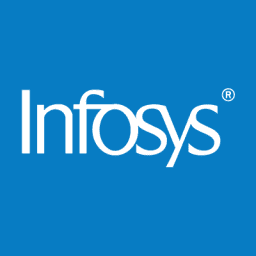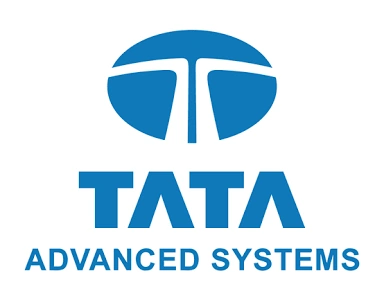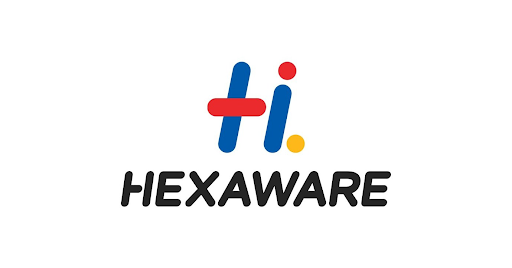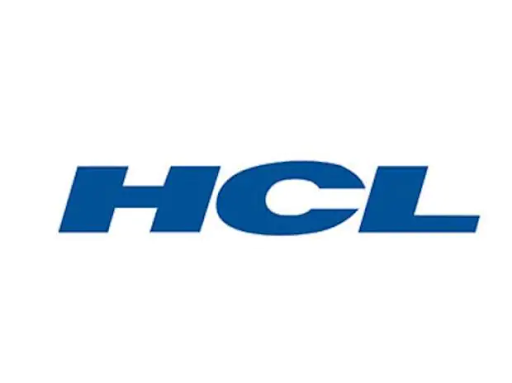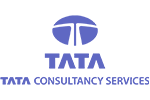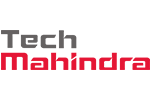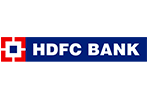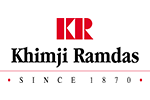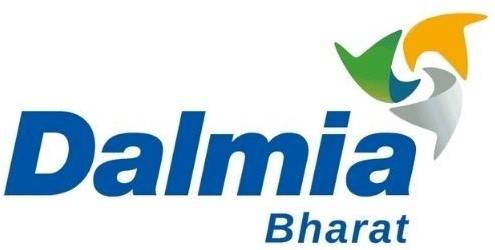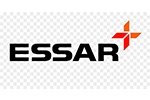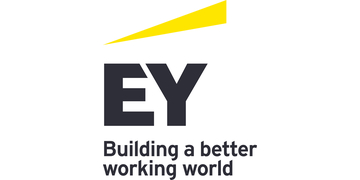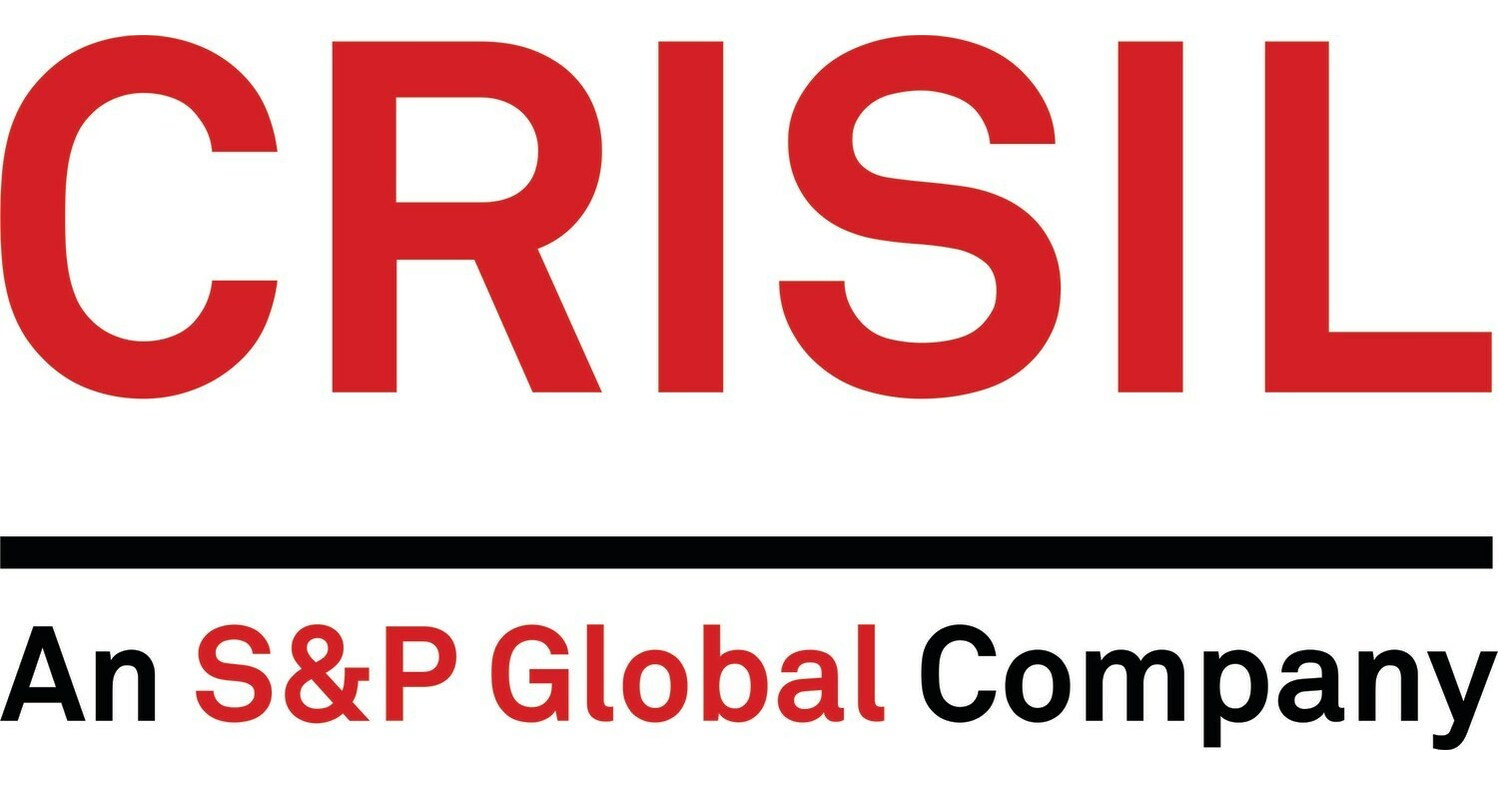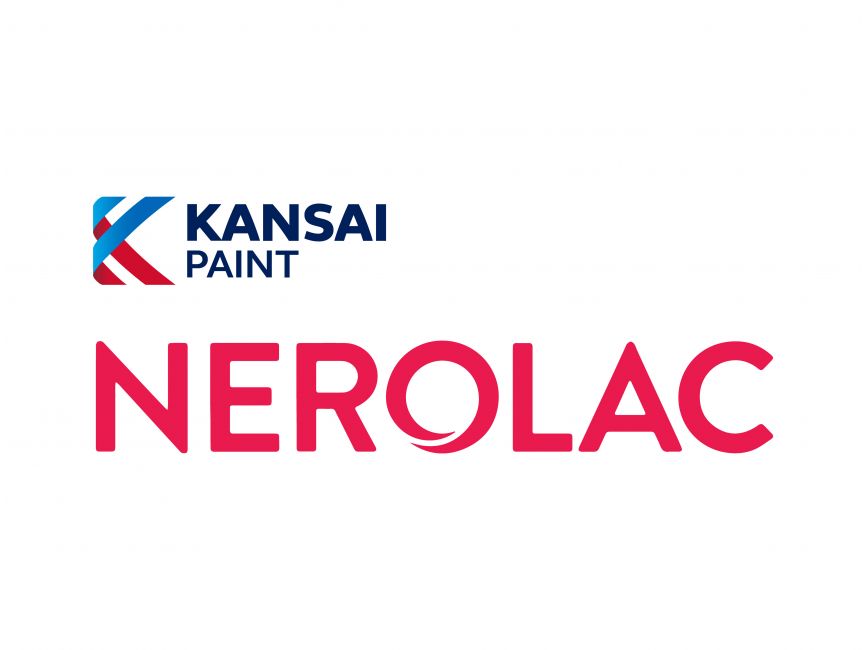Research
- 2025-26
- 2024-25
- 2023-24
- 2022-23
- 2021-22
- 2020-21
- 2019-20
- 2018-19
- 2017-18
- 2016-17
- 2015-16
- 2014-15
- 2013-14
- 2012-13
- 2011-12
- 2010-11

Name : Chakrapani Chaturvedula
Title : From distress to flexibility: A quasi-natural evidence from creditors’ rights reform
Authors: Satish Kumar, Chakrapani Chaturvedula, Nikhil Rastogi
Journal: Finance Research Letters
Volume: Volume 86, Part D, 3 October 2025
URL: https://www.sciencedirect.com/science/article/abs/pii/S1544612325018860?via=ihub
Title : From distress to flexibility: A quasi-natural evidence from creditors’ rights reform
Authors: Satish Kumar, Chakrapani Chaturvedula, Nikhil Rastogi
Journal: Finance Research Letters
Volume: Volume 86, Part D, 3 October 2025
URL: https://www.sciencedirect.com/science/article/abs/pii/S1544612325018860?via=ihub
This study examines the causal effect of the Insolvency and Bankruptcy Code (IBC) of 2016 on the financial flexibility of distressed firms using a difference-in-differences (DiD) framework in the Indian context. The results show that distressed firms experienced a significant improvement in financial flexibility compared to non-distressed firms after the IBC. Such effect is primarily driven by enhanced access to credit, manifested in increased leverage and reduced borrowing costs, rather than precautionary motive. Placebo and PSM-DiD tests validate the robustness of the causal inference, highlighting the IBC’s effectiveness as a structural credit market reform.

Name : Nikhil Rastogi
Title : From distress to flexibility: A quasi-natural evidence from creditors’ rights reform
Authors: Satish Kumar, Chakrapani Chaturvedula, Nikhil Rastogi
Journal: Finance Research Letters
Volume: Volume 86, Part D, 3 October 2025
URL: https://www.sciencedirect.com/science/article/abs/pii/S1544612325018860?via=ihub
Title : From distress to flexibility: A quasi-natural evidence from creditors’ rights reform
Authors: Satish Kumar, Chakrapani Chaturvedula, Nikhil Rastogi
Journal: Finance Research Letters
Volume: Volume 86, Part D, 3 October 2025
URL: https://www.sciencedirect.com/science/article/abs/pii/S1544612325018860?via=ihub
This study examines the causal effect of the Insolvency and Bankruptcy Code (IBC) of 2016 on the financial flexibility of distressed firms using a difference-in-differences (DiD) framework in the Indian context. The results show that distressed firms experienced a significant improvement in financial flexibility compared to non-distressed firms after the IBC. Such effect is primarily driven by enhanced access to credit, manifested in increased leverage and reduced borrowing costs, rather than precautionary motive. Placebo and PSM-DiD tests validate the robustness of the causal inference, highlighting the IBC’s effectiveness as a structural credit market reform.

Name : Chakrapani Chaturvedula
Title : Regulatory Reforms, Share Buyback and Institutional Monitoring of Insider Trading: Evidence from India
Authors: Chakrapani Chaturvedula, K. Sriharsha Reddy, A. Sarath Babu
Journal: Finance Research Letters
Volume: Volume 86, Part D, 1 October 2025
URL: https://www.sciencedirect.com/science/article/abs/pii/S1544612325018483?via=ihub
Title : Regulatory Reforms, Share Buyback and Institutional Monitoring of Insider Trading: Evidence from India
Authors: Chakrapani Chaturvedula, K. Sriharsha Reddy, A. Sarath Babu
Journal: Finance Research Letters
Volume: Volume 86, Part D, 1 October 2025
URL: https://www.sciencedirect.com/science/article/abs/pii/S1544612325018483?via=ihub
We investigate whether institutional investors constrain insider trading around share buyback announcements in India from 2006 to 2024. Using an event study and panel regressions, we find significant abnormal returns in the pre-announcement window, consistent with information leakage. Foreign Institutional Investors (FIIs) reduce pre-buyback cumulative abnormal returns before the Prohibition of Insider Trading Regulations 2015 (PITR 2015), indicating effective monitoring, while Domestic Institutional Investors (DIIs) show weak and insignificant effects. Post-PITR 2015, FII monitoring remains robust, but DII effectiveness further weakens, with a significant decline in monitoring impact. Our findings highlight the critical role of external monitoring and raise questions about the enforcement capacity of DIIs. The study offers unique evidence from an emerging market context on the interplay between regulatory reform, institutional oversight, and insider behavior.

Name : K. Sriharsha Reddy
Title : Regulatory Reforms, Share Buyback and Institutional Monitoring of Insider Trading: Evidence from India
Authors: Chakrapani Chaturvedula, K. Sriharsha Reddy, A. Sarath Babu
Journal: Finance Research Letters
Volume: Volume 86, Part D, 1 October 2025
URL: https://www.sciencedirect.com/science/article/abs/pii/S1544612325018483?via=ihub
Title : Regulatory Reforms, Share Buyback and Institutional Monitoring of Insider Trading: Evidence from India
Authors: Chakrapani Chaturvedula, K. Sriharsha Reddy, A. Sarath Babu
Journal: Finance Research Letters
Volume: Volume 86, Part D, 1 October 2025
URL: https://www.sciencedirect.com/science/article/abs/pii/S1544612325018483?via=ihub
We investigate whether institutional investors constrain insider trading around share buyback announcements in India from 2006 to 2024. Using an event study and panel regressions, we find significant abnormal returns in the pre-announcement window, consistent with information leakage. Foreign Institutional Investors (FIIs) reduce pre-buyback cumulative abnormal returns before the Prohibition of Insider Trading Regulations 2015 (PITR 2015), indicating effective monitoring, while Domestic Institutional Investors (DIIs) show weak and insignificant effects. Post-PITR 2015, FII monitoring remains robust, but DII effectiveness further weakens, with a significant decline in monitoring impact. Our findings highlight the critical role of external monitoring and raise questions about the enforcement capacity of DIIs. The study offers unique evidence from an emerging market context on the interplay between regulatory reform, institutional oversight, and insider behavior.

Name : A. Sarath Babu
Title : Regulatory Reforms, Share Buyback and Institutional Monitoring of Insider Trading: Evidence from India
Authors: Chakrapani Chaturvedula, K. Sriharsha Reddy, A. Sarath Babu
Journal: Finance Research Letters
Volume: Volume 86, Part D, 1 October 2025
URL: https://www.sciencedirect.com/science/article/abs/pii/S1544612325018483?via=ihub
Title : Regulatory Reforms, Share Buyback and Institutional Monitoring of Insider Trading: Evidence from India
Authors: Chakrapani Chaturvedula, K. Sriharsha Reddy, A. Sarath Babu
Journal: Finance Research Letters
Volume: Volume 86, Part D, 1 October 2025
URL: https://www.sciencedirect.com/science/article/abs/pii/S1544612325018483?via=ihub
We investigate whether institutional investors constrain insider trading around share buyback announcements in India from 2006 to 2024. Using an event study and panel regressions, we find significant abnormal returns in the pre-announcement window, consistent with information leakage. Foreign Institutional Investors (FIIs) reduce pre-buyback cumulative abnormal returns before the Prohibition of Insider Trading Regulations 2015 (PITR 2015), indicating effective monitoring, while Domestic Institutional Investors (DIIs) show weak and insignificant effects. Post-PITR 2015, FII monitoring remains robust, but DII effectiveness further weakens, with a significant decline in monitoring impact. Our findings highlight the critical role of external monitoring and raise questions about the enforcement capacity of DIIs. The study offers unique evidence from an emerging market context on the interplay between regulatory reform, institutional oversight, and insider behavior.

Name : Mahesh Ramalingam
Title : Thriving in Disruption: Enhancing Satisfaction Through Collaborative Engagement
Authors: Manoj Das, Mahesh Ramalingam, Shabnam Priyadarshini, Monika Agrawal, Kirti Goyal
Journal: Global Business and Organizational Excellence
Volume: 30 September 2025
URL: https://onlinelibrary.wiley.com/doi/abs/10.1002/joe.70014?msockid=353a07278c2c6dbc1a7513c68d9e6c19
Title : Thriving in Disruption: Enhancing Satisfaction Through Collaborative Engagement
Authors: Manoj Das, Mahesh Ramalingam, Shabnam Priyadarshini, Monika Agrawal, Kirti Goyal
Journal: Global Business and Organizational Excellence
Volume: 30 September 2025
URL: https://onlinelibrary.wiley.com/doi/abs/10.1002/joe.70014?msockid=353a07278c2c6dbc1a7513c68d9e6c19
In today’s volatile environment, organizations must navigate frequent disruptions—ranging from pandemics to digital transformation—while maintaining stakeholder satisfaction. However, there is a gap in understanding the true effectiveness of technology in facilitating education in the new virtual realm. This study fills this gap by investigating how collaborative engagement can enhance satisfaction in such contexts, using the case of online education during the COVID-19 pandemic. Collaborative learning promotes a feeling of brotherly affection and shared purpose among learners, leading to heightened satisfaction levels and a greater sense of control in the virtual learning environment. It nurtures the development of vital social skills crucial for effective virtual interactions. Individuals who perceive a greater sense of control over their virtual environment are more likely to exhibit enhanced virtual social skills and experience higher levels of satisfaction. The study also reveals the complex relationships between collaborative learning, satisfaction, perceived control, and virtual social skills. It highlights the transformative potential of collaborative learning by empowering students with greater control over their learning experiences and leveraging their virtual social skills. Instructors play a crucial role in creating an environment that fosters students’ comfort and confidence in the online medium, using strategies such as interactive activities, breakout rooms, and emoticons to enhance virtual social skills and elicit positive responses from students. To ensure continuous learning during events like the COVID-19 pandemic, instructors should empower students by granting them more control over their learning process, support students in adapting to technological changes, and provide interactive content to cultivate necessary skills for navigating future challenges. Policy frameworks must incorporate mechanisms for peer learning, learner autonomy, and evolving teacher roles, especially as India expands its EdTech ecosystem across diverse demographic and infrastructural contexts.

Name : Indranil Ghosh
Title : Predicting BRICS NIFTY50 returns using XAI and S.A.F.E AI lens
Authors: Indranil Ghosh, Tamal Datta Chaudhuri, Golnoosh Babaei, Paolo Giudici, Emanuela Raffinetti
Journal: Frontiers in Artificial Intelligence
Volume: 18 September 2025
URL: Frontiers | Predicting BRICS NIFTY50 returns using XAI and S.A.F.E AI lens
Title : Predicting BRICS NIFTY50 returns using XAI and S.A.F.E AI lens
Authors: Indranil Ghosh, Tamal Datta Chaudhuri, Golnoosh Babaei, Paolo Giudici, Emanuela Raffinetti
Journal: Frontiers in Artificial Intelligence
Volume: 18 September 2025
URL: Frontiers | Predicting BRICS NIFTY50 returns using XAI and S.A.F.E AI lens
Global fund managers, in their effort toward risk diversification and generating higher returns, design portfolios that consist of financial assets of various countries. In the process, they expose their investors not only to the fundamentals of the assets but also to transnational volatility, macroeconomic shocks of different countries, and exchange rate fluctuations. These factors make forecasting returns from such global funds quite difficult and, at the same time, challenging. To aid global fund managers and investors, this study presents a forecasting framework for predicting returns from Goldman Sachs BRICs Nifty 50 Developed Markets Index (BRICS NIFTY 50), which is a traded and listed financial asset. It is a global portfolio, which not only exposes investors to the fundamentals of different companies but also to country risk.

Name : Musarrat Shaheen
Title : A meta-analysis on consumer ethical decision-making in P2P accommodations: Role of social, economic, and environmental benefits
Authors: Wagner Junior Ladeira, Fernando de Oliveira Santini, Tareq Rasul, M.S. Balaji, Musarrat Shaheen
Journal: International Journal of Hospitality Management
Volume: Volume 133, February 2026, 104412, 9 September 2025
URL: https://www.sciencedirect.com/science/article/pii/S0278431925003408?via=ihub
Title : A meta-analysis on consumer ethical decision-making in P2P accommodations: Role of social, economic, and environmental benefits
Authors: Wagner Junior Ladeira, Fernando de Oliveira Santini, Tareq Rasul, M.S. Balaji, Musarrat Shaheen
Journal: International Journal of Hospitality Management
Volume: Volume 133, February 2026, 104412, 9 September 2025
URL: https://www.sciencedirect.com/science/article/pii/S0278431925003408?via=ihub
This meta-analysis investigates the influence of social, economic, and environmental benefits on consumers’ ethical perceptions and related outcomes in the context of P2P accommodations. Employing a systematic approach, the analysis synthesized findings from 113 studies published between 2014 and 2024, yielding 2611 effect sizes. The study identifies critical drivers of consumer ethical perceptions, revealing that social, economic, and environmental benefits enhance perceived authenticity, quality, hedonic value, consumer participation, and trust. Furthermore, these benefits significantly shape ethical consequences such as consumer attitudes, loyalty, satisfaction, word-of-mouth, and behavioural intentions. The analysis also identifies notable methodological and contextual moderators, including sample size, advancements in the sharing economy, travel and tourism indices, and market maturity, which impact the relationship between these benefits and behavioural intentions. The findings provide strategic insights into how P2P accommodations can leverage these benefits to strengthen consumer relationships and drive positive ethical outcomes.

Name : Musarrat Shaheen
Title : Understanding heterogeneity in service research: a meta-analytic perspective
Authors: Wagner Junior Ladeira, Tareq Rasul, Fernando de Oliveira Santini, John Lewis Rice, Musarrat Shaheen
Journal: The Service Industries Journal
Volume: 1 September 2025
URL: https://www.tandfonline.com/doi/full/10.1080/02642069.2025.2523269
Title : Understanding heterogeneity in service research: a meta-analytic perspective
Authors: Wagner Junior Ladeira, Tareq Rasul, Fernando de Oliveira Santini, John Lewis Rice, Musarrat Shaheen
Journal: The Service Industries Journal
Volume: 1 September 2025
URL: https://www.tandfonline.com/doi/full/10.1080/02642069.2025.2523269
This article examines the evolution and complexity of service research, emphasizing the role of meta-analyses in synthesizing findings across diverse studies. It evaluates how meta-analytic methods are used to address heterogeneity in primary studies and to understand the influence of moderators. Using a systematic literature review, the study follows three phases: (1) assembling a dataset of 202 meta-analyses from 1985 to 2024; (2) applying rigorous filtering to ensure quality and relevance; and (3) analyzing the data through coding and keyword-based clustering. Heterogeneity in service research stems from varied contexts and methodological approaches, yet its impact on theoretical and practical insights remains underexplored. This study addresses that gap by examining how heterogeneity should be treated and what it implies for knowledge accumulation. The findings underscore the importance of methodological rigor to improve the generalizability of meta-analytical results. Additionally, understanding the role of moderators is shown to enhance research design and guide future work toward more cohesive, evidence-based practices in service research

Name : Pushpesh Pant
Title : Performance measurement through corporate communication: evidence from Indian manufacturing firms
Authors: Pushpesh Pant, Ashok Nimiwal, Shantanu Dutta, Sarada Prasad Sarmah
Journal: International Journal of Productivity and Performance Management
Volume: 4 September 2025
URL: https://www.emerald.com/ijppm/article/doi/10.1108/IJPPM-09-2024-0645/1276806/Performance-measurement-through-corporate
Title : Performance measurement through corporate communication: evidence from Indian manufacturing firms
Authors: Pushpesh Pant, Ashok Nimiwal, Shantanu Dutta, Sarada Prasad Sarmah
Journal: International Journal of Productivity and Performance Management
Volume: 4 September 2025
URL: https://www.emerald.com/ijppm/article/doi/10.1108/IJPPM-09-2024-0645/1276806/Performance-measurement-through-corporate
This study aims to address the limited unsderstanding of how linguistic signals in corporate disclosures influence firm performance in emerging economies, where unique ownership structures, market concentration and policy uncertainties shape disclosure practices. By exploring these dynamics, the study provides insights into the complex interplay between communication strategies and financial outcomes.

Name : Indranil Ghosh
Title : Predicting financial cycles with dynamic ensemble selection frameworks using leading, coincident and lagging indicators
Authors: Indranil Ghosh, Tamal Datta Chaudhuri, Layal Isskandarani, Mohammad Zoynul Abedin
Journal: Research in International Business and Finance
Volume: 23 August 2025
URL: https://www.sciencedirect.com/science/article/pii/S0275531925003708
Title : Predicting financial cycles with dynamic ensemble selection frameworks using leading, coincident and lagging indicators
Authors: Indranil Ghosh, Tamal Datta Chaudhuri, Layal Isskandarani, Mohammad Zoynul Abedin
Journal: Research in International Business and Finance
Volume: 23 August 2025
URL: https://www.sciencedirect.com/science/article/pii/S0275531925003708
This paper develops a model for predicting financial cycles in India, and defines leading, coincident, and lagging indicators to achieve the research objective. The dependent variable is binary, and Synthetic Minority Oversampling Technique (SMOTE) is used for correcting imbalances in the dataset. The study utilizes six distinct Dynamic Ensemble Selection (DES) models, and five different pools of classifiers. Explainable Artificial Intelligence (XAI) is used to identify feature importance. The predictive framework is applied to different time periods with distinct characteristics, and all the DES frameworks yield efficient forecasts. The importance and role of the indicators, however, differ among phases. Our results show, that while during CYCLE phases, exchange rate fluctuations play a significant role in explaining financial cycles, in an UPWARD expansionary phase, expansion in bank credit, capital formation, and realty growth are significant factors. During a DOWNWARD phase and a bearish environment, VIX and oil prices emerge significant.

Name : Rohan Kumar Mishra
Title : Research on related party transactions (RPTs): a systematic review and bibliometric analysis
Authors: Rohan Kumar Mishra, Debidutta Pattnaik, M. Kabir Hassan, Abhijeet Chandra
Journal: International Review of Economics & Finance
Volume: Volume 103, October 2025, 104469. 24 July 2025
URL: https://www.sciencedirect.com/science/article/pii/S105905602500632X
Title : Research on related party transactions (RPTs): a systematic review and bibliometric analysis
Authors: Rohan Kumar Mishra, Debidutta Pattnaik, M. Kabir Hassan, Abhijeet Chandra
Journal: International Review of Economics & Finance
Volume: Volume 103, October 2025, 104469. 24 July 2025
URL: https://www.sciencedirect.com/science/article/pii/S105905602500632X
This study aims to offer new quantitative and qualitative insights into transaction efficiency and conflict of interest among minority and controlling shareholders in related party transactions (RPTs). We utilize systematic literature review (SLR) and bibliometric techniques to analyse 218 published articles. Our analysis identifies significant contributors, publishing sources, research groups, and maps the evolution of RPT themes and their relationship to contemporary theoretical frameworks. Subsequently, we conduct a comprehensive network and content analysis. Our findings indicate that research in RPTs began evolving post-global financial crisis, particularly since 2008, with East-Asian researchers dominating the intellectual discourse. Most studies are non-collaborative and based on empirical evidence from a limited number of countries. Methodologically, many studies employ descriptive statistics or regression techniques. We identify six thematic clusters contributing to the growth narrative of RPT research. Furthermore, we identify potential avenues for future research in RPTs and corporate governance while highlighting progressive trends and dynamics within the selected themes.

Name : Purnima Khemani
Title : Do opposites attract? Understanding the influence of infographics and message credibility on investor perceptions and decision-making
Authors: Purnima Khemani, Dilip Kumar
Journal: Journal of Business Research
Volume: Volume 200 November 2025, 115587. 10 July 2025
URL: https://www.sciencedirect.com/science/article/pii/S0148296325004102
Title : Do opposites attract? Understanding the influence of infographics and message credibility on investor perceptions and decision-making
Authors: Purnima Khemani, Dilip Kumar
Journal: Journal of Business Research
Volume: Volume 200 November 2025, 115587. 10 July 2025
URL: https://www.sciencedirect.com/science/article/pii/S0148296325004102
This study investigates the impact of infographics and message credibility on perceived corporate hypocrisy and willingness to invest. Deploying a 2 × 2 between-subjects experimental design, the study shows that extensive use of infographics increases the perception of corporate hypocrisy whereas high message credibility decreases the perception of corporate hypocrisy. The findings show that investors view external assurance as a valid veneer of legitimacy and do not discount its importance. In fact, the results also show that infographics and message credibility do not impact investors’ willingness to invest. The study highlights that impression management strategies do not “impress investors.”
Name : Sricharan Chirra
Title : Critical Success Factors for Sustainable Supply Chain Flexibility
Authors: Sricharan Chirra, Rakesh Raut
Journal: Global Journal of Flexible Systems Management
Volume: 7 July 2025
URL: https://link.springer.com/article/10.1007/s40171-025-00451-1
Title : Critical Success Factors for Sustainable Supply Chain Flexibility
Authors: Sricharan Chirra, Rakesh Raut
Journal: Global Journal of Flexible Systems Management
Volume: 7 July 2025
URL: https://link.springer.com/article/10.1007/s40171-025-00451-1
In today’s dynamic business landscape, sustainable and flexible supply chains are crucial for organizational resilience and responsiveness. Among the key adaptive strategies that firms employ are demand-stimulating mechanisms, such as sales promotions, often initiated to manage inventory levels and accelerate the market penetration of innovative products. While these strategies are often pre-planned, unpredictable demand surges necessitate supply chains that can respond quickly. Adopting the dynamic capability view as its conceptual lens, this study examines Indian automotive supply chains to identify and analyze the critical success factors for achieving sustainable supply chain flexibility to manage demand surges during these adaptive options. Applying the best–worst method cum DEMATEL, along with the sensitivity analysis conducted, the research presents data-driven insights. Findings from both methodologies highlight that sustainable manufacturing, sustainable sourcing, and volume flexibilities play a key role in enabling organizations to meet promotional surges while maintaining sustainability, underscoring their importance as core dynamic capabilities for competitive advantage. This study offers practical insights for enhancing sustainable responsiveness to demand surges, focusing on the automotive sector. It progresses the conceptualization of sustainable supply chain flexibility as rapid, sustainable adaptation to promotional demand fluctuations and applies a combined BWM-DEMATEL methodology to strengthen research in this evolving domain.

Name : Pushpesh Pant
Title : CSR–Performance Relationship Paradox: The Moderating Effect of Organization Structure
Authors: Pushpesh Pant, Tulika Sharma
Journal: Global Business Review
Volume: 27 June 2025
URL: https://journals.sagepub.com/doi/10.1177/09721509251345582
Title : CSR–Performance Relationship Paradox: The Moderating Effect of Organization Structure
Authors: Pushpesh Pant, Tulika Sharma
Journal: Global Business Review
Volume: 27 June 2025
URL: https://journals.sagepub.com/doi/10.1177/09721509251345582
Building on social capital theory and shareholder value theory, this study re-examines the paradoxical impact of corporate social responsibility investments on firm performance in light of the organizational structure. In this research, the unit of analysis is limited to Indian manufacturing firms that are publicly listed on the Bombay Stock Exchange. Using panel data from 2015 to 2022 gathered from the Prowess database, this study has established empirical proxies for corporate social responsibility, organizational structure (business group vs. standalone firm), firm performance and other pertinent variables. Subsequently, panel data regression analyses have been utilized to address the research questions. More importantly, all models incorporate industry and year effects and robust standard errors to account for heteroscedasticity. While corporate social responsibility investments create social capital and enhance performance, the results offer a striking contrast—business group firms exhibit significantly higher corporate social responsibility investments yet experience lower financial returns compared to their standalone counterparts. This paradoxical phenomenon arises from business group affiliation negatively moderating the relationship between corporate social responsibility and performance. Building on social capital theory, this research suggests that firms need to consider their organizational structure when developing corporate social responsibility strategies to maximize both financial and social performance.
Name : Tulika Sharma
Title : CSR–Performance Relationship Paradox: The Moderating Effect of Organization Structure
Authors: Pushpesh Pant, Tulika Sharma
Journal: Global Business Review
Volume: 27 June 2025
URL: https://journals.sagepub.com/doi/10.1177/09721509251345582
Title : CSR–Performance Relationship Paradox: The Moderating Effect of Organization Structure
Authors: Pushpesh Pant, Tulika Sharma
Journal: Global Business Review
Volume: 27 June 2025
URL: https://journals.sagepub.com/doi/10.1177/09721509251345582
Building on social capital theory and shareholder value theory, this study re-examines the paradoxical impact of corporate social responsibility investments on firm performance in light of the organizational structure. In this research, the unit of analysis is limited to Indian manufacturing firms that are publicly listed on the Bombay Stock Exchange. Using panel data from 2015 to 2022 gathered from the Prowess database, this study has established empirical proxies for corporate social responsibility, organizational structure (business group vs. standalone firm), firm performance and other pertinent variables. Subsequently, panel data regression analyses have been utilized to address the research questions. More importantly, all models incorporate industry and year effects and robust standard errors to account for heteroscedasticity. While corporate social responsibility investments create social capital and enhance performance, the results offer a striking contrast—business group firms exhibit significantly higher corporate social responsibility investments yet experience lower financial returns compared to their standalone counterparts. This paradoxical phenomenon arises from business group affiliation negatively moderating the relationship between corporate social responsibility and performance. Building on social capital theory, this research suggests that firms need to consider their organizational structure when developing corporate social responsibility strategies to maximize both financial and social performance.
Name : Krishna Dixit
Title : Impact of Knowledge Transfer and Sharing on Sustainable Family Business Performance: The Moderating Role of Digital Transformation
Authors: Nandini Varshney, Krishna Dixit, Sukriti Pandey, Satya Ranjan Acharya
Journal: The Electronic Journal of Information Systems in Developing Countries
Volume: Volume91, Issue4, 18 June 2025
URL: https://onlinelibrary.wiley.com/doi/full/10.1002/isd2.70016
Title : Impact of Knowledge Transfer and Sharing on Sustainable Family Business Performance: The Moderating Role of Digital Transformation
Authors: Nandini Varshney, Krishna Dixit, Sukriti Pandey, Satya Ranjan Acharya
Journal: The Electronic Journal of Information Systems in Developing Countries
Volume: Volume91, Issue4, 18 June 2025
URL: https://onlinelibrary.wiley.com/doi/full/10.1002/isd2.70016
Sustainable family business performance has a complex relationship with knowledge transfer and knowledge sharing, as well as the mediating role of digital transformation and innovation capability of family businesses. This study examines these dynamics within family businesses in India. Data was collected from 259 family businesses using a survey method, and the analysis was performed using Partial Least Squares Structural Equation Modeling (PLS-SEM). The findings show positive and significant relationships among most variables, except for knowledge transfer and digital transformation, which showed a positive but insignificant effect. This weak correlation can be attributed to several factors, such as cultural and value differences and a lack of integrity and trust across generations. This study provides valuable insights into the benefits of digital transformation for policymakers, practitioners, and family business owners, emphasizing its importance in the context of an emerging advanced economy.

Name : Pushpesh Pant
Title : Fake news detection for sustainable supply chain management using deceptive tones: an application of ML, NLP and Explainable AI
Authors: Pushpesh Pant, Rohit Yadav, Muhammed Niyas KP, Krishna Kumar Dadsena, Saurabh Pratap, Amit Sachan
Journal: Enterprise Information Systems
Volume: 12 June 2025
URL: https://www.tandfonline.com/doi/full/10.1080/17517575.2025.2510350
Title : Fake news detection for sustainable supply chain management using deceptive tones: an application of ML, NLP and Explainable AI
Authors: Pushpesh Pant, Rohit Yadav, Muhammed Niyas KP, Krishna Kumar Dadsena, Saurabh Pratap, Amit Sachan
Journal: Enterprise Information Systems
Volume: 12 June 2025
URL: https://www.tandfonline.com/doi/full/10.1080/17517575.2025.2510350
This study develops a novel framework to detect deceptive tones related to sustainable supply chain (SSC) in annual disclosure. Using natural language processing, machine learning, and explainable AI, the model extracts 15 linguistic features from annual reports to compute a deceptive score related to SSC. The findings reveal a positive relationship between deceptive scores and increased word count, and therefore, suggest strategic manipulation in SSC narratives. In essence, the present paper develops a robust tool that can be integrated into ERP/CRM systems to enable automated detection of SSC-related misleading claims, making it highly valuable for investors, regulators, and enterprises.

Name : Rona Elizabeth Kurian
Title : Board composition and firm internationalization: Are emerging market multinational enterprises unique?
Authors: Madhurima Basu, Rona Elizabeth Kurian
Journal: Corporate Ownership and Control
Volume: Volume 22 ,2025, Issue 2. (26 May 2025)
URL: https://virtusinterpress.org/Board-composition-and-firm-internationalization-Are-emerging-market-multinational-enterprises-unique.html
Title : Board composition and firm internationalization: Are emerging market multinational enterprises unique?
Authors: Madhurima Basu, Rona Elizabeth Kurian
Journal: Corporate Ownership and Control
Volume: Volume 22 ,2025, Issue 2. (26 May 2025)
URL: https://virtusinterpress.org/Board-composition-and-firm-internationalization-Are-emerging-market-multinational-enterprises-unique.html
The paper explores the impact of board composition on the degree of firm internationalization for emerging market multinational enterprises (EMNEs). Departing from previous studies focused on developed market multinational enterprises (DMNEs), in light of institutional voids in emerging economies, we hypothesize the relationship of board size, insider leadership, board independence, and board interlock with the level of internationalization of EMNEs. Using data from 5,104 publicly listed Indian firms from 2012 to 2020, we conducted a Tobit panel regression. The results show that board size and insider leadership are negatively correlated, while board interlock has a positive relationship, and board independence was insignificant with the level of internationalization. The findings of the study contribute to the EMNE literature by providing context-specific knowledge on board composition and internationalization. Furthermore, the results of this study contribute to the corporate governance literature regarding board dynamics in the context of emerging markets, which differ significantly from board dynamics in developed market companies
Name : Praveen Puram
Title : Does salary disparity affect team performance in cricket? Evidence from the Indian Premier League
Authors: Deepak Srivastav, Praveen Puram, Rudra Sensarma, Anand Gurumurthy
Journal: IIMB Management Review
Volume: Vol 37, Issue: 2. Published 25-April-2025
URL: https://www.sciencedirect.com/science/article/pii/S0970389625000205
Title : Does salary disparity affect team performance in cricket? Evidence from the Indian Premier League
Authors: Deepak Srivastav, Praveen Puram, Rudra Sensarma, Anand Gurumurthy
Journal: IIMB Management Review
Volume: Vol 37, Issue: 2. Published 25-April-2025
URL: https://www.sciencedirect.com/science/article/pii/S0970389625000205
We examine salary disparity and team performance using data from 11 seasons of the Indian Premier League (IPL) between 2008 and 2019. Research on corporate pay structures and professional team sports organisations has examined salary disparity and its ramifications, but the case of cricket is less explored, particularly in relation to team performance. We study the world’s largest cricket league, viz. IPL, which imposes hard budget caps making pay disparities more likely. We find evidence for equity pay theory according to which salary disparity cripples group harmony and team performance by creating a perception of inequality and jealousy among employees.
Name : Krishna Dixit
Title : Leveraging Social and Intellectual Capital for Social Entrepreneurship: A Model for Sustainable Business Practices in an Uncertain Environment
Authors: Krishna Dixit, Pranav Kumar, Kumar Aashish, Mohammad Zohair
Journal: Journal of Risk and Financial Management
Volume: Volume 18(2), 22 January 2025
URL: https://www.mdpi.com/1911-8074/18/2/46
Title : Leveraging Social and Intellectual Capital for Social Entrepreneurship: A Model for Sustainable Business Practices in an Uncertain Environment
Authors: Krishna Dixit, Pranav Kumar, Kumar Aashish, Mohammad Zohair
Journal: Journal of Risk and Financial Management
Volume: Volume 18(2), 22 January 2025
URL: https://www.mdpi.com/1911-8074/18/2/46
Social entrepreneurship helps solve social issues and bridges public and private sectors. This study uses a comprehensive framework to examine social, intellectual, and external risks in social entrepreneurship and its effects on society and the environment. Using the literature review’s variables, this study developed a conceptual model. The empirical research is based on a survey of 252 social entrepreneurs from different industrial/service sectors. The findings show that intellectual capital helps identify and seize social opportunities. Social capital—social networks, knowledge, trust, and critical resources—guide social entrepreneurs through complex social business environments. The study’s novel approach to external uncertainty in social entrepreneurship shows that firms can design risk-resilient strategies to build sustainable business models by considering external uncertainty. Organizations can consider social entrepreneurship’s social and environmental impacts to create businesses that address the root causes of societal issues. The study adds to theoretical understanding by incorporating a variety of factors that influence social entrepreneurship function and frameworks in driving social and environmental impact.
Name : Praveen Puram
Title : The impact of trust-based challenges on user satisfaction in food sharing platforms: A text mining approach
Authors: Ben Krishna, Praveen Puram
Journal: Technological Forecasting and Social Change
Volume: 21 April 2025
URL: https://www.sciencedirect.com/science/article/pii/S0040162525001908?via=ihub
Title : The impact of trust-based challenges on user satisfaction in food sharing platforms: A text mining approach
Authors: Ben Krishna, Praveen Puram
Journal: Technological Forecasting and Social Change
Volume: 21 April 2025
URL: https://www.sciencedirect.com/science/article/pii/S0040162525001908?via=ihub
Food waste is a pressing ethical and environmental challenge. One-third of all food produced is wasted, while 3 billion people are food insecure. Online food-sharing platforms enable the redistribution of surplus food at a community level. Though highly beneficial, these platforms have not witnessed high usage due to multiple challenges, which includes trust. As stakeholders' trust in food-sharing apps is essential to maintain their patronage, this study attempts to obtain trust-based challenges and assess their impact on user satisfaction through a mixed-method study. Using topic modeling, user reviews from popular food-sharing apps are first analyzed to identify eight challenges that impact user experience. These challenges are then aligned with the dimensions of cognition-based trust, experience-based trust, and personality-oriented trust. Further, hypotheses are formulated and tested using linear regression to assess the impact of these challenges on user experience. This study addresses the topics of food waste and food insecurity, which are related to Sustainable Development Goals (SDGs): SDG-2 (Zero hunger) and SDG-12 (Responsible consumption and production). While some challenges have been explored in the extant literature, others are unique to this study, such as the lack of optimal expe rience, information quality, perceived privacy, and opportunism. These findings contribute to the food-sharing literature by analyzing user experiences worldwide and assesses trust-related challenges, thereby improving upon the extant literature which mainly explores the motivators, and has a cursory focus on the aspect of ‘trust’. Also, this study informs policy development to address users' trust concerns, thus enhancing food-sharing apps' adoption.

Name : Pranay Sindhu
Title : What motivates customers to purchase from social commerce pages? A means-end chain approach
Authors: Pranay Sindhu, Kumkum Bharti
Journal: Information Technology & People
Volume: 14 March 2025
URL: https://www.emerald.com/insight/content/doi/10.1108/itp-10-2022-0735/full/html
Title : What motivates customers to purchase from social commerce pages? A means-end chain approach
Authors: Pranay Sindhu, Kumkum Bharti
Journal: Information Technology & People
Volume: 14 March 2025
URL: https://www.emerald.com/insight/content/doi/10.1108/itp-10-2022-0735/full/html
This study investigates the benefits and personal values that motivate customers to purchase from social commerce (s-commerce).

Name : Pushpesh Pant
Title : Interplay between CSR, female director, promoter ownership and firm performance: a resource orchestration theory perspective.
Authors: Pushpesh Pant, Rohit Yadav, Abhinav Vats
Journal: Managerial Finance
Volume: 27 February 2025
URL: https://www.emerald.com/insight/content/doi/10.1108/mf-11-2024-0846/full/html
Title : Interplay between CSR, female director, promoter ownership and firm performance: a resource orchestration theory perspective.
Authors: Pushpesh Pant, Rohit Yadav, Abhinav Vats
Journal: Managerial Finance
Volume: 27 February 2025
URL: https://www.emerald.com/insight/content/doi/10.1108/mf-11-2024-0846/full/html
Building on resource orchestration theory (ROT), this study assesses the link between corporate social responsibility (CSR) and firm performance considering the influence of female director representation and ownership structure.

Name : Mahesh Ramalingam
Title : Unlocking omnichannel capabilities to understand consumer retention: unravelling cross-channel integration and consumer empowerment
Authors: Gunjan Malhotra, Mahesh Ramalingam
Journal: Benchmarking: An International Journal
Volume: Published: 28 February 2025
URL: https://www.emerald.com/insight/content/doi/10.1108/bij-04-2024-0264/full/html
Title : Unlocking omnichannel capabilities to understand consumer retention: unravelling cross-channel integration and consumer empowerment
Authors: Gunjan Malhotra, Mahesh Ramalingam
Journal: Benchmarking: An International Journal
Volume: Published: 28 February 2025
URL: https://www.emerald.com/insight/content/doi/10.1108/bij-04-2024-0264/full/html
This study addresses a gap in understanding consumer retention in omnichannel retailing. It explores the impact of omnichannel capabilities on consumer retention by examining the roles of consumer empowerment, cross-channel integration, retailer uncertainty and consumer satisfaction.

Name : Sarath Babu
Title : Gen Zs and millennials’ orientation towards AI tools: an index approach
Authors: Santanu Mandal, Sarath Babu, Raghu Raman
Journal: Technology Analysis & Strategic Management
Volume: Published: 7 February 2025
URL: https://www.tandfonline.com/doi/full/10.1080/09537325.2025.2459189
Title : Gen Zs and millennials’ orientation towards AI tools: an index approach
Authors: Santanu Mandal, Sarath Babu, Raghu Raman
Journal: Technology Analysis & Strategic Management
Volume: Published: 7 February 2025
URL: https://www.tandfonline.com/doi/full/10.1080/09537325.2025.2459189
There is increasing engagement with AI tools; however, the extant literature needs a prominent tool to examine the factors that develop the attractiveness of AI tools to improve productivity. To this end, we developed an index of AI tool attractiveness (AI-ATT) based on the extended unified theory of acceptance and use of technology (UTAUT2). This study proposed performance expectancy, effort expectancy, social influence, facilitating conditions, hedonic motivation, and price value as potential formative constituents and enablers of AI-ATT. Based on 311 perceptual responses from Gen Zs and millennials residing in East India, and 224 from the West, this study developed a six-factor index for AI-ATT based on established best practices. Perceptual responses for the measurement and structural models using partial least squares. The contingent effect was evaluated using Process Macro in the SPSS 28. The developed index can also predict the behavioural intention of Gen Zs and millennials to use AI tools. Furthermore, the study underscores the significant contingent effect of generation (Gen Z vs. millennials) on each enabler’s role in AI ATT. The theoretical and practical implications are also discussed. This study is the first to develop a measurement scale for understanding the perceived attractiveness of AI tools.

Name : Indranil Ghosh
Title : Prediction and decoding of metaverse coin dynamics: a granular quest using MODWT-Facebook’s prophet-TBATS and XAI methodology
Authors: Indranil Ghosh, Amith Vikram Megaravalli, Mohammad Zoynul Abedin, Kazim Topuz
Journal: Annals of Operations Research
Volume: Published: 28 January 2025
URL: https://link.springer.com/article/10.1007/s10479-025-06491-1
Title : Prediction and decoding of metaverse coin dynamics: a granular quest using MODWT-Facebook’s prophet-TBATS and XAI methodology
Authors: Indranil Ghosh, Amith Vikram Megaravalli, Mohammad Zoynul Abedin, Kazim Topuz
Journal: Annals of Operations Research
Volume: Published: 28 January 2025
URL: https://link.springer.com/article/10.1007/s10479-025-06491-1
The growing media buzz and industry focus on the emergence and rapid development of Metaverse technology have paved the way for the escalation of multifaceted research. Specific Metaverse coins have come into existence, but they have barely seen any traction among practitioners despite their tremendous potential. The current work endeavors to deeply analyze the temporal characteristics of 6 Metaverse coins through the lens of predictive analytics and explain the forecasting process. The dearth of research imposes serious challenges in building the forecasting model. We resort to a granular prediction setup incorporating the Maximal Overlap Discrete Wavelet Transformation (MODWT) technique to disentangle the original series into subseries. Facebook's Prophet and TBATS algorithms are utilized to individually draw predictions on granular components. Aggregating components-wise forecasted figures achieve the final forecast. Facebook's Prophet is deployed in a multivariate setting, applying a set of explanatory features covering macroeconomic, technical, and social media indicators. Rigorous performance checks justify the efficiency of the integrated forecasting framework. Additionally, to interpret the black box typed prediction framework, two explainable artificial intelligence (XAI) frameworks, SHAP and LIME, are used to gauge the nature of the influence of the predictor variables, which serve several practical insights.

Name : Rajan Kumar Gangadhari
Title : Is driving an electric two-wheeler (E2W) safe? Analysing safety risk factors of E2W considering the quality and reliability criteria
Authors: Pradeep Kumar Tarei, Rajan Kumar Gangadhari , Kapil Gumte
Journal: International Journal of Quality & Reliability Management
Volume: Published 13 November 2024
URL: https://www.emerald.com/insight/content/doi/10.1108/ijqrm-06-2024-0197/full/html
Title : Is driving an electric two-wheeler (E2W) safe? Analysing safety risk factors of E2W considering the quality and reliability criteria
Authors: Pradeep Kumar Tarei, Rajan Kumar Gangadhari , Kapil Gumte
Journal: International Journal of Quality & Reliability Management
Volume: Published 13 November 2024
URL: https://www.emerald.com/insight/content/doi/10.1108/ijqrm-06-2024-0197/full/html
The purpose of this research is to identify and analyse the perceived risk factors affecting the safety of electric two-wheeler (E2W) riders in urban areas. Given the exponential growth of the global E2W market and the notable challenges offered by E2W vehicles as compared to electric cars, the study aims to propose a managerial framework, to increase the penetration of E2W in the emerging market, as a reliable, and sustainable mobility alternative.

Name : Mahesh Ramalingam
Title : Fear-Driven Surge: Food Delivery Apps in a Changing World
Authors: Manoj Das, Mahesh Ramalingam, Kirti Goyal
Journal: Journal of Global Marketing
Volume: Published 29 October 2024
URL: https://www.tandfonline.com/doi/full/10.1080/08911762.2024.2417658?scroll=top&needAccess=true
Title : Fear-Driven Surge: Food Delivery Apps in a Changing World
Authors: Manoj Das, Mahesh Ramalingam, Kirti Goyal
Journal: Journal of Global Marketing
Volume: Published 29 October 2024
URL: https://www.tandfonline.com/doi/full/10.1080/08911762.2024.2417658?scroll=top&needAccess=true
Pandemics tend to significantly disrupt the global business landscape, but they primarily impact the hospitality industry. Meanwhile, in such a scenario, online purchasing experienced a remarkable surge, particularly through food delivery apps. Fear’s impact on food delivery app usage has received little attention. Our study addresses this gap by exploring how fear and perceived threat influence consumers’ search efforts for online food, ultimately affecting their experience. We have analyzed data using PLS-SEM, and our results indicate how fear and perceived threats affect customers’ search behavior. These findings can help businesses improve user experiences, address fears, and manage uncertainty in food delivery app usage during the pandemic.

Name : Sarath Babu
Title : Exploring the enablers of virtual tourism experiences for Gen Z
Authors: Payel Das, Manoj Gaur Chintaluri, Santanu Mandal, Sarath Babu, V.V. Prasad Kotni, Raghu Raman
Journal: Journal of Advances in Management Research
Volume: Published 25 October 2024
URL: https://www.emerald.com/insight/content/doi/10.1108/jamr-07-2023-0192/full/html
Title : Exploring the enablers of virtual tourism experiences for Gen Z
Authors: Payel Das, Manoj Gaur Chintaluri, Santanu Mandal, Sarath Babu, V.V. Prasad Kotni, Raghu Raman
Journal: Journal of Advances in Management Research
Volume: Published 25 October 2024
URL: https://www.emerald.com/insight/content/doi/10.1108/jamr-07-2023-0192/full/html
This study explored the enabler role of novelty-seeking and materialistic values on technology-based outcomes: usefulness, ease of use and enjoyment of virtual tourism. Furthermore, this study explored the direct effects of Gen Z’s word-of-mouth intentions. The study also explored the contingent effects of gender and educational level.

Name : Sourabh Bhattacharya
Title : Blockchain in Closed-Loop Supply Chain: A Systematic Review and Future Research Agenda
Authors: Sourabh Bhattacharya, Pushpesh Pant, Areti Sai Harish
Journal: Vision-The Journal of Business Perspective
Volume: Published 19 October 2024
URL: https://journals.sagepub.com/doi/10.1177/09722629241281866
Title : Blockchain in Closed-Loop Supply Chain: A Systematic Review and Future Research Agenda
Authors: Sourabh Bhattacharya, Pushpesh Pant, Areti Sai Harish
Journal: Vision-The Journal of Business Perspective
Volume: Published 19 October 2024
URL: https://journals.sagepub.com/doi/10.1177/09722629241281866
This article investigates the potential applications of blockchain technology (BCT) in a closed-loop supply chain (CLSC) using a systematic review of the literature. As a result, this study has used the Scopus database for a detailed search strategy to identify relevant studies on different applications of BCT in the context of CLSC. This article has employed a theme analysis approach and focuses specifically on peer-reviewed documents. Based on the themes and sub-themes, the CLSC literature has been divided into four clusters: ‘Barriers and enablers of blockchain implementation’, ‘Blockchain application in sustainability’, ‘Blockchain application in enabling soft supply chain dynamics’ and ‘Blockchain application in addressing inventory and other problems’. These four clusters are analysed to present future research areas on BCT applications in a CLSC, using a ‘results-systematization framework’. This study will provide valuable insights and understanding to researchers in advancing BCT-CLSC research. Moreover, practitioners and policymakers, who are interested in the implementation and execution of firm-level BCT in CLSC, will be greatly benefitted in terms of sustainable and efficient CLSC operations.

Name : Pushpesh Pant
Title : Blockchain in Closed-Loop Supply Chain: A Systematic Review and Future Research Agenda
Authors: Sourabh Bhattacharya, Pushpesh Pant, Areti Sai Harish
Journal: Vision-The Journal of Business Perspective
Volume: Published 19 October 2024
URL: https://journals.sagepub.com/doi/10.1177/09722629241281866
Title : Blockchain in Closed-Loop Supply Chain: A Systematic Review and Future Research Agenda
Authors: Sourabh Bhattacharya, Pushpesh Pant, Areti Sai Harish
Journal: Vision-The Journal of Business Perspective
Volume: Published 19 October 2024
URL: https://journals.sagepub.com/doi/10.1177/09722629241281866
This article investigates the potential applications of blockchain technology (BCT) in a closed-loop supply chain (CLSC) using a systematic review of the literature. As a result, this study has used the Scopus database for a detailed search strategy to identify relevant studies on different applications of BCT in the context of CLSC. This article has employed a theme analysis approach and focuses specifically on peer-reviewed documents. Based on the themes and sub-themes, the CLSC literature has been divided into four clusters: ‘Barriers and enablers of blockchain implementation’, ‘Blockchain application in sustainability’, ‘Blockchain application in enabling soft supply chain dynamics’ and ‘Blockchain application in addressing inventory and other problems’. These four clusters are analysed to present future research areas on BCT applications in a CLSC, using a ‘results-systematization framework’. This study will provide valuable insights and understanding to researchers in advancing BCT-CLSC research. Moreover, practitioners and policymakers, who are interested in the implementation and execution of firm-level BCT in CLSC, will be greatly benefitted in terms of sustainable and efficient CLSC operations.

Name : Aindrila Chatterjee
Title : Rural Women Microentrepreneurs, Consumer Acquisition, and Value Delivery: Evidence from a Quasi-Experiment in Rural India
Authors: Aindrila Chatterjee, Amit Chauradia, Kiran Pedada
Journal: Journal of the Academy of Marketing Science
Volume: Published 23 September 2024
URL: https://link.springer.com/article/10.1007/s11747-024-01053-6
Title : Rural Women Microentrepreneurs, Consumer Acquisition, and Value Delivery: Evidence from a Quasi-Experiment in Rural India
Authors: Aindrila Chatterjee, Amit Chauradia, Kiran Pedada
Journal: Journal of the Academy of Marketing Science
Volume: Published 23 September 2024
URL: https://link.springer.com/article/10.1007/s11747-024-01053-6
Gender equality and social impact are gaining significant research attention in marketing. This paper investigates the impact of recruiting rural women microentrepreneurs on acquiring consumers and delivering value to them. We study the outcomes from a quasi-experiment in which a social enterprise recruited a group of women to become microentrepreneurs in 91 out of 164 locations (panchayats) across rural districts in India. We show that the rural locations with more women than men microentrepreneurs experienced a 40.8% increase in consumer acquisition and delivered 64.1% greater value to their consumers. Moreover, these locations with more women than men microentrepreneurs delivered $5,445 more value for women consumers. Men microentrepreneurs who work in inclusive settings with other women microentrepreneurs delivered $25,100 more value to their consumers than men microentrepreneurs working in predominantly male-work environments. This research contributes to the intersection of marketing, social entrepreneurship, and gender dynamics, underscoring the importance of empowering women for better marketing and societal outcomes.

Name : Indranil Ghosh
Title : Enablers of new business density: a comparison between developed and developing countries using deep learning and explainable AI
Authors: Paritosh Pramanik, Rabin K. Jana, Indranil Ghosh
Journal: Benchmarking: An International Journal
Volume: Published 27 August 2024
URL: https://www.emerald.com/insight/content/doi/10.1108/BIJ-11-2023-0830/full/html
Title : Enablers of new business density: a comparison between developed and developing countries using deep learning and explainable AI
Authors: Paritosh Pramanik, Rabin K. Jana, Indranil Ghosh
Journal: Benchmarking: An International Journal
Volume: Published 27 August 2024
URL: https://www.emerald.com/insight/content/doi/10.1108/BIJ-11-2023-0830/full/html
New business density (NBD) is the ratio of the number of newly registered liability corporations to the working-age population per year. NBD is critical to assessing a country's business environment. The present work endeavors to discover and gauge the contribution of 28 potential socio-economic enablers of NBD for 2006–2021 across developed and developing economies separately and to make a comparative assessment between those two regions.

Name : Tumpa Dey
Title : Leveraging AI In Marketing, HR And Finance: Interdisciplinary Approaches to Optimizing Organizational Performance
Authors: Mitrajit Biswas, Dr. Tumpa Dey, Dr. Bhupendra Kumar Gautam, Dr George Abraham, Advocate Varun Goel
Journal: Library Progress International
Volume: Vol 44, No 3, Published 31 July 2024
URL: https://bpasjournals.com/library-science/index.php/journal/article/view/551/343
Title : Leveraging AI In Marketing, HR And Finance: Interdisciplinary Approaches to Optimizing Organizational Performance
Authors: Mitrajit Biswas, Dr. Tumpa Dey, Dr. Bhupendra Kumar Gautam, Dr George Abraham, Advocate Varun Goel
Journal: Library Progress International
Volume: Vol 44, No 3, Published 31 July 2024
URL: https://bpasjournals.com/library-science/index.php/journal/article/view/551/343
This research focuses on the cross-cutting roles of AI in the management; marketing, human resources, and finance departments to enhance organizational performance. It seeks to assess the suitable AI techniques and the method of incorporating them for the improvement of the performance of these areas. Methodology: Qualitative and quantitative data were collected in the present study. Conducted primary research surveys with the experts and managers of the marketing, human resource, and financial sectors to know more about the modern uses of AI and their effects. Exploratory research was conducted, and case studies of the organizations that applied AI were identified and studied; the performance indicators of organizations before and after they applied AI were also quantitatively measured.

Name : Tumpa Dey
Title : Perception of Organizational Justice: The role of dehumanization, abusive supervision and Incivility
Authors: Ms. Monisha Meher, Dr.Tumpa Dey, Dr. Tulika Sharma, Dr. Pavan Kr. Balivada
Journal: Academy of Marketing Studies Journal
Volume: Volume 28, Special Issue 6, Published 20 August 2024
URL: https://www.abacademies.org/articles/perception-of-organizational-justice-the-role-of-dehumanization-abusive-supervision-and-incivility.pdf
Title : Perception of Organizational Justice: The role of dehumanization, abusive supervision and Incivility
Authors: Ms. Monisha Meher, Dr.Tumpa Dey, Dr. Tulika Sharma, Dr. Pavan Kr. Balivada
Journal: Academy of Marketing Studies Journal
Volume: Volume 28, Special Issue 6, Published 20 August 2024
URL: https://www.abacademies.org/articles/perception-of-organizational-justice-the-role-of-dehumanization-abusive-supervision-and-incivility.pdf
The ubiquity of workplace incivility, as well as the serious repercussions associated with it, has led many scholars to examine the different dynamics of this concern. The present study is based on JD-R (Job Demands-Resources) theory, by considering Incivility, Abusive Supervision, and Dehumanization as job demands and Perceptions of organizational Support and Justice, Employee Voice as job resources. A model had been developed to study the relationship between Abusive supervision, Incivility and Perception of Organizational Justice with Dehumanization being a mediator which also includes the extent to which Employee Voice, Perception of Organizational Support influence the relationship between Dehumanization and Perception of Organizational Justice. The study of this comprehensive mix had not yet been or in limited combination, was done by researchers. The study is done on employees of SMEs and IT/ITES companies; and SEM (Structural Equation Modelling), Moderation, Mediation modules were used in jamovi software to analyse the data to arrive at outputs and interpretations at confidence level of 95%. The results indicated that at significance level of 0.05; Abusive Supervision, Incivility, Dehumanization, Employee Voice, and Perception of Organizational Support are all linked to Perception of Organizational Justice. However, only the prediction of Abusive Supervision by Perception of Organizational Justice is significant. Further, the mediation analysis confirmed that there is no significant mediation of Dehumanization between Abusive Supervision and Perception of Organizational Justice, and between Incivility and Perception of Organizational Justice though 37% and 86.8% of the total effect is explained by indirect effect respectively. The moderation analysis confirmed that Employee Voice, Perception of Organizational Support are not significant mediators in relation between Dehumanization and Perception of Organizational Justice though at High value of moderator: Employee Voice the effect is significant and at Low level of moderator: Perception of Organizational Support the effect is significant. Organizations can use this model to vary the perceptions by controlling the mentioned constructs and also, they can take few preventive measures by using the interpretation of study that at high level of Dehumanization and high level of Employee Voice, the Perception of Organizational Justice increases; and that at high level of Dehumanization and low level of Perception of Organizational Support, the Perception of Organizational Justice decreases. However, the insignificance of effects of few constructs in the model may be due to influence of sample size, model complexity, and other factors on parameter estimates. Hence organizations are advised to note that few effects which are been shown as insignificant in output may be having significant effects in real scenarios.
Name : Tulika Sharma
Title : Perception of Organizational Justice: The role of dehumanization, abusive supervision and Incivility
Authors: Ms. Monisha Meher, Dr.Tumpa Dey, Dr. Tulika Sharma, Dr. Pavan Kr. Balivada
Journal: Academy of Marketing Studies Journal
Volume: Volume 28, Special Issue 6, Published 20 August 2024
URL: https://www.abacademies.org/articles/perception-of-organizational-justice-the-role-of-dehumanization-abusive-supervision-and-incivility.pdf
Title : Perception of Organizational Justice: The role of dehumanization, abusive supervision and Incivility
Authors: Ms. Monisha Meher, Dr.Tumpa Dey, Dr. Tulika Sharma, Dr. Pavan Kr. Balivada
Journal: Academy of Marketing Studies Journal
Volume: Volume 28, Special Issue 6, Published 20 August 2024
URL: https://www.abacademies.org/articles/perception-of-organizational-justice-the-role-of-dehumanization-abusive-supervision-and-incivility.pdf
The ubiquity of workplace incivility, as well as the serious repercussions associated with it, has led many scholars to examine the different dynamics of this concern. The present study is based on JD-R (Job Demands-Resources) theory, by considering Incivility, Abusive Supervision, and Dehumanization as job demands and Perceptions of organizational Support and Justice, Employee Voice as job resources. A model had been developed to study the relationship between Abusive supervision, Incivility and Perception of Organizational Justice with Dehumanization being a mediator which also includes the extent to which Employee Voice, Perception of Organizational Support influence the relationship between Dehumanization and Perception of Organizational Justice. The study of this comprehensive mix had not yet been or in limited combination, was done by researchers. The study is done on employees of SMEs and IT/ITES companies; and SEM (Structural Equation Modelling), Moderation, Mediation modules were used in jamovi software to analyse the data to arrive at outputs and interpretations at confidence level of 95%. The results indicated that at significance level of 0.05; Abusive Supervision, Incivility, Dehumanization, Employee Voice, and Perception of Organizational Support are all linked to Perception of Organizational Justice. However, only the prediction of Abusive Supervision by Perception of Organizational Justice is significant. Further, the mediation analysis confirmed that there is no significant mediation of Dehumanization between Abusive Supervision and Perception of Organizational Justice, and between Incivility and Perception of Organizational Justice though 37% and 86.8% of the total effect is explained by indirect effect respectively. The moderation analysis confirmed that Employee Voice, Perception of Organizational Support are not significant mediators in relation between Dehumanization and Perception of Organizational Justice though at High value of moderator: Employee Voice the effect is significant and at Low level of moderator: Perception of Organizational Support the effect is significant. Organizations can use this model to vary the perceptions by controlling the mentioned constructs and also, they can take few preventive measures by using the interpretation of study that at high level of Dehumanization and high level of Employee Voice, the Perception of Organizational Justice increases; and that at high level of Dehumanization and low level of Perception of Organizational Support, the Perception of Organizational Justice decreases. However, the insignificance of effects of few constructs in the model may be due to influence of sample size, model complexity, and other factors on parameter estimates. Hence organizations are advised to note that few effects which are been shown as insignificant in output may be having significant effects in real scenarios.

Name : Pavan Kumar Balivada
Title : Perception of Organizational Justice: The role of dehumanization, abusive supervision and Incivility
Authors: Ms. Monisha Meher, Dr.Tumpa Dey, Dr. Tulika Sharma, Dr. Pavan Kr. Balivada
Journal: Academy of Marketing Studies Journal
Volume: Volume 28, Special Issue 6, Published 20 August 2024
URL: https://www.abacademies.org/articles/perception-of-organizational-justice-the-role-of-dehumanization-abusive-supervision-and-incivility.pdf
Title : Perception of Organizational Justice: The role of dehumanization, abusive supervision and Incivility
Authors: Ms. Monisha Meher, Dr.Tumpa Dey, Dr. Tulika Sharma, Dr. Pavan Kr. Balivada
Journal: Academy of Marketing Studies Journal
Volume: Volume 28, Special Issue 6, Published 20 August 2024
URL: https://www.abacademies.org/articles/perception-of-organizational-justice-the-role-of-dehumanization-abusive-supervision-and-incivility.pdf
The ubiquity of workplace incivility, as well as the serious repercussions associated with it, has led many scholars to examine the different dynamics of this concern. The present study is based on JD-R (Job Demands-Resources) theory, by considering Incivility, Abusive Supervision, and Dehumanization as job demands and Perceptions of organizational Support and Justice, Employee Voice as job resources. A model had been developed to study the relationship between Abusive supervision, Incivility and Perception of Organizational Justice with Dehumanization being a mediator which also includes the extent to which Employee Voice, Perception of Organizational Support influence the relationship between Dehumanization and Perception of Organizational Justice. The study of this comprehensive mix had not yet been or in limited combination, was done by researchers. The study is done on employees of SMEs and IT/ITES companies; and SEM (Structural Equation Modelling), Moderation, Mediation modules were used in jamovi software to analyse the data to arrive at outputs and interpretations at confidence level of 95%. The results indicated that at significance level of 0.05; Abusive Supervision, Incivility, Dehumanization, Employee Voice, and Perception of Organizational Support are all linked to Perception of Organizational Justice. However, only the prediction of Abusive Supervision by Perception of Organizational Justice is significant. Further, the mediation analysis confirmed that there is no significant mediation of Dehumanization between Abusive Supervision and Perception of Organizational Justice, and between Incivility and Perception of Organizational Justice though 37% and 86.8% of the total effect is explained by indirect effect respectively. The moderation analysis confirmed that Employee Voice, Perception of Organizational Support are not significant mediators in relation between Dehumanization and Perception of Organizational Justice though at High value of moderator: Employee Voice the effect is significant and at Low level of moderator: Perception of Organizational Support the effect is significant. Organizations can use this model to vary the perceptions by controlling the mentioned constructs and also, they can take few preventive measures by using the interpretation of study that at high level of Dehumanization and high level of Employee Voice, the Perception of Organizational Justice increases; and that at high level of Dehumanization and low level of Perception of Organizational Support, the Perception of Organizational Justice decreases. However, the insignificance of effects of few constructs in the model may be due to influence of sample size, model complexity, and other factors on parameter estimates. Hence organizations are advised to note that few effects which are been shown as insignificant in output may be having significant effects in real scenarios.

Name : Indranil Ghosh
Title : Maritime Fuel Price Prediction of European Ports using Least Square Boosting and Facebook Prophet: Additional Insights from Explainable Artificial Intelligence
Authors: Indranil Ghosh, Arijit De
Journal: Transportation Research Part E: Logistics and Transportation Review
Volume: Vol 189, Published 23 July 2024
URL: https://www.sciencedirect.com/science/article/pii/S1366554524002771
Title : Maritime Fuel Price Prediction of European Ports using Least Square Boosting and Facebook Prophet: Additional Insights from Explainable Artificial Intelligence
Authors: Indranil Ghosh, Arijit De
Journal: Transportation Research Part E: Logistics and Transportation Review
Volume: Vol 189, Published 23 July 2024
URL: https://www.sciencedirect.com/science/article/pii/S1366554524002771
Prediction of bunker fuel spot prices at a port and understanding the dependence on key determinants is an arduous and challenging activity. The present work strives to analyze the temporal spectrum of daily spot prices of Very Low Sulphur fuel Oil (VLSFO), a critical bunker fuel, in five European Ports, Amsterdam, Antwerp, Gothenburg, Hamburg, and Rotterdam. The lack of prior research in the allied domain has motivated to undertake the modeling of VLSFO spot prices through the lens of applied predictive analytics. The Least Square Boosting (LSBoost) and Facebook Prophet algorithms are used to draw forecasts in multivariate framework leveraging constructs related to the same fuel prices at different ports, different fuel prices at the same ports, economic indicator, etc. The dynamics have been explicitly examined during the Russia-Ukraine military conflict. Additionally, Explainable Artificial Intelligence (XAI) frameworks have been used to demystify the influence of the chosen explanatory variables at a granular scale. The overall findings espouse the effectiveness of the predictive framework in accurately estimating spot prices of VLSFO in any of the selected ports, and the same heavily depends on VLSFO prices at different ports.
Name : Krishna Dixit
Title : The Effects of CEO Duality, Board Size, and Informal Social Networks on Sustainable Innovation and Firm Performance. Corporate Ownership & Control
Authors: Krishna Dixit, Reshmi Manna, Ankit Singh
Journal: Corporate Ownership and Control
Volume: Vol 21 Issue no 2, Published 4 June 2024
URL: https://doi.org/10.22495/cocv21i2art13
Title : The Effects of CEO Duality, Board Size, and Informal Social Networks on Sustainable Innovation and Firm Performance. Corporate Ownership & Control
Authors: Krishna Dixit, Reshmi Manna, Ankit Singh
Journal: Corporate Ownership and Control
Volume: Vol 21 Issue no 2, Published 4 June 2024
URL: https://doi.org/10.22495/cocv21i2art13
Corporate governance affects the ownership and control of a firm. Conflicts between agents, managers and shareholders caused the crises of WorldCom, Enron, Tyco and Lehman Brothers. Therefore, the impact of chief executive officer (CEO) duality or board size on sustainable innovation and performance of small and medium-sized enterprises (SMEs) is relevant for research and evaluation. This may reflect the CEO style that supports long-term business growth with limited resources to enhance accountability, fast decision-making, and minimise hindrances to governance, particularly in emerging markets like India. The finding will help SMEs in maintaining their long-term viability. The current study examines the impact of CEO duality, board size, and informal social networks on sustainable innovation, governance, and performance of Indian SMEs to enable management to assess the significance of factors that contribute to firms’ sustainable performance.
Name : Praveen Puram
Title : Understanding the challenges affecting food-sharing apps’ usage: insights using a text-mining and interpretable machine learning approach
Authors: Praveen Puram, Soumya Roy, Anand Gurumurthy
Journal: Annals of Operations Research
Volume: Published 27 June 2024
URL: https://link.springer.com/article/10.1007/s10479-024-06130-1
Title : Understanding the challenges affecting food-sharing apps’ usage: insights using a text-mining and interpretable machine learning approach
Authors: Praveen Puram, Soumya Roy, Anand Gurumurthy
Journal: Annals of Operations Research
Volume: Published 27 June 2024
URL: https://link.springer.com/article/10.1007/s10479-024-06130-1
Food waste is a serious problem affecting societies and contributing to climate change. About one-third of all food produced globally is wasted, while millions of people remain food insecure. Food-sharing apps attempt to simultaneously address ‘hunger’ and ‘food waste’ at the community level. Though highly beneficial, these apps experience low usage. Existing studies have explored multiple challenges affecting food-sharing usage, but are constrained by limited data and narrow geographical focus. To address this gap, this study analyzes online user reviews from top food-sharing apps operating globally. A unique approach of analyzing text data with interpretable machine learning (IML) tools is utilized. Eight challenges affecting food-sharing app usage are obtained using the topic modeling approach. Further, the review scores representing user experience (UX) are assessed for their dependence on each challenge using the document-topic matrix and machine learning (ML) procedures. Tree-based ML algorithms, namely regression tree, bagging, random forest, boosting, and Bayesian additive regression tree are employed. The best-performing algorithm is then complemented with IML tools such as accumulated local effects and partial dependence plots, to assess the impact of each challenge on UX. Critical improvement areas to increase food-sharing apps’ usage are highlighted, such as service responsiveness, app design, food variety, and unethical behavior. This study contributes to the nascent literature on food-sharing and IML applications. A significant advantage of the methodological approach utilized includes better explainability of ML models involving text data, at both the global and local interpretability levels, in terms of the associated features and feature interactions.

Name : Tumpa Dey
Title : WHAT IS WORKPLACE INCIVILITY AND WHY DOES IT HAPPEN?
Authors: Tumpa Dey
Journal: Asian And Pacific Economic Review
Volume: Vol. 17, No. 1, 2024, Published 14 June 2024
URL: https://asparev.net/index.php/APE/article/view/75
Title : WHAT IS WORKPLACE INCIVILITY AND WHY DOES IT HAPPEN?
Authors: Tumpa Dey
Journal: Asian And Pacific Economic Review
Volume: Vol. 17, No. 1, 2024, Published 14 June 2024
URL: https://asparev.net/index.php/APE/article/view/75
Workplace incivility refers to rude or disrespectful behaviour that occurs within a work setting. It can take many different forms, including things like belittling comments, gossiping, passive-aggressive behaviour, and excluding individuals from group activities. In extreme cases, it may even involve behaviours that are discriminatory, harassing, or abusive.
Even though workplace incivility is a pervasive issue in many organizations, it can be difficult to define or quantify. Some people may view certain behaviours as harmless teasing, while others may see the same actions as overtly hostile. However, research has shown that even seemingly minor acts of incivility can have a significant impact on individuals and organizations.
One of the biggest concerns with workplace incivility is its impact on employee well-being. When individuals are exposed to rude or hostile behaviour from their co-workers or superiors, they may experience negative emotions like anger, anxiety, or depression. This, in turn, can lead to reduced job satisfaction, increased stress, and even physical health problems like hypertension.
In addition to its effects on employee well-being, workplace incivility can also have significant implications for organizational outcomes. For example, it can lower employee motivation and productivity, reduce cooperation and collaboration, and lead to increased absenteeism and turnover. It can also damage the reputation of the organization and undermine its ability to attract and retain talented employees.
There are many factors that can contribute to workplace incivility. In some cases, it may be a result of individual personality traits or interpersonal conflicts between co-workers. In other cases, it may stem from broader organizational issues like poor leadership, lack of communication, or inadequate resources. Whatever the root causes, it is important for organizations to take proactive steps to address and prevent workplace incivility.
Overall, workplace incivility is a complex and multifaceted issue that can have far-reaching consequences for both individuals and organizations. By taking proactive steps to prevent and address incivility, organizations can create a more positive and productive work environment for everyone involved.

Name : Indranil Ghosh
Title : AI readiness enablers in developed and developing economies: Findings from the XGBoost regression and explainable AI framework
Authors: Paritosh Pramanik, Rabin K. Jana, Indranil Ghosh
Journal: Technological Forecasting and Social Change
Volume: Published 7 June 2024
URL: https://www.sciencedirect.com/science/article/pii/S0040162524002786
Title : AI readiness enablers in developed and developing economies: Findings from the XGBoost regression and explainable AI framework
Authors: Paritosh Pramanik, Rabin K. Jana, Indranil Ghosh
Journal: Technological Forecasting and Social Change
Volume: Published 7 June 2024
URL: https://www.sciencedirect.com/science/article/pii/S0040162524002786
Artificial Intelligence (AI) readiness enablers are crucial factors related to businesses in a developed or developing economy. With the help of machine learning (ML) approaches like extreme gradient boosting (XGBoost) regression, explainable artificial intelligence (XAI), and explainable boosting machine (EBM), we identify the enablers influencing AI readiness in business. We select 20 developed and 20 developing nations based on the data available from the World Bank, United Nations, and Stanford-Human-Centered AI data repositories. We initially identified 33 factors influencing AI readiness in business for both sets of countries. The XGBoost regression results imply that the AI readiness of developing countries is marginally more predictable than that of developed nations. The outcome of the XAI indicates that three influential AI readiness factors - scientific research output, internet infrastructure, and public consumption expense are common and behave similarly for both developed and developing countries. The research findings have significant practical implications for monitoring and augmenting the end-to-end AI ecosystem to leverage the true potential of digital transformation. Predictive modeling with adequate interpretation helps to identify the impact of the crucial levers of AI readiness in business.

Name : Indranil Ghosh
Title : Macroeconomic shocks, market uncertainty and speculative bubbles: a decomposition-based predictive model of Indian stock markets
Authors: Indranil Ghosh, Tamal Datta Chaudhuri, Sunita Sarkar, Somnath Mukhopadhyay, Anol Roy
Journal: China Finance Review International
Volume: Published 31 May 2024
URL: https://www.emerald.com/insight/content/doi/10.1108/CFRI-09-2023-0237/full/html
Title : Macroeconomic shocks, market uncertainty and speculative bubbles: a decomposition-based predictive model of Indian stock markets
Authors: Indranil Ghosh, Tamal Datta Chaudhuri, Sunita Sarkar, Somnath Mukhopadhyay, Anol Roy
Journal: China Finance Review International
Volume: Published 31 May 2024
URL: https://www.emerald.com/insight/content/doi/10.1108/CFRI-09-2023-0237/full/html
Stock markets are essential for households for wealth creation and for firms for raising financial resources for capacity expansion and growth. Market participants, therefore, need an understanding of stock price movements. Stock market indices and individual stock prices reflect the macroeconomic environment and are subject to external and internal shocks. It is important to disentangle the impact of macroeconomic shocks, market uncertainty and speculative elements and examine them separately for prediction. To aid households, firms and policymakers, the paper proposes a granular decomposition-based prediction framework for different time periods in India, characterized by different market states with varying degrees of uncertainty.

Name : Shaon Sen
Title : Influence of External and Situational Stimulus Factors on Impulse Buying: A Stimulus-Organism-Response Framework
Authors: Shaon Sen
Journal: Indian Journal of Marketing
Volume: Volume 54, Issue 5, Published 15 May 2024
URL: https://www.geosocindia.org/index.php/ijom/article/view/173830
Title : Influence of External and Situational Stimulus Factors on Impulse Buying: A Stimulus-Organism-Response Framework
Authors: Shaon Sen
Journal: Indian Journal of Marketing
Volume: Volume 54, Issue 5, Published 15 May 2024
URL: https://www.geosocindia.org/index.php/ijom/article/view/173830
This study aimed to develop a research model that incorporated the cognitive (useful) and affective (hedonic) motivations that influence the relationship between external and situational stimuli on consumers’ impulsive buying while adopting the stimulus-organism-response (S-O-R) framework. The study has proposed a number of situational and external cues that, through the customers’ affective and cognitive incentives, stimulate their impulsivity toward purchasing.

Name : Pavan Kumar Balivada
Title : Influence of Human Resource Management Practices on Employee Job Satisfaction with Special Reference to Small Scale Manufacturing Enterprises
Authors: Shital Deshmukh, Pavan Kumar Balivada, Vibhuti Tyagi, Indira Singh, Krishan Kumar Garg, Krishan Kumar Garg, Shikha Gupta
Journal: Academy of Marketing Studies Journal
Volume: Vol: 28 Issue: 4S, Published : 4 April 2024
URL: https://www.abacademies.org/articles/influence-of-human-resource-management-practices-on-employee-job-satisfaction-with-special-reference-to-small-scale-manufacturing--16569.html
Title : Influence of Human Resource Management Practices on Employee Job Satisfaction with Special Reference to Small Scale Manufacturing Enterprises
Authors: Shital Deshmukh, Pavan Kumar Balivada, Vibhuti Tyagi, Indira Singh, Krishan Kumar Garg, Krishan Kumar Garg, Shikha Gupta
Journal: Academy of Marketing Studies Journal
Volume: Vol: 28 Issue: 4S, Published : 4 April 2024
URL: https://www.abacademies.org/articles/influence-of-human-resource-management-practices-on-employee-job-satisfaction-with-special-reference-to-small-scale-manufacturing--16569.html
An important topic of study in organisational studies is the link between Human Resource Management (HRM) practises and how happy employees are with their jobs. It's important for companies, especially Small Scale Manufacturing Enterprises (SSMEs), to know how HRM practises affect employee satisfaction as the modern workplace changes all the time. To be satisfied with your job, you need to feel good about your physical, mental, and emotional responses to your workplace. How well HRM practises work has a big impact on these responses, which in turn affects employees' general health and productivity. Small and medium-sized businesses (SSMEs) may have a more flexible organisational structure and a close-knit work culture. This means that HRM practises can have a big impact on job happiness. As a result, it is important to understand how HRM practises affect not only job satisfaction but also the culture and success of small and medium-sized businesses as a whole. When it comes to small and medium-sized businesses (SSMEs), HRM practises have a more complex effect on job happiness because these businesses have limited resources, unique operational challenges, and a close-knit work environment. This study will help both academics and business people by shedding light on best practises that can improve the working conditions of small and medium-sized businesses (SSMEs), leading to a more efficient and happy workforce. HRM practises and employee job satisfaction in the specific context of small-scale manufacturing enterprises is what this study tries to look into.

Name : Indranil Ghosh
Title : Reflections of public perception of Russia-Ukraine conflict and Metaverse on the financial outlook of Metaverse coins: Fresh evidence from Reddit sentiment analysis
Authors: Indranil Ghosh, Esteban Alfaro-Cortés, Matías Gámez, Noelia García-Rubio
Journal: International Review of Financial Analysis
Volume: Vol 93, Published 15 March, 2024
URL: https://www.sciencedirect.com/science/article/pii/S1057521924001479
Title : Reflections of public perception of Russia-Ukraine conflict and Metaverse on the financial outlook of Metaverse coins: Fresh evidence from Reddit sentiment analysis
Authors: Indranil Ghosh, Esteban Alfaro-Cortés, Matías Gámez, Noelia García-Rubio
Journal: International Review of Financial Analysis
Volume: Vol 93, Published 15 March, 2024
URL: https://www.sciencedirect.com/science/article/pii/S1057521924001479
The present work endeavors to thoroughly examine the dependence of daily closing prices of Metaverse coins on external social media sentiment on Russia's military invasion of Ukraine and the potential benefits of Metaverse technology. We collate the worldwide media chatter on the Ukraine war and uncover the dynamic association with four Metaverse coins by applying wavelet coherence analysis. Subsequently, we systematically estimate the sentiment of discussions on the Reddit community on two topics, namely, the Russia-Ukraine Conflict and Metaverse, to gauge their impact separately on the chosen tokens. Nonlinear association mining and forecasting exercises are carried out to comprehend the predictability of the Metaverse financial assets using the respective sentiment components. The predictive framework utilizes Uniform Manifold Approximation and Projection (UMAP) and Particle Swarm Optimization (PSO)-tuned Extreme Gradient Boosting (XGBR) for feature transformation and fetching forecasts, respectively. Explainable Artificial Intelligence (XAI) methods are utilized to interpret the prediction process for unveiling the feature contributions. The findings suggest that the dependence between the Metaverse coins and media chatter on the Russia-Ukraine war primarily prevails in short and medium-run scales, and the Reddit sentiments on the same and Metaverse can be effectively leveraged for estimating future figures and trends.

Name : Nikhil Rastogi
Title : Does bankruptcy law affect the relation between leverage and firm performance?
Authors: Nikhil Rastogi, Satish Kumar
Journal: Indian Growth and Development Review
Volume: Vol. 17 No. 1, Published 14 March, 2024
URL: https://www.emerald.com/insight/content/doi/10.1108/IGDR-10-2022-0122/full/html
Title : Does bankruptcy law affect the relation between leverage and firm performance?
Authors: Nikhil Rastogi, Satish Kumar
Journal: Indian Growth and Development Review
Volume: Vol. 17 No. 1, Published 14 March, 2024
URL: https://www.emerald.com/insight/content/doi/10.1108/IGDR-10-2022-0122/full/html
The purpose of this paper is to examine the impact of bankruptcy reform in the year 2016 on the relation between leverage and firm performance for Indian firms, separately for business group and standalone firms.

Name : Sourabh Bhattacharya
Title : Applications of artificial intelligence in closed-loop supply chains: Systematic literature review and future research agenda
Authors: Sourabh Bhattacharya, Kannan Govindan, Surajit Ghosh Dastidar, Preeti Sharma
Journal: Transportation Research Part E: Logistics and Transportation Review
Volume: Vol 184, Published 27 February, 2024
URL: https://www.sciencedirect.com/science/article/pii/S1366554524000450?via=ihub
Title : Applications of artificial intelligence in closed-loop supply chains: Systematic literature review and future research agenda
Authors: Sourabh Bhattacharya, Kannan Govindan, Surajit Ghosh Dastidar, Preeti Sharma
Journal: Transportation Research Part E: Logistics and Transportation Review
Volume: Vol 184, Published 27 February, 2024
URL: https://www.sciencedirect.com/science/article/pii/S1366554524000450?via=ihub
In this paper, we present a systematic literature review of the applications of Artificial Intelligence (AI) in Closed-loop Supply Chains (CLSC). Through a systematic and unbiased search, we select 303 peer-reviewed articles and examined them to understand the prevalent publication trends, most impactful studies, most influential authors, and most popular journals. We further identify ten most popular AI techniques and evaluated their applications in several CLSC subfields. We identify seven CLSC subfields that can benefit significantly from AI in future. Consequently, we provide a framework containing fifteen research questions that can guide future research on AI applications in CLSC.

Name : Surajit Ghosh Dastidar
Title : Applications of artificial intelligence in closed-loop supply chains: Systematic literature review and future research agenda
Authors: Sourabh Bhattacharya, Kannan Govindan, Surajit Ghosh Dastidar, Preeti Sharma
Journal: Transportation Research Part E: Logistics and Transportation Review
Volume: Vol 184, Published 27 February, 2024
URL: https://www.sciencedirect.com/science/article/pii/S1366554524000450?via=ihub
Title : Applications of artificial intelligence in closed-loop supply chains: Systematic literature review and future research agenda
Authors: Sourabh Bhattacharya, Kannan Govindan, Surajit Ghosh Dastidar, Preeti Sharma
Journal: Transportation Research Part E: Logistics and Transportation Review
Volume: Vol 184, Published 27 February, 2024
URL: https://www.sciencedirect.com/science/article/pii/S1366554524000450?via=ihub
In this paper, we present a systematic literature review of the applications of Artificial Intelligence (AI) in Closed-loop Supply Chains (CLSC). Through a systematic and unbiased search, we select 303 peer-reviewed articles and examined them to understand the prevalent publication trends, most impactful studies, most influential authors, and most popular journals. We further identify ten most popular AI techniques and evaluated their applications in several CLSC subfields. We identify seven CLSC subfields that can benefit significantly from AI in future. Consequently, we provide a framework containing fifteen research questions that can guide future research on AI applications in CLSC.

Name : Kalyana C. Chejarla
Title : A hybrid multi-criteria decision-making approach for longitudinal data
Authors: Kalyana C. Chejarla, Omkarprasad S. Vaidya
Journal: OPSEARCH
Volume: Published 4 February, 2024
URL: https://link.springer.com/article/10.1007/s12597-023-00736-y#citeas
Title : A hybrid multi-criteria decision-making approach for longitudinal data
Authors: Kalyana C. Chejarla, Omkarprasad S. Vaidya
Journal: OPSEARCH
Volume: Published 4 February, 2024
URL: https://link.springer.com/article/10.1007/s12597-023-00736-y#citeas
The purpose of this paper is to propose an approach to meet the need for a robust, longitudinal, and an objective multi-criteria decision-making method. This paper presents a hybrid approach that uses time-series data to produce multi-criteria decision-making (MCDM) based future rankings of alternatives. The suggested approach leverages the strengths of existing methods such as grey forecasting for small sample prediction, Criteria Importance Through Inter-criteria Correlation (CRITIC) for objective criteria weighting, Multiplicative, Multi-Objective Optimization on the basis of Ratio Analysis (MULTIMOORA) for robust aggregation, and a combination of rank integration methods. The proposed approach is illustrated using the case of the Logistics Performance Index dataset published by the World Bank for The Organisation for Economic Co-operation and Development (OECD) countries. Further, results are compared with the aggregate ranks published by the World bank (2010–2018), and the differences are discussed. Practitioners would find the suggested approach useful because of its predictive ability, versatility, objectivity, and robustness of results. Further, the suggested approach is a useful contribution to existing research in terms of providing a MCDM method to generate future ranks.

Name : Pushpesh Pant
Title : Overcoming strategies for supply chain digitization barriers: Implications for sustainable development goals
Authors: Krishna Kumar Dadsena, Pushpesh Pant, Sanjoy Kumar Paul, Saurabh Pratap
Journal: Business Strategy and the Environment
Volume: Published 19 January, 2024
URL: https://onlinelibrary.wiley.com/doi/10.1002/bse.3681
Title : Overcoming strategies for supply chain digitization barriers: Implications for sustainable development goals
Authors: Krishna Kumar Dadsena, Pushpesh Pant, Sanjoy Kumar Paul, Saurabh Pratap
Journal: Business Strategy and the Environment
Volume: Published 19 January, 2024
URL: https://onlinelibrary.wiley.com/doi/10.1002/bse.3681
This paper examines barriers to supply chain digitization (SCD) and offers mitigation strategies, focusing on sustainable development goals (SDGs), technological adoption, and financial constraints. A hybrid research approach, combining qualitative and quantitative methods, has been used to analyze significant SCD barriers and strategies under budget constraints. According to the findings, “lack of proper research and development facility” is the most influential barrier to SCD. The overcoming strategies are then ranked by how likely they are to be implemented in response to barriers. From a sustainability perspective, “improving privacy and security” is identified as the most important strategy. Further, a mathematical model is developed to facilitate investment-related decision-making by determining the most suitable overcoming strategies under budget constraints. The proposed mathematical model is evaluated across a range of investments and for a set of overcoming strategies within a given scenario. The findings demonstrate that optimal investments of $1.78 million can cover the top two overcoming strategies for implementation. Furthermore, the results indicate that a minimum investment of $1.9 million is required to adopt all 10 overcoming strategies.

Name : Indranil Ghosh
Title : Modelling financial stress during the COVID-19 pandemic: Prediction and deeper insights
Authors: Indranil Ghosh, Rabin K. Jana, Roubaud David, Oksana Grebinevych, Peter Wanke, Yong Tan
Journal: International Review of Economics & Finance
Volume: Vol 91, Published 18 January, 2024
URL: https://www.sciencedirect.com/science/article/abs/pii/S1059056024000376
Title : Modelling financial stress during the COVID-19 pandemic: Prediction and deeper insights
Authors: Indranil Ghosh, Rabin K. Jana, Roubaud David, Oksana Grebinevych, Peter Wanke, Yong Tan
Journal: International Review of Economics & Finance
Volume: Vol 91, Published 18 January, 2024
URL: https://www.sciencedirect.com/science/article/abs/pii/S1059056024000376
We model the evolutionary patterns of financial stress (FS) for the USA, other advanced economies (OAE), and emerging market (EM) regions during the COVID-19 pandemic. We propose an AI-driven framework to draw meaningful and actionable insights. A set of technical indicators and several allied macroeconomic features are chosen as explanatory variables filtered using the BorutaShap algorithm. We use Uniform Manifold Approximation and Projection (UMAP) based unsupervised feature processing to obtain a better representative structure. The set of engineered features is used to construct a Bidirectional Long Short-Term Memory Network (BLSTM) model to estimate the future values of FS across three regions. The outcome suggests that FS can be predicted during the extremely challenging COVID-19 pandemic, which is vital to evaluate the readiness toward digital transition of conventional financial services. The social media sentiment-based feature is significant for the US and OAE. The macroeconomic construct of WTI crude oil price is substantial for OAE and EM.

Name : Indranil Ghosh
Title : A novel granular decomposition based predictive modeling framework for cryptocurrencies' prices forecasting
Authors: Indranil Ghosh, Rabin K. Jana , Dinesh K. Sharma
Journal: China Finance Review International
Volume: Published : 8 January, 2024
URL: https://www.emerald.com/insight/content/doi/10.1108/CFRI-03-2023-0072/full/html
Title : A novel granular decomposition based predictive modeling framework for cryptocurrencies' prices forecasting
Authors: Indranil Ghosh, Rabin K. Jana , Dinesh K. Sharma
Journal: China Finance Review International
Volume: Published : 8 January, 2024
URL: https://www.emerald.com/insight/content/doi/10.1108/CFRI-03-2023-0072/full/html
Owing to highly volatile and chaotic external events, predicting future movements of cryptocurrencies is a challenging task. This paper advances a granular hybrid predictive modeling framework for predicting the future figures of Bitcoin (BTC), Litecoin (LTC), Ethereum (ETH), Stellar (XLM) and Tether (USDT) during normal and pandemic regimes.

Name : A. Sarath Babu
Title : What drives the oversubscription of IPO’s: evidence from Indian Stock Market
Authors: Aniruddha Das, Amith Vikram Megaravalli, A. Sarath Babu
Journal: Theoretical and Applied Economics
Volume: Vol 30 (2023), No. 4(637), Jan 2024
URL: https://www.ectap.ro/what-drives-the-oversubscription-of-iposevidence-from-indian-stock-market-dr-aniruddha-das_dr-amith-vikram-megaravalli_dr-a-sarath-babu/a1699/
Title : What drives the oversubscription of IPO’s: evidence from Indian Stock Market
Authors: Aniruddha Das, Amith Vikram Megaravalli, A. Sarath Babu
Journal: Theoretical and Applied Economics
Volume: Vol 30 (2023), No. 4(637), Jan 2024
URL: https://www.ectap.ro/what-drives-the-oversubscription-of-iposevidence-from-indian-stock-market-dr-aniruddha-das_dr-amith-vikram-megaravalli_dr-a-sarath-babu/a1699/
The paper’s objective is to measure the drivers of oversubscription of Initial Public Offerings (IPOs) in India. Data from cross-sections are used in the investigation to analyse 179 IPOs issued from Jan 2009 to Dec 2020 and listed on Bombay Stock Exchange (BSE) and National Stock Exchange (NSE) to examine the essential causes of IPO oversubscription. The study uses least square regression, robust regression and quantile regression approach to study the imperative factors of oversubscription of IPOs in India. The findings of the study suggest that issue price, underwriter’s reputation showed positive and significant association with oversubscription and listing delays and pricing mechanism showed negative and significant association with oversubscription. For the purpose of understanding the causes of oversubscription, the current study is restricted to a small number of variables. Future studies should include more variables like macro-economic variables which effects the oversubscription of IPOs. The study's conclusions have repercussions for academics, financial advisors, and regulators. It provides useful insights to researchers by listing the factors effecting the oversubscription of IPOs in emerging markets like India. By investigating the connection, this study adds something new to the body of literature on initial public offerings by examining the relationship between pre-IPO firm action like issue price, issue size, price mechanism, listing delay, underwriter’s reputation, boom market, oversubscription and undersubscription from the context of emerging markets like Indian and during post global financial crisis.

Name : Pushpesh Pant
Title : Structural Supply Chain Complexity Index and Construct Validity: A Data-Driven Empirical Approach
Authors: Pushpesh Pant, Shantanu Dutta, S.P. Sarmah
Journal: International Journal of Emerging Markets
Volume: Published 6 November, 2023
URL: https://www.emerald.com/insight/content/doi/10.1108/IJOEM-01-2023-0086/full/html
Title : Structural Supply Chain Complexity Index and Construct Validity: A Data-Driven Empirical Approach
Authors: Pushpesh Pant, Shantanu Dutta, S.P. Sarmah
Journal: International Journal of Emerging Markets
Volume: Published 6 November, 2023
URL: https://www.emerald.com/insight/content/doi/10.1108/IJOEM-01-2023-0086/full/html
Given the lack of focus on a standardized measurement framework (e.g. benchmarking tool) to assess and quantify complexity within the supply chain, this study has developed a unified supply chain complexity (SCC) index and validated its utility by examining the relationship with firm performance. More importantly, it examines the role of firm owners' business knowledge, sales strategy and board management on the relationship between SCC and firm performance.

Name : Arun kumar biswal
Title : A Review on Different Methods of CO2 Capture, Separation and Utilization
Authors: Dipa Das, Tushar Agarwal, Arun Kumar Biswal
Journal: Brazilian Journal of Chemical Engineering
Volume: Published : 7 August, 2023
URL: https://link.springer.com/article/10.1007/s43153-023-00378-z
Title : A Review on Different Methods of CO2 Capture, Separation and Utilization
Authors: Dipa Das, Tushar Agarwal, Arun Kumar Biswal
Journal: Brazilian Journal of Chemical Engineering
Volume: Published : 7 August, 2023
URL: https://link.springer.com/article/10.1007/s43153-023-00378-z
The increasing threats of global warming and climate change from anthropogenic Carbon dioxide (CO2) emissions require a fundamental shift to a sustainable and environmentally friendly industry practise. Carbon Capture and Storage can reduce CO2 emissions (85–90%) from large point emission sources. The proposed review aims at realization of an integrated adsorption unit to capture, recover, and utilize this potentially harmful gas. For successful deployment of Carbon Capture and Storage, it is necessary to develop a cost and energy efficient CO2 capture and separation method along with the best reactor configuration which can be implemented as per our requirements. Adsorption-based CO2 capture has enjoyed considerable research attention in recent years. Most of the research efforts focused on sorbent development to reduce the energy penalty. However, the use of suitable gas–solid contacting systems is the key for extracting the full potential from the sorbent to minimize operating and capital costs and accelerate the commercial deployment of the technology. This review paper focuses on CO2 capture, its separation and utilization. It also focuses on different adsorbent materials with high selectivity and high capture capacity.

Name : Indranil Ghosh
Title : Clean energy stock price forecasting and response to macroeconomic variables: A novel framework using Facebook's Prophet, NeuralProphet and explainable AI
Authors: Indranil Ghosh, Rabin K Jana
Journal: Technological Forecasting and Social Change
Volume: Volume 200, Published : December 28, 2023.
URL: https://www.sciencedirect.com/science/article/abs/pii/S0040162523008338
Title : Clean energy stock price forecasting and response to macroeconomic variables: A novel framework using Facebook's Prophet, NeuralProphet and explainable AI
Authors: Indranil Ghosh, Rabin K Jana
Journal: Technological Forecasting and Social Change
Volume: Volume 200, Published : December 28, 2023.
URL: https://www.sciencedirect.com/science/article/abs/pii/S0040162523008338
The clean energy market analysis has seen a strong surge in the post-Paris agreement owing to its undeniable environmental sustainability. The present work investigates the predictability of clean energy investment in the US market by selecting eight sectoral stock indices. The predictive exercise is carried out separately during pre-COVID-19 and COVID-19 timelines to draw key behavioral aspects of the underlying sectors. After scrutiny of previous research, we identify a set of technical and macroeconomic variables as explanatory constructs. We then utilize Facebook's Prophet and Neural Prophet to find future figures for the clean energy indices. Finally, Explainable Artificial Intelligence (XAI) is used to draw deeper insights into the contribution patterns of the constituent explanatory variables and obtain their relative importance. The findings suggest that the future movements of the sectoral clean energy assets can be predicted with a very high level of accuracy. Also, the predictability marginally improves during the COVID-19 pandemic despite the unprecedented uncertainty. Technical indicators appear to be the dominant features, while market sentiment and fear exert significant influence.

Name : Indranil Ghosh
Title : Modeling hydro, nuclear, and renewable electricity generation in India: An atom search optimization-based EEMD-DBSCAN framework and explainable AI.
Authors: Indranil Ghosh, Esteban Alfaro-Cortés, Matías Gámez , Noelia García-Rubio
Journal: Heliyon
Volume: Volume 10, Issue 1 Published : December 10, 2023.
URL: https://www.sciencedirect.com/science/article/pii/S2405844023106426?via=ihub
Title : Modeling hydro, nuclear, and renewable electricity generation in India: An atom search optimization-based EEMD-DBSCAN framework and explainable AI.
Authors: Indranil Ghosh, Esteban Alfaro-Cortés, Matías Gámez , Noelia García-Rubio
Journal: Heliyon
Volume: Volume 10, Issue 1 Published : December 10, 2023.
URL: https://www.sciencedirect.com/science/article/pii/S2405844023106426?via=ihub
Tracking clean electricity generation in developing economies is highly challenging owing to the influence of turbulent external factors. Clean electricity is a significant enabler of striving toward environmental sustainability. In this research, we aim to model hydro, nuclear, and renewable electricity generation in India through applied predictive modeling. We also strive to uncover the influence of the critical determinants responsible for clean electricity growth.

Name : Mahesh Ramalingam
Title : From Clicks to Cuisine: Unveiling the Impact of Attitude and Positive Word of Mouth in Food Delivery App Usage
Authors: Mahesh Ramalingam, Manoj Das
Journal: Journal of International Food & Agribusiness Marketing
Volume: Published online: 23 Nov 2023
URL: https://www.tandfonline.com/doi/abs/10.1080/08974438.2023.2284922
Title : From Clicks to Cuisine: Unveiling the Impact of Attitude and Positive Word of Mouth in Food Delivery App Usage
Authors: Mahesh Ramalingam, Manoj Das
Journal: Journal of International Food & Agribusiness Marketing
Volume: Published online: 23 Nov 2023
URL: https://www.tandfonline.com/doi/abs/10.1080/08974438.2023.2284922
Our study examined the impact of social factors, attitude, usage experience, quality control, and trust on positive word of mouth regarding food delivery apps (FDAs) in the context of the Covid-19 pandemic. We utilized the UTAUT 2 and UGT theories to analyze data from a survey-based questionnaire distributed via Google Docs to 209 respondents. Through PLS-SEM analysis in Smart PLS-3.2.7 software, we found that social influence, societal pressure, attitude, quality control, and trust significantly influenced positive word of mouth. Additionally, we discovered that usage experience moderated the relationship between quality control/trust and positive word of mouth. By integrating UTAUT 2 and UGT, our research model provides a comprehensive framework for theoretical enrichment. This study sheds light on the impact of variables such as societal pressure, social influence, attitude, quality control, and positive word of mouth, offering valuable insights into recommendation behavior during the Covid-19 pandemic.

Name : Neetu Mohammed
Title : Are you so good that they can't ignore you? Effect of coworker support on knowledge sharing through an affective events theory perspective
Authors: Neetu Mohammed, Abraham Cyril Issac
Journal: American Business Review
Volume: Volume 26, No 2, Published online: 14 Nov 2023
URL: https://digitalcommons.newhaven.edu/americanbusinessreview/vol26/iss2/1/
Title : Are you so good that they can't ignore you? Effect of coworker support on knowledge sharing through an affective events theory perspective
Authors: Neetu Mohammed, Abraham Cyril Issac
Journal: American Business Review
Volume: Volume 26, No 2, Published online: 14 Nov 2023
URL: https://digitalcommons.newhaven.edu/americanbusinessreview/vol26/iss2/1/
Drawing on affective events theory, this study considers knowledge sharing as an outcome of emotional responses resulting from an individual’s experience of workplace events. This study aimed to empirically examine how coworker support as a work event encourages employees’ knowledge contribution and knowledge-seeking behaviors through feelings of vitality. A structured, questionnaire-based survey was administered to 430 employees of knowledge-based organizations in India. The retrieved data were further analyzed using structural equation modeling. The results indicate that perceived coworker support positively influences the knowledge contribution and knowledge-seeking behavior of individuals in the workplace. Furthermore, vitality mediated the positive association between perceived coworker support and knowledge sharing. This implies that the perception of coworker support in the workplace augments employees’ feelings of vitality, which further motivates them to contribute to and seek knowledge from coworkers. Therefore, this study critically underscores the existence of a “performance loop” in knowledge sharing, as coworkers find it difficult to bypass an employee because of their outstanding performance and the fact that the same virtuous cycle elicits greater knowledge sharing by coworkers. Such perceived goodwill makes employees so good that they cannot be ignored within an organizational setting. This is a pioneering study investigating how coworker support in the workplace stimulates knowledge sharing among employees by considering the mediating effect of feelings of vitality. This study also contributes to the positive psychology and knowledge management literature by revealing the implications of vitality for extra-role behaviors such as knowledge sharing.

Name : Mahesh Ramalingam
Title : Managerial networking behavior for grant acquisition in nonprofits: an application of the behavioral reasoning theory (BRT)
Authors: Mahesh Ramalingam, Debadutta Kumar Panda
Journal: International Review on Public and Nonprofit Marketing
Volume: Published online: 10 Oct 2023
URL: https://link.springer.com/article/10.1007/s12208-023-00387-1
Title : Managerial networking behavior for grant acquisition in nonprofits: an application of the behavioral reasoning theory (BRT)
Authors: Mahesh Ramalingam, Debadutta Kumar Panda
Journal: International Review on Public and Nonprofit Marketing
Volume: Published online: 10 Oct 2023
URL: https://link.springer.com/article/10.1007/s12208-023-00387-1
Managerial networking has been well studied in the public and nonprofit management literature; however, no study on managerial networking has been conducted from behavioral theories. This paper studied the managerial networking for grant acquisition in Indian Non-government Organizations (NGOs) from the Behavioral Reasoning Theory (BRT) perspective. The cross-sectional data (N = 590) was collected from project and program coordinators of NGOs in India. Data were analyzed using PLS-SEM in SmartPLS V3.2.7. The study found that results align with behavioral theories in associating ‘value’ with ‘attitude’ but did not find an association between ‘attitude’ and ‘intention’. The ‘reason against’ and ‘reason for’ are partially mediated in the relationship between value and behavioral intention. Finally, the study concludes with practical implications and limitations.
Name : Tulika Sharma
Title : Small and Medium Enterprises (SMEs) Navigating Through the Covid Pandemic in India: an Examination Through the Systems Approach
Authors: Debadutta Panda, Rohit Bhardwaj, Tulika Sharma, Sriharsha Reddy
Journal: Systemic Practice and Action Research
Volume: Published online: 09 Oct 2023
URL: https://link.springer.com/article/10.1007/s11213-023-09664-w
Title : Small and Medium Enterprises (SMEs) Navigating Through the Covid Pandemic in India: an Examination Through the Systems Approach
Authors: Debadutta Panda, Rohit Bhardwaj, Tulika Sharma, Sriharsha Reddy
Journal: Systemic Practice and Action Research
Volume: Published online: 09 Oct 2023
URL: https://link.springer.com/article/10.1007/s11213-023-09664-w
In past couple of years, management scholars have developed significant literature on the impact of Covid pandemic across various business and organizations formats. Although, the extant literature studied various aspects of SMEs, but they did not explore the pandemic impact to SMEs from the lenses of the systems approach. We examined how SMEs navigated through the Covid pandemic from the systems theory. We engaged narrative inquiry method and captured narrations from CEOs/board members of thirty SMEs in India. The grounded theory approach was adopted to analyse the data. The study found that SMEs’ navigation through the pandemic was a complex and dynamic system encompassing input factors, immediate output, systemic output, navigating strategy, and policy environment. At the end, the study developed system-theoretic ecosystem framework of Covid impact on SMEs.

Name : Sriharsha Reddy
Title : Small and Medium Enterprises (SMEs) Navigating Through the Covid Pandemic in India: an Examination Through the Systems Approach
Authors: Debadutta Panda, Rohit Bhardwaj, Tulika Sharma, Sriharsha Reddy
Journal: Systemic Practice and Action Research
Volume: Published online: 09 Oct 2023
URL: https://link.springer.com/article/10.1007/s11213-023-09664-w
Title : Small and Medium Enterprises (SMEs) Navigating Through the Covid Pandemic in India: an Examination Through the Systems Approach
Authors: Debadutta Panda, Rohit Bhardwaj, Tulika Sharma, Sriharsha Reddy
Journal: Systemic Practice and Action Research
Volume: Published online: 09 Oct 2023
URL: https://link.springer.com/article/10.1007/s11213-023-09664-w
In past couple of years, management scholars have developed significant literature on the impact of Covid pandemic across various business and organizations formats. Although, the extant literature studied various aspects of SMEs, but they did not explore the pandemic impact to SMEs from the lenses of the systems approach. We examined how SMEs navigated through the Covid pandemic from the systems theory. We engaged narrative inquiry method and captured narrations from CEOs/board members of thirty SMEs in India. The grounded theory approach was adopted to analyse the data. The study found that SMEs’ navigation through the pandemic was a complex and dynamic system encompassing input factors, immediate output, systemic output, navigating strategy, and policy environment. At the end, the study developed system-theoretic ecosystem framework of Covid impact on SMEs.

Name : Indranil Ghosh
Title : An explainable AI-enabled granular ensemble machine learning framework to demystify fertilizer price movements
Authors: Rabin K. Jana, Indranil Ghosh, P. N. Ram Kumar
Journal: Journal of the Operational Research Society
Volume: Published online: 27 Sep 2023
URL: https://www.tandfonline.com/doi/full/10.1080/01605682.2023.2260908
Title : An explainable AI-enabled granular ensemble machine learning framework to demystify fertilizer price movements
Authors: Rabin K. Jana, Indranil Ghosh, P. N. Ram Kumar
Journal: Journal of the Operational Research Society
Volume: Published online: 27 Sep 2023
URL: https://www.tandfonline.com/doi/full/10.1080/01605682.2023.2260908
This paper proposes a novel explainable artificial intelligence (AI) driven ensemble machine learning (ML) framework for predicting fertilizer price movements and assessing the contributions of the technical and macroeconomic indicators. We integrate the Boruta algorithm, Maximal Overlap Discrete Wavelet Transformation (MODWT), Random Forest (RF), and explainable AI. The predictive analytics exercise utilises the residual of the previous stage as an additional indicator for arriving at the subsequent stage forecasts. We observe a significant influence of the residual in providing forecasts for time series with higher frequencies. The explainable AI is used at the global and local levels to explain the impacts of the indicators on fertilizer price movements. We have used monthly urea and diammonium phosphate (DAP) prices for nearly the last 30 years for predictive analytics. The explainable AI identifies the more significant impacts of the technical indicators compared to macroeconomic counterparts in forecasting urea and DAP prices at the global level. Also, the price movements of urea and DAP are similar at the global level. On the contrary, macroeconomic indicators influence more at the local level. The CBOE volatility index for urea, geopolitical risk, and commodity industrial input for DAP significantly influence the price movements at the local level.

Name : Shaon Sen
Title : Influence of social and economic factors on impulse buying: A research Framework
Authors: Riya Sugla, Shaon Sen
Journal: BIMTECH Business Perspectives
Volume: Published online: 31 July 2023
URL: https://doi.org/10.1177/25819542231185603
Title : Influence of social and economic factors on impulse buying: A research Framework
Authors: Riya Sugla, Shaon Sen
Journal: BIMTECH Business Perspectives
Volume: Published online: 31 July 2023
URL: https://doi.org/10.1177/25819542231185603
The research aims to identify several social and economic factors expected to influence consumers’ impulsive buying. This research has adopted a scoping literature review approach to reach its findings and conclusions. The author has used keywords related to the area of study to shortlist various articles published by researchers. Also, an extensive iterative search approach is adopted to identify various research works published in established peer-reviewed national and international journals. All the research articles that pertain to this study’s specific aim are included; the rest are excluded from the study. The authors have performed an in-depth study of these papers to understand all the parameters. The authors have performed analysis of the results and findings of the reviewed research articles to identify economic and social factors that influence consumers’ impulse buying.

Name : Pushpesh Pant
Title : Supply Base Risk and Buying Firm Performance: An Empirical Evidence from Emerging Economy
Authors: Pushpesh Pant, S. P. Sarmah, K. T. Ramesh
Journal: Global Business Review
Volume: Published online: 24 July 2023
URL: https://journals.sagepub.com/share/BTVVBQZQD7H8AGGSRPQS?target=10.1177/09721509231181190
Title : Supply Base Risk and Buying Firm Performance: An Empirical Evidence from Emerging Economy
Authors: Pushpesh Pant, S. P. Sarmah, K. T. Ramesh
Journal: Global Business Review
Volume: Published online: 24 July 2023
URL: https://journals.sagepub.com/share/BTVVBQZQD7H8AGGSRPQS?target=10.1177/09721509231181190
This article attempts to address two research questions using a large and longitudinal sample of manufacturing firms: (a) how does supply base (or supply-side) risk affect buying firm performance, and (b) how does the presence of supply chain executive in the firm’s top management team (TMT) moderate the performance effect of supply base risk? The study uses the Prowess database and Bloomberg to operationalize empirical proxies for supply base risk drivers. Panel data regression analyses are used to test the effect of supply base risk on buying firm performance considering Indian manufacturing firms. The results show that the supply base risk has a negative and significant effect on firm performance. Moreover, the findings of the study indicate that supply chain executive representation in the firm’s TMT alleviates the negative effects of supply base risk. This study develops an objective understanding of supply chain complexity by relying on secondary panel data.

Name : Steven Raj Padakandla
Title : Fiscal Performance of Panchayati Raj Institutions (PRIs): An Empirical Analysis of the State of Andhra Pradesh in Pre and Post-Bifurcation Period
Authors: Jagadeesh Gontupulugu, Steven Raj Padakandla, Chandayya Makeni
Journal: Journal of Rural Development
Volume: Published online: 29 June 2023
URL: https://www.nirdprojms.in/index.php/jrd/article/view/153966
Title : Fiscal Performance of Panchayati Raj Institutions (PRIs): An Empirical Analysis of the State of Andhra Pradesh in Pre and Post-Bifurcation Period
Authors: Jagadeesh Gontupulugu, Steven Raj Padakandla, Chandayya Makeni
Journal: Journal of Rural Development
Volume: Published online: 29 June 2023
URL: https://www.nirdprojms.in/index.php/jrd/article/view/153966
The effectiveness of democratic decentralisation depends on the financial strength and independence of the local bodies. Financial autonomy is vital to reap the full potential benefits of decentralisation as the transfer of funds, functions, and functionaries will enable local bodies to be institutes of self -governance and not just delivery mechanisms. In the context of persistent fiscal distress across the local bodies, an attempt is made to empirically examine the fiscal performance of Panchayati Raj Institutions (PRIs) in Andhra Pradesh during 2010-11 to 2017-18, i.e. pre- and post-bifurcation periods of the State. The fiscal autonomy and the revenue dependency of PRIs across all three tiers in the State during the same period was also analysed. The study finds that the fiscal autonomy of top tiers, i.e. Mandal Praja Parishads (MPPs) and Zilla Praja Parishads (ZPPs) is negligible in both periods, while Gram Panchayats showed relatively better fiscal autonomy in both periods.

Name : Indranil Ghosh
Title : A granular machine learning framework for forecasting high-frequency financial market variables during the recent black swan event
Authors: Indranil Ghosh, Rabin K Jana
Journal: Technological Forecasting and Social Change
Volume: Volume 194, Published online: 24 June 2023
URL: https://www.sciencedirect.com/science/article/abs/pii/S0040162523004043
Title : A granular machine learning framework for forecasting high-frequency financial market variables during the recent black swan event
Authors: Indranil Ghosh, Rabin K Jana
Journal: Technological Forecasting and Social Change
Volume: Volume 194, Published online: 24 June 2023
URL: https://www.sciencedirect.com/science/article/abs/pii/S0040162523004043
This paper analyses highly voluminous 1-minute intraday movements of the closing prices of Bitcoin, crude oil, the Dow Jones Industrial Average (DJIA) and the euro–U.S. dollar exchange rate in various non-overlapping regimes spanning across the COVID-19 pandemic, a recent black swan event. The empirical characteristics of the intraday dynamics of chosen assets are gauged using nonlinear modelling tools and tests. The proposed methodological framework utilises maximal overlap discrete wavelet transformation, Bayesian structural time series forecasting and random walk with drift to evaluate the quantum of predictability of select variables in different phases across the pandemic horizon. The framework survives a series of performance and statistical checks to justify the efficacy of drawing highly accurate predictions from big data setups. The findings suggest that, despite chaotic traces, all variables can be precisely forecast across different sub-regimes, eliminating the adverse effects of the first and second waves of the COVID-19 pandemic. High-frequency movements of Bitcoin and Euro–U.S. dollar exchange rates are relatively better predictable, signifying resilience during the pandemic. Finally, the outcome of this research will help mitigate financial risk during volatile periods.

Name : Steven Raj Padakandla
Title : Do NFTs act as a good hedge and safe haven against Cryptocurrency fluctuations?
Authors: Anoop S Kumar, Steven Raj Padakandla
Journal: Finance Research Letters
Volume: Volume: 56, Published online: 20 June 2023
URL: https://www.sciencedirect.com/science/article/abs/pii/S1544612323005032
Title : Do NFTs act as a good hedge and safe haven against Cryptocurrency fluctuations?
Authors: Anoop S Kumar, Steven Raj Padakandla
Journal: Finance Research Letters
Volume: Volume: 56, Published online: 20 June 2023
URL: https://www.sciencedirect.com/science/article/abs/pii/S1544612323005032
In this study, we test the hedge and safe haven properties of NFTs against Bitcoin and Ethereum market fluctuations in the backdrop of COVID-19 and the Russia-Ukraine war. We employ daily returns of Bitcoin, Ethereum, and four NFTS, namely Decentraland, Cryptopunks, Cryptokitties, and SuperRare, from 04 April 2018 to 7 July 2022. For analytical purposes, we estimate dynamic hedge effectiveness and wavelet quantile correlations. The dynamic hedge effectiveness results confirm the NFTs' hedge ability against Bitcoin. The WQC results show that NFTs offer short, medium, and long-run hedge properties and short run safe haven property against Bitcoin. Further, we show that NFTs are at best a short to medium term diversifier against Ethereum fluctuations.

Name : Devi Prasad Ghosh
Title : Barriers and facilitators of B2B degree of digital use and brand engagement: an integration of technology and behavioral perspectives
Authors: Deviprasad Ghosh, Satyabhusan Dash
Journal: Journal of Business & Industrial Marketing
Volume: Volume: 38, Issue 12, Published online: 15 June 2023
URL: https://www.emerald.com/insight/content/doi/10.1108/JBIM-09-2022-0406/full/html
Title : Barriers and facilitators of B2B degree of digital use and brand engagement: an integration of technology and behavioral perspectives
Authors: Deviprasad Ghosh, Satyabhusan Dash
Journal: Journal of Business & Industrial Marketing
Volume: Volume: 38, Issue 12, Published online: 15 June 2023
URL: https://www.emerald.com/insight/content/doi/10.1108/JBIM-09-2022-0406/full/html
This study aims to investigate the determinant factors as barriers and facilitators of the B2B degree of digital use and customer–brand engagement in travel services by applying technology and behavioral theories.

Name : Pushpesh Pant
Title : The impact of IoT on manufacturing firm performance: the moderating role of firm-level IoT commitment and expertise
Authors: Aishwarya Dash, Pushpesh Pant, S. P. Sarmah, M K Tiwari
Journal: International Journal of Production Research
Volume: Published online: 09 June 2023
URL: https://www.tandfonline.com/doi/full/10.1080/00207543.2023.2218499
Title : The impact of IoT on manufacturing firm performance: the moderating role of firm-level IoT commitment and expertise
Authors: Aishwarya Dash, Pushpesh Pant, S. P. Sarmah, M K Tiwari
Journal: International Journal of Production Research
Volume: Published online: 09 June 2023
URL: https://www.tandfonline.com/doi/full/10.1080/00207543.2023.2218499
The Internet of Things has received enormous attention. Despite the lucrative potential, this study tries to look beyond the hype to understand how IoT impacts firm performance. Based on the information processing theory, we intend to explore how IoT influences the financial performance of firms. Firms, which realise the urgent need to adopt IoT might encounter a diverse set of challenges, like whether adoption will be profitable, the level of commitment they should devote, and whether to adopt as a first or second-mover. We want to comprehend such adoption challenges on the Indian manufacturing firm's financial performance. This study uses panel data from BSE 500 listed manufacturing firms and conducts multivariate analysis to understand the relationship between the IoT implementation proxies: IoT adoption, first-mover advantage, and firm performance in the light of IoT commitment and experts. The result indicates that IoT implementation has an insignificant effect on manufacturing firm performance. Meanwhile, the consideration of IoT commitment and experts jointly can enable a manufacturing firm to reap significantly positive financial outcomes. In other words, the IoT commitment and expertise positively moderate the relationship. The finding is useful to the decision-makers to address the firm-level adjustment before the mere introduction of IoT.

Name : Suvvari Ananda Rao
Title : An enquiry into extreme price movements of the cryptocurrencies in the backdrop of COVID-19
Authors: Suvvari Anandarao, Balaga Mohana Rao, Anoop S Kumar
Journal: Theoretical and Applied Economics
Volume: No. 2 / 2023 (635), Published online: June 2023
URL: https://shorturl.at/lrwHU
Title : An enquiry into extreme price movements of the cryptocurrencies in the backdrop of COVID-19
Authors: Suvvari Anandarao, Balaga Mohana Rao, Anoop S Kumar
Journal: Theoretical and Applied Economics
Volume: No. 2 / 2023 (635), Published online: June 2023
URL: https://shorturl.at/lrwHU
Our paper investigates the explosive nature of cryptocurrency prices in the backdrop of the COVID-19 pandemic. In this paper, we use the daily prices of six major cryptocurrencies, namely Bitcoin (BTC), Dash (DASH), Ethereum (ETH), Litecoin (LTC), Nem (NEM), and Ripple (XRP), ranging from 07.08.2015 to 16.12.2020. We employ univariate and panel GSADF recursive unit root tests for analytical purposes. Our results identify multiple periods of explosive price movements in the individual cryptocurrencies during the COVID-19 pandemic. Further, we find synchronised explosive behavior in the prices of cryptocurrencies during the pandemic period. Our results indicate the possibility of herding in the cryptocurrency market.

Name : Pushpesh Pant
Title : Payable period and firm performance: the mediating role of relational capital
Authors: Pushpesh Pant, Arun Kumar Biswal and Siva Krishna Golla
Journal: International Journal of Productivity and Quality Management
Volume: Volume 44 Issue no: 3, 2025. Published: 7 March 2025
URL: https://www.inderscienceonline.com/doi/abs/10.1504/IJPQM.2025.144897
Title : Payable period and firm performance: the mediating role of relational capital
Authors: Pushpesh Pant, Arun Kumar Biswal and Siva Krishna Golla
Journal: International Journal of Productivity and Quality Management
Volume: Volume 44 Issue no: 3, 2025. Published: 7 March 2025
URL: https://www.inderscienceonline.com/doi/abs/10.1504/IJPQM.2025.144897
The purpose of this paper is to examine the performance effect of payable period management from a relational capital perspective. The study uses the Prowess database to collect secondary panel data on relational capital [measured by business group (BG) affiliation], payable period, and other firm-specific characteristics for 1,841 Indian manufacturing firms. Further, it employs panel data regression analyses to test the effect of payable period management on firm performance in light of relational capital. In contrast to the existing literature, this study has revealed that the company's financial performance suffers significantly due to the high payable period. Further, it has been observed that a longer payable period results from a greater reliance on relational capital (as measured by BG affiliation). Altogether, these results highlight that relational capital mediates the relationship between payable period and firm performance. The present study develops an objective understanding of the significance of payable period management. To the best of our knowledge, this is the first study that argues that the payable period is not uniform across firms, and it varies significantly based on their affiliation to BG.
.jpg)
Name : Arun Kumar Biswal
Title : Payable period and firm performance: the mediating role of relational capital
Authors: Pushpesh Pant, Arun Kumar Biswal and Siva Krishna Golla
Journal: International Journal of Productivity and Quality Management
Volume: Volume 44 Issue no: 3, 2025. Published: 7 March 2025
URL: https://www.inderscienceonline.com/doi/abs/10.1504/IJPQM.2025.144897
Title : Payable period and firm performance: the mediating role of relational capital
Authors: Pushpesh Pant, Arun Kumar Biswal and Siva Krishna Golla
Journal: International Journal of Productivity and Quality Management
Volume: Volume 44 Issue no: 3, 2025. Published: 7 March 2025
URL: https://www.inderscienceonline.com/doi/abs/10.1504/IJPQM.2025.144897
The purpose of this paper is to examine the performance effect of payable period management from a relational capital perspective. The study uses the Prowess database to collect secondary panel data on relational capital [measured by business group (BG) affiliation], payable period, and other firm-specific characteristics for 1,841 Indian manufacturing firms. Further, it employs panel data regression analyses to test the effect of payable period management on firm performance in light of relational capital. In contrast to the existing literature, this study has revealed that the company's financial performance suffers significantly due to the high payable period. Further, it has been observed that a longer payable period results from a greater reliance on relational capital (as measured by BG affiliation). Altogether, these results highlight that relational capital mediates the relationship between payable period and firm performance. The present study develops an objective understanding of the significance of payable period management. To the best of our knowledge, this is the first study that argues that the payable period is not uniform across firms, and it varies significantly based on their affiliation to BG.
.jpg)
Name : Arun Kumar Biswal
Title : A predictive model for cash or in-kind transfer in welfare scheme: implications for Indian public distribution system
Authors: Arun Kumar Biswal
Journal: International Journal of Services and Operations Management
Volume: Volume 51, Issue 2, 2025. Published 25 June 2025
URL: https://www.inderscienceonline.com/doi/abs/10.1504/IJSOM.2025.146898
Title : A predictive model for cash or in-kind transfer in welfare scheme: implications for Indian public distribution system
Authors: Arun Kumar Biswal
Journal: International Journal of Services and Operations Management
Volume: Volume 51, Issue 2, 2025. Published 25 June 2025
URL: https://www.inderscienceonline.com/doi/abs/10.1504/IJSOM.2025.146898
This study identifies the key socio-economic factors that influence the choice of in-kind and/or cash transfer mechanism used in welfare schemes. We collect secondary data with respect to the identified indicators for different countries and the respective welfare methods they use. Through logistic regression, we investigate the relationship between these dependent and independent variables to establish a predictive model and then validate it through K-Fold Cross-Validation. Our analysis shows that food production index, global hunger index and literacy rate are significant factors those decide whether a country should use in-kind food transfer or cash transfer. This study is a unique attempt to establish a logistic regression model between the independent socio-economic factors of a country and the food-security mechanism they use. Food security is a global issue and the findings from this research could be used to recommend a suitable transfer method in developing countries.

Name : Pushpesh Pant
Title : Working capital and firm performance: role of COVID-19 disruption
Authors: Pushpesh Pant, Pradeep Rathore, Krishna kumar Dadsena, Bhaskar Shandilya
Journal: International Journal of Productivity and Performance Management
Volume: Published online: 30 May 2023
URL: https://www.emerald.com/insight/content/doi/10.1108/IJPPM-07-2022-0328/full/html
Title : Working capital and firm performance: role of COVID-19 disruption
Authors: Pushpesh Pant, Pradeep Rathore, Krishna kumar Dadsena, Bhaskar Shandilya
Journal: International Journal of Productivity and Performance Management
Volume: Published online: 30 May 2023
URL: https://www.emerald.com/insight/content/doi/10.1108/IJPPM-07-2022-0328/full/html
This study examines the performance effect of working capital for a large sample of Indian manufacturing firms in light of supply chain disruption, i.e. the COVID-19 pandemic.

Name : Indranil Ghosh
Title : COVID-19 Media Chatter and Macroeconomic Reflectors on Black Swan: A Spanish and Indian Stock Markets Comparison
Authors: Indranil Ghosh, Esteban Alfaro-Cortés, Matías Gámez, Noelia García-Rubio
Journal: Risks
Volume: Volume: 11 Issue: 5, Published online: 16 May 2023
URL: https://www.mdpi.com/2227-9091/11/5/94
Title : COVID-19 Media Chatter and Macroeconomic Reflectors on Black Swan: A Spanish and Indian Stock Markets Comparison
Authors: Indranil Ghosh, Esteban Alfaro-Cortés, Matías Gámez, Noelia García-Rubio
Journal: Risks
Volume: Volume: 11 Issue: 5, Published online: 16 May 2023
URL: https://www.mdpi.com/2227-9091/11/5/94
Predictive analytics of financial markets in developed and emerging economies during the COVID-19 regime is undeniably challenging due to unavoidable uncertainty and the profound proliferation of negative news on different platforms. Tracking the media echo is crucial to explaining and anticipating the abrupt fluctuations in financial markets. The present research attempts to propound a robust framework capable of channeling macroeconomic reflectors and essential media chatter-linked variables to draw precise forecasts of future figures for Spanish and Indian stock markets. The predictive structure combines Isometric Mapping (ISOMAP), which is a non-linear feature transformation tool, and Gradient Boosting Regression (GBR), which is an ensemble machine learning technique to perform predictive modelling. The Explainable Artificial Intelligence (XAI) is used to interpret the black-box type predictive model to infer meaningful insights. The overall results duly justify the incorporation of local and global media chatter indices in explaining the dynamics of respective financial markets. The findings imply marginally better predictability of Indian stock markets than their Spanish counterparts. The current work strives to compare and contrast the reaction of developed and developing financial markets during the COVID-19 pandemic, which has been argued to share a close resemblance to the Black Swan event when applying a robust research framework. The insights linked to the dependence of stock markets on macroeconomic indicators can be leveraged for policy formulations for augmenting household finance.

Name : Mahesh Ramalingam
Title : To praise or not to praise- Role of word of mouth in food delivery apps
Authors: Mahesh Ramalingam, Manoj Das
Journal: Journal of Retailing and Consumer Services
Volume: Volume 74, Published online: 02 May 2023
URL: https://www.sciencedirect.com/science/article/abs/pii/S0969698923001558?via=ihub
Title : To praise or not to praise- Role of word of mouth in food delivery apps
Authors: Mahesh Ramalingam, Manoj Das
Journal: Journal of Retailing and Consumer Services
Volume: Volume 74, Published online: 02 May 2023
URL: https://www.sciencedirect.com/science/article/abs/pii/S0969698923001558?via=ihub
This study examined the determinants of word of mouth, using the dual-factor theory in the context of food delivery apps (FDA) during the ongoing Covid-19 pandemic, which has created unique challenges and opportunities for the hospitality industry. We proposed and tested an integrated model by examining both enablers (i.e., trust, perceived benefit, quality control) and inhibitors (i.e., advertisement overload, perceived threat, quality issues) of FDA usage as antecedents of positive word of mouth (PWOM) and negative word of mouth (NWOM). Our results revealed that trust and perceived benefit drive PWOM, while advertisement overload and quality issues lead to NWOM. We also found some counterintuitive and unique results; for instance, perceived benefit leads to NWOM, the perceived threat does not result in NWOM, and quality control does not necessarily result in PWOM. Through these findings, we provide empirical evidence and recommend managerial interventions to help restaurant owners and FDAs navigate crises like the ongoing pandemic.

Name : Manoj Das
Title : To praise or not to praise- Role of word of mouth in food delivery apps
Authors: Mahesh Ramalingam, Manoj Das
Journal: Journal of Retailing and Consumer Services
Volume: Volume 74, Published online: 02 May 2023
URL: https://www.sciencedirect.com/science/article/abs/pii/S0969698923001558?via=ihub
Title : To praise or not to praise- Role of word of mouth in food delivery apps
Authors: Mahesh Ramalingam, Manoj Das
Journal: Journal of Retailing and Consumer Services
Volume: Volume 74, Published online: 02 May 2023
URL: https://www.sciencedirect.com/science/article/abs/pii/S0969698923001558?via=ihub
This study examined the determinants of word of mouth, using the dual-factor theory in the context of food delivery apps (FDA) during the ongoing Covid-19 pandemic, which has created unique challenges and opportunities for the hospitality industry. We proposed and tested an integrated model by examining both enablers (i.e., trust, perceived benefit, quality control) and inhibitors (i.e., advertisement overload, perceived threat, quality issues) of FDA usage as antecedents of positive word of mouth (PWOM) and negative word of mouth (NWOM). Our results revealed that trust and perceived benefit drive PWOM, while advertisement overload and quality issues lead to NWOM. We also found some counterintuitive and unique results; for instance, perceived benefit leads to NWOM, the perceived threat does not result in NWOM, and quality control does not necessarily result in PWOM. Through these findings, we provide empirical evidence and recommend managerial interventions to help restaurant owners and FDAs navigate crises like the ongoing pandemic.

Name : Pavan Kumar Balivada
Title : Designing Business Strategy Through HR Analytics
Authors: Pavan Kumar Balivada
Journal: Madhya Bharti – Humanities & Social Sciences Journal
Volume: Vol 83, Issue 20, 61-66. Published online: May 2023
URL: https://drive.google.com/file/d/1-XpESs5HHnmJi9FenrTDMNI_Wi_9ku5I/view?usp=sharing
Title : Designing Business Strategy Through HR Analytics
Authors: Pavan Kumar Balivada
Journal: Madhya Bharti – Humanities & Social Sciences Journal
Volume: Vol 83, Issue 20, 61-66. Published online: May 2023
URL: https://drive.google.com/file/d/1-XpESs5HHnmJi9FenrTDMNI_Wi_9ku5I/view?usp=sharing
Orientation: The success of any organization lies in the strength of the business strategy that has been formed. Business strategy is the one which directs any organization to behave in a certain way which would lead to its success.

Name : Aindrilla Chatterjee
Title : Non-profit crisis leadership during the COVID-19 pandemic in India and the United States
Authors: Katherine Rosenbusch, Krishna Gajjar, Aindrila Chatterjee, Sonal Soni
Journal: Human Resource Development International
Volume: Published online: 19 April 2023
URL: https://www.tandfonline.com/doi/full/10.1080/13678868.2023.2202143
Title : Non-profit crisis leadership during the COVID-19 pandemic in India and the United States
Authors: Katherine Rosenbusch, Krishna Gajjar, Aindrila Chatterjee, Sonal Soni
Journal: Human Resource Development International
Volume: Published online: 19 April 2023
URL: https://www.tandfonline.com/doi/full/10.1080/13678868.2023.2202143
During extreme crises, governments’ capacity is compromised, and they need support from non-profits, especially to reach the vulnerable and marginalised. Our qualitative study examines leadership response to the COVID-19 pandemic at four US and Indian non-profits; they paused their mission-related activities to focus on crisis leadership tasks. Our key findings reveal the importance of obtaining reliable information, balancing service delivery and stakeholder safety, communication with stakeholders, accepting the new normal and adopting creative solutions. These findings can inform training non-profit leaders on a number of key issues.

Name : Shaon Sen
Title : Developing the M-H-IB Model to Explain the Mediational Role of Hedonism on Materialism and Impulse Buying Relationship: Proposing a Research Framework
Authors: Shaon Sen
Journal: Indian Journal of marketing
Volume: Volume 53, Issue 4, Published online: 15 April 2023
URL: https://indianjournalofmarketing.com/index.php/ijom/article/view/172690
Title : Developing the M-H-IB Model to Explain the Mediational Role of Hedonism on Materialism and Impulse Buying Relationship: Proposing a Research Framework
Authors: Shaon Sen
Journal: Indian Journal of marketing
Volume: Volume 53, Issue 4, Published online: 15 April 2023
URL: https://indianjournalofmarketing.com/index.php/ijom/article/view/172690
The present study aimed to bring together the stimulus factors, which includes materialism and hedonism, in describing impulse buying. The dynamic nature of the shift in consumers’ buying behavior prompts consumer researchers to respond to these changes, which becomes a key for marketers and practitioners to unlock the mist of need recognition among consumers and design effective marketing strategies accordingly. This study proposed a model where hedonism (H), which happens to be a precursor to impulse buying, is conceived as a mediator in the optimistic materialism (M) – impulse buying (IB) relationship.

Name : Mahesh Ramalingam
Title : Perceived anthropomorphism and purchase intention using artificial intelligence technology: examining the moderated effect of trust
Authors: Gunjan Malhotra, Mahesh Ramalingam
Journal: Journal of Enterprise Information Management
Volume: Published online: 28 Mar 2023
URL: https://www.emerald.com/insight/content/doi/10.1108/JEIM-09-2022-0316/full/html
Title : Perceived anthropomorphism and purchase intention using artificial intelligence technology: examining the moderated effect of trust
Authors: Gunjan Malhotra, Mahesh Ramalingam
Journal: Journal of Enterprise Information Management
Volume: Published online: 28 Mar 2023
URL: https://www.emerald.com/insight/content/doi/10.1108/JEIM-09-2022-0316/full/html
This study explores features that impact consumers' purchase intention through artificial intelligence (AI), because it is believed that through artificial intelligence, consumers' intention to purchase grows significantly, especially in the retail sector, whereby retailers provide lucrative offers to motivate consumers. The study develops a theoretical framework based on media-richness theory to investigate the role of perceived anthropomorphism toward an intention to purchase products using AI.

Name : Pushpesh Pant
Title : Using 10-K text to gauge COVID-related corporate disclosure
Authors: Shantanu Dutta, Ashok Kumar, Pushpesh Pant, Caolan Walsh, Moumita Dutta
Journal: Plos One
Volume: Published online: 22 Mar 2023
URL: https://journals.plos.org/plosone/article?id=10.1371/journal.pone.0283138
Title : Using 10-K text to gauge COVID-related corporate disclosure
Authors: Shantanu Dutta, Ashok Kumar, Pushpesh Pant, Caolan Walsh, Moumita Dutta
Journal: Plos One
Volume: Published online: 22 Mar 2023
URL: https://journals.plos.org/plosone/article?id=10.1371/journal.pone.0283138
During the pandemic era, COVID-related disclosure has become quite critical for shareholders and other market participants to understand the uncertainties and challenges associated with a firm’s operation. However, there is no well-grounded and systematic measure to gauge the intensity of COVID-related disclosure and its plausible impact. Therefore, this study develops and validates various COVID-related disclosure measures. More specifically, using a sample of publicly listed U.S. firms and applying natural language processing (NLP) on 10-K reports, we have developed two types of COVID dictionaries (or COVID-related disclosure measurement tools): (a) overall COVID dictionary (count of all COVID-related words/phrases) and (b) contextual COVID-dictionary (count of COVID related words/phrases preceded or followed by positive, negative tones, or financial constraints words). Subsequently, we have validated both types of COVID dictionaries by investigating their association with corporate liquidity events (e.g., dividend payment, dividend change). We confirm that the overall COVID dictionary effectively predicts a firm’s liquidity event. We find similar results for contextual COVID dictionaries with a negative spin (i.e., COVID disclosures with a negative tone or an indication of financial constraints). Our results further show that better-governed firms (e.g., greater board independence, and more female directors) tend to have more COVID-related disclosures, despite the fact that more COVID-related disclosures suppress a firm’s market-based stock performance (e.g. Tobin’s Q). Our results suggest that better-governed firms prefer greater transparency, even if it may hurt their market performance in the short run.

Name : Indranil Ghosh
Title : An ensemble machine learning framework for Airbnb rental price modeling without using amenity-driven features
Authors: Indranil Ghosh, Rabin K. Jana, Mohammad Zoynul Abedin
Journal: International Journal of Contemporary Hospitality Management
Volume: Published online: 15 Mar 2023
URL: https://www.emerald.com/insight/content/doi/10.1108/IJCHM-05-2022-0562/full/html
Title : An ensemble machine learning framework for Airbnb rental price modeling without using amenity-driven features
Authors: Indranil Ghosh, Rabin K. Jana, Mohammad Zoynul Abedin
Journal: International Journal of Contemporary Hospitality Management
Volume: Published online: 15 Mar 2023
URL: https://www.emerald.com/insight/content/doi/10.1108/IJCHM-05-2022-0562/full/html
The prediction of Airbnb listing prices predominantly uses a set of amenity-driven features. Choosing an appropriate set of features from thousands of available amenity-driven features makes the prediction task difficult. This paper aims to propose a scalable, robust framework to predict listing prices of Airbnb units without using amenity-driven features.

Name : Pushpesh Pant
Title : Analyzing the barriers in supply chain digitization: sustainable development goals perspective
Authors: Krishna Kumar Dadsena, Pushpesh Pant
Journal: Operations Management Research
Volume: Volume 16, pages 1684–1697, Published online: 03 March 2023
URL: https://link.springer.com/article/10.1007/s12063-023-00351-6
Title : Analyzing the barriers in supply chain digitization: sustainable development goals perspective
Authors: Krishna Kumar Dadsena, Pushpesh Pant
Journal: Operations Management Research
Volume: Volume 16, pages 1684–1697, Published online: 03 March 2023
URL: https://link.springer.com/article/10.1007/s12063-023-00351-6
The importance of cutting-edge technologies in ensuring the success of today's supply chains is crucial, as they not only boost corporate performance but also increase competitive advantages in the pursuit of sustainable development goals (SDGs). The adoption of digitization, however, is still facing a number of barriers and challenges, as has been highlighted in trade journals, scientific literature, and by discussions with domain experts. Using a systematic literature review as well as experts’ opinions, we have identified supply chain digitization barriers in light of SDGs. These barriers have been ranked using the Fuzzy Analytic Hierarchy (FAHP) process and broken down into four main criteria and twelve sub-criteria. According to the findings of this study, the most important factor in the adoption of SCD is ‘administrative barriers.’ Note that administrative capability contributes to the achievement of SDG 12 (responsible consumption and production) and SDG 17 (partnership for goals). This research would assist supply chain managers in the decision-making process as it provides structural thinking and framework by establishing the relationship between the barriers of SCD and their effect on the SDGs.

Name : Indranil Ghosh
Title : Role of proliferation COVID-19 media chatter in predicting Indian stock market: Integrated framework of nonlinear feature transformation and advanced AI
Authors: Indranil Ghosh, Esteban Alfaro-Cortés, Matías Gámez, Noelia García- Rubio
Journal: Expert Systems with Applications
Volume: Volume 219, Published online: 11 February 2023
URL: https://www.sciencedirect.com/science/article/pii/S0957417423001963
Title : Role of proliferation COVID-19 media chatter in predicting Indian stock market: Integrated framework of nonlinear feature transformation and advanced AI
Authors: Indranil Ghosh, Esteban Alfaro-Cortés, Matías Gámez, Noelia García- Rubio
Journal: Expert Systems with Applications
Volume: Volume 219, Published online: 11 February 2023
URL: https://www.sciencedirect.com/science/article/pii/S0957417423001963
The outbreak of the COVID-19 pandemic has transpired the global media to gallop with reports and news on the novel Coronavirus. The intensity of the news chatter on various aspects of the pandemic, in conjunction with the sentiment of the same, accounts for the uncertainty of investors linked to financial markets. In this research, Artificial Intelligence (AI) driven frameworks have been propounded to gauge the proliferation of COVID-19 news towards Indian stock markets through the lens of predictive modelling. Two hybrid predictive frameworks, UMAP-LSTM and ISOMAP-GBR, have been constructed to accurately forecast the daily stock prices of 10 Indian companies of different industry verticals using several systematic media chatter indices related to the COVID-19 pandemic alongside several orthodox technical indicators and macroeconomic variables. The outcome of the rigorous predictive exercise rationalizes the utility of monitoring relevant media news worldwide and in India. Additional model interpretation using Explainable AI (XAI) methodologies indicates that a high quantum of overall media hype, media coverage, fake news, etc., leads to bearish market regimes.

Name : Indranil Ghosh
Title : Prediction and interpretation of daily NFT and DeFi prices dynamics: Inspection through ensemble machine learning & XAI
Authors: Indranil Ghosh, Esteban Alfaro-Cortés, Matías Gámez, Noelia García Rubio
Journal: International Review of Financial Analysis
Volume: Volume 87, Published online: 02 February 2023
URL: https://www.sciencedirect.com/science/article/pii/S1057521923000741
Title : Prediction and interpretation of daily NFT and DeFi prices dynamics: Inspection through ensemble machine learning & XAI
Authors: Indranil Ghosh, Esteban Alfaro-Cortés, Matías Gámez, Noelia García Rubio
Journal: International Review of Financial Analysis
Volume: Volume 87, Published online: 02 February 2023
URL: https://www.sciencedirect.com/science/article/pii/S1057521923000741
Non Fungible Tokens (NFT) and Decentralized Finance (DeFi) assets have seen a growing media coverage and garnered considerable investor traction despite being classified as a niche in the digital financial sector. The lack of substantial research to demystify the dynamics of NFT and DeFi coins motivates the scrupulous analysis of the said sector. This work aims to critically delve into the evolutionary pattern of the NFTs and DeFis for performing predictive analytics of the same during the COVID-19 regime. The multivariate framework comprises the systematic inclusion of explanatory features embodying technical indicators, key macroeconomic indicators, and constructs linked to media hype and sentiment pertinent to the pandemic, nonlinear feature engineering, and ensemble machine learning. Isometric Mapping (ISOMAP) and Uniform Manifold Approximation and Projection (UMAP) techniques are conjugated with Gradient Boosting Regression (GBR) and Random Forest (RF) for enabling the predictive analysis. The predictive performance rationalizes the frameworks' capacity to accurately predict the prices of the majority of the NFT and DeFi coins during the ongoing financial distress period. Additionally, Explainable Artificial Intelligence (XAI) methodologies are used to comprehend the nature of the impact of the explanatory variables. Findings suggest that the daily movement of the NFTs and DeFi highly depends on their past historical movement.

Name : A. Sarath Babu
Title : Corporate governance practices in the mining industry of India: an application of CG index
Authors: Rahul Govind Pramani, Sandeep Goel, Rupamanjari Sinha Ray, A. Sarath Babu
Journal: Mineral Economics
Volume: Volume 36, pages 481–498, Published online: 30 January 2023
URL: https://link.springer.com/article/10.1007/s13563-023-00363-5
Title : Corporate governance practices in the mining industry of India: an application of CG index
Authors: Rahul Govind Pramani, Sandeep Goel, Rupamanjari Sinha Ray, A. Sarath Babu
Journal: Mineral Economics
Volume: Volume 36, pages 481–498, Published online: 30 January 2023
URL: https://link.springer.com/article/10.1007/s13563-023-00363-5
A sound corporate governance (CG) system in the mining sector ought to promote resource utilization while adhering to the principles of accountability and responsibility. In this case, it is curious that so little attention has been paid to understand the CG structures and practices of the mining industry. Therefore, this paper aims to unearth the CG practices of Indian mining through a uniform and structured CG Index. The paper develops a CG index to measure the CG performance across a range of CG structures. The data for this study was extracted from 2012–2013 to 2020–2021 for 11 mining companies in India. The sample companies constitute 78.23% of the total market cap of NSE 500 metal and mining companies. T-test was conducted to test the differences between the CG characteristics of the sample companies on various levels. This study highlights the CG practices within the mining industry of India. The findings of this study can come handy to assess the CG performance of mining companies in not just emerging economies but for the developed ones too. This study lays the foundation for future studies around CG practices, given its role in sustainable development.

Name : Rahul Govind Pramani
Title : Corporate governance practices in the mining industry of India: an application of CG index
Authors: Rahul Govind Pramani, Sandeep Goel, Rupamanjari Sinha Ray, A. Sarath Babu
Journal: Mineral Economics
Volume: Volume 36, pages 481–498, Published online: 30 January 2023
URL: https://link.springer.com/article/10.1007/s13563-023-00363-5
Title : Corporate governance practices in the mining industry of India: an application of CG index
Authors: Rahul Govind Pramani, Sandeep Goel, Rupamanjari Sinha Ray, A. Sarath Babu
Journal: Mineral Economics
Volume: Volume 36, pages 481–498, Published online: 30 January 2023
URL: https://link.springer.com/article/10.1007/s13563-023-00363-5
A sound corporate governance (CG) system in the mining sector ought to promote resource utilization while adhering to the principles of accountability and responsibility. In this case, it is curious that so little attention has been paid to understand the CG structures and practices of the mining industry. Therefore, this paper aims to unearth the CG practices of Indian mining through a uniform and structured CG Index. The paper develops a CG index to measure the CG performance across a range of CG structures. The data for this study was extracted from 2012–2013 to 2020–2021 for 11 mining companies in India. The sample companies constitute 78.23% of the total market cap of NSE 500 metal and mining companies. T-test was conducted to test the differences between the CG characteristics of the sample companies on various levels. This study highlights the CG practices within the mining industry of India. The findings of this study can come handy to assess the CG performance of mining companies in not just emerging economies but for the developed ones too. This study lays the foundation for future studies around CG practices, given its role in sustainable development.

Name : Amith Vikram Megaravalli
Title : Initial public offering: a critical review of literature
Authors: Amith Vikram Megaravalli
Journal: Qualitative Research in Financial Markets
Volume: Published online: 27 January 2023
URL: https://www.emerald.com/insight/content/doi/10.1108/QRFM-11-2021-0190/full/html
Title : Initial public offering: a critical review of literature
Authors: Amith Vikram Megaravalli
Journal: Qualitative Research in Financial Markets
Volume: Published online: 27 January 2023
URL: https://www.emerald.com/insight/content/doi/10.1108/QRFM-11-2021-0190/full/html
The main purpose of the paper is to critically review the studies in the area of management and entrepreneurship. Secondly, the study aims to identify various performance measures used by researchers to evaluate short and long-term IPO performance.

Name : Indranil Ghosh
Title : Time -varying relationship between geopolitical uncertainty and agricultural investment
Authors: Rabin K Jana, & Indranil Ghosh
Journal: Finance Research Letters
Volume: Volume 52, March 2023
URL: https://doi.org/10.1016/j.frl.2022.103521
Title : Time -varying relationship between geopolitical uncertainty and agricultural investment
Authors: Rabin K Jana, & Indranil Ghosh
Journal: Finance Research Letters
Volume: Volume 52, March 2023
URL: https://doi.org/10.1016/j.frl.2022.103521
This paper explores the relationship between Geopolitical Uncertainty (GPU) and agricultural investment. We apply wavelet-based techniques to capture the relationship at different time dimensions and explore the causal structure between the GPU and select indices from the agricultural market of the USA. We find that the GPU influences investment in agricultural spot markets in the medium run. The futures market investment is less susceptible to GPU than the spot counterparts. A clear shift in interplay is visible during the COVID-19 pandemic and the ongoing Russia-Ukraine conflict. The results can offer diversification benefits and mitigate risk in distress and volatile periods.

Name : Indranil Ghosh
Title : Do travel uncertainty and invasion rhetoric spur Metaverse financial asset? -Gauging the role of media Influence
Authors: Indranil Ghosh, Esteban Alfaro-Cortes, Matiz Gamez & Noelia Garfa
Journal: Finance Research Letters
Volume: Volume 51, January 2023
URL: https://doi.org/10.1016/j.frl.2022.103434
Title : Do travel uncertainty and invasion rhetoric spur Metaverse financial asset? -Gauging the role of media Influence
Authors: Indranil Ghosh, Esteban Alfaro-Cortes, Matiz Gamez & Noelia Garfa
Journal: Finance Research Letters
Volume: Volume 51, January 2023
URL: https://doi.org/10.1016/j.frl.2022.103434
The recent emergence and development of Metaverse platform have resulted in creating digital niche assets, which are argued to exert disruption in the global financial market. The dearth of dedicated research to demystify the dependence of Metaverse financial market on external factors is apparent. The current research endeavors to exemplify the dynamic nexus of select Metaverse coins on the prevailing media chatter pertinent to travel uncertainty and invasion rhetoric using wavelet-driven test for association, predictive modeling, and time series clustering technique. A long-run synergy between the Metaverse coins and the explanatory features is detected.

Name : Indranil Ghosh
Title : Financial Sector Development and Retail Sector Growth- Association, Spillover and Causality during Pre-Covid and Coved Regimes
Authors: Tamal Dutta Chaudhari & Indranil Ghosh
Journal: FACTA UNIVERSITATAS Series: Economics and Organization
Volume: Vol. 19, No 4, 2022, pp. 229 - 251
URL: https://doi.org/10.22190/FUEO220110017C
Title : Financial Sector Development and Retail Sector Growth- Association, Spillover and Causality during Pre-Covid and Coved Regimes
Authors: Tamal Dutta Chaudhari & Indranil Ghosh
Journal: FACTA UNIVERSITATAS Series: Economics and Organization
Volume: Vol. 19, No 4, 2022, pp. 229 - 251
URL: https://doi.org/10.22190/FUEO220110017C
In this paper, we propose an alternative approach to understanding the relationship between financial sector development and real sector growth in India. We use stock market sectoral indices available on National Stock Exchange (NSE) like Capital Goods Index, FMCG Index, Energy Index, Infra Index, Metal Index, Realty Index, and Auto Index to represent the real sector. To represent the financial sector, we consider Bank Index and Financial Services Index separately. The proposed framework examines the relationships at a granular level to understand the extent of association, spillover, and causality. We also analyze the relationship between the financial sector and the real sector in Pre COVID and COVID periods separately. Our research methodology includes the use of Detrended Cross-Correlation Analysis (DCCA), Wavelet Multiple Correlation (WMC), Wavelet Multiple Cross Correlation (WMCC), Diebold-Yilmaz spillover Framework, and Non-Linear Causality Test. Our granular approach has enabled us to examine the relationships in different periods and we observe that the results change. The intensity of the relationships also is different during the COVID period as compared to Pre COVID period.

Name : Indranil Ghosh
Title : Can financial stress be anticipated and explained? Uncovering the hidden pattern using EEMD-LSTM, EEMD-prophet, and XAI methodologies
Authors: Indranil Ghosh & Pamucar Dragaan
Journal: Complex and Intelligent Systems
Volume: Published online 26 December 2022
URL: https://doi.org/10.1007/s40747-022-00947-8
Title : Can financial stress be anticipated and explained? Uncovering the hidden pattern using EEMD-LSTM, EEMD-prophet, and XAI methodologies
Authors: Indranil Ghosh & Pamucar Dragaan
Journal: Complex and Intelligent Systems
Volume: Published online 26 December 2022
URL: https://doi.org/10.1007/s40747-022-00947-8
Global financial stress is a critical variable that reflects the ongoing state of several key macroeconomic indicators and financial markets. Predictive analytics of financial stress, nevertheless, has seen very little focus in literature as of now. Futuristic movements of stress in markets can be anticipated if the same can be predicted with a satisfactory level of precision. The current research resorts to two granular hybrid predictive frameworks to discover the inherent pattern of financial stress across several critical variables and geography. The predictive structure utilizes the Ensemble Empirical Mode Decomposition (EEMD) for granular time series decomposition. The Long Short-Term Memory Network (LSTM) and Facebook’s Prophet algorithms are invoked on top of the decomposed components to scrupulously investigate the predictability of final stress variables regulated by the Office of Financial Research (OFR). A rigorous feature screening using the Boruta methodology has been utilized too. The findings of predictive exercises reveal that financial stress across assets and continents can be predicted accurately in short and long-run horizons even at the time of steep financial distress during the COVID-19 pandemic. The frameworks appear to be statistically significant at the expense of model interpretation. To resolve the issue, dedicated Explainable Artificial Intelligence (XAI)methods have been used to interpret the same. The immediate past information of financial stress indicators largely explains patterns in the long run, while short-run fluctuations can be tracked by closely monitoring several technical indicators.

Name : Kalyana Chejarla
Title : Ease of Doing Business Performance comparison of G20 countries using Grey MCDM
Authors: Kalyana Chejarla & Omkarprasad S Vaidya
Journal: International Journal of Information Technology and Decision Making
Volume: Publication date 11 November 2022
URL: https://doi.org/10.1142/S021962202250078X
Title : Ease of Doing Business Performance comparison of G20 countries using Grey MCDM
Authors: Kalyana Chejarla & Omkarprasad S Vaidya
Journal: International Journal of Information Technology and Decision Making
Volume: Publication date 11 November 2022
URL: https://doi.org/10.1142/S021962202250078X
The ubiquity of data, and in particular in MCDM situations, makes it challenging for the Decision Makers (DM) to figure out a way of making proper use of data. This paper presents a three-stage decision framework for DMs to consider the performance range of alternatives holistically. The framework consists of (i) data preparation, (ii) two distance-based Gray Multi-Criteria Decision-Making (MCDM-G) methods using gray interval data to rank the alternatives and (iii) a decision analysis template. For comparison, gray Evaluation based on Distance from Average Solution (EDAS) and gray Multi-Attributive Border Approximation area Comparison (MABAC) methods that rely on arithmetic and geometric mean respectively are used to generate the ranks. The mean-based ranking methods produce stable and efficient ranks in comparison to extremum-based comparison methods, due to their innate nature. The correlation of ranks is analyzed to conclude that the stability of ranks is better when gray interval data is considered. As an example, this paper considers performance range of the 10 criteria used in computing Ease of Doing Business (EDB) index as the gray interval. The sample performance of the G20 countries during the period 2004 to 2020 was used to illustrate the calculations. Further, a general analytic template based on the rank deviation on account of differences in upper and lower bounds of performance helped in classifying the economies as stable leaders, predictable middle and volatile followers. The paper contributes a suitable MCDM and analysis approach when the DM is presented with a gray interval as the alternatives’ performance.

Name : Sourabh Bhattacharya
Title : Barriers to Circular Supply Chain: the case of unorganized tire retreading in India
Authors: Sourabh Bhattacharya & Vinay Kumar Kalakbandi
Journal: International Journal of Logistics Management
Volume: Publication date: 3 November 2022
URL: https://doi.org/10.1108/IJLM-04-2022-0162
Title : Barriers to Circular Supply Chain: the case of unorganized tire retreading in India
Authors: Sourabh Bhattacharya & Vinay Kumar Kalakbandi
Journal: International Journal of Logistics Management
Volume: Publication date: 3 November 2022
URL: https://doi.org/10.1108/IJLM-04-2022-0162
To understand the role of the unorganized sector in the push toward a circular economy (CE), the authors consider the case of the unorganized tire retreading industry in India and examine the barriers it faces in contributing to a circular tire supply chain in India.

Name : Vinay Kumar Kalakbandi
Title : Barriers to Circular Supply Chain: the case of unorganized tire retreading in India
Authors: Sourabh Bhattacharya & Vinay Kumar Kalakbandi
Journal: International Journal of Logistics Management
Volume: Publication date: 3 November 2022
URL: https://doi.org/10.1108/IJLM-04-2022-0162
Title : Barriers to Circular Supply Chain: the case of unorganized tire retreading in India
Authors: Sourabh Bhattacharya & Vinay Kumar Kalakbandi
Journal: International Journal of Logistics Management
Volume: Publication date: 3 November 2022
URL: https://doi.org/10.1108/IJLM-04-2022-0162
To understand the role of the unorganized sector in the push toward a circular economy (CE), the authors consider the case of the unorganized tire retreading industry in India and examine the barriers it faces in contributing to a circular tire supply chain in India.

Name : Vinay Kumar Kalakbandi
Title : Deliberation does not make attraction effect disappear: The role of induced cognitive reflection
Authors: Parvesh Kumar Padamwar, Vinay Kumar Kalakbandi & Jagrook Dawra
Journal: Journal of Business Research
Volume: Volume 154, January 2023
URL: https://doi.org/10.1016/j.jbusres.2022.113335
Title : Deliberation does not make attraction effect disappear: The role of induced cognitive reflection
Authors: Parvesh Kumar Padamwar, Vinay Kumar Kalakbandi & Jagrook Dawra
Journal: Journal of Business Research
Volume: Volume 154, January 2023
URL: https://doi.org/10.1016/j.jbusres.2022.113335
The human brain is known to process information using fast and intuitive processing (System I) and deliberative or reflective processing (System II). Both these systems work simultaneously and complementarily to aid decision-making and preference construction. The attraction effect is a choice anomaly that occurs when consumer preference between two alternatives polarizes toward one of the alternatives upon the inclusion of a third (asymmetrically dominated) option. Past studies have shown that suppression of System II magnifies the attraction effect and, thereby, concluded that the attraction effect is a result of System I. In our experimental studies, contrary to these past studies, we find a robust attraction effect when the reflective processing (System II) is induced using a priming procedure. We rule out several possible alternative explanations of our findings and discuss potential research implications.

Name : Indranil Ghosh
Title : Modelling Predictability of Airbnb Rental Prices in Post Covid-19 Regime: An Integrated Framework of Transfer Learning, PSO based Ensemble Machine Learning and Explainable AI.
Authors: Indranil Ghosh, Manas K Sanyal, & Dragon Pamucar
Journal: International Journal of Information Technology and Decision Making
Volume: 24 September 2022
URL: https://doi.org/10.1142/S0219622022500602
Title : Modelling Predictability of Airbnb Rental Prices in Post Covid-19 Regime: An Integrated Framework of Transfer Learning, PSO based Ensemble Machine Learning and Explainable AI.
Authors: Indranil Ghosh, Manas K Sanyal, & Dragon Pamucar
Journal: International Journal of Information Technology and Decision Making
Volume: 24 September 2022
URL: https://doi.org/10.1142/S0219622022500602
In this research, an effort has been put to develop an integrated predictive modeling framework to automatically estimate the rental price of Airbnb units based on listed descriptions and several accommodation-related utilities. This paper considers approximately 0.2 million listings of Airbnb units across seven European cities, Amsterdam, Barcelona, Brussels, Geneva, Istanbul, London, and Milan, after the COVID-19 pandemic for predictive analysis. RoBERTa, a transfer learning framework in conjunction with K-means-based unsupervised text clustering, was used to form a homogeneous grouping of Airbnb units across the cities. Subsequently, particle swarm optimization (PSO) driven advanced ensemble machine learning frameworks have been utilized for predicting rental prices across the formed clusters of respective cities using 32 offer-related features. Additionally, explainable artificial intelligence (AI), an emerging field of AI, has been utilized to interpret the high-end predictive modeling to infer deeper insights into the nature and direction of influence of explanatory features on rental prices at respective locations. The rental prices of Airbnb units in Geneva and Brussels have appeared to be highly predictable, while the units in London and Milan have been found to be less predictable. Different types of amenity offerings largely explain the variation in rental prices across the cities.

Name : Mahesh Ramalingam
Title : Why do you look familiar? Exploring the role of Employee-Customer identification in adopting the service offering
Authors: Manoj Das and Mahesh Ramalingam
Journal: International Journal of Bank Marketing
Volume: Published 8 Sept 2022
URL: https://doi.org/10.1108/IJBM-01-2022-0049
Title : Why do you look familiar? Exploring the role of Employee-Customer identification in adopting the service offering
Authors: Manoj Das and Mahesh Ramalingam
Journal: International Journal of Bank Marketing
Volume: Published 8 Sept 2022
URL: https://doi.org/10.1108/IJBM-01-2022-0049
This study aims to explore employee-customer identification and its consequences in the banking, financial service and insurance (BFSI) sector. We also look at the mediating role of psychological ownership and work orientation (calling) between employee-customer identification and the adaptability of service offerings.

Name : Manoj Das
Title : Why do you look familiar? Exploring the role of Employee-Customer identification in adopting the service offering
Authors: Manoj Das and Mahesh Ramalingam
Journal: International Journal of Bank Marketing
Volume: Published 8 Sept 2022
URL: https://doi.org/10.1108/IJBM-01-2022-0049
Title : Why do you look familiar? Exploring the role of Employee-Customer identification in adopting the service offering
Authors: Manoj Das and Mahesh Ramalingam
Journal: International Journal of Bank Marketing
Volume: Published 8 Sept 2022
URL: https://doi.org/10.1108/IJBM-01-2022-0049
This study aims to explore employee-customer identification and its consequences in the banking, financial service and insurance (BFSI) sector. We also look at the mediating role of psychological ownership and work orientation (calling) between employee-customer identification and the adaptability of service offerings.

Name : Indranil Ghosh
Title : Integrating Navier-Stokes Equation and Neotic iForest-BorutaStap- Facebook's prophet Framework for Stock Market Prediction: An Application in Indian Context
Authors: Indranil Ghosh and Tamal Dutta Chaudhari
Journal: Expert Systems with Applications
Volume: Recorded Version 12 August 2022
URL: https://doi.org/10.1016/j.eswa.2022.118391
Title : Integrating Navier-Stokes Equation and Neotic iForest-BorutaStap- Facebook's prophet Framework for Stock Market Prediction: An Application in Indian Context
Authors: Indranil Ghosh and Tamal Dutta Chaudhari
Journal: Expert Systems with Applications
Volume: Recorded Version 12 August 2022
URL: https://doi.org/10.1016/j.eswa.2022.118391
The paper presents a framework for forecasting stock prices for normal time and pandemic period and tests its forecasting efficacy. It is based on the specification of dependent and independent variables drawn from the Navier-Stokes equation, which defines the relationship between velocity and kinematic viscosity, density, pressure, and external force field. We define stock market proxies for the variables used in the equation in modeling stock price behavior and extend our framework to build in aspects of behavioral finance like hindsight bias, representative bias, and anchoring bias. The predictive exercise has been carried out on stock prices of Indian companies belonging to different industrial verticals to test whether our framework can handle diversity. AI framework comprising Isolation Forest (iForest), BorutaShap, and Facebook's Prophet Algorithm has been used for automatic anomaly elimination, dedicated feature screening, and forecasting future stock price movements. The results reveal interesting insights into the varied response of stock prices of different companies to macroeconomic shocks and would be quite useful for fund managers, regulators, and policymakers. Several numerical and statistical checks indicate the efficiency of our proposed framework in yielding superior quality forecasts, both in normal and challenging times.

Name : Esha Saha
Title : Assessing impact of consumer perceived CSR on consumer attitude and purchase behaviour in retail segment: a stakeholder theory perspective
Authors: Pradeep Rathore, Esha Saha, Sayan Chakraborty, & Aviral Kumar Tiwari
Journal: Society and Business Review
Volume: Published 18 August 2022
URL: https://www.emerald.com/insight/content/doi/10.1108/SBR-10-2021-0207/full/html
Title : Assessing impact of consumer perceived CSR on consumer attitude and purchase behaviour in retail segment: a stakeholder theory perspective
Authors: Pradeep Rathore, Esha Saha, Sayan Chakraborty, & Aviral Kumar Tiwari
Journal: Society and Business Review
Volume: Published 18 August 2022
URL: https://www.emerald.com/insight/content/doi/10.1108/SBR-10-2021-0207/full/html
This study aims to examine the relationship between the perception of consumers about corporate social responsibility (CSR) and consumers’ purchasing behavior in the retail sector. Specifically, this study investigates the impact of perceived CSR on consumer attitude and behavior and the influence of attitude on the relationship between perceived CSR and purchase behavior

Name : Esha Saha
Title : Discovering hidden patterns among medinices prescribed to patients using Association Rule Mining Technique
Authors: Esha Saha & Pradeep Rathore
Journal: International Journal of Healthcare Management
Volume: Published 14 July 2022
URL: https://www.tandfonline.com/eprint/YHJ9WWVD4NWTYMSCEKEY/full?target=10.1080/20479700.2022.2099335
Title : Discovering hidden patterns among medinices prescribed to patients using Association Rule Mining Technique
Authors: Esha Saha & Pradeep Rathore
Journal: International Journal of Healthcare Management
Volume: Published 14 July 2022
URL: https://www.tandfonline.com/eprint/YHJ9WWVD4NWTYMSCEKEY/full?target=10.1080/20479700.2022.2099335
Hospital pharmacies are experiencing significant rise in demand for medicines for treatment and care of patients admitted to hospitals. Nevertheless, inefficient processes continue to be a problem in hospital pharmacy management, resulting in mismatch between demand and supply, time-consuming manual tasks, out-of-stock situations, medicine expiration, and excessive operating costs. Prior research has addressed various aspects of hospital pharmacy management, but limited studies have focused on discovering hidden patterns and knowledge from large volume of data stored in hospital information systems, which can help improve pharmacy operations. Primary goal of this research is to extract meaningful knowledge from hospital databases to improve pharmacy operations. Hospital pharmacy database from multispecialty hospital in India is used to examine associations among medicines prescribed to hospitalized patients using Apriori approach, which is one of the algorithms of Association Rule Mining. Data comprising 745,176 pharmaceutical item order records were gathered, processed and analyzed. Around sixty-three association rules were discovered. Different measures like support, confidence, and lift are used to evaluate the rules. Rule comprising medicines Atracurium, Febuxostat, and Multivitamins achieved the highest confidence of 87.35%. Discovered rules can help pharmacists to anticipate demand, develop better inventory system, improve operational efficiency and lead to effective healthcare system.

Name : Indranil Ghosh
Title : The asymmetric impact of oil price uncertainity on emerging market financial stress: An quantile regression approach
Authors: Indranil Ghosh, Anupam Dutta, Rabin K Jana
Journal: International Journal of Finance and Economics
Volume: Published 6 th June 2022
URL: doi: 10.1002/ijfe.265
Title : The asymmetric impact of oil price uncertainity on emerging market financial stress: An quantile regression approach
Authors: Indranil Ghosh, Anupam Dutta, Rabin K Jana
Journal: International Journal of Finance and Economics
Volume: Published 6 th June 2022
URL: doi: 10.1002/ijfe.265
This study investigates the effects of the crude oil implied volatility index (OVX) upon emerging market financial stress (EMFS). We resort to a quantile regression framework as this approach is a better alternative to disentangle the relationship under different market conditions. Besides, we also examine how EMFS responds to the lags and asymmetries in the OVX. The empirical results show significantly positive impacts of OVX upon EMFS. Further, the effects of OVX become more assertive in the upper quantiles of EMFS, implying higher sensitivity to OVX when stress levels are high. In terms of the lagged effects, the relationship is transient as the OVX coefficients become weaker with increasing lag sizes. We further find that only positive impulses in OVX can significantly predict EMFS. Lastly, we report evidence that the Credit market stress is a crucial driver of EMFS.

Name : Chakrapani Cheturvedula
Title : Delisting and its impact on Shareholders wealth: Evidence from India
Authors: Chakrapani Cheturvedula & Soumya Malhotra
Journal: International Journal of Management
Volume: Publication date June 8 2022
URL: https://doi.org/10.1007/s10479-022-04744-x
Title : Delisting and its impact on Shareholders wealth: Evidence from India
Authors: Chakrapani Cheturvedula & Soumya Malhotra
Journal: International Journal of Management
Volume: Publication date June 8 2022
URL: https://doi.org/10.1007/s10479-022-04744-x
This study examines the impact of the delisting of shares from the stock exchanges on shareholders' wealth. We study a sample of 127 stocks delisted from the National Stock Exchange(NSE), India, during the period 2002 to 2018. We find that shareholders of delisted stocks get a negative return of 13.89 % over the car window (-30,-1).O'Donnell (1969) and Jarrell (1984) and Sanger and Peterson (1990) found an average decline of 9% and 8.5% on the stock returns around delisting. Our results are consistent with the existing literature, which show a significant loss of shareholders' wealth. The study’s finding points out the decline in shareholders' wealth and provides an evidence from the Indian Capital markets. The study's seeks the attention of regulators, policymakers and stock exchanges to manage or come out with better regulations and policies in delisting of Stocks. It also helps to provide suggestions to regulators to reduce the losses incurred to the minority shareholders

Name : Mahesh Ramalingam
Title : What drives product involvement and satisfaction with OFDs amid Covid-19
Authors: Manoj Das and Mahesh Ramalingam
Journal: Journal of retailing and Consumer Services
Volume: Publication date available online June 20 2022
URL: https://doi.org/10.1016/j.jretconser.2022.103063
Title : What drives product involvement and satisfaction with OFDs amid Covid-19
Authors: Manoj Das and Mahesh Ramalingam
Journal: Journal of retailing and Consumer Services
Volume: Publication date available online June 20 2022
URL: https://doi.org/10.1016/j.jretconser.2022.103063
Online food delivery services (OFDs) have gained the attention of researchers due to the rapid growth of society. With COVID-19 wreaking havoc on markets worldwide, it compelled retailers and service providers to adjust their way of doing business drastically. OFD’s emerged as an option either due to consumers’ inability to cook, fear of exposure to Covid if they leave the house, monotony of eating home-cooked meals, and safety measures practiced by them. Hence, during this pandemic, the OFDs created a win-win situation for restaurant owners and consumers. However, the current literature does not clearly picture the factors influencing customers’ behavioural intentions while using hospitality services in the wake of the COVID-19 pandemic. The primary objective of our study is to understand the factors influencing customer satisfaction during the pandemic. In addition, explore the mediating role of consumer resilience and consumer attitude to strengthen the relationship between product involvement and customer satisfaction in the OFDs context. We have used the social cognitive theory as the theoretical framework for framing our hypotheses. The present study focuses on Indian consumers who have used OFDs during the pandemic. We employed a cross-sectional survey method to test the proposed research model. Two hundred forty valid questionnaires were collected to empirically test the research model using tools like confirmatory factor analysis (CFA) using AMOS-28, direct and indirect relationships were tested using SPSS PROCESS macro. The results indicate that all the proposed hypotheses were supported. Theoretical and Practical implications of the study along with limitations are discussed.

Name : Manoj Das
Title : What drives product involvement and satisfaction with OFDs amid Covid-19
Authors: Manoj Das and Mahesh Ramalingam
Journal: Journal of retailing and Consumer Services
Volume: Publication date available online June 20 2022
URL: https://doi.org/10.1016/j.jretconser.2022.103063
Title : What drives product involvement and satisfaction with OFDs amid Covid-19
Authors: Manoj Das and Mahesh Ramalingam
Journal: Journal of retailing and Consumer Services
Volume: Publication date available online June 20 2022
URL: https://doi.org/10.1016/j.jretconser.2022.103063
Online food delivery services (OFDs) have gained the attention of researchers due to the rapid growth of society. With COVID-19 wreaking havoc on markets worldwide, it compelled retailers and service providers to adjust their way of doing business drastically. OFD’s emerged as an option either due to consumers’ inability to cook, fear of exposure to Covid if they leave the house, monotony of eating home-cooked meals, and safety measures practiced by them. Hence, during this pandemic, the OFDs created a win-win situation for restaurant owners and consumers. However, the current literature does not clearly picture the factors influencing customers’ behavioural intentions while using hospitality services in the wake of the COVID-19 pandemic. The primary objective of our study is to understand the factors influencing customer satisfaction during the pandemic. In addition, explore the mediating role of consumer resilience and consumer attitude to strengthen the relationship between product involvement and customer satisfaction in the OFDs context. We have used the social cognitive theory as the theoretical framework for framing our hypotheses. The present study focuses on Indian consumers who have used OFDs during the pandemic. We employed a cross-sectional survey method to test the proposed research model. Two hundred forty valid questionnaires were collected to empirically test the research model using tools like confirmatory factor analysis (CFA) using AMOS-28, direct and indirect relationships were tested using SPSS PROCESS macro. The results indicate that all the proposed hypotheses were supported. Theoretical and Practical implications of the study along with limitations are discussed.

Name : Indranil Ghosh
Title : Coivd 19 news and the US equity market interactions: An inspection through econometrics and machine learning lens
Authors: Indranil Ghosh, Rabin K Jana, Fredj Jawadi, Gazi Salah Uddin & Ricardo M. Sousa
Journal: Annals of Operations Research
Volume: Publication date June 8 2022
URL: https://doi.org/10.1007/s10479-022-04744-x
Title : Coivd 19 news and the US equity market interactions: An inspection through econometrics and machine learning lens
Authors: Indranil Ghosh, Rabin K Jana, Fredj Jawadi, Gazi Salah Uddin & Ricardo M. Sousa
Journal: Annals of Operations Research
Volume: Publication date June 8 2022
URL: https://doi.org/10.1007/s10479-022-04744-x
This study investigates the impact of COVID-19 on the US equity market during the first wave of Coronavirus using a wide range of econometric and machine learning approaches. To this end, we use both daily data related to the US equity market sectors and data about the COVID-19 news over January 1, 2020-March 20, 2020. Accordingly, we show that at an early stage of the outbreak, global COVID-19s fears have impacted the US equity market even differently across sectors. Further, we also find that, as the pandemic gradually intensified its footprint in the US, local fears manifested by daily infections emerged more powerfully compared to its global counterpart in impairing the short-term dynamics of US equity markets.

Name : Indranil Ghosh
Title : New Business capacity of developed, developing and least developing economies: inspection through state-of-the-art fuzzy clustering and PSO-GBR frameworks
Authors: Indranil Ghosh, Rabin K Jana, Paritosh Pramanik
Journal: Benchmarking: An International Journal
Volume: Publication date June 7 2022, Vol. ahead-of-print No. ahead-of-print
URL: https://www.emerald.com/insight/content/doi/10.1108/BIJ-09-2021-0528/full/html
Title : New Business capacity of developed, developing and least developing economies: inspection through state-of-the-art fuzzy clustering and PSO-GBR frameworks
Authors: Indranil Ghosh, Rabin K Jana, Paritosh Pramanik
Journal: Benchmarking: An International Journal
Volume: Publication date June 7 2022, Vol. ahead-of-print No. ahead-of-print
URL: https://www.emerald.com/insight/content/doi/10.1108/BIJ-09-2021-0528/full/html
It is essential to validate whether a nation's economic strength always transpires into new business capacity. The present research strives to identify the key indicators to the proxy new business ecosystem of countries and critically evaluate the similarity through the lens of advanced Fuzzy Clustering Frameworks over the years.

Name : Esha Saha
Title : The interplay of emerging technologies in pharmaceutical supply chain performance: An empirical investigation for the rise of Pharma 4.0
Authors: Esha Saha, Pradeep Rathore, Ratri Parida, & Nripendra P Rana
Journal: Technological Forecasting and Social Change
Volume: 181 available online June 3 2022
URL: https://doi.org/10.1016/j.techfore.2022.121768
Title : The interplay of emerging technologies in pharmaceutical supply chain performance: An empirical investigation for the rise of Pharma 4.0
Authors: Esha Saha, Pradeep Rathore, Ratri Parida, & Nripendra P Rana
Journal: Technological Forecasting and Social Change
Volume: 181 available online June 3 2022
URL: https://doi.org/10.1016/j.techfore.2022.121768
The impact and the relevance of the emerging technologies on the supply chains have attracted researchers and practitioners alike worldwide. Based on the resource-based view and organizational information processing theory, this study attempts to investigate how emerging technologies influence supply chain performance, particularly pharmaceutical supply chain in regards to the rise of Pharma 4.0. The pharmaceutical supply chain processes are considered as the mediators and the emerging technology adoption barriers are proposed as the moderators. The study is evaluated using a survey of pharmaceutical companies in India. The findings indicate that manufacturing, distribution and consumption processes in the supply chain mediate the effects of emerging technologies on supply chain performance; however, mediating effects are weakened due to the presence of intricate barriers. This study thereby empirically investigates the interplay between emerging technologies in pharmaceutical supply chain performance and provides managerial insights with a proposed research framework on how to incorporate and encourage Pharma 4.0 for achieving sustainability in the supply chains.

Name : Indranil Ghosh
Title : A hybrid approach to forecasting futures prices with simultaneous consideration of optimality in ensemble feature selection and advanced artificial intelligence
Authors: Indranil Ghosh, Tamal Datta Chaudhuri, Esteban Alfaro-Cortes, Matias Gamez,& Noelia Garcia
Journal: Technological Forecasting and Social Change
Volume: 181 available online June 3 2022
URL: https://doi.org/10.1016/j.techfore.2022.121757
Title : A hybrid approach to forecasting futures prices with simultaneous consideration of optimality in ensemble feature selection and advanced artificial intelligence
Authors: Indranil Ghosh, Tamal Datta Chaudhuri, Esteban Alfaro-Cortes, Matias Gamez,& Noelia Garcia
Journal: Technological Forecasting and Social Change
Volume: 181 available online June 3 2022
URL: https://doi.org/10.1016/j.techfore.2022.121757
The paper presents a framework to forecast futures prices of stocks listed on the National Stock Exchange (NSE) in India during normal (unaffected by the COVID-19 pandemic) and new normal times (affected by COVID-19 and a macroeconomic slowdown). The model leverages a structural model that determines the relevance of the explanatory features used in the study; namely, spot prices, market sentiment, sectoral outlook, historic and implied volatility, crude price volatility, and exchange rate volatility. The proposed Ensemble Feature Selection (EFS) methodology comprising Boruta and Regularized Random Forest (RRF) algorithms is used to screen the explanatory features. Two advanced Artificial Intelligence techniques—Regularized Greedy Forest (RGF) and Deep Neural Network (DNN)—are used in conjunction with Kernel Principal Component Analysis (KPCA) and Autoencoder (AE) for forecasting. To understand the extent and nature of the influence of the explanatory variables, the Explainable Artificial Intelligence (AI) approach has been used. Statistical checks confirm that our hybrid framework is effective. The results indicate that the relative importance of the explanatory variables in forecasting futures prices differs depending on the company concerned and the period under consideration.

Name : Saikat Banerjee
Title : Imprinting effects of exposure to the Indian independence movement on export intensity of firms
Authors: Saikat Banerjee, Amith Karna & Sunil Sharma
Journal: Journal of Business Research
Volume: Vol 149 October 22 pp 548-557
URL: https://doi.org/10.1016/j.jbusres.2022.05.033
Title : Imprinting effects of exposure to the Indian independence movement on export intensity of firms
Authors: Saikat Banerjee, Amith Karna & Sunil Sharma
Journal: Journal of Business Research
Volume: Vol 149 October 22 pp 548-557
URL: https://doi.org/10.1016/j.jbusres.2022.05.033
Extending the concept of historical imprinting and organizational learning, we propose that the prior exposure to the Indian independence movement negatively influences the export intensity of firms. Firm-specific characteristics such as business group affiliation and entrepreneurial orientation act as dynamics of amplification and encourage to utilize the organizational learning gained from the historical imprinting. Business group affiliation strengthens the negative relationship between prior exposure to the Indian independence movement and export intensity. Entrepreneurial orientation strengthens the moderating effect of business group affiliation and prior exposure to the Indian independence movement on export intensity resulting in a three-way interaction effect. We test the hypotheses using panel data of 1,817 Indian firm-year observations for 309 firms from 2007 to 2016. We also discuss the theoretical and managerial implications of our findings.

Name : Manoj Das
Title : Its too Much to Handle: Effect of Advertisement Overload and its impact on satisfaction
Authors: Manoj Das
Journal: Emprical Economic Letters
Volume: Vol 20 No 4
URL: http://www.eel.my100megs.com/volume-21-number-4.htm
Title : Its too Much to Handle: Effect of Advertisement Overload and its impact on satisfaction
Authors: Manoj Das
Journal: Emprical Economic Letters
Volume: Vol 20 No 4
URL: http://www.eel.my100megs.com/volume-21-number-4.htm

Name : Indranil Ghosh
Title : Spillover Nexus of Financial Stress during Black Swan Events
Authors: Rabin k Jana, Indranil Ghosh, & Vijay Goyal
Journal: Finance Research Letters
Volume: Volume 48, August 2022
URL: https://doi.org/10.1016/j.frl.2022.102892
Title : Spillover Nexus of Financial Stress during Black Swan Events
Authors: Rabin k Jana, Indranil Ghosh, & Vijay Goyal
Journal: Finance Research Letters
Volume: Volume 48, August 2022
URL: https://doi.org/10.1016/j.frl.2022.102892
This research investigates the dynamic volatility spillover among the financial market stress of the US, Other Advanced Economies (OAE), and Emerging Markets (EM) during the two Black Swan events - the ongoing COVID-19 pandemic and Global Financial Crisis (GFC). We conduct the spillover analyses on short, medium, and long runs. The findings suggest that during the GFC, the US financial market received the highest spillovers from OAE in the medium run. During the COVID-19 pandemic, financial stress in the US has induced maximum spillovers to the EM market in the long run

Name : Avishek Bhandari
Title : Multivariate Long Memory Structure in the Cryptocurrency Markets: The Impact of COVID-19
Authors: Ata Assaf, Husni Chariff, Avishek Bhandari, & Dr Ender Demir
Journal: International Review of Financial Analysis
Volume: Vol 82, July 2022
URL: https://doi.org/10.1016/j.irfa.2022.102132
Title : Multivariate Long Memory Structure in the Cryptocurrency Markets: The Impact of COVID-19
Authors: Ata Assaf, Husni Chariff, Avishek Bhandari, & Dr Ender Demir
Journal: International Review of Financial Analysis
Volume: Vol 82, July 2022
URL: https://doi.org/10.1016/j.irfa.2022.102132
In this paper, we study the long memory behavior of Bitcoin, Litecoin, Ethereum, Ripple, Monero, and Dash with a focus on the COVID-19 period. Initially, we apply a time-varying Lifting method to estimate the Hurst exponent for each cryptocurrency. Then we test for a change in persistence over time. To model the multivariate connectivity, the wavelet-based multivariate long memory approach proposed by Achard and Gannaz (2016) is implemented. Our results indicate a change in the long-range dependence for the majority of cryptocurrencies, with a noticeable downward trend in persistence after the 2017 bubble and then a dramatic drop after the outbreak of COVID-19. The drop in persistence after COVID-19 is further illustrated by the Fractal connectivity matrix obtained from the Wavelet long-memory model. Our findings provide important implications regarding the evolution of market efficiency in the cryptocurrency market and the associated fractal structure and dynamics of the crypto prices over time.

Name : Shaon Sen
Title : A Short Communication: Monograph on Impulse Buying During the COVID-19 Pandemic
Authors: Shaon Sen
Journal: Indian Journal Of Marketing
Volume: Volume 52 No 4 15 April 2022 (Online)
URL: http://indianjournalofmarketing.com/index.php/ijom/article/view/169110
Title : A Short Communication: Monograph on Impulse Buying During the COVID-19 Pandemic
Authors: Shaon Sen
Journal: Indian Journal Of Marketing
Volume: Volume 52 No 4 15 April 2022 (Online)
URL: http://indianjournalofmarketing.com/index.php/ijom/article/view/169110
This article collated various findings on consumers' impulse buying, specifically during the COVID-19 pandemic. A detailed literature review revealed interesting facts about the pre-studied antecedents of impulse buying. It is found that perceived risk, which is known to hinder consumers' impulse buying earlier, surprisingly appeared to facilitate consumer impulse buying during the infamous global pandemic. The shift happened due to the various psychological changes that consumers experienced during the pandemic. This research monograph is interested in documenting the findings on impulse buying during the pandemic because it is essential to understand consumer changes. The post-pandemic world of consumers' buying behavior and the pattern is likely to change. Researchers correctly pointed out to this concern that whether the changes that the pandemic has caused will sustain or not. Moreover, scholars have also estimated what changes are probable to appear in the consumers' buying process. This study extensively puts forward the detailed findings, facilitating researchers and practitioners to devise their course of action post the COVID-19 pandemic.

Name : Shabnam Priyadarshini
Title : It’s nice to be nice at work: role of interpersonal skills for career success
Authors: Shabnam Priyadarshini
Journal: Strategic HR Review
Volume: Publication date 7 April 2022
URL: https://doi.org/10.1108/SHR-03-2022-0013
Title : It’s nice to be nice at work: role of interpersonal skills for career success
Authors: Shabnam Priyadarshini
Journal: Strategic HR Review
Volume: Publication date 7 April 2022
URL: https://doi.org/10.1108/SHR-03-2022-0013
The purpose of this paper is to highlight the role of interpersonal skills in getting ahead in one’s . career. With the changing workplace from traditional to virtual office and now to work-from-home, the role of interpersonal skills has become even more critical. Across sectors, if you want to have a successful career, interpersonal skills are vital for getting ahead. The author emphasizes the need for continuous upskilling and reskilling of employees with respect to soft skills.

Name : Preeti Sharma
Title : Block Chain Adoption: Global and Indian Scenario
Authors: Preeti Sharma
Journal: Journal of Emerging Technologies and Innovative Research
Volume: Volume 9 Issue 4 April 2022.
URL: https://www.jetir.org/papers/JETIR2204248.pdf
Title : Block Chain Adoption: Global and Indian Scenario
Authors: Preeti Sharma
Journal: Journal of Emerging Technologies and Innovative Research
Volume: Volume 9 Issue 4 April 2022.
URL: https://www.jetir.org/papers/JETIR2204248.pdf
The objective of this article is to assist readers and academics understand block chain adoption in the global scenario and India, together with the opportunities and challenges present for adoption of this nascent technology. Block chain, one of the most significant breakthroughs of the contemporary world, is poised to help us achieve new heights of development in nearly every industry in the world of globalization, where automation and technology have altered our lifestyles and the way businesses conduct business. However, Block chain, like all other technology, presents several problems that must be overcome before widespread adoption happens internationally. Mitigating these challenges and removing barriers to Block chain adoption will have a favorable impact on the economy. The aim of the research is to explore the opportunities and challenges India may encounter when it comes to implementing block chain technology.

Name : Shabnam Priyadarshini
Title : People Analytics: Data-Driven Appraoch to Manage People at Work
Authors: Shabnam Priyadarshini
Journal: International Journal of Novel Research and Development
Volume: Vol 7, Issue 3, pp.603-606, March 2022
URL: http://www.ijnrd.org/papers/IJNRD2203073.pdf
Title : People Analytics: Data-Driven Appraoch to Manage People at Work
Authors: Shabnam Priyadarshini
Journal: International Journal of Novel Research and Development
Volume: Vol 7, Issue 3, pp.603-606, March 2022
URL: http://www.ijnrd.org/papers/IJNRD2203073.pdf
The paper is an attempt to understand the importance of analytics in the field of Human resource management and how data impacts and changes our traditional frameworks and understanding of concepts. The paper covers the current structure of analytical tools that facilitate decision-making on both micro and macro level in organizations. Also, how analytics is providing insights into every process by collecting data, extracting information, and then utilizing the information to make appropriate decisions and thus improving these processes. The paper also demonstrates how HR Analytics connects the people metrics with data from businesses to help create subsequent strategies. To conclude, some of the most popular tools used for HR Analytics have also been discussed.

Name : Sriharsha Reddy
Title : Does the Cashless transaction work? An analysis of policy challenges in an emerging economy
Authors: Debadutta K Panda, Sriharsha Reddy & Sridhar Viathianathan
Journal: Digital Policy, Regulation and Governance
Volume: ahead-of-print No. ahead-of-print. 14 March 2022.
URL: https://doi.org/10.1108/DPRG-01-2021-0007
Title : Does the Cashless transaction work? An analysis of policy challenges in an emerging economy
Authors: Debadutta K Panda, Sriharsha Reddy & Sridhar Viathianathan
Journal: Digital Policy, Regulation and Governance
Volume: ahead-of-print No. ahead-of-print. 14 March 2022.
URL: https://doi.org/10.1108/DPRG-01-2021-0007
This paper aims to study the adoption of a public policy (cashless transaction system by implementing demonetization) from the institutional and technology adoption theories.

Name : Debadutta Kumar Panda
Title : Does the Cashless transaction work? An analysis of policy challenges in an emerging economy
Authors: Debadutta K Panda, Sriharsha Reddy & Sridhar Viathianathan
Journal: Digital Policy, Regulation and Governance
Volume: ahead-of-print No. ahead-of-print. 14 March 2022.
URL: https://doi.org/10.1108/DPRG-01-2021-0007
Title : Does the Cashless transaction work? An analysis of policy challenges in an emerging economy
Authors: Debadutta K Panda, Sriharsha Reddy & Sridhar Viathianathan
Journal: Digital Policy, Regulation and Governance
Volume: ahead-of-print No. ahead-of-print. 14 March 2022.
URL: https://doi.org/10.1108/DPRG-01-2021-0007

Name : Manoj Das
Title : Look at me: Exploring Phubbing in Organizational Contexts- Implications for Practice
Authors: Manoj Das
Journal: International Journal of Research and Analytical Reviews
Volume: Vol 9 No 1 March 2022
URL: https://www.ijrar.org/papers/IJRAR22A2301.pdf
Title : Look at me: Exploring Phubbing in Organizational Contexts- Implications for Practice
Authors: Manoj Das
Journal: International Journal of Research and Analytical Reviews
Volume: Vol 9 No 1 March 2022
URL: https://www.ijrar.org/papers/IJRAR22A2301.pdf
This paper explores the phenomenon of phubbing in the organizational context, its implications, and potential remedies beneficial to the organization. This viewpoint is prepared by the author to offer practical suggestions to counter the phenomenon of phubbing by highlighting relevant academic studies. Phubbing is phenomenon which is rapidly increasing as a menace. Organizations need to put in place measures to help clearly set the norms of expected behaviour, leading to positive work culture. This article helps managers and researchers by condensing the knowledge to date in an easy-to-understand way, thereby saving time.

Name : Indranil Ghosh
Title : Taming energy and electronic waste generation in bitvoin mining: Insights from feedback prohet and deep neural network
Authors: Rabin K Jana, Indranil Ghosh. & Martin W Wallin
Journal: Technological Forecasting and Social Change
Volume: Vol 178 No 1 24 February 2022
URL: https://doi.org/10.1016/j.techfore.2022.121584
Title : Taming energy and electronic waste generation in bitvoin mining: Insights from feedback prohet and deep neural network
Authors: Rabin K Jana, Indranil Ghosh. & Martin W Wallin
Journal: Technological Forecasting and Social Change
Volume: Vol 178 No 1 24 February 2022
URL: https://doi.org/10.1016/j.techfore.2022.121584
The Bitcoin mining hosted in the blockchain network consumes enormous amounts of energy and generates electronic waste at an alarming rate. The paper aims to model and predict the future values of these two hazardous variables linked to conventional Bitcoin mining. We develop two predictive models using Facebook’s Prophet algorithm and deep neural networks to identify and explain energy consumption and electronic waste generation patterns. The models rely on several explanatory features linked to the blockchain microstructure and the Bitcoin marketplace. We assess the predictive performance of the two models based on daily data of energy consumption and electronic waste generation and eleven key input features. We use local interpretable modelagnostic explanation (LIME) and Shapley additive explanation (SHAP) for explaining how these inputs can predict and control energy consumption and electronic waste generation. The findings assist in accurately estimating the future figures of energy discharge and electronic waste accumulation in the present Bitcoin mining setup. The study also reveals the block size to be the major driver.

Name : Devi Prasad Ghosh
Title : E-Service Experience as the Antecedent of E-Trust & E Loyalty: An integration of Behavioral and Technology Perspective
Authors: Devi Prasad Ghosh
Journal: International Journal of Mechanical Engineering
Volume: Vol 7 No 2 February 2022
URL: https://kalaharijournals.com/resources/FebV7_I2_70.pdf
Title : E-Service Experience as the Antecedent of E-Trust & E Loyalty: An integration of Behavioral and Technology Perspective
Authors: Devi Prasad Ghosh
Journal: International Journal of Mechanical Engineering
Volume: Vol 7 No 2 February 2022
URL: https://kalaharijournals.com/resources/FebV7_I2_70.pdf
The study investigated e-service experience dimensions and their relationship with e-trust and e-loyalty by integrating behavioral and technology models. The paper integrated attitude formation theories in consumer behavior (TRA, TPB) and Information Technology theories (TAM, UTAUT) for building the proposed theoretical framework and conceptual model. The study developed that e-service experience is a multi-dimensional construct. The study categorized e-service experience into a tangible component as website functional experience, intangible component as service delivery experience, and emotional component as relational experience with the service provider. The paper also distinguished between user relational characteristics and user personal characteristics. Relational factors acted as an emotional component of the e-service experience, while users personal factors acted as control variables in the relationships. Therefore, the e-service experience is a holistic representation of the consumer-service provider encounter on the internet and is conceptualized as a value creation process. The paper also discussed applying the concept for developing digital strategies for managers and a conceptual model for future researchers in the internet space.

Name : Steven Raj Padakandla
Title : Testing the safe-haven properties of Gold and Bitcoin in the backdrop of Covid-19: A wavelet quantile correlation approach
Authors: Anoop S Kumar & Steven Raj Padakandla
Journal: Finance Research Letters
Volume: Publication available from 31 January 22
URL: https://doi.org/10.1016/j.frl.2022.102707
Title : Testing the safe-haven properties of Gold and Bitcoin in the backdrop of Covid-19: A wavelet quantile correlation approach
Authors: Anoop S Kumar & Steven Raj Padakandla
Journal: Finance Research Letters
Volume: Publication available from 31 January 22
URL: https://doi.org/10.1016/j.frl.2022.102707
We test the suitability of Gold and Bitcoin as safe-haven instruments in the backdrop of the Covid-19 related equity market meltdown by implementing the newly proposed Wavelet Quantile Correlation. We employ daily returns of Bitcoin, Gold, DJIA, CAC40, NSE50, S&P 500, NASDAQ, and EUROSTOXX from 05–01–2015 to 31–12–2020. Our results show that Gold consistently exhibits safe haven properties for all the markets except NSE in the long and short run, while Bitcoin provided mixed results. We find that Gold can act as an effective hedge and diversifier as well.

Name : Indranil Ghosh
Title : A residual driven ensemble machine learning approach for forecasting natural gas prices: analyses for pre-and during-COVID-19 phases
Authors: Indranil Ghosh and Rabin K Jara
Journal: Annals of Operations Research
Volume: Publication date 23 January 22.
URL: https://link.springer.com/article/10.1007/s10479-021-04492-4
Title : A residual driven ensemble machine learning approach for forecasting natural gas prices: analyses for pre-and during-COVID-19 phases
Authors: Indranil Ghosh and Rabin K Jara
Journal: Annals of Operations Research
Volume: Publication date 23 January 22.
URL: https://link.springer.com/article/10.1007/s10479-021-04492-4
The natural gas price is an essential financial variable that needs periodic modeling and predictive analysis for many practical implications. Macroeconomic euphoria and external uncertainty make its evolutionary patterns highly complex. We propose a two-stage granular framework to perform predictive analysis of the natural gas futures for the USA (NGF-USA) and the UK natural gas futures for the EU (NGF-UK) for pre-and during COVID-19 phases. The residuals of the previous stage are introduced as a new explanatory feature along with standard technical indicators to perform predictive tasks. The importance of the new feature is explained through the Boruta feature evaluation methodology.

Name : Tumpa Dey
Title : Does Organizational Citizenship differ with differences in Gender: A Study of Government Sector Employees
Authors: Tumpa Dey
Journal: Global Journal of Business Management
Volume: Vol 15 No 2 December 2021
URL: http://goonebook.in/product/global-journal-of-business-management-vol-15-no-2-december-2021/
Title : Does Organizational Citizenship differ with differences in Gender: A Study of Government Sector Employees
Authors: Tumpa Dey
Journal: Global Journal of Business Management
Volume: Vol 15 No 2 December 2021
URL: http://goonebook.in/product/global-journal-of-business-management-vol-15-no-2-december-2021/
Organizations stress on the productivity of their employees. Therefore, they are in quest of finding means and methods that can augment employees ‘performance and efficiency. Organizational citizenship behaviour (OCB) is said to be one of them. Among the variables that could affect the level of OCB, the differences in gender on OCB could be one of them. Just as personality differences could affect various job attitudes, so could differences in gender perceptions. Hence it is critical to investigate the significance of gender differences in OCB amongst employees. However, studies in this area are negligible. Hence this research proposes to minimize the gap identified. We got a total of 60 valid responses out of 100 to whom the survey was sent, from employees working in the government sector. The results revealed that there are no significant gender differences on both dimensions of OCB, namely OCBI and OCBO. Future research could look investigate the same with larger sample size as well as with longitudinal data.

Name : Devi Prasad Ghosh
Title : Barriers and Facilitators of B2B Degree of Digital Use in Travel Services Supply-Chain: An integration of Operational and Behavioral perspective
Authors: Devi Prasad Ghosh
Journal: International Journal of Operations and Quantitative Management
Volume: Vol. 27, Iss. 4, December 2021, 383-398. Doi.org.10.46970/2021.27.4.5
URL: http://www.ijoqm.org/v27no4.asp
Title : Barriers and Facilitators of B2B Degree of Digital Use in Travel Services Supply-Chain: An integration of Operational and Behavioral perspective
Authors: Devi Prasad Ghosh
Journal: International Journal of Operations and Quantitative Management
Volume: Vol. 27, Iss. 4, December 2021, 383-398. Doi.org.10.46970/2021.27.4.5
URL: http://www.ijoqm.org/v27no4.asp
The paper aimed to develop a conceptual model of determinant factors as barriers and facilitators of B2B degree of digital use in the travel services supply chain by applying operational and behavioral theories. Based on the field study, we identified five facilitators and three barriers and added two new interorganizational barriers lack of supplier support and lack of offering flexibility in the travel services supply chain. The perceived cost was identified as an organizational factor and a facilitator. This study considered buyer firm size as a contingency variable and conceptualized it as a moderator. The study contributed to the understanding of the B2B digital usage domain in intermediary-supplier relationships. The study suggested practical implications for the industry.

Name : Sarath Babu
Title : Algorithmic Trading Efficiency and its Impact on Market-Quality
Authors: Ritesh Kumar Dubey, Sarath Babu, Rajneesh Ranjan Jha & Urvashi Varma
Journal: Asia-Pac Financ Markets
Volume: Publication date 21 October 2021, https://doi.org/10.1007/s10690-021-09353-5
URL: https://link.springer.com/article/10.1007/s10690-021-09353-5
Title : Algorithmic Trading Efficiency and its Impact on Market-Quality
Authors: Ritesh Kumar Dubey, Sarath Babu, Rajneesh Ranjan Jha & Urvashi Varma
Journal: Asia-Pac Financ Markets
Volume: Publication date 21 October 2021, https://doi.org/10.1007/s10690-021-09353-5
URL: https://link.springer.com/article/10.1007/s10690-021-09353-5
Algorithmic Trading (AT) has been despised by retail traders and market regulators for its speed. AT has taken the hit for creating un-intended volatility and hampering the market quality due to skepticism of quote-stuffing and front-running, however in reality the evidence pertaining to ill impacts of AT are yet to be found. This study takes a step in the direction to decriminalize algorithmic trading and give AT it’s due towards improvement in market quality. This study uses direct identification of AT from Indian Stock Market (National Stock Exchange, NSE) and uses Order-to-Trade Ratio (OTR) as a measure of AT efficiency and paves the way for regulators and traders to come forward and appreciate the positive impact of AT on market quality.

Name : Rambalak Yadav
Title : How does dataveillance drive consumer online payment resistance
Authors: Rambalak Yadav, Amit Shankar, Abhishek Behl & Manish Gupta
Journal: Journal of Consumer Marketing
Volume: Publication date28 December 2021. https://doi.org/10.1108/JCM-03-2021-4555
URL: https://doi.org/10.1108/JCM-03-2021-4555
Title : How does dataveillance drive consumer online payment resistance
Authors: Rambalak Yadav, Amit Shankar, Abhishek Behl & Manish Gupta
Journal: Journal of Consumer Marketing
Volume: Publication date28 December 2021. https://doi.org/10.1108/JCM-03-2021-4555
URL: https://doi.org/10.1108/JCM-03-2021-4555
This study aims to examine the effect of dataveillance on resistance towards online payment. Using a moderated-mediation framework, the study also investigates the mediating effects of perceived privacy and security concerns and how these mediating effects are moderated by corporate credibility, consumer skepticism and consumer empowerment

Name : Debadutta Kumar Panda
Title : Positioning Strategies of Indian Nonprofit Organizations for Grant Acquisition
Authors: Debadutta Kumar Panda
Journal: Public Administration Quarterly
Volume: Vol. 45, Iss. 4, (Winter 2021): 338-369. DOI:10.37808/paq.45.4.l
URL: https://paq.spaef.org/article/2013/Positioning-Strategies-of-Indian-Nonprofit-Organizations-for-Grant-Acquisition
Title : Positioning Strategies of Indian Nonprofit Organizations for Grant Acquisition
Authors: Debadutta Kumar Panda
Journal: Public Administration Quarterly
Volume: Vol. 45, Iss. 4, (Winter 2021): 338-369. DOI:10.37808/paq.45.4.l
URL: https://paq.spaef.org/article/2013/Positioning-Strategies-of-Indian-Nonprofit-Organizations-for-Grant-Acquisition
This study examines (1) how grant-seeking nonprofit organizations (NPOs) position themselves and (2) whether the positioning of NPOs has any connection with their grant acquisition. A content analysis of 100 websites of Indian NPOs (phase 1) helped in generating 9 hypotheses. Furthermore, 380 websites of Indian NPOs were studied using a statistical model (phase 2). NPOs were found with two different positioning strategies: (1) reliability positioning and (2) customer orientation positioning. The reliability positioning elements were recognition, transparency, collaboration, and resources. The customer orientation positioning elements were length of service, geographic spread, service variety, depth of service, and service impact. Recognition, transparency, collaboration, resources, and service variety positively and significantly influenced NPOs' grant acquisition, and length of service and geographic spread negatively and significantly influenced NPOs' grant acquisition.

Name : Mahesh Ramalingam
Title : Does Impact of Campaign and Consumer Guilt help in exploring the role of National Identity and Purchase Decisions of Consumers
Authors: Gunjan Malhotra and Mahesh Ramalingam
Journal: Journal of Retailing and Consumer Services
Volume: Available online 30 November 2021 https://doi.org/10.1016/j.jretconser.2021.102839
URL: https://www.sciencedirect.com/science/article/abs/pii/S0969698921004057
Title : Does Impact of Campaign and Consumer Guilt help in exploring the role of National Identity and Purchase Decisions of Consumers
Authors: Gunjan Malhotra and Mahesh Ramalingam
Journal: Journal of Retailing and Consumer Services
Volume: Available online 30 November 2021 https://doi.org/10.1016/j.jretconser.2021.102839
URL: https://www.sciencedirect.com/science/article/abs/pii/S0969698921004057
Extant research emphasized the role of consumer guilt and the importance of campaigns in consumers' willingness to buy domestic-made products. The antecedents of willingness to buy domestic-made products have not been well understood in literature. This is because the experience of national identity vis a vis the understanding of the consumers' guilt feeling has partly been explained. To address these concerns, we developed a survey in the context of Indian cities. We note that consumers' experience with foreign-made products is negative when they feel uncomfortable buying them, and thereby develop a feeling of guilt. Marketing managers are more likely to prepare consumers' experiences with their products by emphasizing the high or low impact of the campaign on consumers’ willingness to buy domestic-made products.

Name : Debadutta Kumar Panda
Title : The green identity and green strategy: an interplay
Authors: Panda DK
Journal: Technology Analysis and Strategic Management
Volume: Publication date 3 December 2021 https://doi.org/10.1080/09537325.2021.2009796
URL: https://www.tandfonline.com/doi/full/10.1080/09537325.2021.2009796
Title : The green identity and green strategy: an interplay
Authors: Panda DK
Journal: Technology Analysis and Strategic Management
Volume: Publication date 3 December 2021 https://doi.org/10.1080/09537325.2021.2009796
URL: https://www.tandfonline.com/doi/full/10.1080/09537325.2021.2009796
This study examined the complex interplay between ‘green identity’ and ‘green strategy’. A longitudinal case research method was applied to study a mining organization in India. The study identified the three dimensions of ‘green identity’ and conceptualized four types of green identities. The green identities were the center of strategic thinking and resource planning. It enhances cognitive interplay to strategies. The ‘green strategy’ and ‘green identity’ were interdependent. The ‘green identity’ as the organization’s central phenomenon was affected by ‘green strategy’, ‘organizational attributes’, ‘personal attributes’, and ‘external environment’. At the same time, ‘green identity’ also influences ‘green strategy’. There were four types of green strategy based on organizational identity and strategic expectation. Also, there were four types of employee sense making in the ‘green strategy-making’ based on employee identity and leader identity. The ‘green identity’ influenced the green strategy sense making process and vice-versa.

Name : Rambalak Yadav
Title : Does gamified interaction strong consumer-brand connection? A study of mobile applications
Authors: Deepak Sangroya, Rambalak Yadav, & Yatish Joshi
Journal: Australasian Journal of Information Systems
Volume: Vol 25 November 2021 doi: https://doi.org/10.3127/ajis.v25i0.3105
URL: https://journal.acs.org.au/index.php/ajis/article/view/3105
Title : Does gamified interaction strong consumer-brand connection? A study of mobile applications
Authors: Deepak Sangroya, Rambalak Yadav, & Yatish Joshi
Journal: Australasian Journal of Information Systems
Volume: Vol 25 November 2021 doi: https://doi.org/10.3127/ajis.v25i0.3105
URL: https://journal.acs.org.au/index.php/ajis/article/view/3105
In recent times gamification has increasingly been used by brands through smartphones to interact effectively with their consumers. The core assumption for creating gamified environment is that it will develop engagement with the consumer and motivate them to use their product or services. However, beyond this assumption, there is dearth empirical evidence regarding how much effective these gamified features are in engaging consumers. Therefore, this research analyses the relationship between flow, brand engagement, self-brand connection and brand usage intent among consumers (N = 360) of two gamified mobile applications. The findings show that the multidimensional construct flow formed by five dimensions i.e. challenge, feedback, autonomy, immersion, and interaction positively associates with cognitive brand engagement and emotional brand engagement. Additionally, both these forms of brand engagement further strengthen consumers’ brand connection and motivate them for further use. These results imply that gamified environment can augment consumer engagement with brand and further increase usage intention. Therefore, gamification can be an effective technique in brand management and brand managers can use it to strengthen relationship with consumers and increasing possibility of using their brands.

Name : Rambalak Yadav
Title : Linking brand personality to brand equity: measuring the role of consumer-brand relationship
Authors: Anees Ahmad, Swapnarag Swain, Pankaj Kuamr Singh, Rambalak Yadav & Gyan Prakash
Journal: Journal of Indian Business Research
Volume: Vol. 13 No. 4, pp. 586-602. https://doi.org/10.1108/JIBR-01-2021-0017
URL: https://www.emerald.com/insight/content/doi/10.1108/JIBR-01-2021-0017/full/html
Title : Linking brand personality to brand equity: measuring the role of consumer-brand relationship
Authors: Anees Ahmad, Swapnarag Swain, Pankaj Kuamr Singh, Rambalak Yadav & Gyan Prakash
Journal: Journal of Indian Business Research
Volume: Vol. 13 No. 4, pp. 586-602. https://doi.org/10.1108/JIBR-01-2021-0017
URL: https://www.emerald.com/insight/content/doi/10.1108/JIBR-01-2021-0017/full/html
This study aims to examine the relationship between brand personality and customer-based brand equity (CBBE) by investigating the mediating role of consumer-brand relationship (CBR), which is represented through three variables, namely, brand trust, attachment and commitment.

Name : Saikat Banerjee
Title : The dark shadow of corruption on new product development
Authors: Banerjee S
Journal: Benchmarking: An International Journal
Volume: Publication date 22 November 202,doi.org/10.1108/BIJ-04-2021-0234
URL: https://www.emerald.com/insight/content/doi/10.1108/BIJ-04-2021-0234/full/html
Title : The dark shadow of corruption on new product development
Authors: Banerjee S
Journal: Benchmarking: An International Journal
Volume: Publication date 22 November 202,doi.org/10.1108/BIJ-04-2021-0234
URL: https://www.emerald.com/insight/content/doi/10.1108/BIJ-04-2021-0234/full/html
The study examines the effects of corruption activities on new product development of firms. The roles of senior managers in the relationship between corruption activities and new product development are also studies.

Name : Kalyana Chejarla
Title : MCDM application in logistics performance evaluation: A literature review
Authors: Kalyana Chejarla, Omkarprasad S. Vaidya & Sushil Kumar
Journal: Journal of Multi-Criteria Decision Analysis
Volume: Publication date Nov 1, 2021 pp1-24. https://doi.org/10.1002/mcda.1774
URL: https://onlinelibrary.wiley.com/doi/10.1002/mcda.1774
Title : MCDM application in logistics performance evaluation: A literature review
Authors: Kalyana Chejarla, Omkarprasad S. Vaidya & Sushil Kumar
Journal: Journal of Multi-Criteria Decision Analysis
Volume: Publication date Nov 1, 2021 pp1-24. https://doi.org/10.1002/mcda.1774
URL: https://onlinelibrary.wiley.com/doi/10.1002/mcda.1774
This paper presents a literature review of performance evaluation of logistics, and the use of multi-criteria decision-making methods (MCDM) in this area. For this purpose, we covered more than 120 research articles published from 2010 to 2019. The study identifies popular research methodologies, commonly used MCDM methods and 13 research themes that are likely to continue into the coming decade. The study highlights future research opportunities in each of the identified trends. The review comprehensively covers the descriptive and analytical papers providing a 360-degree view of the developments in the area.

Name : Debadutta Kumar Panda
Title : Perceived government initiatives: Scale development, validation and impact on consumers' pro-environmental behaviour
Authors: Pradeep kumar Mohanty, Archana Patro, R.M. Harindranatha, N. Senthil Kumar, Debadutta Kumar Panda & Ritesh Dubey
Journal: Energy Policy
Volume: Volume 158,November 2021, 112534. doi.org/10.1016/j.enpol.2021.112534 (A)
URL: https://www.sciencedirect.com/science/article/abs/pii/S0301421521004043
Title : Perceived government initiatives: Scale development, validation and impact on consumers' pro-environmental behaviour
Authors: Pradeep kumar Mohanty, Archana Patro, R.M. Harindranatha, N. Senthil Kumar, Debadutta Kumar Panda & Ritesh Dubey
Journal: Energy Policy
Volume: Volume 158,November 2021, 112534. doi.org/10.1016/j.enpol.2021.112534 (A)
URL: https://www.sciencedirect.com/science/article/abs/pii/S0301421521004043
Recent Government Initiatives towards popularising energy efficient appliances in India have created public consciousness about energy efficiency and cost-saving. This study examines the public perception towards energy policy and the subsequent consumer purchase behaviour towards energy efficient appliances. The study developed a new scale on perceived government initiatives from consumers' perspective by exploring the social and psychological behaviour and subsequently operationalizing the construct. The reliability and validity of the developed construct, and their impact on consumers' pro environmental behaviour were estimated using maximum likelihood estimation. Public expectations from such government initiatives have been broadly categorized into four dimensions such as social influence, optimism, purchase preferences, and overall attitude. Overall findings reveal that the perceived government initiatives positively influences consumers' pro environmental behaviour. The study emphasizes the need for coordinated planning between manufacturers and the policy makers to further popularize energy efficient appliances among the public.

Name : Neetu Mohammed
Title : Tacit knowledge sharing and creative performance: A transformative learning perspective
Authors: Neetu Mohammed & TJ Kamalanabhan
Journal: Development and Learning Organization
Volume: 24 October 2021 doi/10.1108/DLO-09-2021-0161
URL: https://www.emerald.com/insight/content/doi/10.1108/DLO-09-2021-0161/full/html
Title : Tacit knowledge sharing and creative performance: A transformative learning perspective
Authors: Neetu Mohammed & TJ Kamalanabhan
Journal: Development and Learning Organization
Volume: 24 October 2021 doi/10.1108/DLO-09-2021-0161
URL: https://www.emerald.com/insight/content/doi/10.1108/DLO-09-2021-0161/full/html
The purpose of this paper is to examine the relationship between tacit knowledge-sharing and creative performance of employees from a transformative learning perspective.

Name : Steven Raj Padakandla
Title : Does climate impact vary across time horizons? A time–frequency analysis of climate-crop yields in India
Authors: Steven Raj Pedakandla & Avishek Bhandari
Journal: Stochastic Environmental Research and Risk Assessment
Volume: Publication date: 12 Sept 2021 doi.org/10.1007/s00477-021-02088-9
URL: https://link.springer.com/article/10.1007/s00477-021-02088-9
Title : Does climate impact vary across time horizons? A time–frequency analysis of climate-crop yields in India
Authors: Steven Raj Pedakandla & Avishek Bhandari
Journal: Stochastic Environmental Research and Risk Assessment
Volume: Publication date: 12 Sept 2021 doi.org/10.1007/s00477-021-02088-9
URL: https://link.springer.com/article/10.1007/s00477-021-02088-9
Climate change is a major concern the world over more so for a predominantly agrarian country like India. In this paper we analyze the time horizon dynamics of crop and climate variables at the regional level in India. We also analyze the co-movements of crop yields with temperature and rainfall to observe the coherence across heterogenous time horizons. We employ Bai-Perron structural break and Continuous wavelet transform methods on yearly data of seven crop yields and climate variables. Observed variables are analyzed from 1956 to 2010 for the un-divided state of Andhra Pradesh, India. Breakpoint analysis shows an increase of around 1.0° temperature with two observed break points. Rainfall depicts no systematic change with fluctuations being largely random. The framework of wavelets-based time–frequency analysis employed in this study captures climate and crop dynamics at heterogeneous time horizons, allowing one to study the impact of climate and crop yields at both short and longer time-horizons. Wavelet based coherence analysis exhibited significant co-movement between climatic and crop variables. Given shifts in climate patterns and subsequent shifts in co-movements across time horizons at the regional level, policy makers and crop scientists should design time specific and locally viable adaption and mitigation policies to tackle the impact of climate change on crops and livelihoods.

Name : Rambalak Yadav
Title : The interplay of emotional value, trend affinity and past practices in sustainable consumption: An application of theory of reciprocal determinism
Authors: Yatish Joshi, Rambalak Yadav
Journal: Journal of Strategic Marketing
Volume: Published online 18 August 2021. DOI:10.1080/0965254X.2021.1914133 (A)
URL: https://www.tandfonline.com/doi/abs/10.1080/0965254X.2021.1914133?journalCode=rjsm20
Title : The interplay of emotional value, trend affinity and past practices in sustainable consumption: An application of theory of reciprocal determinism
Authors: Yatish Joshi, Rambalak Yadav
Journal: Journal of Strategic Marketing
Volume: Published online 18 August 2021. DOI:10.1080/0965254X.2021.1914133 (A)
URL: https://www.tandfonline.com/doi/abs/10.1080/0965254X.2021.1914133?journalCode=rjsm20
This study aims to examine the role of trend affinity, emotional value, and past sustainable practices on consumers’ sustainable consumption behaviour. The research employed a survey approach to collect responses; 282 usable responses were received. Results established trend affinity, emotional value, and supportive behaviour towards environmental organizations as significant determinants of individuals’ sustainable consumption practices. Using Theory of Reciprocal Determinism (TRD) framework and integrating personal, behavioural and social factors, the study provides a novel perspective to understand sustainable consumption behaviour. Policymakers and practitioners can use the outcome of the study to promote sustainable consumption behaviour among individuals to minimise damage to the environment.

Name : Indranil Ghosh
Title : Determinants of electronic waste generation in Bitcoin network: Evidence from the machine learning approach
Authors: Rabin K Jana, Indranil Ghosh, Debojyoti Das & Anupam Dutta
Journal: Technological Forecasting and Social Change
Volume: Online available, 15 August 2021. https://doi.org/10.1016/j.techfore.2021.121101 (A)Vol 173 December 2021
URL: https://www.sciencedirect.com/science/article/abs/pii/S0040162521005345?dgcid=coauthor
Title : Determinants of electronic waste generation in Bitcoin network: Evidence from the machine learning approach
Authors: Rabin K Jana, Indranil Ghosh, Debojyoti Das & Anupam Dutta
Journal: Technological Forecasting and Social Change
Volume: Online available, 15 August 2021. https://doi.org/10.1016/j.techfore.2021.121101 (A)Vol 173 December 2021
URL: https://www.sciencedirect.com/science/article/abs/pii/S0040162521005345?dgcid=coauthor
Electronic waste is generating in the Bitcoin network at an alarming rate. This study identifies the determinants of electronic waste generation in the Bitcoin network using machine learning algorithms. We model the evolutionary patterns of electronic waste and carry out a predictive analytics exercise to achieve this objective. The Maximal Information Coefficient (MIC) and Generalized Mean Information Coefficient (GMIC) help to study the association structure. A series of six state-of-the-art machine learning algorithms - Gradient Boosting (GB), Regularized Random Forest (RRF), Bagging-Multiple Adaptive Regression Splines (BM), Hybrid Neuro Fuzzy Inference Systems (HYFIS), Self-Organizing Map (SOM), and Quantile Regression Neural Network (QRNN) are used separately for predictive modeling. We compare the predictive performance of all the algorithms. Statistically, the GB is a superior model followed by RRF. The performance of SOM is the least accurate. Our findings reveal that the blockchain's size, energy consumption, and the historical number of Bitcoin are the most determinants of electronic waste generation in the Bitcoin network. The overall findings bring out exciting insights into practical relevance for effectively curbing electronic waste accumulation.

Name : Rambalak Yadav
Title : Food waste and out-of-home-dining: antecedents and consequents of the decision to take away leftovers after dining at restaurants
Authors: Shalini Talwar. Puneet Kaur, Rambalak Yadav, Rajat Sharma & Amandeep Dhir
Journal: Journal of Sustainable Tourism
Volume: Published date: 28 July 2021, doi.org/10.10108/09669852.2021.1953512
URL: https://www.tandfonline.com/doi/full/10.1080/09669582.2021.1953512
Title : Food waste and out-of-home-dining: antecedents and consequents of the decision to take away leftovers after dining at restaurants
Authors: Shalini Talwar. Puneet Kaur, Rambalak Yadav, Rajat Sharma & Amandeep Dhir
Journal: Journal of Sustainable Tourism
Volume: Published date: 28 July 2021, doi.org/10.10108/09669852.2021.1953512
URL: https://www.tandfonline.com/doi/full/10.1080/09669582.2021.1953512
The rising trend of eating out has contributed noticeably to the increase in food waste generated by the hospitality sector. Therefore, it is essential to understand the drivers of food waste generation and the mitigation intentions of diners. Academic research in the area so far is fragmented, with particularly limited insights regarding the intentions to take away leftovers after dining out. The present study addresses this gap by using the theoretical lens of Behavioral Reasoning Theory (BRT) to examine the antecedents of diners' intentions to take away leftovers and how these are associated with their food overs-ordering and leftover reuse routine. The hypothesized associations are tested by analysing data collected from 426 diners using a mixed-method approach. The findings suggest that moral norms are associated with reasons for and attitude towards taking away leftovers; these are further associated with intentions, which, in turn, associate positively with over-ordering behaviour. In comparison, the reasons against are negatively associated with attitude. The results also confirm the mediation effect of reasons for, attitude, and intentions on the proposed relationships and moderation effect of leftover reuse routine.

Name : Rambalak Yadav
Title : What drives diners’ eco-friendly behaviour? The moderating role of planning routine
Authors: Shalini Talwar. Puneet Kaur, Rambalak Yadav, Anil Bilgihan, & Amandeep Dhir
Journal: Journal of Retailing and Consumer Services
Volume: Volume 63, November 2021 doi.org/10.1016/j.jretconser.2021.102678
URL: https://www.sciencedirect.com/science/article/pii/S0969698921002447
Title : What drives diners’ eco-friendly behaviour? The moderating role of planning routine
Authors: Shalini Talwar. Puneet Kaur, Rambalak Yadav, Anil Bilgihan, & Amandeep Dhir
Journal: Journal of Retailing and Consumer Services
Volume: Volume 63, November 2021 doi.org/10.1016/j.jretconser.2021.102678
URL: https://www.sciencedirect.com/science/article/pii/S0969698921002447
Research focusing on diners' intentions towards leftovers, which are considered one of the main sources of consumer food waste in restaurants, is still at a nascent stage and requires further investigation. The present study attempts to address this gap by investigating the antecedents of diners' intentions to take away leftovers and thereby mitigate food waste in an out-of-home setting. Towards this end, we examined the role of personal and social norms as antecedents of the facilitators, inhibitors, and intentions of taking away leftovers. Using the theoretical lens of the Stimulus-Organism-Response (SOR) paradigm, we tested the proposed hypotheses by analysing data collected from 281 diners residing in the United States through a cross-sectional survey on Prolific Academic. The findings indicate that personal norms are positively associated with facilitators and intentions. In comparison, social norms are positively associated with facilitators but negatively associated with inhibitors. The results also confirmed the mediation effect of facilitators and inhibitors and the moderation effect of planning routine to provide valuable insights into the drivers of pro-environmental/eco-friendly behaviour in out-of-home dining to thus aid strategy formulation and future research.

Name : Nitin Gupta
Title : Influence of consumer cosmopolitanism on purchase intention of foreign vs local brands: a developing country perspective
Authors: Ankur Srivastava, Nitin Gupta & Nripendra P Rana
Journal: International Journal of Emerging Markets
Volume: publication date: 20 July 2021, doi.org/10.1108/IJOEM-01-2021-0057
URL: https://www.emerald.com/insight/content/doi/10.1108/IJOEM-01-2021-0057/full/html
Title : Influence of consumer cosmopolitanism on purchase intention of foreign vs local brands: a developing country perspective
Authors: Ankur Srivastava, Nitin Gupta & Nripendra P Rana
Journal: International Journal of Emerging Markets
Volume: publication date: 20 July 2021, doi.org/10.1108/IJOEM-01-2021-0057
URL: https://www.emerald.com/insight/content/doi/10.1108/IJOEM-01-2021-0057/full/html
This study investigates the role of consumer cosmopolitanism on consumer attitudes and purchase intentions (PIs) towards foreign and local brands.

Name : Indranil Ghosh
Title : Estimating the relative effects of raw materials prices, sectoral outlook and market sentiment on stock prices
Authors: Indranil Ghosh, Tamal Datta Chaudhuri, Esteban Alfaro-Cortes,Matias Gamez Martinez & Noelia Garcia Rubio
Journal: Resources Policy
Volume: Volume 73, October 2021, doi.org/10.1016/j.resourpol.2021.102158
URL: https://www.sciencedirect.com/science/article/pii/S0301420721001720
Title : Estimating the relative effects of raw materials prices, sectoral outlook and market sentiment on stock prices
Authors: Indranil Ghosh, Tamal Datta Chaudhuri, Esteban Alfaro-Cortes,Matias Gamez Martinez & Noelia Garcia Rubio
Journal: Resources Policy
Volume: Volume 73, October 2021, doi.org/10.1016/j.resourpol.2021.102158
URL: https://www.sciencedirect.com/science/article/pii/S0301420721001720
Identification of key determinants responsible for driving stock prices across the world is of paramount practical importance. The task is extremely arduous owing to sensitiveness of financial markets to macroeconomic shocks, external chaos, political instability and natural calamities. In this work, effort has been made to critically evaluate the influence of raw material prices, sectoral outlook, and market sentiment on stock prices at a granular level in the Indian context. The research resorts to wavelet analysis and machine learning models to estimate time varying dependence and explanatory capabilities of respective constructs. Wavelet coherence and correlation analyses have been conducted to decode the interaction bond of three determinants i.e., raw material prices, sectoral outlook, and market sentiment with stock prices of a sample set of Indian companies during short, medium, and long run scales. Boruta feature selection algorithm has been applied in conjunction with three dedicated machine learning approaches namely, Random Forest, Gradient Boosting, and Genetic Algorithm for ranking the three features based on their explanatory capabilities across different time intervals. Overall findings suggest that the influence of respective features varied across different time horizons which can be leveraged for portfolio management.

Name : Indranil Ghosh
Title : Tobins’ q and firm performance: MCDM and clustering-based approach for Indian companies
Authors: Roma Kumari, Tamal Datta & Indranil Ghosh
Journal: International Journal of Business Information Systems
Volume: Forthcoming, DOI.org/10.1504/IJBIS.2021.10039238
URL: https://www.inderscience.com/info/ingeneral/forthcoming.php?jcode=ijbis
Title : Tobins’ q and firm performance: MCDM and clustering-based approach for Indian companies
Authors: Roma Kumari, Tamal Datta & Indranil Ghosh
Journal: International Journal of Business Information Systems
Volume: Forthcoming, DOI.org/10.1504/IJBIS.2021.10039238
URL: https://www.inderscience.com/info/ingeneral/forthcoming.php?jcode=ijbis
Tobins q has been interpreted as a forward looking indicator of firm performance. In this paper, we use it as a lead indicator in period t to find out its effect on firm performance in period t + 2. The conceptual framework used in the paper has Tobins q as the indicator of expected firm performance which is manifested through asset turnover ratio, gross profit margin, enterprise value/EBITDA, incremental output capital ratio, returns on retained earnings and free cash flow. Further, we do a size class analysis for the relationships. For a sample set of Indian companies, we seek answers to whether did Tobins q could predict business efficiency, business effectiveness, innovativeness and sustainability. After identifying the partial effects, to improve our understanding of the relationship between the realised variables and Tobins q in one go, we apply a clustering driven multi criteria decision-making model on the realised variables.

Name : Rambalak Yadav
Title : Investigating the role of electric vehicle knowledge in consumer adoption: evidence form emerging market
Authors: Deepak Jaiswal, Rish kant, Pankaj Kumar Singh & Rambalak Yadav
Journal: Benchmarking: A International Journal
Volume: Publication date: 8 July 2021 doi.org/10.1108/BIJ-11-2020-0579
URL: https://www.emerald.com/insight/content/doi/10.1108/BIJ-11-2020-0579/full/html?utm_source=rss&utm_medium=feed&utm_campaign=rss_journalLatest
Title : Investigating the role of electric vehicle knowledge in consumer adoption: evidence form emerging market
Authors: Deepak Jaiswal, Rish kant, Pankaj Kumar Singh & Rambalak Yadav
Journal: Benchmarking: A International Journal
Volume: Publication date: 8 July 2021 doi.org/10.1108/BIJ-11-2020-0579
URL: https://www.emerald.com/insight/content/doi/10.1108/BIJ-11-2020-0579/full/html?utm_source=rss&utm_medium=feed&utm_campaign=rss_journalLatest
The use of electric vehicles has received popularity as alternative fuel vehicles to reduce greenhouse gas emissions and energy cost, which are expected to perform a crucial role in the near future of emerging mobility markets. The purpose of this empirical study is to analyse the role of electric vehicle knowledge in predicting consumer adoption intention directly and indirectly in the backdrop of an emerging market.

Name : Debadutta Kumar Panda
Title : Impact of organizational culture on strategic planning Management
Authors: Debadutta Kumar Panda
Journal: Management Decision
Volume: Publication date: 16 July 2021 doi.org/10.1108/MD-10-2020-1375
URL: https://www.emerald.com/insight/content/doi/10.1108/MD-10-2020-1375/full/html#loginreload
Title : Impact of organizational culture on strategic planning Management
Authors: Debadutta Kumar Panda
Journal: Management Decision
Volume: Publication date: 16 July 2021 doi.org/10.1108/MD-10-2020-1375
URL: https://www.emerald.com/insight/content/doi/10.1108/MD-10-2020-1375/full/html#loginreload
The purpose of this paper is to examine the impact of organizational culture on strategic planning and the role of leadership effectiveness in the association between organizational culture and strategic planning in Indian nonprofit organizations (NPOs).

Name : Rambalak Yadav
Title : How Does Online Engagement Drive Consumers’ Webrooming Intention?: A Moderated-Mediation Approach
Authors: Shankar A,Manish Gupta, & Charles Jebarajakirthy & Rambalak Yadav s
Journal: Journal of Global Information Management
Volume: Vol 29 No 6 DOI: 10.4018/JGIM.20211101.oa19
URL: https://www.igi-global.com/article/how-does-online-engagement-drive-consumers-webrooming- intention/273131
Title : How Does Online Engagement Drive Consumers’ Webrooming Intention?: A Moderated-Mediation Approach
Authors: Shankar A,Manish Gupta, & Charles Jebarajakirthy & Rambalak Yadav s
Journal: Journal of Global Information Management
Volume: Vol 29 No 6 DOI: 10.4018/JGIM.20211101.oa19
URL: https://www.igi-global.com/article/how-does-online-engagement-drive-consumers-webrooming- intention/273131
Based on the cognitive-motivational-relational (CMR) theory, this study empirically investigates the mechanisms through which consumers' online engagement impacts their channel switching intention. The present study examines the mediating effects of perceived value and the ways in which these mediating effects are moderated by online risk perception. Data were collected from 428 online Indian consumers using systematic random sampling. The results of the structural and process macro analyses indicated that consumer online engagement has a significant impact on consumer online search benefits which in turn leads to webrooming intention. Also, perceived value mediated the effects of online search benefits and offline purchase benefits on webrooming intention. The results advance the theory of CMR by explaining consumer channel switching behaviour and are expected to help multi-channel retailers to identify the key drivers that help engage consumers online.

Name : Arun kumar Biswal
Title : Product subsidy and expected consumption with inventory inaccuracy: Implications of RFID adoption in Indian Public Distribution System
Authors: Arun kumar Biswal, Jenamani M & Krishna Kumar S
Journal: Computers and Industrial Engineeringss
Volume: Vol 159 September 2021 https://doi.org/10.1016/j.cie.2021.107527
URL: https://www.sciencedirect.com/science/article/pii/S0360835221004319?dgcid=author
Title : Product subsidy and expected consumption with inventory inaccuracy: Implications of RFID adoption in Indian Public Distribution System
Authors: Arun kumar Biswal, Jenamani M & Krishna Kumar S
Journal: Computers and Industrial Engineeringss
Volume: Vol 159 September 2021 https://doi.org/10.1016/j.cie.2021.107527
URL: https://www.sciencedirect.com/science/article/pii/S0360835221004319?dgcid=author
In countries that fight malnutrition and hunger, governments and international agencies sponsor subsidy programmes to improve consumption of staple food among the poor. Although the donors in such programmes provide product subsidy to make it affordable and accessible, the supply chain used to deliver these products to the end beneficiary is prone to losses and diversion. Intervention of advanced technologies like RFID, GPS, and GIS are likely to improve the efficiency and effectiveness of such systems. However, considering budget limitation, a key concern for the donors is to investigate how diversion of fund in favour of technology would impact the product subsidy and expected consumption. We model the situation as a price-taking and price-setting newsvendor who implements the subsidy programme, and a donor who provides funding, to investigate the issue. We perform numerical analysis using actual data concerning to the food security system of India and our results show that, for both the price-taking and price-setting situation, the system with RFID generates more consumption as compared to that of the non-RFID situation at same donor budget. We also find that, fixing the price at suitable level the donors could control the profit of the implementing firm, and could generate more consumption as compared to that of the price decontrol situation

Name : Preeti Sharma
Title : Inequalities faced by Employees in the Workplace: A review Through Text and Visual Analytics
Authors: Preeti Sharma and Sarthak Goyal
Journal: MDIM Business Review
Volume: Vol II, No I January- June 2021 pp 11-35
URL: https://www.mdim.ac.in/wp-backend/wp-content/uploads/2021/07/Sharma, Preeti & Goyal, Sarthak Page 11 to 35.pdf
Title : Inequalities faced by Employees in the Workplace: A review Through Text and Visual Analytics
Authors: Preeti Sharma and Sarthak Goyal
Journal: MDIM Business Review
Volume: Vol II, No I January- June 2021 pp 11-35
URL: https://www.mdim.ac.in/wp-backend/wp-content/uploads/2021/07/Sharma, Preeti & Goyal, Sarthak Page 11 to 35.pdf

Non-performing Assets (NPAs) have termed out to be a major stumbling block affecting the performance of Indian Banks. Several measures were initiated by the Reserve Bank of India to reduce incidence of NPAs. For the first time in the last several years, public sector banks in India witnessed decline in gross NPAs for the year 2018-2019. In this paper, an attempt is made to understand the reasons for the incidences of NPAs during 2006 to 2019 by studying the public sector and private sector banks in India. Dynamic regression model was developed to understand the influence of past NPAs on incidence of current NPAs. Surprisingly, the influence of previous year asset quality is not significantly influencing current year asset quality. Size of the bank, profitability, credit growth, priority sector lending, accretion of NPAs and economic growth continue to have significant impact on the asset quality of the banks in India.

Non-performing Assets (NPAs) have termed out to be a major stumbling block affecting the performance of Indian Banks. Several measures were initiated by the Reserve Bank of India to reduce incidence of NPAs. For the first time in the last several years, public sector banks in India witnessed decline in gross NPAs for the year 2018-2019. In this paper, an attempt is made to understand the reasons for the incidences of NPAs during 2006 to 2019 by studying the public sector and private sector banks in India. Dynamic regression model was developed to understand the influence of past NPAs on incidence of current NPAs. Surprisingly, the influence of previous year asset quality is not significantly influencing current year asset quality. Size of the bank, profitability, credit growth, priority sector lending, accretion of NPAs and economic growth continue to have significant impact on the asset quality of the banks in India.

Name : Rambalak Yadav
Title : Adoption of Electronic Banking services in India: an Extension of UTAUT2 Model
Authors: Vikas Chauhan, Rambalak Yadav & Vipin Choudhary
Journal: Journal of Financial Services Marketing
Volume: Published on 30 April 2021
URL: https://link.springer.com/article/10.1057/s41264-021-00095-z
Title : Adoption of Electronic Banking services in India: an Extension of UTAUT2 Model
Authors: Vikas Chauhan, Rambalak Yadav & Vipin Choudhary
Journal: Journal of Financial Services Marketing
Volume: Published on 30 April 2021
URL: https://link.springer.com/article/10.1057/s41264-021-00095-z
Indian banks have paid sufficient attention to recent innovations in banking services delivery such as e-banking, mobile banking, mobile payment, e-wallet, and e-money services, still the acceptance of these services among consumers is sluggish. Therefore, the present study aims to identify the intention of consumers to adopt various e-banking services. The study adopted the UTAUT2 model (Unified Theory of Acceptance and Use of Technology) and extended it with constructs such as consumer innovativeness, perceived risk, and security information availability. The extended research model was tested using a questionnaire-based response collected from 721 consumers. CB-SEM (Covariance-based structural equation modeling) was used to examine the hypotheses. An empirical examination of the model helped explain the impact of the UTAUT2 model's constructs in predicting adoption intention toward e-banking services. The study also revealed the importance and impact of newly incorporated variables in explaining consumers' adoption intention toward e-banking services. The study has provided some useful insight into the factors influencing consumers' intention to adopt e-banking services to shed new light.

Name : Preeti Sharma
Title : Use of Big Data Analytics in Operations Management: A Review Using Text Analytics
Authors: Preeti Sharma & Kartikey Nigam
Journal: MDIM Business Review
Volume: Volume 1, No 2 December 2020 pp 1-15
URL: https://www.mdim.ac.in/wp-backend/wp-ontent/uploads/2021/04/Preeti Sharma, Kartikey Nigam, Page-1-15.pdf
Title : Use of Big Data Analytics in Operations Management: A Review Using Text Analytics
Authors: Preeti Sharma & Kartikey Nigam
Journal: MDIM Business Review
Volume: Volume 1, No 2 December 2020 pp 1-15
URL: https://www.mdim.ac.in/wp-backend/wp-ontent/uploads/2021/04/Preeti Sharma, Kartikey Nigam, Page-1-15.pdf
The companies integrate their operations with their supply chain partners and align their technological resources with that of their workforce resources on a global scale. In the wake of which Big data analytics (BDA) presents new capabilities and opportunities for Operations Management (OM). All such integrations in the companies result in the creation of a large amount of real-time data, including the different formats of storage, which could be used to optimize operational decisions. This work aims to figure out current industry trends and future implementation of BDA in OM and summarize the research gaps in the domain using Text analytics.

Name : Chakrapani Chaturvedula
Title : Under-Pricing of Initial Public Offerings in Indian Capital Markets
Authors: Chakrapani Chaturvedula
Journal: International Journal of Management
Volume: Volume 12, No 5 May 2021 pp 112-116
URL: https://iaeme.com/Home/article_id/IJM_12_05_010
Title : Under-Pricing of Initial Public Offerings in Indian Capital Markets
Authors: Chakrapani Chaturvedula
Journal: International Journal of Management
Volume: Volume 12, No 5 May 2021 pp 112-116
URL: https://iaeme.com/Home/article_id/IJM_12_05_010
This study looks at the underpricing of IPO in the Indian stock exchanges. We look at a sample of 186 stocks listed in the National stock exchange between the year 2010 to 2020 for evidence of Underpricing in the Indian capital markets. Our Findings provide evidence that underpricing continues in the Indian stock market. On an average the underpricing in the IPO’s is 19.7% on the listing day and the underpricing persists for the next 30 days and even after 30 days the underpricing is 17%.

Name : Saikat Banerjee
Title : Open Innovation for Better Governance: A Case Study of MyGov Platform of Government of India
Authors: Saikat Banerjee
Journal: Academy of Marketing Studies Journal
Volume: Volume 25, No 2 March 2021
URL: https://www.abacademies.org/articles/Open-innovation-for-better-governance-a-case-study-of-1528-2678-25-2-390.pdf
Title : Open Innovation for Better Governance: A Case Study of MyGov Platform of Government of India
Authors: Saikat Banerjee
Journal: Academy of Marketing Studies Journal
Volume: Volume 25, No 2 March 2021
URL: https://www.abacademies.org/articles/Open-innovation-for-better-governance-a-case-study-of-1528-2678-25-2-390.pdf
The process of open innovation is examined in the context of government organizations using the case study of “MyGov” platform of Government of India. In “MyGov” platform, both ministries of government of India and citizens of India actively participate in various discussions; do multiple tasks and share creative ideas relevant to contemporary policies. In this process, the amount of open innovation increases the quality of governance in the policy formation and implementation, and subsequently contributes to the social welfare of the country.

Name : Saikat Banerjee
Title : Financial Inclusion in India: A Giant Structure on Weak Foundation
Authors: Saikat Banerjee & S Ghosh
Journal: Academy of Accounting and Financial Studies Journal
Volume: Volume 25, No 2 March 2021
URL: https://www.abacademies.org/articles/financial-inclusion-in-india-a-giant-structure-on-weak-foundation-10293.html
Title : Financial Inclusion in India: A Giant Structure on Weak Foundation
Authors: Saikat Banerjee & S Ghosh
Journal: Academy of Accounting and Financial Studies Journal
Volume: Volume 25, No 2 March 2021
URL: https://www.abacademies.org/articles/financial-inclusion-in-india-a-giant-structure-on-weak-foundation-10293.html
Recent developments in the financial inclusion policy of government of India confirm the importance of financial inclusion as a necessary criterion for inclusive growth. The aim of the paper is to analyze the supply side and demand side issues related to financial inclusion in India and find the gaps of the institutional mechanism in supply side and issues in demand side with the help of various theoretical and practical studies carried out in past literature. The paper also examines the comprehensiveness of existing indicators of financial inclusion in India.

Name : Saikat Banerjee
Title : Entrepreneurial Orientation, External Ties of Top Management Team, And Firm Performance: A Theoretical Model
Authors: Saikat Banerjee
Journal: International Journal of Entrepreneurship
Volume: Volume 25, No 2 February 2021
URL: https://www.abacademies.org/articles/Entrepreneurial-Orientation,-External-Ties-of-Top-Management-Team,-And-Firm-Performance:-A-Theoretical-Model.pdf
Title : Entrepreneurial Orientation, External Ties of Top Management Team, And Firm Performance: A Theoretical Model
Authors: Saikat Banerjee
Journal: International Journal of Entrepreneurship
Volume: Volume 25, No 2 February 2021
URL: https://www.abacademies.org/articles/Entrepreneurial-Orientation,-External-Ties-of-Top-Management-Team,-And-Firm-Performance:-A-Theoretical-Model.pdf
Extending existing literature on entrepreneurial orientation of firms, the paper theoretically explains the effects of the external ties of top management team members on entrepreneurial orientation–firm performance relationship. The intra-industry and extra industry ties of top management team members strengthen the positive relationship between entrepreneurial orientation and firm performance. Future research directions in the field are also discussed.

Name : Saikat Banerjee
Title : Self-Leadership, Entrepreneurial Orientation, and Innovation Performance of Firms
Authors: Saikat Banerjee
Journal: International Journal of Entrepreneurship
Volume: Volume 25, Issue 2, February 2021
URL: https://www.abacademies.org/articles/Self-Leadership,-Entrepreneurial-Orientation,-and-Innovation-Performance-of-Firms.pdf
Title : Self-Leadership, Entrepreneurial Orientation, and Innovation Performance of Firms
Authors: Saikat Banerjee
Journal: International Journal of Entrepreneurship
Volume: Volume 25, Issue 2, February 2021
URL: https://www.abacademies.org/articles/Self-Leadership,-Entrepreneurial-Orientation,-and-Innovation-Performance-of-Firms.pdf
Based on theoretical discussions, the paper proposes that the self-leadership of strategic leaders helps to take strategic decisions, and influences innovation performance of firms. Entrepreneurial orientation of firms encourages the leaders to take risky entrepreneurial decisions, and positively influences the relationship between self-leadership and innovation performance of firms. The paper also discusses research gaps and future research directions.

Name : Tulika Sharma
Title : Self Image, Attitude Formation and Mall Revisit Intentions: A Propositional Model and Research Agenda
Authors: Mahesh.M, and Tulika Sharma
Journal: Journal of Emerging Technologies and Innovative Research
Volume: Volume 8, No 3 March 2021 pp 367-374
URL: http://www.jetir.org/view?paper=JETIR210305
Title : Self Image, Attitude Formation and Mall Revisit Intentions: A Propositional Model and Research Agenda
Authors: Mahesh.M, and Tulika Sharma
Journal: Journal of Emerging Technologies and Innovative Research
Volume: Volume 8, No 3 March 2021 pp 367-374
URL: http://www.jetir.org/view?paper=JETIR210305
Modern shopping malls serve dual needs of shopping and entertainment. Modern shoppers are provided with choice, be it for shopping or entertainment. Mall visits are becoming more purpose driven than earlier times. Malls have to sustain their relevance and importance to induce shoppers to visit again and regularly. Novelty factors may not be adequate to sustain a competitive advantage. There is a need to understand the factors influencing mall revisit intentions, especially with respect to shoppers’self-image. This paper explores the need for such research and sets out a propositional agenda for research into the relationship between self-image and mall revisit intentions, especially in an emerging economy such as India where there has been a proliferation of shopping malls over the last two decades. Research agenda herein proposed may lead to new knowledge for academicians and practitioners alike.

Name : Manoj Das
Title : The impact of COVID on Tourism and Hospitality Sector
Authors: Manoj Das
Journal: International Journal of Research and Analytical Reviews
Volume: Volume 8, No 1 March 2021 pp 278-281
URL: http://www.ijrar.org/papers/IJRAR21A1369.pdf
Title : The impact of COVID on Tourism and Hospitality Sector
Authors: Manoj Das
Journal: International Journal of Research and Analytical Reviews
Volume: Volume 8, No 1 March 2021 pp 278-281
URL: http://www.ijrar.org/papers/IJRAR21A1369.pdf
Covid-19 has fundamentally altered our life with people and businesses slowly limping back to normalcy. One of the worst hot sectors due to covid-19 was the hospitality sector and tourism. Our paper attempts to shed light on these effects and what the future holds.

Name : Tulika Sharma
Title : Towards A Conceptual Linkage between Transvections and Mall Patronage Behaviour: Exploring New Research Directions
Authors: Mahesh.M, and Tulika Sharma
Journal: Journal of Interdisciplinary Cycle Research
Volume: Volume XIII, Issue No 1, January 2021
URL: https://drive.google.com/file/d/1gUNWKK_wTHX1889VHCt_PvmziwEpDuUg/view
Title : Towards A Conceptual Linkage between Transvections and Mall Patronage Behaviour: Exploring New Research Directions
Authors: Mahesh.M, and Tulika Sharma
Journal: Journal of Interdisciplinary Cycle Research
Volume: Volume XIII, Issue No 1, January 2021
URL: https://drive.google.com/file/d/1gUNWKK_wTHX1889VHCt_PvmziwEpDuUg/view
This study attempts to explore the conceptual linkage between the construct of transvections sand mall image. Alderson (1965) proposed transvections as a set of sorts and transformations that enable the finished product to be made available to the consumer. Modern day malls provide benefits of shopping and entertainment to their consumers. This study examines the possibility of relating an old concept, namely transvections to a contemporary concept, such as mall patronage and initiates future research propositions for application of such a conceptual understanding for building sustainable competitive advantage in a retailing context.

Name : Rambalak Yadav
Title : The impact of Shopping motivation on sustainable consumption: A Study in the context of green apparel
Authors: Sushant Kumar, and Ramblak Yadav
Journal: Journal of Cleaner Production
Volume: Publication date: 10 February 2021 https://doi.org/10.1016/j.jclepro.2021.126239 Early Cite
URL: https://www.sciencedirect.com/science/article/abs/pii/S0959652621004595
Title : The impact of Shopping motivation on sustainable consumption: A Study in the context of green apparel
Authors: Sushant Kumar, and Ramblak Yadav
Journal: Journal of Cleaner Production
Volume: Publication date: 10 February 2021 https://doi.org/10.1016/j.jclepro.2021.126239 Early Cite
URL: https://www.sciencedirect.com/science/article/abs/pii/S0959652621004595
The study aims to investigate the impact of shopping motivation on consumers’ intention to buy green apparel. The study adopted the theory of shopping motivation (utilitarian and hedonic motivation) as a framework. Further, the moderating roles of gender and family income were also examined in all the studied relationships. Data were collected through a questionnaire survey and analyzed using structural equation modeling. The findings indicate a significant impact of information availability and customized offerings on utilitarian motivation, along with a significant impact of adventure, authority, and status on hedonic motivation. Both shopping motivations, utilitarian and hedonic, influence purchase intention regarding green apparel. Gender was found to have a moderating relationship for information availability with utilitarian motivation and for authority and status with hedonic motivation. The moderating effect of income was also confirmed. The findings will help managers and practitioners promote sustainable consumption through green apparel. This may, in turn, foster the cleaner production and practices of sustainable consumption, which is beneficial for the planet and people.

Name : Vinay Kumar Kalakbandi
Title : The impact of range extension on the attraction effect
Authors: Pravesh Kumar Padamwar, Jagrook Dawra & Vinay Kumar Kalakbandi
Journal: Journal of Business Research
Volume: Volume 126, pp 565-577, March 2021 https://doi.org/10.1016/j.jbusres.2019.12.017
URL: https://www.sciencedirect.com/science/article/abs/pii/S0148296319307830
Title : The impact of range extension on the attraction effect
Authors: Pravesh Kumar Padamwar, Jagrook Dawra & Vinay Kumar Kalakbandi
Journal: Journal of Business Research
Volume: Volume 126, pp 565-577, March 2021 https://doi.org/10.1016/j.jbusres.2019.12.017
URL: https://www.sciencedirect.com/science/article/abs/pii/S0148296319307830
Using a series of three corroborative studies, this paper reconciles the conflicting results on the relationship between range extension and the attraction effect in extant literature. Prior seminal works on the attraction effect, including those of Huber, Puto, and Payne, have not found any impact of range extension on the intensity of the attraction effect. Some explanatory models of the attraction effect in the extant literature (e.g. the value-shift model), however, predict an amplification of the attraction effect upon range extension. In this work, we resolve this conflict by showing that range extension does significantly change the preference between core alternatives and that it systematically amplifies the attraction effect both in stylized and natural settings. In doing so, this paper furthers the conceptual understanding of the attraction effect. It also contributes to the growing literature exploring the boundary conditions of the attraction effect and provides relevant managerial insights.

Name : Rambalak Yadav
Title : The impact of the institutional environment on green consumption in India
Authors: Naman Sreen, Rambalak Yadav, Sushant Kumar & Mark Gleim
Journal: Journal of Consumer Marketing
Volume: Publication date: 1 December 2020, doi.org/10.1008/JCM-12-2019-3536
URL: https://www.emerald.com/insight/content/doi/10.1108/JCM-12-2019-3536/full/html
Title : The impact of the institutional environment on green consumption in India
Authors: Naman Sreen, Rambalak Yadav, Sushant Kumar & Mark Gleim
Journal: Journal of Consumer Marketing
Volume: Publication date: 1 December 2020, doi.org/10.1008/JCM-12-2019-3536
URL: https://www.emerald.com/insight/content/doi/10.1108/JCM-12-2019-3536/full/html
This paper aims to develop an institutional framework to examine the role of governmental and social pressures on green product purchase intentions. Because of the increased focus on environmental issues in emerging markets, an examination of the institutional environment in India can provide unique insights into the drivers of green consumption.

Name : Rambalak Yadav
Title : Understanding the impact of CSR domain on brand relationship equity
Authors: Amit Shankar & Rambalak Yadav
Journal: Marketing Intelligence and Planning
Volume: Publication date:, 25 December 2020 doi.org/10.1008/MIP-10-2020-0442 Early Cite
URL: https://www.emerald.com/insight/content/doi/10.1108/MIP-10-2020-0442/full/html
Title : Understanding the impact of CSR domain on brand relationship equity
Authors: Amit Shankar & Rambalak Yadav
Journal: Marketing Intelligence and Planning
Volume: Publication date:, 25 December 2020 doi.org/10.1008/MIP-10-2020-0442 Early Cite
URL: https://www.emerald.com/insight/content/doi/10.1108/MIP-10-2020-0442/full/html
The study investigates the impact of corporate social responsibility (CSR) domain on millennials' brand relationship quality (BRQ). It also attempts to understand how the relationship between CSR domain and millennials' BRQ is moderated by consumer moral foundation and skepticism.

Name : Avishek Bhandari
Title : Long Memory and Fractality among Global Equity Markets: a Multivariate Wavelet Approach
Authors: Avishek Bhandari and Bandi Kamaiah
Journal: Journal of Quantitative Economics
Volume: 19 Issue 1, DOI.ord/10.1007/s40953-020-00220-0
URL: http://www.springer.com/home?SGWID=0-0-1003-0-0&aqId=4152234&download=1&checkval=c5e9d65da99f06e792dd66bfdafd2f72
Title : Long Memory and Fractality among Global Equity Markets: a Multivariate Wavelet Approach
Authors: Avishek Bhandari and Bandi Kamaiah
Journal: Journal of Quantitative Economics
Volume: 19 Issue 1, DOI.ord/10.1007/s40953-020-00220-0
URL: http://www.springer.com/home?SGWID=0-0-1003-0-0&aqId=4152234&download=1&checkval=c5e9d65da99f06e792dd66bfdafd2f72
This paper seeks to understand global equity returns' long memory behavior using novel methods from wavelet analysis. We implement the wavelet-based multivariate long memory approach, which is the first application of wavelet-based multivariate long-term memory techniques in finance and economics. In doing so, long-run correlation structures among global equity returns are captured within the framework of wavelet-multivariate long memory methods, enabling one to analyze the long-run correlation among several markets exhibiting both similar and dissimilar fractal structures.

Experimental study on effect of music on student’s academic performance” aims at determining the influence of music on the academic performances of college students. Many people claim that music has a significant effect on behaviour and development. Only limited research has been conducted to verify the effect of music on academic performance. Evidence has shown a connection between phonological awareness and competencies in literacy. It was proposed that a formal curriculum of music events could be used to help children build a multi-sensory perception and response to sounds. The study will also be helping to analyze students who lack concentration while studying in silence tend to have an increased efficiency in studying with the music on. A study that showed an association between rhythmic ability and reading examined the relationship between musical ability and literacy skills. Another study showed that music skills training is available additional strategy to help students with reading difficulties. Musical instruction has arisen as a potential technique owing to the parallels between the non-verbal language of musical performance and the verbal vocabulary itself. The research methodology adopted for this project will be experimental.

Name : Steven Raj Padakandla
Title : Climate sensitivity of rice yields: An agro climatic zone analysis in the undivided state of Andhra Pradesh, India
Authors: Steven Raj Padakandla
Journal: Journal of Public Affairs
Volume: Published in 16 Sept 2020
URL: https://onlinelibrary.wiley.com/doi/abs/10.1002/pa.2261
Title : Climate sensitivity of rice yields: An agro climatic zone analysis in the undivided state of Andhra Pradesh, India
Authors: Steven Raj Padakandla
Journal: Journal of Public Affairs
Volume: Published in 16 Sept 2020
URL: https://onlinelibrary.wiley.com/doi/abs/10.1002/pa.2261
Observational data shows that there have been significant regional variations in climate change patterns across India. This study examines the effects of climate change on yields of rice across different climatic zones in the former state of Andhra Pradesh. The study uses district level panel data for 30 years (1981–2010) to analyze the influence of climatic variables like rainfall, maximum temperature and minimum temperature on rice yields at the agro‐climatic zone level. Analysis of data shows that the degree of impact of climate on yield of rice is varied across different climatic zones in the former state of Andhra Pradesh. Climatic zones which have traditionally higher temperature and lesser rainfall are more susceptible to variations in climate than others. Though the negative impact of temperature is similar among all the zones, there are observable spatial variations and differences in the degrees of impact. The study also found that the impact of irrigation is significantly higher in traditionally drier zones than others. Given significant regional variations on climate change impact, policy makers, administrators and crop scientists have to design micro‐level mitigation and adaptation techniques.

Name : Ritesh Kumar Dubey
Title : Employee Review Websites as Source of Recruitment Communication: The Role of Source Credibility, Realistic Information, and Specific Information
Authors: Tavleen Kaur & Ritesh Kumar Dubey
Journal: Journal of Electronic Commerce in Organization
Volume: Vol 18 No 3, July-Sept 2020 pp 74-94
URL: https://www.igi-global.com/article/employee-review-websites-as-source-of-recruitment-communication/257196
Title : Employee Review Websites as Source of Recruitment Communication: The Role of Source Credibility, Realistic Information, and Specific Information
Authors: Tavleen Kaur & Ritesh Kumar Dubey
Journal: Journal of Electronic Commerce in Organization
Volume: Vol 18 No 3, July-Sept 2020 pp 74-94
URL: https://www.igi-global.com/article/employee-review-websites-as-source-of-recruitment-communication/257196
Persuasive research shows that more credible sources of information are more influential in changing the attitude and gaining behavioral compliance. In this article, the authors examine whether perceptions regarding source credibility, realistic information and specific information in the web recruitment context differs on three different recruitment media. The three different recruitment media taken in this study are employee review website (www.glassdoor.com), professional networking website (www.linkedin.com) and the company's own webpages. The employee review website and professional networking website belong to the company independent website category since they are not controlled by a particular organization. The company's own webpages belong to a company dependent website category as every organization has its own website. This study compares and investigates company independent websites versus company dependent websites as a tool for providing recruitment communication on three different parameters, namely source credibility, realistic information, and specific information. The study is conducted in India and the results are based on responses obtained from 283 students actively looking for jobs. The results suggest that job seekers perceive company independent websites (employee review website and networking website) to be more credible. These websites provide more realistic and specific information than the company dependent website. The authors also examine the role of realistic information, source credibility and specific information as antecedents to organizational attractiveness. How social media can be instrumental in employee engagement is also discussed.

Name : Rambalak Yadav
Title : Insights for luxury retailers to reach customers globally
Authors: Charles Jebarajakirthy, Rambalak Yadav, &Amith Shankar
Journal:
Volume: Early Cite Accepted 1 Feb 2020
URL: https://www.emerald.com/insight/content/doi/10.1108/MIP-10-2019-0493/full/html
Title : Insights for luxury retailers to reach customers globally
Authors: Charles Jebarajakirthy, Rambalak Yadav, &Amith Shankar
Journal:
Volume: Early Cite Accepted 1 Feb 2020
URL: https://www.emerald.com/insight/content/doi/10.1108/MIP-10-2019-0493/full/html
The purpose of this study is to investigate whether customer intention to purchase luxury products from the online stores of fashion luxury retailers varies depending on their degree of corporate image and showrooming strategy, when the retailers do not have a wider store network in the region where customers live.

Name : Preeti Sharma
Title : Implementation and adoption of CRM and co-creation leveraging collaborative technologies: An Indian banking Context
Authors: Neejar Kumar Dubey,Preeti Sharma, and PurimaSangle
Journal: Journal of Indian Business Research
Volume: Vol 12 - Issue 1, 27 Feb 2020 pp - 113-132
URL: https://www.emerald.com/insight/content/doi/10.1108/JIBR-09-2019-0284/full/html
Title : Implementation and adoption of CRM and co-creation leveraging collaborative technologies: An Indian banking Context
Authors: Neejar Kumar Dubey,Preeti Sharma, and PurimaSangle
Journal: Journal of Indian Business Research
Volume: Vol 12 - Issue 1, 27 Feb 2020 pp - 113-132
URL: https://www.emerald.com/insight/content/doi/10.1108/JIBR-09-2019-0284/full/html
This paper aims to study the role of the emerging technology landscape and collaborative Platforms in customer relationship management (CRM) unravelling novel opportunities for mutual co-creation in Indian banking context.

Name : Saikat Banerjee
Title : Foreign Direct Investments: Examining the Roles of Democracy, Corruption and Judicial Systems Across Countries
Authors: Saikat Banerjee
Journal: Journal of Applied Business and Economics
Volume: Vol 21 (6) 9 December 2019 pp 32 -46
URL: https://articlegateway.com/index.php/JABE/article/view/2398/2284
Title : Foreign Direct Investments: Examining the Roles of Democracy, Corruption and Judicial Systems Across Countries
Authors: Saikat Banerjee
Journal: Journal of Applied Business and Economics
Volume: Vol 21 (6) 9 December 2019 pp 32 -46
URL: https://articlegateway.com/index.php/JABE/article/view/2398/2284
The paper utilizes a novel agency theory perspective to argue that governments are opportunistic agents of citizens at the country level. Extending extant international business literature, this study theoretically integrates various antecedents of foreign direct investments examined discretely in past studies and explains how the natures of governments influence the foreign direct investment decisions. The paper proposes a moderated mediation model where control mechanism such as access to justice moderates the strength of the mediated relationship between democracy and foreign direct investments via absence of corruption, such that the mediated relationship will be stronger under high control mechanism than under low control mechanism. Based on a sample of 90 countries, the empirical results indicate that democracy positively influences the amount of foreign direct investments through absence of corruption. In addition, access to justice moderates the relationships. Theoretical and managerial implications of the findings are discussed.

Name : Shantanu Bagchi
Title : Demonstrating Push and Pull Manufacturing Strategies: An Experiential Classroom Activity Using Original Origami Art
Authors: Rik Paul, Shantanu Bagchi &Jighyasu Gaur
Journal: NjPOperations Management Education Review
Volume: Volume 13: 2019, pp. 173-190;
URL: https://www.neilsonjournals.com/OMER/abstractomer13paulbagchi.html
Title : Demonstrating Push and Pull Manufacturing Strategies: An Experiential Classroom Activity Using Original Origami Art
Authors: Rik Paul, Shantanu Bagchi &Jighyasu Gaur
Journal: NjPOperations Management Education Review
Volume: Volume 13: 2019, pp. 173-190;
URL: https://www.neilsonjournals.com/OMER/abstractomer13paulbagchi.html
The classroom activity outlined in the paper demonstrates how a conceptual class in Operations Management can be transformed into an activity driven experiential learning exercise to demonstrate the concepts of Push and Pull manufacturing strategies. A six step simple assembly line is designed with the help of student volunteers producing an assembled origami fighter jet that mimics a real life assembly line with different subassembly processes. During the course of the origami fighter jet production, different strategies of Push and Pull manufacturing techniques are applied to the assembly line. The rest of the class observe and document key performance indicators on the basis of which a comparison and contrast is drawn during the debriefing session. This simulated experiential learning exercise is designed to be a part of Operations Management course work and can be performed both for undergraduate and graduate level courses in Operations and works best in classroom size of 30 students and above

Name : Sarath Babu
Title : Investors’ attention and American depository receipts pricing: evidence from India
Authors: Sarath Babu
Journal: Asian Journal of Empirical Research
Volume: Vol 9 No 12 December 2019, pp 381-386
URL: http://www.aessweb.com/journals/December2019/5004/4758
Title : Investors’ attention and American depository receipts pricing: evidence from India
Authors: Sarath Babu
Journal: Asian Journal of Empirical Research
Volume: Vol 9 No 12 December 2019, pp 381-386
URL: http://www.aessweb.com/journals/December2019/5004/4758
This paper is an attempt to examine the impact of investors? attention on returns and the traded volume of American Depository Receipts prices for selected ten Indian Stocks. The Google search volume index has been used as a proxy for investors? attention in this paper. However, factors such as size and book to market ratio were used to indicate as control variables. The results reveal that investors? attention variable significantly affects ADRs traded volume, but has no impact on the ADR prices.

Name : Rambalak Yadav
Title : Motivators and barriers to sustainable food consumption: Qualitative inquiry about organic food consumers in a developing nation
Authors: Rambalak Yadav, Pankaj Kumar Singh, Ankur Srivatsava Anees Ahmad
Journal: International Journal of Non Profit and Voluntary Sector marketing
Volume: Vol 24, No Nov 2019 1-10
URL: https://onlinelibrary.wiley.com/doi/abs/10.1002/nvsm.1650
Title : Motivators and barriers to sustainable food consumption: Qualitative inquiry about organic food consumers in a developing nation
Authors: Rambalak Yadav, Pankaj Kumar Singh, Ankur Srivatsava Anees Ahmad
Journal: International Journal of Non Profit and Voluntary Sector marketing
Volume: Vol 24, No Nov 2019 1-10
URL: https://onlinelibrary.wiley.com/doi/abs/10.1002/nvsm.1650
The present research attempts to qualitatively explore the motivators and barriers of
organic food consumption in the Indian context. The data were collected using semi-
structured in‐depth interviews and analyzed using grounded theory. The theoretical
sampling technique was used to interview 34 consumers who have purchased organic
food in the past. The findings reported health consciousness, environmental
consciousness, social identity, consumer ethnocentrism, and concern for farmers as the
factors that motivate organic food purchase among consumers. The factors such as high
prices of organic food, unavailability, trust issues, and limited marketing communications
from the firms were identified as major barriers to organic food purchase and
consumption. The study is one of the initial attempts to qualitatively explore the
consumers motivation for organic food consumption in the Indian context. The findings
will help policymakers to devise suitable strategies so that they can effectively target the
organic food choices by understanding the motivators/barriers, and promote the
sustainable lifestyle in the society, as food consumption plays a crucial role in achieving
environmental sustainability.

Name : Sriharsha Reddy
Title : Predictors of Microcredit Default in Indian Self-Help Groups
Authors: Debadutta Panda & Sriharsha Reddy
Journal: Annals of Public and Cooperative Economics
Volume: Early View Nov 2019 pp 1-18
URL: https://onlinelibrary.wiley.com/doi/full/10.1111/apce.12259
Title : Predictors of Microcredit Default in Indian Self-Help Groups
Authors: Debadutta Panda & Sriharsha Reddy
Journal: Annals of Public and Cooperative Economics
Volume: Early View Nov 2019 pp 1-18
URL: https://onlinelibrary.wiley.com/doi/full/10.1111/apce.12259
This exploratory study was conducted to examine the reasons behind credit defaults in
Self‐help Group‐based microfinance programs in India. The study adopted the
mixed‐method approach. Focus group discussions (FGDs) were conducted to collect
information, and thematic analysis was followed to analyze data to identify the possible
causes of loan defaults in self‐help groups (SHGs). Further, 120 defaulting and 120
performing, SHGs were selected through stratified random sampling method. Finally,
960 respondents were randomly selected from 240 SHGs to collect information for
quantitative inquiry. The ordinary least square (OLS) and profit models were engaged to
process the data. This study identified three important attribution sets causing credit
defaults, (i) bank‐related attributes, (ii) agency related attributes, and (iii) group
dynamics. The probability of defaults in SHGs was predicted by the amount of loan
disbursed by bank, agency's help in enterprise development, age of the microenterprise,
micro-entrepreneurship of the SHG member, SHG visits to the bank, members dropped
out from SHG, tenure of the president and secretary, and monthly membership saving in
the SHG

Name : Rambalak Yadav
Title : Brand it Green: Young consumers’ brand attitudes and purchase intensions toward green brand advertising appeals
Authors: Juhi Gahlot Sarkar, Abhigyan Sarkar, & Rambalak Yadav
Journal: Young Consumers
Volume: Vol 20 No 3 2019 pp 190-227 Aug 2019
URL: https://www.emerald.com/insight/content/doi/10.1108/YC-08-2018-0840/full/html
Title : Brand it Green: Young consumers’ brand attitudes and purchase intensions toward green brand advertising appeals
Authors: Juhi Gahlot Sarkar, Abhigyan Sarkar, & Rambalak Yadav
Journal: Young Consumers
Volume: Vol 20 No 3 2019 pp 190-227 Aug 2019
URL: https://www.emerald.com/insight/content/doi/10.1108/YC-08-2018-0840/full/html
This paper aims to analyze the impacts of distinct advertising appeals on brand attitudes and purchase intentions toward green brands across two different product categories (technology- intensive and technology non-intensive)among the young adult consumers.

Name : Rambalak Yadav
Title : EnviGreen Biotech: An Eco-friendly Alternative to Plastic Bags
Authors: Preshita Neha Tudu & Rambalak Yadav
Journal: South Asian Journal of Business and Management Cases
Volume: Vol 8 No 2 2019 pp 207-214 August 2019
URL: https://journals.sagepub.com/doi/full/10.1177/2277977919833770
Title : EnviGreen Biotech: An Eco-friendly Alternative to Plastic Bags
Authors: Preshita Neha Tudu & Rambalak Yadav
Journal: South Asian Journal of Business and Management Cases
Volume: Vol 8 No 2 2019 pp 207-214 August 2019
URL: https://journals.sagepub.com/doi/full/10.1177/2277977919833770
The case is about EnviGreen Biotech that produces an alternative to plastic bags that is 100 per cent organic, biodegradable and recyclable. The case focuses on how the concept of sustainability is being incorporated into the organization. Currently, the EnviGreen bags are manufactured in India and are being exported to South East Asian and Middle East countries. Along with this, the company has also started manufacturing bags for the organized retailers in India, but still to enter into the retail consumer market. The case ends up with the discussion that whether EnviGreen Biotech should enter into the B2C market in India or not as the products are costlier than plastic bags and price sensitive nature of Indian consumers is a major concern.

Name : Arun Kumar Biswal
Title : The Impact of RFID adoption on donor subsidy through for-profit and not-for-profit newsvendor: Implications for Indian Public Distribution system
Authors: Arun Kumar Biswal, Mamata Jenamani & Sri Krishna Kumar
Journal: Socio-Economic Planning Sciences
Volume: Vol 69 No 100687 March 2020
URL: https://www.sciencedirect.com/science/article/pii/S0038012118303392
Title : The Impact of RFID adoption on donor subsidy through for-profit and not-for-profit newsvendor: Implications for Indian Public Distribution system
Authors: Arun Kumar Biswal, Mamata Jenamani & Sri Krishna Kumar
Journal: Socio-Economic Planning Sciences
Volume: Vol 69 No 100687 March 2020
URL: https://www.sciencedirect.com/science/article/pii/S0038012118303392
Subsidy programs are sponsored by government and international agencies to improve affordability and accessibility of food and health products for socially deprived community. Although the donors in such programs allocate substantial resources to fund subsidies, a lot of it is wasted due to the inefficiency in the system arising out of product shrinkage and misplacement. This study analyzes the impact of private participation and advanced technology like RFID adoption on the donor subsidy under target consumption level. We formulate the problem as a donor funding the subsidy program through for-profit/not-for-profit newsvendor and compare the equivalent subsidy per consumption with and without RFID. We perform numerical analysis, collecting data from the public distribution system of India, and the results indicate that, unless the for-profit firm operates under a substantially reduced level of shrinkage and misplacement, the donor should always prefer a not-for-profit firm for program implementation. We also observe that among all the scenarios, a not-for-profit firm with advanced technology like RFID requires minimum donor subsidy to generate the target expected consumption.

Name : Mahesh Ramalingam
Title : Do Seasonal anomalies still persists? Empirical evidence post-global financial crisis
Authors: Mahesh Ramalingam, Muskan Kaur & Dinesh Jaisinghani
Journal: The Journal of Contemporary issues in Business and Government
Volume: Vol 25 NO 1 pp 44-65 Dec 2019
URL: http://cibg.org.au/wp-content/uploads/2019/12/2019_1_4.pdf
Title : Do Seasonal anomalies still persists? Empirical evidence post-global financial crisis
Authors: Mahesh Ramalingam, Muskan Kaur & Dinesh Jaisinghani
Journal: The Journal of Contemporary issues in Business and Government
Volume: Vol 25 NO 1 pp 44-65 Dec 2019
URL: http://cibg.org.au/wp-content/uploads/2019/12/2019_1_4.pdf
The present study examines the presence of seasonal anomalies and volatility clustering in the Malaysian securities market in the post-global financial crisis period. An analysis has been performed for 11 different broad and sectoral indices of the Bursa Malaysia stock exchange. The time frame of one decade post the global financial crisis, that is, from 2009 to 2018, has been chosen for the empirical analysis. The results provide strong support for the existence of the presence of the day-of-theweek effect and the trading-month effect for the Malaysian market. However, there is weak evidence supporting the month-of-the-year effect. The results further highlight significant volatility clustering for the Malaysian market. Moreover, it is also observed that negative shocks generate higher volatility in the Malaysian market, as compared to positive shocks. The overall results confirm that the Malaysian market is not weak-form efficient in the post-global financial crisis period.

Name : Ritesh Kumar Dubey
Title : Impact of a Social Media Addiction on Employees’ Wellbeing and Work Productivity’
Authors: Ritesh Kumar Dubey, Chetna Priyadarshini, YLN Kumar and Rajneesh Ranjan Jha
Journal: The Qualitative Report
Volume: Vol 25 No1 12 January 2020 pp 181-196
URL: https://nsuworks.nova.edu/tqr/vol25/iss1/12/
Title : Impact of a Social Media Addiction on Employees’ Wellbeing and Work Productivity’
Authors: Ritesh Kumar Dubey, Chetna Priyadarshini, YLN Kumar and Rajneesh Ranjan Jha
Journal: The Qualitative Report
Volume: Vol 25 No1 12 January 2020 pp 181-196
URL: https://nsuworks.nova.edu/tqr/vol25/iss1/12/
The objective of this study is to gain insights into the experiences of employees regarding their social media usage and consequences of social media overuse at the workplace. Fourteen semi-structured interviews were conducted, audio-recorded, transcribed, and analyzed using the Interpretative Phenomenological Analysis (IPA) procedures. The qualitative data was collected from the employees working in renowned IT/ITES companies in India. The themes that emerged are lack of sleep; backache and eye strain; feeling of envy; lack of depth in the relationships; tendency to seek approvals; not meeting deadlines; compromise with the work quality; distraction from work. The present study intends to assist human resource managers in designing appropriate policies and guidelines pertaining to employees’ social media usage at the workplace.

Name : Debadutta Kumar Panda
Title : The Dynamics of business ecosystem identity An ethnographic study on an Indian microenterprise clusters
Authors: Debadutta Kumar Panda
Journal: Qualitative Research in Organizations and Management
Volume: Early Cite Publication Date: October 24 2019
URL: https://www.emerald.com/insight/content/doi/10.1108/QROM-10-2018-1688/full/html
Title : The Dynamics of business ecosystem identity An ethnographic study on an Indian microenterprise clusters
Authors: Debadutta Kumar Panda
Journal: Qualitative Research in Organizations and Management
Volume: Early Cite Publication Date: October 24 2019
URL: https://www.emerald.com/insight/content/doi/10.1108/QROM-10-2018-1688/full/html
The purpose of this paper is to examine how business ecosystems evolve, what is the identity of business ecosystem and is the ecosystem identity static or dynamics. To understand the above questions, this paper is conducted on stone carving clusters in India.

Name : Avishek Bhandari
Title : Time-Varying Nature of Stock Market Interdependence: A Global Perspective
Authors: Avishek Bhandari & Kamaiah Bandi
Journal: Economic and Political Weekly
Volume: Vol 55 No 13, pp 62-71 March 2020
URL: https://www.epw.in/journal/2020/13/smoney-banking-and-finance/time-varying-nature-stock-market-interdependence.html
Title : Time-Varying Nature of Stock Market Interdependence: A Global Perspective
Authors: Avishek Bhandari & Kamaiah Bandi
Journal: Economic and Political Weekly
Volume: Vol 55 No 13, pp 62-71 March 2020
URL: https://www.epw.in/journal/2020/13/smoney-banking-and-finance/time-varying-nature-stock-market-interdependence.html
In the literature on global market integration, the strength of interdependence has been measured in different ways. However, only an accurate measure of strength of interdependence helps in understanding the nature of integration among markets. This article, by employing novel time-frequency based wavelet techniques, analyses the interdependence of global equity markets from a heterogeneous investor perspective, with a special focus on the Indian stock market. With the wavelet framework effectively capturing the heterogeneity of market participants’ space of operation, an analysis grounded in this framework allows one to capture information from a different dimension than the traditional time domain analyses, where the multiscale structures of financial markets are clearly extracted.

Name : Avishek Bhandari
Title : Contagion Among Select Global Equity Markets: A Time-Frequency Analysis
Authors: Avishek Bhandari & Kamaiah Bandi
Journal: Global Economy Journal
Volume: Vol 19, No 4 December 2019
URL: https://www.worldscientific.com/doi/10.1142/S2194565919500234
Title : Contagion Among Select Global Equity Markets: A Time-Frequency Analysis
Authors: Avishek Bhandari & Kamaiah Bandi
Journal: Global Economy Journal
Volume: Vol 19, No 4 December 2019
URL: https://www.worldscientific.com/doi/10.1142/S2194565919500234
This paper investigates the phenomenon of contagion among some selected global equity markets using novel methods from wavelet-based time-frequency analysis. It surveys some seminal literature on contagion and examines, using both continuous and discrete wavelet methods, the effects of major financial crises on Indian markets. Strong evidence of co-movements in the short run, which indicates contagion, between Indian and some East Asian markets is observed, signifying diversification risks for Indian investors during periods of financial turbulence.

Name : Surajit Ghosh Dastidar
Title : A Spreadsheet Template for Forced Grading System
Authors: Surajit Ghosh Dastidar
Journal: International Journal of Recent Technology and Engineering
Volume: Vol 8 No 6 March 2020
URL: https://www.ijrte.org/wp-content/uploads/papers/v8i6/F7155038620.pdf
Title : A Spreadsheet Template for Forced Grading System
Authors: Surajit Ghosh Dastidar
Journal: International Journal of Recent Technology and Engineering
Volume: Vol 8 No 6 March 2020
URL: https://www.ijrte.org/wp-content/uploads/papers/v8i6/F7155038620.pdf
Forced Grading Systems are popular and accepted for evaluating students, particularly in business schools. Under such systems students' numerical test scores are converted to letter grades (A, B, etc.) and awarded in mandated percentages. In common practice, schools mandate that 10% to 15% of students in a class receive As, 25% to 35% Bs, and 40% to 50% Cs. However, instructors must identify what numerical cutoffs satisfy mandated grade distributions, and that tedious effort might entail several solutions. This study introduces an Excel-based template with which instructors can establish numerical cutoffs that distribute students' grades in accord with mandated standards. Results indicate that the spreadsheet template is an efficient tool to evaluate students following the Forced Grading System

Name : Rambalak Yadav
Title : Danone India: The Challenges of Expanding into an Emerging Markets
Authors: Pallavi Pandey, Rambalak Yadav
Journal: South Asian Journal of Business and Management Cases
Volume: 27 March 2020 (Published)
URL: https://journals.sagepub.com/doi/pdf/10.1177/2277977920911904
Title : Danone India: The Challenges of Expanding into an Emerging Markets
Authors: Pallavi Pandey, Rambalak Yadav
Journal: South Asian Journal of Business and Management Cases
Volume: 27 March 2020 (Published)
URL: https://journals.sagepub.com/doi/pdf/10.1177/2277977920911904
The case is about struggles of Danone India, a French based firm that envisioned high stakes in the Indian dairy market but had to exit early due to its inability to adapt to the Indian market conditions. The firm had a vision of “giving fresh impetus to the business and conquering the world” that transcended boundaries by providing healthier dairy products to the customers. Danone plans to expand into emerging markets by 2020, an endeavor driving 12 percent of its dairy business. The 22-billion-USD French food giant entered in India in the year 2010. It forayed into India’s dairy market with milk products such as flavored yogurt, buttermilk, cold coffee, curd, and smoothies. Danone was known to excel in its nutrition-based products, which were more than 90 percent of the business in India. However, having covered 200,000 retail outlets in 20 cities once, Danone struggled to expand and failed to capture the Indian dairy market, leading to its exit in 2018

Name : Shantanu Shankar Bagchi
Title : Optimal sourcing policies for single and multiple period scenarios
Authors: Shantanu Shankar Bagchi and AK Rao
Journal: Int. Journal of Operational Research
Volume: Vol 38 No 2, March 2020
URL: https://www.inderscience.com/info/ingeneral/forthcoming.php?jcode=ijor
Title : Optimal sourcing policies for single and multiple period scenarios
Authors: Shantanu Shankar Bagchi and AK Rao
Journal: Int. Journal of Operational Research
Volume: Vol 38 No 2, March 2020
URL: https://www.inderscience.com/info/ingeneral/forthcoming.php?jcode=ijor
Determining the optimum number of suppliers and the optimum quantities to order from each of them is a critical problem for any supply chain. The objective of this paper is to identify the optimal sourcing policy of a retailer for the single and multi-period context when the firm can source its order to multiple suppliers along with a back-up supplier for the emergency situations. The expected total profit is mathematically modelled for single and multi-period scenarios. The optimal sourcing policy is obtained by maximizing the expected total profit with respect to the order quantities. Closed form solution is obtained for uniformly distributed demand for both single and multi-period scenarios. It is observed that the multi-period solution is less sensitive compared to the single-period solution. Also, it is found that it is optimal for the firm to lessen the amount of supplier diversification in case of planning for multiple periods.

Name : Ritesh Kumar Dubey
Title : Role of tourism IT adoption and risk management orientation on tourism agility and resilience: Impact on sustainable tourism supply chain performance
Authors: Santanu Mandal & Ritesh Kumar Dubey
Journal: International Journal of Tourism Research
Volume: Published in 16 June 2020
URL: https://onlinelibrary.wiley.com/doi/epdf/10.1002/jtr.2381
Title : Role of tourism IT adoption and risk management orientation on tourism agility and resilience: Impact on sustainable tourism supply chain performance
Authors: Santanu Mandal & Ritesh Kumar Dubey
Journal: International Journal of Tourism Research
Volume: Published in 16 June 2020
URL: https://onlinelibrary.wiley.com/doi/epdf/10.1002/jtr.2381
The study explored the influence of tourism IT adoption and risk management orientation on tourism supply chain agility and resilience that may impact sustainable tourism supply chain performance using dynamic capability view. The study gathered 302 perceptual responses from hotels and tour companies and analyzed using structural equation modeling in AMOS. The study also evaluated for invariance of the proposed model across hotels and tour companies. Furthermore, it also explored if tourism IT adoption and risk management orientation moderates the relationship among agility, resilience and sustainable tourism supply chain performance. Implications for theory and tourism managers were provided.

Name : Shabnam Priyadarshini
Title : HR Professionals: Key drivers for implementing sustainable business practices
Authors: Shabnam Priyadarshini
Journal: Strategic HR Review
Volume: Published in 25 April 2020
URL: https://www.emerald.com/insight/content/doi/10.1108/SHR-03-2020-0025/full/html#loginreload
Title : HR Professionals: Key drivers for implementing sustainable business practices
Authors: Shabnam Priyadarshini
Journal: Strategic HR Review
Volume: Published in 25 April 2020
URL: https://www.emerald.com/insight/content/doi/10.1108/SHR-03-2020-0025/full/html#loginreload
The purpose of this paper is to highlight the importance of sustainable management practices sin the current era. The paper highlights the critical role that HR Professionals play in driving this sustainability agenda in organizations.

Name : Dhananjay Singh
Title : Branding during Recession: The Brand Managers Perspectives
Authors: Dhananjay Singh
Journal: Journal of Marketing Vistas
Volume: Vol 10 No 1 Jan-June 2020 pp2-12
URL: https://www.ipeindia.org/wp-content/uploads/2020/08/IPE-JoMV-Jan-Jun-2020-FINAL.pdf
Title : Branding during Recession: The Brand Managers Perspectives
Authors: Dhananjay Singh
Journal: Journal of Marketing Vistas
Volume: Vol 10 No 1 Jan-June 2020 pp2-12
URL: https://www.ipeindia.org/wp-content/uploads/2020/08/IPE-JoMV-Jan-Jun-2020-FINAL.pdf
The paper intends to address the concerns of brand managers in managing the performance of their brands during recessionary times. This is an exploratory study that uses phenomenological approach for inquiry. The specific purpose is to explore the branding and marketing activities attempted by brand managers in India to increase brand value. The paper begins by evaluating the world of branding and brand equity and sets the context that the actual power of the brand confines in the consumers mind. The paper then discusses the research methodology, results and interpretations. The paper offers insights of branding activities that brand managers can use during economic recession. This paper analyses factors that influence brands’ value and also tries to understand the consumer drivers to buy an appropriate brand. The paper has implications for brand managers in developing economies and evolving markets like India, through which it is possible to effectively manage brands in recessionary times. This paper has great value for in-depth research in future. The paper concludes by stating the research limitations, reflects on the findings from the managerial perspective and identifies the future directions of research.

It has long been a struggle and a challenge to define Social Entrepreneurship. Researchers and practitioners over the years are slowly narrowing down to a definition. But that’s the least of the challenges for Social Entrepreneurship. For Social Entrepreneurs, the challenges are many and varied. Among them is the absence of support mechanisms, they have to take high risks in case of investment, lack of innovation, religious backlashes, financial constraints etc. In this paper, the researcher has specially studied two social enterprises: GRAIN and SAFA and enumerated the challenges faced by them. Though these are enterprise specific challenges, these are the barriers faced by all or most of the social enterprises that aims at challenging the socio-economic face of the Society.

Name : Avishek Bhandari
Title : Contagion among Indian and Some Developed Equity Markets: A Continuous Wavelet Investigation
Authors: Avishek Bhandari
Journal: The Empirical Economic Letters
Volume: Vol 18, No 6, June 2019
URL: http://www.eel.my100megs.com/volume-18-number-6.htm
Title : Contagion among Indian and Some Developed Equity Markets: A Continuous Wavelet Investigation
Authors: Avishek Bhandari
Journal: The Empirical Economic Letters
Volume: Vol 18, No 6, June 2019
URL: http://www.eel.my100megs.com/volume-18-number-6.htm
The empirical research on contagion spans a huge body of work, each with diverse testing
procedures, comprising of advanced modelling techniques where a vast majority of empirical
studies on contagion rely on time domain techniques. This paper investigates the
phenomenon of contagion among Indian and some selected global equity markets using
wavelet based time-frequency analysis and examines the effects of contagion between these
markets. Strong evidence of contagion between some developed markets is revealed.
However, only long run co-movements between Indian market and developed markets exist,
revealing long run interdependence but not contagion.

Name : Sivagnanasundaram
Title : Effect of product retail strategy on Frim Value : A Study on Indian Automobile
Authors: Sivagnanasundaram
Journal: Asia Pacific Journal of Research in Business Management
Volume: Vol 10, No 6, June 2019
URL: http://skirec.org/wp-content/uploads/2019/06/APJ2June19-5811-1.pdf
Title : Effect of product retail strategy on Frim Value : A Study on Indian Automobile
Authors: Sivagnanasundaram
Journal: Asia Pacific Journal of Research in Business Management
Volume: Vol 10, No 6, June 2019
URL: http://skirec.org/wp-content/uploads/2019/06/APJ2June19-5811-1.pdf
Product recalls around the world is increasing every day. Whether it is a marketing gimmick or manufacturing problem, its impact on the stake holders is far reaching and can’t be discounted. In order to understand the financial impact on firms, four Indian automobile companies which recalled products were considered for the study. Results of the event study showed that product recall negatively influences the firm value. Strategies to be followed and implications of the same are also presented.

Name : Sarath Babu
Title : Risk and Return Analysis of Indian Banking Sector Stocks
Authors: Sarath Babu
Journal: Asia Pacific Journal of Research in Business Management
Volume: Vol 10, No 6, June 2019
URL: http://skirec.org/category/apjrbm/current-apjrbm/
Title : Risk and Return Analysis of Indian Banking Sector Stocks
Authors: Sarath Babu
Journal: Asia Pacific Journal of Research in Business Management
Volume: Vol 10, No 6, June 2019
URL: http://skirec.org/category/apjrbm/current-apjrbm/
This paper examines the three methods of value at risk using stock prices of Indian banking sector. Ten banks stock prices were used for two years period of Oct 2013 to Oct 2015. Three methods of Value at Risk were employed in this paper namely, Historical, Covariance method and Monte Carlo method. Of the three methods examined, Monte Carlo method would help the portfolio manager to reduce the risk.

Name : Mahesh Ramallingam
Title : How Effective are your Actions? Impact of perceived consumer effectiveness on green purchasing behavior
Authors: Manoj Das and Mahesh Ramallingam
Journal: Academy of Marketing Studies Journal
Volume: Vol 23, No 1, June 2019
URL: https://www.abacademies.org/journals/academy-of-marketing-studies-journal-inpress.html
Title : How Effective are your Actions? Impact of perceived consumer effectiveness on green purchasing behavior
Authors: Manoj Das and Mahesh Ramallingam
Journal: Academy of Marketing Studies Journal
Volume: Vol 23, No 1, June 2019
URL: https://www.abacademies.org/journals/academy-of-marketing-studies-journal-inpress.html
Although several firms are coming up with green products many of them have not been able to perform effectively. There is an increasing trend among millennials with regards to considering the impact of their purchases on the environment. Among the many factors considered by them two factors which are of prime importance are green trust and price fairness. Our study establishes that perceived consumer effectiveness leads to green purchasing behavior. We have found partial mediation effects for green trust and price fairness. This study offers important implications for academicians and policymakers.

Name : Debadutta Kumar Panda
Title : Competitive dynamics in not-for-profit organizations: evidence from India
Authors: Debadutta Kumar Panda
Journal: Asia Pacific Journal of Management
Volume: Vol 10, No 5, May 2019 pp 7-15
URL: https://link.springer.com/article/10.1007/s10490-019-09666-0
Title : Competitive dynamics in not-for-profit organizations: evidence from India
Authors: Debadutta Kumar Panda
Journal: Asia Pacific Journal of Management
Volume: Vol 10, No 5, May 2019 pp 7-15
URL: https://link.springer.com/article/10.1007/s10490-019-09666-0
The Asia Pacific Journal of Management publishes original manuscripts on management and organizational research in the Asia Pacific region, encompassing Pacific Rim countries and mainland Asia. APJM focuses on the extent to which each manuscript addresses matters that pertain to the most fundamental question: "What determines firm success?" We seek to publish empirical or conceptual research which improves a broad understanding of this issue. APJM endeasvors to be the major vehicle for exchange of ideas and research among management scholars within or interested in the broadly defined Asia Pacific region.

Name : B Pavan Kumar
Title : Engaging Diverse Religions at Work
Authors: Pavan kumar Balivada
Journal: Asia Pacific Journal of Research in Business Management
Volume: Vol 10, No 5, May 2019 pp 7-15
URL: https://skirec.org/engaging-diverse-religions-at-work/
Title : Engaging Diverse Religions at Work
Authors: Pavan kumar Balivada
Journal: Asia Pacific Journal of Research in Business Management
Volume: Vol 10, No 5, May 2019 pp 7-15
URL: https://skirec.org/engaging-diverse-religions-at-work/
The majority of work engagement studies have been conducted using a quantitative approach with limited attention to the institutional and social contexts. Meanwhile, the role of religion in shaping people’s philosophy and behaviour in life and work has been gaining attention from management researchers. The present paper is a explorative paper which focuses on the changing workplace diversity and coping strategies. This paper responds to calls for more focus on contexts and for deeper qualitative investigations into individual dynamics that concern religiosity and work engagement. It provides evidence that religiosity plays an important role in work engagement. Our findings have implications for people management in organizations that have a diverse workforce representing multiple religions.

Name : B Pavan Kumar
Title : Recruitment Process Made Easy
Authors: Pavan kumar Balivada Tulika Sharma
Journal: Journal of Human Resource and Customer Relationship Management
Volume: Vol 3, No 1, June 2019 pp 11-15
URL: http://mantechpublications.com/admin/index.php/JoHRCRM/issue/view/1948
Title : Recruitment Process Made Easy
Authors: Pavan kumar Balivada Tulika Sharma
Journal: Journal of Human Resource and Customer Relationship Management
Volume: Vol 3, No 1, June 2019 pp 11-15
URL: http://mantechpublications.com/admin/index.php/JoHRCRM/issue/view/1948
With the increased complexity in workplaces of today, the task of hiring requires adapting to the changing times and needs. The article aims at identifying new hiring trends and endeavours to provide solutions thereof. This article is the result of search of online recruitment tools and gives insight into the various recruitment tools available online. These tools can go a long way to ease the recruitment processes.

Name : B Pavan Kumar
Title : Personality characteristics and the process of start-up: the moderating role of institutional environment
Authors: M Kannadhasan, Pankaj Singh, Parikshit Charan Pavan Kumar Balivada
Journal: Decision Official Journal of Indian Institute of Management Calcutta
Volume: Vol 45, No 4, December 2018 pp 287-300
URL: https://link.springer.com/article/10.1007/s40622-018-0192-x
Title : Personality characteristics and the process of start-up: the moderating role of institutional environment
Authors: M Kannadhasan, Pankaj Singh, Parikshit Charan Pavan Kumar Balivada
Journal: Decision Official Journal of Indian Institute of Management Calcutta
Volume: Vol 45, No 4, December 2018 pp 287-300
URL: https://link.springer.com/article/10.1007/s40622-018-0192-x
The study investigates the relationship between entrepreneur’s personality characteristics, i.e. need for achievement and internal locus of control, with the process of start-up. Besides, this study examines the role of risk propensity as a mediator in the relationship between personality characteristics and the process of start-up. Also, this study assesses the interaction effects of institutional environment on the relationship between risk propensity and the process of start-ups. Data were collected through a single cross-sectional survey from 478 entrepreneurs in India. The study used partial least squares approach to path modelling to examine the proposed relationship in the research model. After controlling the effects of risk propensity, the results reveal internal locus of control and need for achievement are significantly related to start-up process. Furthermore,the relationship between risk propensity and start-up was moderated by institutional environment. Findings of the study indicate the importance of personal characteristics in the process of start- up. The study also emphasizes how the institutional environment enhances the level of the process of start-up. Moreover, this study is useful in differentiating personality characteristics from non-entrepreneurs.

Name : Devi Prasad Ghosh
Title : B2B Social Media Marketing Mix Optimization Model: A Case Study of a SME in Corporate Training Services
Authors: Devi Prasad Ghosh
Journal: Journal of Advance in Business Management and Accounting
Volume: Vol 5, Issue 5, May 19 pp 20-33
URL: https://jiaats.com/index.php/BMA/article/view/751/655
Title : B2B Social Media Marketing Mix Optimization Model: A Case Study of a SME in Corporate Training Services
Authors: Devi Prasad Ghosh
Journal: Journal of Advance in Business Management and Accounting
Volume: Vol 5, Issue 5, May 19 pp 20-33
URL: https://jiaats.com/index.php/BMA/article/view/751/655
The paper conceptualized a B2B Social Media Marketing Optimization Model by using Linear Programming mathematical technique. Social Media Marketing as part of digital marketing mix is seen as an effective one-to-one communication and an interactive media.s But Social Media Marketing channels suffers from its poor reach compared to other digital media. As a practice, social media marketing is chosen as per ease of operation, lower cost and not on any quantitative measurements. The optimization model is first of its type since it uses media effectiveness (reach), media efficiency (Cost) and media quality (engagement) as the basis for building the optimization model. The concept presented takes into account complete cost of social media marketing that includes operations cost, production cost and design cost. The other model limits cost of Social Media Marketing to media cost only and usually account for production cost and design cost as a common marketing support cost, which in social media cases may consume a large portion of resources and cost. This also create problems to ascertain the cost in case of owned media or earned media where paid media cost is zero. The model also present a case that if Social Media Marketing Mix is chosen on basis of mathematical calculation, the outcome can be enhanced.

Name : Devi Prasad Ghosh
Title : Commercial Industrial Sector for Energy Storage Solutions in India: A Case Study of Exicom Power Solutions
Authors: Devi Prasad Ghosh
Journal: International Research Journal of Engineering and Technology
Volume: Vol 6, Issue 5, May 19 pp 6696-6705
URL: https://www.irjet.net/archives/V6/i5/IRJET-V6I5939.pdf
Title : Commercial Industrial Sector for Energy Storage Solutions in India: A Case Study of Exicom Power Solutions
Authors: Devi Prasad Ghosh
Journal: International Research Journal of Engineering and Technology
Volume: Vol 6, Issue 5, May 19 pp 6696-6705
URL: https://www.irjet.net/archives/V6/i5/IRJET-V6I5939.pdf
The report examines the role and value of energy storage in the context of electricity systems that are expected to absorb increasing quantities of time variable electricity generation from renewable sources in the years ahead. Particular attention is given to India with its vast renewable energy potential and limited interconnection with the major electricity loads. Energy storage technologies cover a wide range of levels of development from mature technologies like pumped hydro with over 50 years of operational experience, to technologies still under development such as solid-state batteries, flow batteries and flywheel- based energy storage solutions and all of these are reviewed. The competitive analysis is done to understand the strengths and weakness of Exicom in respect to its competitors. A secondary market research is done on the total scope and potential of Energy storage solutions in India and then particularly in the Commercial & Industrial (C&I) sector. Analysis and Assessment of state-wise scope of Energy storage solutions in India is also done to know about the most prominent states in which energy storage solutions would be more efficient for the penetration in the C&I sector. The key drivers for the Energy storage solutions are Power Cuts and outages, Diesel Generator Replacement and low carbon emissions. The projections are done for the year 2020 and 2022 and conclusions are drawn in the end with Rajasthan, J&K, and Delhi being few of the states where there is high potential for energy storage solutions.

Like any other cosmetics and personal grooming items, the purchase decision for perfumes is also a complex one. Consumers take in to account factors such as brand image, price, fragrance, and of course package of the product. This study was conducted to understand how the elements of packaging viz. Shape, color, and material of the perfume container. Further role of gender on preference also studied. The results obtained from the study showed that men prefer cubical or cuboid shape of containers over cylindrical whereas women preferred cylindrical containers over cuboid and cubical containers. When it comes to color of the container men preferred black containers over blue and red containers whereas women preferred red over blue and black containers. Similarly with regard to type of material no difference in terms preference in case of both gender. Implications for practice also discussed.

Communication is basically the demonstration of exchanging data starting with one place to another. In spite of the fact that this is a basic definition, when we consider how we may convey the subject, it turns to be significantly more perplexing. There are different categories of communication and more than one may occur whenever. Through the study, the aim is to understand how communication has evolved and how patterns have emerged over the years giving special priority to the internet and social media. The study explores the new patterns that have emerged specifically in business communication and also how businesses have started interacting with their customers/potential consumers.

Name : Tumpa Dey
Title : Sexual harassment in organizations: An investigation of the #Me Too movement in India
Authors: Tumpa Dey
Journal: International Journal of Advance Research and Development
Volume: Vol 4, No 5, May 2019 pp 61-73
URL: http://www.jmraonline.com/current_issue.php
Title : Sexual harassment in organizations: An investigation of the #Me Too movement in India
Authors: Tumpa Dey
Journal: International Journal of Advance Research and Development
Volume: Vol 4, No 5, May 2019 pp 61-73
URL: http://www.jmraonline.com/current_issue.php
Sexual harassment has been and still continues to be a major issue across countries and different industries. It does not matter whether the workplace is a construction site with daily wage earners or an MNC where people come from highly qualified backgrounds. Often employees’ faces low job satisfaction and high attrition because of such unwanted incidents. An insecure and hostile work environment is created by Sexual Harassment, which hampers the person’s work efficiency by adversely affecting their social and economic growth. Safety of people is of grave concern and a lot has been written and talked about it. But these conversations have always been a hush-hush one. Majority of this harassment takes place because the victims prefer not to report and because people do not come forward to help the victims. The paper aims at highlighting different legal implications of sexual harassment along with the present situation of sexual harassment at the workplace.

Name : Manoj Das
Title : Employer branding and its impact on employee performance
Authors: Manoj Das
Journal: Journal of management research and analysis
Volume: Vol 6, No 1, March 2019 pp 248-253
URL: http://www.jmraonline.com/current_issue.php
Title : Employer branding and its impact on employee performance
Authors: Manoj Das
Journal: Journal of management research and analysis
Volume: Vol 6, No 1, March 2019 pp 248-253
URL: http://www.jmraonline.com/current_issue.php
Pending....

Name : Manoj Das
Title : Digitally extended seld: Are we happy or sad?
Authors: Manoj Das
Journal: International Journal of Research in Economic and Social Sciences
Volume: Vol 8, No 42, pp 36-46 April 2019
URL: http://euroasiapub.org/wp-content/uploads/2019/05/3ESS-April-19-Digitally-extended-self-6508-2.pdf
Title : Digitally extended seld: Are we happy or sad?
Authors: Manoj Das
Journal: International Journal of Research in Economic and Social Sciences
Volume: Vol 8, No 42, pp 36-46 April 2019
URL: http://euroasiapub.org/wp-content/uploads/2019/05/3ESS-April-19-Digitally-extended-self-6508-2.pdf
Over the last few decades consumers have become smore and more attached to their online consumption of goods and entertainment. With people increasingly spending so much time online for various things such as chatting on Facebook, creating stories on instagram etc., it has become an integral part of our lives. As a result of which there is a blurring of boundaries between the real world and the digital world, thereby attracting the fascination of academicians and they are trying to understand what implications it will have on people and how can it benefit companies. This study concludes by highlighting a review about digital extended self, its conclusions etc.

In this article, a decentralized newsvendor model is analyzed in the presence of demand uncertainty, where the retailer wishes to postpone his ordering decision by few days until the most accurate demand information is available. The impact of such order postponement on the equilibrium profits of both manufacturer and retailer with and without a buyback contract is subsequently examined to obtain a range of wholesale prices within which the marginal profits for both manufacturer and retailer, which are non-negative. Furthermore, it is observed that the possibility of implementing order postponement is higher when it is done in the presence of a buyback contract as it increase the marginal profits for both manufacturer and retailer and expands the feasible region of wholesale price, which leads to a provision of higher flexibility for negotiation between the manufacturer and the retailer.

Name : Debadutta Kumar Panda
Title : Role of identity in the business ecosystem: an enquiry in Indian stone carving clusters
Authors: Debadutta Kumar Panda
Journal: International Journal of Organizational Analysis
Volume: Vol , Iss March 2019 pp 211-233
URL: https://www.emeraldinsight.com/doi/abs/10.1108/IJOA-06-2018-1454
Title : Role of identity in the business ecosystem: an enquiry in Indian stone carving clusters
Authors: Debadutta Kumar Panda
Journal: International Journal of Organizational Analysis
Volume: Vol , Iss March 2019 pp 211-233
URL: https://www.emeraldinsight.com/doi/abs/10.1108/IJOA-06-2018-1454
The purpose of this study is to understand the business ecosystem through the “identity” construct. “Identity” is a well-researched subject in sociology and psychology but as a construct, its application is limited in management and organization studies, especially in the ecosystem context. This study used “identity” to examine the management and organization of stone carving microenterprise clusters in India.

Name : Debadutta Kumar Panda
Title : Misaligned Expectations and Non-Cooperative Behavior in Indian Microfinance: Evidences from a Survey
Authors: Debadutta Kumar Panda
Journal: Journal of Economic Issues
Volume: Vol 53, Iss 01 March 2019 pp 211-233
URL: https://www.tandfonline.com/doi/full/10.1080/00213624.2019.1573087
Title : Misaligned Expectations and Non-Cooperative Behavior in Indian Microfinance: Evidences from a Survey
Authors: Debadutta Kumar Panda
Journal: Journal of Economic Issues
Volume: Vol 53, Iss 01 March 2019 pp 211-233
URL: https://www.tandfonline.com/doi/full/10.1080/00213624.2019.1573087
This study examined the causalities of non-performance of self-help groups (SHGs) in the context of polarised institutional expectations in the microfinance ecosystem in India. Institutional approach and stakeholder approach were followed for the investigation. Focus group discussions (FGDs) and semi- structured interviews (SIs) were conducted to collect data from various institutional stakeholders. It was found that the institutional expectations of each institution from other institutions in the microfinance ecosystem were polarized, misaligned and were antagonistic in nature. Institutional behaviours were governed by their expectations from the microfinance ecosystem. Therefore, the polarized and antagonistic expectations created non-cooperative behaviours and attitudes in the key institutions, which further created a weak performance of the microfinance programs.

Name : Rambalak yadav
Title : Analyzing the impact of consumer innovativeness and perceived risk in internet banking adoption
Authors: Vikas Chauhan, Rambalak Yadav,Vipin Choudhary
Journal: Int Journal of Bank Marketing,
Volume: Vol 37, Iss 01 February 2019 pp 323-339
URL: https://www.emeraldinsight.com/doi/full/10.1108/IJBM-02-2018-0028
Title : Analyzing the impact of consumer innovativeness and perceived risk in internet banking adoption
Authors: Vikas Chauhan, Rambalak Yadav,Vipin Choudhary
Journal: Int Journal of Bank Marketing,
Volume: Vol 37, Iss 01 February 2019 pp 323-339
URL: https://www.emeraldinsight.com/doi/full/10.1108/IJBM-02-2018-0028
The purpose of this paper is to understand consumers’ intention to adopt internet banking. The study adopted the technology acceptance model with additional constructs (i.e. consumer innate innovativeness (II), domain-specific innovativeness (DSI) and perceived security risk (PR)). Design/methodology/approach – The data were collected through a questionnaire-based survey (487 usable responses) from Indian consumers. A two-step SEM approach (i.e. measurement model and structural model) was used to analyze the data.

Name : Rambalak yadav
Title : How psychological and contextual factors contribute to travelers’ propensity to choose green hotels
Authors: Rambalak Yadav, MS Balaji, CharlesJebarajakirthy
Journal: Int Journal of Hospitality Management
Volume: Vol 77, January 2019 pp 385-395
URL: https://www.sciencedirect.com/journal/international-journal-of-hospitality-management/vol/77/suppl/C
Title : How psychological and contextual factors contribute to travelers’ propensity to choose green hotels
Authors: Rambalak Yadav, MS Balaji, CharlesJebarajakirthy
Journal: Int Journal of Hospitality Management
Volume: Vol 77, January 2019 pp 385-395
URL: https://www.sciencedirect.com/journal/international-journal-of-hospitality-management/vol/77/suppl/C
Despite the growing popularity of green hotels, there remains a dearth of research examining travelers’ intentions to choose green hotels. The study addresses this research gap by developing and testing an integrated model of green hotel behavior in an emerging market of India. We use a sequential approach of SEM and fuzzy set qualitative comparative analysis on 347 responses collected from Indian travelers to gain a more in-depth understanding of the role of biospheric value, green trust, willingness to pay premium, attitude, subjective norms, and perceived behavioral control in determining green hotel intentions. The findings show that presence of green trust is a significant and necessary condition for green hotel choice. Additionally, absence of willingness to pay premium, biospheric value, attitude, and subjective norm were found to deter travelers from choosing green hotels. These findings offer unique insights for managers in developing marketing strategies to enhance travelers’ green hotel adoption.

Name : Shantanu Kumar Bagchi
Title : Simultaneous Optimization of Capacity Decision and Pricing Policy of a Hotel in Stochastic Demand Environment
Authors: Shantanu Kumar Bagchi
Journal: International Journal of Strategic Decision Sciences,
Volume: Vol 10, Issue 1, Jan-Mar 19 pp 10-22
URL: https://www.sciencedirect.com/journal/european-journal-of-operational-research/vol/269/issue/3
Title : Simultaneous Optimization of Capacity Decision and Pricing Policy of a Hotel in Stochastic Demand Environment
Authors: Shantanu Kumar Bagchi
Journal: International Journal of Strategic Decision Sciences,
Volume: Vol 10, Issue 1, Jan-Mar 19 pp 10-22
URL: https://www.sciencedirect.com/journal/european-journal-of-operational-research/vol/269/issue/3
Spare parts supply chains are highly dependent on the dynamics of their installed bases. A decreasing number of capital products in use increases the nonstationary supply-side risk especially towards the end-of-life of capital products. This supply-side risk appears to present itself through varying lead times coupled with supply disruptions. To model the nonstationary supply-side risk, we consider an exogenous Markov chain that modulates random lead times and disruption probabilities. Assuming that order crossovers do not occur, we prove the optimality of a state-dependent base stock policy. Later, we conduct an impact study to understand the value of considering stochastic lead times and supply disruption risk in spare parts inventory control. Our results indicate that the coupled effect of random lead times and disruptions can be larger than the summation of individual effects even for moderate lead time variances. Also, the effect of nonstationarity on total cost can be as large as the summation of all risk factors combined. In addition to this managerial insight we present a procedure for supply risk mitigation based on an empirical model and our mathematical model. Experiments on a real business case indicate that the procedure is capable of reducing costs while making the inventory system more prepared for disruptions.

Name : Vinay Kumar Kalakbandi
Title : Managing misbehaving retailer under demand and uncertainty and imperfect Information
Authors: Vinay Kumar Kalalbandi
Journal: European Journal of Operational Research
Volume: Vol 269, No 3, September 2018 pp 939-954
URL: https://www.sciencedirect.com/journal/european-journal-of-operational-research/vol/269/issue/3
Title : Managing misbehaving retailer under demand and uncertainty and imperfect Information
Authors: Vinay Kumar Kalalbandi
Journal: European Journal of Operational Research
Volume: Vol 269, No 3, September 2018 pp 939-954
URL: https://www.sciencedirect.com/journal/european-journal-of-operational-research/vol/269/issue/3
Spare parts supply chains are highly dependent on the dynamics of their installed bases. A decreasing number of capital products in use increases the nonstationary supply-side risk especially towards the end-of-life of capital products. This supply-side risk appears to present itself through varying lead times coupled with supply disruptions. To model the nonstationary supply-side risk, we consider an exogenous Markov chain that modulates random lead times and disruption probabilities. Assuming that order crossovers do not occur, we prove the optimality of a state-dependent base stock policy. Later, we conduct an impact study to understand the value of considering stochastic lead times and supply disruption risk in spare parts inventory control. Our results indicate that the coupled effect of random lead times and disruptions can be larger than the summation of individual effects even for moderate lead time variances. Also, the effect of nonstationarity on total cost can be as large as the summation of all risk factors combined. In addition to this managerial insight we present a procedure for supply risk mitigation based on an empirical model and our mathematical model. Experiments on a real business case indicate that the procedure is capable of reducing costs while making the inventory system more prepared for disruptions.

Name : Rambalak Yadav
Title : Application of consumer style inventory (CSI) to predict young Indian consumer’s intention to purchase organic food products
Authors: Gyan Prakash, Pankaj Kumar Singh, Rambalak Yadav (2018),
Journal: Food Quality and Preferences,
Volume: Vol 68, September 2018 pp 90-97
URL: https://www.sciencedirect.com/journal/food-quality-and-preference/vol/68/suppl/C
Title : Application of consumer style inventory (CSI) to predict young Indian consumer’s intention to purchase organic food products
Authors: Gyan Prakash, Pankaj Kumar Singh, Rambalak Yadav (2018),
Journal: Food Quality and Preferences,
Volume: Vol 68, September 2018 pp 90-97
URL: https://www.sciencedirect.com/journal/food-quality-and-preference/vol/68/suppl/C
The present study attempts to investigate the consumer decision making styles (CDMS) in the organic food category. Sproles and Kendall’s Consumer Styles Inventory (CSI) instrument (1986) was modified and applied in the organic food-product context. Further, two additional constructs identified from the literature were included, namely; environmental consciousness and health consciousness. Responses were collected from 527 young consumers using convenience sampling approach and analyzed with the help of Exploratory Factor Analysis and Structural Equation Modelling. Out of eight CDMS, five styles, namely perfectionism (high quality consciousness); brand consciousness; recreational (hedonistic shopping consciousness); price consciousness and brand loyalty reported significant influences on consumers’ organic food purchase intention. Further, both the additional constructs (environmental consciousness and health consciousness) were also found significant. The finding of the study will help the organic food marketers in identifying the factors important for organic food purchases.

Name : Steven Raj Padakandla S
Title : A Post Crisis Analysis of Market Interdependence and Integration among India and Select Asian Markets
Authors: Steven Raj Padakandla & Sudarshan Bhattacharjee
Journal: The Empirical Economic Letters
Volume: Vol 17, No 12, December 2018 pp 1421-1431
URL: http://www.eel.my100megs.com/volume-17-number-12.htm
Title : A Post Crisis Analysis of Market Interdependence and Integration among India and Select Asian Markets
Authors: Steven Raj Padakandla & Sudarshan Bhattacharjee
Journal: The Empirical Economic Letters
Volume: Vol 17, No 12, December 2018 pp 1421-1431
URL: http://www.eel.my100megs.com/volume-17-number-12.htm
Integration of financial markets enables the convergence of risk adjusted returns on similar maturity across different markets and helps investors gauge the risk befalling their portfolios. Studies on Indian stock market integration with rest of Asia provide inconclusive results over different periods of time. This study analyzes the degree of stock market integration of India and selected Asian countries during the post crisis period of 2013-16 using Vector autoregressive model and Error correction Mechanism. Results report that there is no cointegration relation between India and the selected Asian economies in either the long run or the short run. Though there is an uptick in India‟s trade and financial integration with other Asian economies, policy reforms undertaken at a relatively low pace and magnitude is hindering India playing a major role.

Name : Vinay Kumar Kalakbandi
Title : Range effect on extremeness aversion
Authors: Pravesh Kumar Padamwar, Jaagrook Dawra & Vinay Kumar Kalakbandi
Journal: Decision Official. Journal of Indian Institute of Management Calcutta,
Volume: Vol 45 Issue 4, Dec 2018 pp 345-355
URL: https://ideas.repec.org/a/spr/decision/v45y2018i4d10.1007_s40622-018-0197-5.html
Title : Range effect on extremeness aversion
Authors: Pravesh Kumar Padamwar, Jaagrook Dawra & Vinay Kumar Kalakbandi
Journal: Decision Official. Journal of Indian Institute of Management Calcutta,
Volume: Vol 45 Issue 4, Dec 2018 pp 345-355
URL: https://ideas.repec.org/a/spr/decision/v45y2018i4d10.1007_s40622-018-0197-5.html
Extremeness aversion is the tendency of choice makers to avoid extreme options and choose an intermediate option. This leads to an increase in the relative choice share of an extreme alternative (target) by the introduction of a new extreme alternative that makes the target an intermediate action. This paper examines the range effect, which is the impact of the increase in the perceived distance between the target alternative and the new extreme alternative, on extremeness aversion. TO examine the research question, an experimental study is conducted in a class- room setting using four product categories. The results show that extremeness aversion is the highest when the distance between the new extreme alternative and the target alternative is such that the target alternative is placed exactly at the center in the trinary choice set. This paper validates the existing models of extremeness aversion. The findings of this paper support the reference-dependent model, which is based on the principle of loss aversion. The findings of this paper have not noteworthy practical implications for the designs.

In A World of Strangers Gordimer unveils the inherent discrimination in South African society through the portrayal of excruciating living conditions of blacks which gets intensified by the depiction of comparatively luxurious lives of the whites. The novel bears stark similarities with South African socio-political realities of the time when compared historically. Besides, the novel also offers a critique on the inefficacy of the white liberal attitude in bringing about any change in the society.

Name : Nikhil Rastogi
Title : Qualified Institutional Placement Vs Preferential; Allotment: Choice of Seasoned Offering for Private Equity Placement in India
Authors: Nikhil Rastogi & Chakrapani Chaturvedula
Journal: International Research Journal of Finance and Economics
Volume: Issue 170 pp 92-97, Nov 2018
URL: http://www.internationalresearchjournaloffinanceandeconomics.com/ISSUES/IRJFE_Issue_170.htm
Title : Qualified Institutional Placement Vs Preferential; Allotment: Choice of Seasoned Offering for Private Equity Placement in India
Authors: Nikhil Rastogi & Chakrapani Chaturvedula
Journal: International Research Journal of Finance and Economics
Volume: Issue 170 pp 92-97, Nov 2018
URL: http://www.internationalresearchjournaloffinanceandeconomics.com/ISSUES/IRJFE_Issue_170.htm
Qualified Institutional Placement (QIP) and preferential allotment are two ways in which firms privately place equity in India. The paper looks at the private placements made between 2010 to2017 and finds that information asymmetry plays a role in one method of placement being chosen over the other. The variables of Size of the firm, institutional and promoter shareholding are a key determinant of one method being chosen over the other. Issue size in QIP is likely to be higher than that of preferential allotment. Further levered firms are more likely to choose preferential allotment over QIP.

Name : Chakrapani Chaturvedula
Title : The Effectiveness of Price Bands on Emerging Markets: Evidence from India
Authors: Chakrapani Chaturvedula & Nikhil Rastogi
Journal: Accounting and Finance Research
Volume: Vol 7, No 4, pp 195-199Nov 2018
URL: http://doi.org/10.5430/afr.v7n4p195
Title : The Effectiveness of Price Bands on Emerging Markets: Evidence from India
Authors: Chakrapani Chaturvedula & Nikhil Rastogi
Journal: Accounting and Finance Research
Volume: Vol 7, No 4, pp 195-199Nov 2018
URL: http://doi.org/10.5430/afr.v7n4p195
We study the impact of price bands in the Indian capital markets and following the methodology of Kim and Rhee (1997) we do not find evidence in support of the volatility spillover hypothesis. Our evidence that price limits does not hinder the price discovery process and may play an important role in reducing the volatility of stock prices in the emerging markets like India

Name : Pooja Kumari
Title : Value relevance of earnings and book value in India: significance of accounting reforms and intangible-intensity in an emerging market
Authors: Pooja Kumari & Chandrashekar Mishra
Journal: Int J Accounting Auditing and Performance Evaluation
Volume: Vol 14, No 4, 2018 pp 364-387 Dec 2018
URL:
Title : Value relevance of earnings and book value in India: significance of accounting reforms and intangible-intensity in an emerging market
Authors: Pooja Kumari & Chandrashekar Mishra
Journal: Int J Accounting Auditing and Performance Evaluation
Volume: Vol 14, No 4, 2018 pp 364-387 Dec 2018
URL:
In this paper, we present evidence in favour of the overconfidence bias and its persistence in pre-, during and post-global recession sub-samples in China and India. The Chinese and Indian investors follow past market returns for the longer duration and trade excessively, which is posited as overconfidence bias. The global recession is facilitated as a structural break to examine the endurance of the overconfident trading activities. The Chinese investors are found to be more overconfident than the Indian investors in each sub-sample. We also explore that the Chinese and Indian investors are more overconfident in up than in down market states and overconfident trading behavior of the Chinese investors is more than that of the Indian investors in both market states. The endogenous structure of vector auto regression also considers liquidity as one of the drivers of overconfident trading behavior.Besides trading volume, market liquidity also follows market returns for a short duration, but not vice versa. The lead–lag relationship of volume–volatility and liquidity–volatility is also explored by considering volatility as the exogenous variable.

Name : Vinay Kumar Kalakbandi
Title : Overconfidence. trading volume and liquidity effect in Asia’s Giants: evidence from pre-, during –and post-global recession
Authors: Suman Gupta, Vinay Goyal, Vinay Kumar Kalakbandi and Sankarshan Basu
Journal: Decision Official. Journal of Indian Institute of Management Calcutta
Volume: Vol 45, Issue 3, Sept 2018 pp 235-257
URL: https://link.springer.com/article/10.1007/s40622-018-0185-9s
Title : Overconfidence. trading volume and liquidity effect in Asia’s Giants: evidence from pre-, during –and post-global recession
Authors: Suman Gupta, Vinay Goyal, Vinay Kumar Kalakbandi and Sankarshan Basu
Journal: Decision Official. Journal of Indian Institute of Management Calcutta
Volume: Vol 45, Issue 3, Sept 2018 pp 235-257
URL: https://link.springer.com/article/10.1007/s40622-018-0185-9s
In this paper, we present evidence in favour of the overconfidence bias and its persistence in pre-, during and post-global recession sub-samples in China and India. The Chinese and Indian investors follow past market returns for the longer duration and trade excessively, which is posited as overconfidence bias. The global recession is facilitated as a structural break to examine the endurance of the overconfident trading activities. The Chinese investors are found to be more overconfident than the Indian investors in each sub-sample. We also explore that the Chinese and Indian investors are more overconfident in up than in down market states and overconfident trading behavior of the Chinese investors is more than that of the Indian investors in both market states. The endogenous structure of vector auto regression also considers liquidity as one of the drivers of overconfident trading behavior. Besides trading volume, market liquidity also follows market returns for a short duration, but not vice versa. The lead–lag relationship of volume–volatility and liquidity–volatility is also explored by considering volatility as the exogenous variable.

Name : Tumpa Dey
Title : Union and Organizational Commitment: Are The Two Linked
Authors: Tumpa Dey
Journal: Global Journal of Business Management
Volume: Vol 12 No 1, June 2018 pp 13-20
URL: http://globalvisionpub.com/journal-detail.php?journals_id=1
Title : Union and Organizational Commitment: Are The Two Linked
Authors: Tumpa Dey
Journal: Global Journal of Business Management
Volume: Vol 12 No 1, June 2018 pp 13-20
URL: http://globalvisionpub.com/journal-detail.php?journals_id=1
This paper explores whether there is a link between Union Commitment and Organizational commitment and also understand the attitude of workers, managers and trade union leaders towards the HR practices and the union management relationship. Unions are believed to serve the equity interests of their members better than employees could achieve by acting alone. This paper has tried to understand if trade unions raise the utility of their members. This paper has followed the following trajectory: Firstly it introduces the subject; secondly, it talks about emotional attachment of organizational members to the organization, thirdly it discusses the different kinds of organizational commitment, fourth, it discusses the Union –management relationship, fifth, it talks about whether Union membership gives job satisfaction, finally the conclusion and the way forward.

Name : Rambalak Yadav
Title : Rambalak Yadav
Authors: Energy saving behavior among individuals in two different contexts: analyzing the Individuals ‘energy saving behavior at home and workplace
Journal: Int J Environment, Workplace and Employment
Volume: Vol 8, No. 4 July 2018 pp 347-363
URL: https://www.inderscience.com/info/inarticle.php?artid=93438
Title : Rambalak Yadav
Authors: Energy saving behavior among individuals in two different contexts: analyzing the Individuals ‘energy saving behavior at home and workplace
Journal: Int J Environment, Workplace and Employment
Volume: Vol 8, No. 4 July 2018 pp 347-363
URL: https://www.inderscience.com/info/inarticle.php?artid=93438
The present research attempts to study the energy saving behaviour among individuals in two different contexts: at home and at the workplace. The study proposed and tested a model in which, value orientation, environmental concern, perceived consumer effectiveness (PCE) and personal norm to have an influence on the energy saving behaviour. A total of 359 usable responses was collected via an online survey in India. The data were analysed using structural equation modelling. The findings reported that the altruistic value positively influences the environmental concern, PCE and personal norm which further influences the energy saving behaviour at home (SBH). However, PCE was not found to have any significant impact on individuals energy saving behaviour in the workplace. Further, a significant difference between individual energy saving behaviour at two different contexts was also reported. Based on the findings of the study, implications for energy savings are also discussed.

Name : Pooja Kumari
Title : Equity Values and Prediction of Earnings with Disaggregation of Earnings in India
Authors: Pooja Kumari & Chandrashekar Mishra
Journal: Global Business Review
Volume: Vol 21, No 3 pp 1-21, June 2018
URL: https://journals.sagepub.com/toc/gbr/0/0
Title : Equity Values and Prediction of Earnings with Disaggregation of Earnings in India
Authors: Pooja Kumari & Chandrashekar Mishra
Journal: Global Business Review
Volume: Vol 21, No 3 pp 1-21, June 2018
URL: https://journals.sagepub.com/toc/gbr/0/0
This article examined the relative performance of aggregated and disaggregated earnings for valuation of equity and prediction of earnings in India. We measured three levels of earnings disaggregation: aggregate earnings, total accruals and cash flows, and four major constituents of accruals, then we estimated pooled as well as individual industry-wise regressions. We adopted Barth, Beaver, Hand and Landsman’s (1999, Review of Accounting Studies, 4(3, 4), 205–229; 2005, Journal of Accounting, Auditing Finance, 20(4), 311–345) linear information structure grounded on generalized version of Ohlson (1999) model. We compared our results with the studies based on developed market. Our findings say that aggregated earnings and its disaggregated components are value relevant, and the adjusted R-squares of every next disaggregated systems are higher than aggregated systems, but in varying range across industries. We also find that the investors are not capable of judging total accruals and cash flows separately for investment decisions in this emerging market

Name : Pooja Kumari
Title : A Literature Review on Ohlson (1995)”
Authors: Pooja Kumari & Chandrashekar Mishra
Journal: Asian Journal of Finance & Accounting
Volume: Vol 9 No 2 Dec 2017
URL: http://www.macrothink.org/journal/index.php/ajfa/article/view/11492
Title : A Literature Review on Ohlson (1995)”
Authors: Pooja Kumari & Chandrashekar Mishra
Journal: Asian Journal of Finance & Accounting
Volume: Vol 9 No 2 Dec 2017
URL: http://www.macrothink.org/journal/index.php/ajfa/article/view/11492
This paper presents the review of the literature focussed on Ohlson, J.A., 1995. (Earnings, book values and dividends in security valuation. Contemporary Accounting Research 11, 661—687). Firstly an overview then theoretical and empirical research directly related to this work are presented, based on articles cited this work. Further, some bibliometric factss about the study are added. The bibliometric analysis is based on twelve reputed journals of accounting: Journal of Accounting Research, Journal of Accounting and Economics, The Accounting Review, Contemporary Accounting Research, Review of Accounting Studies, Journal of Business Finance and Accounting, Accounting Horizons, The European Accounting Review, Journal of Accounting Auditing and Finance, Accounting and Business Research, A Journal of Accounting, Finance and Business Studies and The International Journal of Accounting. Our findings of bibliometric facts come up with most influenced author, university and country by Ohlson (1995) and followed by keyword analysis

Name : Debendra P Kar
Title : Linking HR Analytics to Organizational Process
Authors: Debendra P Kar
Journal: An International Multidisciplinary Research Journal
Volume: Vol 8 No 6 June 2018 pp 5-12
URL: Debendra P Kar
Title : Linking HR Analytics to Organizational Process
Authors: Debendra P Kar
Journal: An International Multidisciplinary Research Journal
Volume: Vol 8 No 6 June 2018 pp 5-12
URL: Debendra P Kar
Human Behaviour is a very complex phenomenon. Focus is shifting towards study of human factor since human resource can be a decisive factor for an organization to sustain in cut throat competition. But human behaviour is very difficult to predict because it is very subjective in nature and comparatively hard to quantify for comparisons. This is when the role of HR Analytics comes to the picture. HR Analytics is the art of gathering Big Data and quantifying the qualitative as well as quantitative parameters which may help the organisations in predicting future trends and forming proper strategies. HR Analytics contain enormous amount of raw data. The raw data is both qualitative as well as quantitative. This raw data is analyzed using Data Mining and meaningful information is extracted out of it. This information is processed using advanced statistical techniques like regression analysis, Time Series Analysis, Cluster Analysis and many more.

Name : Tumpa Dey
Title : Public Private partnerships in urban solid waste management: A Review
Authors: Tumpa Dey
Journal: International Journal of Advance Research and Management
Volume: Vol 3 No 6 June 2018 pp 68-79
URL: https://www.ijarnd.com/manuscripts/v3i6/V3I6-1170.pdf
Title : Public Private partnerships in urban solid waste management: A Review
Authors: Tumpa Dey
Journal: International Journal of Advance Research and Management
Volume: Vol 3 No 6 June 2018 pp 68-79
URL: https://www.ijarnd.com/manuscripts/v3i6/V3I6-1170.pdf
This paper is on Public-Private Partnerships (PPP) in Solid waste management. After the bubonic plague in 1994, India tried to improve on its Solid Waste Management. The magnitude of funds required for in this area cannot be financed by the public sector alone. The private sector, therefore, has to play a major role in this sector. This paper followed the following trajectory in the understanding PPP in Solid Waste Management. First, it gives an overview of SWM in India, Second it talks about how the concept changed over time. Third, it gives the rationale for PPP in SWM. Fourth, it also issues and the different kinds of projects under SWM. Finally, it discusses the key considerations and conclusion

Name : Sivagnanasundaram
Title : Sustainability Practices in Indian Retail Industry: A Comparison with Top Global Retailers
Authors: Sivagnanasundaram
Journal: Emerging Economy Studies
Volume: Vol. 4, No 1, June 2018 pp 102-111
URL: https://journals.sagepub.com/doi/pdf/10.1177/2394901518770025
Title : Sustainability Practices in Indian Retail Industry: A Comparison with Top Global Retailers
Authors: Sivagnanasundaram
Journal: Emerging Economy Studies
Volume: Vol. 4, No 1, June 2018 pp 102-111
URL: https://journals.sagepub.com/doi/pdf/10.1177/2394901518770025
Globally retail industry has significant impact on economy and in the lives of the people. With fast deteriorating environmental conditions and widespread awareness of the consumers about it, retail industry is taking necessary steps to prove its concern for the environment. This article explores the sustainable practices adopted by the retail industry to protect the environment. Since the retail industry is growing at a faster pace in India, it is necessary to understand where the retail industry in growing economies such as India stands in comparison to global retailers in adopting sustainable practices. For the purpose of this study, secondary data was obtained from sustainability reports, annual reports, and policy documents published by the retailers available in the public domain besides their own websites. Indian retailers were compared with global retailers based on the key sustainable practice indicators. The results of the study show that sustainable practices in retail industry in India are still in ascent stage. The results also indicate that Indian retailers have to go a long way in sustainability reporting and leveraging it as a marketing tool.

Name : Mahesh Ramalingam
Title : Evaluation of Service Quality Attributes in Public Bus Transport Corporation Using Importance‐ Performance Map Analysis
Authors: Mahesh Ramalingam
Journal: International Journal of Advanced in Management, Technology and Engineering Sciences
Volume: Vol.8, No 5, May 2018. pp 65-70
URL: http://www.ijamtes.org/gallery/12. may ijamtes - 455.pdf
Title : Evaluation of Service Quality Attributes in Public Bus Transport Corporation Using Importance‐ Performance Map Analysis
Authors: Mahesh Ramalingam
Journal: International Journal of Advanced in Management, Technology and Engineering Sciences
Volume: Vol.8, No 5, May 2018. pp 65-70
URL: http://www.ijamtes.org/gallery/12. may ijamtes - 455.pdf
The aim of this research paper is to evaluate how service quality attributes are important to predict the customer attitudinal loyalty using PLS-SEM (Partial Least square structural equation model). Data were collected from 631 long distance bus travellers using a crosssectional survey. The research outcome of importance-performance map analysis (IPMA) revealed that the service quality attributes significantly important to increase the performance of customer attitudinal loyalty. Practitioners can be benefited using the present study findings and they may use the method adopted in the present study to evaluate the service performance of the bus transport

Name : Shabnam Priyadarshini
Title : Technology and The Management Workforce Management
Authors: Shabnam Priyadarshini
Journal: Journal of Human Resource and Social Sciences
Volume: Vol.5, No 5, May 2018. pp 47-55
URL: http://aarf.asia/hr.php
Title : Technology and The Management Workforce Management
Authors: Shabnam Priyadarshini
Journal: Journal of Human Resource and Social Sciences
Volume: Vol.5, No 5, May 2018. pp 47-55
URL: http://aarf.asia/hr.php
Changes in technology have affected businesses across the globe enormously and the workforce has had to adapt to these changes quickly. When utilized well, technology makes HR practices more efficient. However, when misused, it can have serious implications for managing the company’s HR. The present paper focuses on how advancement in technology has brought about the changes in the way HR departments operate in the organizations. It discusses both positive and negative impacts that advancement of technology has brought with it on the table.

Name : Pavan Kumar Balivada
Title : Shareholder Activism & Whistle Blower Protection: Governance Issues in Public Companies in India
Authors: Pavan Kumar Balivada
Journal: Asia Pacific Journal of Research in Business Management
Volume: Vol 9 Iss 5 May 2018 pp 1-16
URL: http://skirec.org/wp-content/uploads/2018/06/APJ1May18-5010-1.pdf
Title : Shareholder Activism & Whistle Blower Protection: Governance Issues in Public Companies in India
Authors: Pavan Kumar Balivada
Journal: Asia Pacific Journal of Research in Business Management
Volume: Vol 9 Iss 5 May 2018 pp 1-16
URL: http://skirec.org/wp-content/uploads/2018/06/APJ1May18-5010-1.pdf
The article reveals that the current state of whistle blower protection and the nature of shareholder activism in India. The law against whistle blower lacks uniformity and leaves the private sector employee exposed. It discusses the need to standardize the protections granted to both public and private sector whistle blowers through comprehensive legislation. It further suggests that in addition to legislation, organizational policy on whistle blowing is needed. The article also argues about the role of shareholder activism in organizational governance. This article suggests activists may recoup expenses through informed trading of target firms' stock when stocks are liquid. We show that stock liquidity increases the probability of activism but does less so for potentially overvalued firms. We also document that activists accumulate more stocks in targets when stock is more liquid

Name : Sridhar Vaithianathan
Title : Fresh look at understanding Green consumer behavior among young Urban Indian Consumers through the lens of Theory of Planned Behavior
Authors: Kahn Md. Raziuddin Taufique & Sridhar Vaithianathan
Journal: Journal of Cleaner Production
Volume: Vol. 183, No 1, May 2018. pp 46-55
URL: https://www.sciencedirect.com/science/article/pii/S0959652618304098
Title : Fresh look at understanding Green consumer behavior among young Urban Indian Consumers through the lens of Theory of Planned Behavior
Authors: Kahn Md. Raziuddin Taufique & Sridhar Vaithianathan
Journal: Journal of Cleaner Production
Volume: Vol. 183, No 1, May 2018. pp 46-55
URL: https://www.sciencedirect.com/science/article/pii/S0959652618304098
Rapid economic growth and resulting overconsumption have accelerated environmental deterioration worldwide, prompting escalated consumption-related environmental concerns. This study attempts to explore the antecedents of ecologically conscious consumer behavior (ECCB) among young urban consumers in India – an emerging market experiencing rapid economic growth with increased urbanization and changes in consumption patterns that are contributing to environmental hazard. The empirical study including a literature review uses Theory of Planned Behavior integrating environmental attitudes, subjective norms, perceived consumer effectiveness, and behavioral intention in the model to investigate their influence on ECCB. The results suggest that attitudes and perceived consumer effectiveness both have a significant direct and indirect positive influence on ECCB. In addition, it would appear that the subjective norm, a measure of social demand, does not have any significant influence on behavioral intention leading to ECCB – contrary to established findings in a collective society considered in this study. This paper concludes with policy implications of the findings for marketers and policymakers, as well as potential directions for further research.

Name : Pavan Kumar Balivada
Title : Sustainable Competitive Advantage through Employee Empowerment
Authors: Pavan Kumar Balivada
Journal: Journal of Advance Management Research
Volume: Vol 6 Iss 4 April 2018 pp 360-363
URL: http://jamrpublication.com/uploads/72/5522_pdf.pdf
Title : Sustainable Competitive Advantage through Employee Empowerment
Authors: Pavan Kumar Balivada
Journal: Journal of Advance Management Research
Volume: Vol 6 Iss 4 April 2018 pp 360-363
URL: http://jamrpublication.com/uploads/72/5522_pdf.pdf
Many organizational change and development interventions have centered around the concept of employee empowerment. Employee empowerment is usually understood as ‘getting workers to do what needs to be done rather than doing what they’re told’. Organizations during the last few decades have been propagating employee empowerment for organizational effectiveness through practices like Participative management, Quality of work life, Profit sharing, the Quality circle movements etc. Employee Empowerment is presently recognized as one means by which managers can effectively manage organizations, which are characterized by a greater variety of influence channels, a growing reliance on horizontal structures and peer networks, a blurred distinction between managers and workers and a diminished attachment of employees to organizations. It has been established through researches and studies that empowerment influences both satisfaction and performance of employees. Employee Involvement and Empowerment has been used as a strategic business tool to enable fast decision making for greater business results through decentralization of powers, building a salutary and unified work culture and environment for peak employee and organizational performance. In a nut shell, these are the factors which either individually or in combination are responsible for sustainable competitive advantage.

Name : Dinesh Jaisinghani
Title : Empirical Analysis of Cointegration of Indian Financial Markets with Other Markets
Authors:
Journal: Zenith International Journal of Multidisciplinary Research
Volume: Vol. 8. No.5, May 2018 pp109-115
URL: http://www.zenithresearch.org.in/https://www.imthyderabad.edu.in/assets/images/faculty/stories/pdf/2018/MAY/ZIJMR/10_ZIJMR_VOL.8_ISSUE5_MAY_2018.pdf
Title : Empirical Analysis of Cointegration of Indian Financial Markets with Other Markets
Authors:
Journal: Zenith International Journal of Multidisciplinary Research
Volume: Vol. 8. No.5, May 2018 pp109-115
URL: http://www.zenithresearch.org.in/https://www.imthyderabad.edu.in/assets/images/faculty/stories/pdf/2018/MAY/ZIJMR/10_ZIJMR_VOL.8_ISSUE5_MAY_2018.pdf
The main objective of the current study is to empirically examine the nature of cointegration of Indian markets with those of other developed markets. For the purpose of empirical estimation seven different economies have been selected. These include India, Franc Germany, Indonesia, Italy, Turkey and the UK. The index considered for all the countries is their respective Morgan Stanley Capital International (MSCI) index. MSCI has been considered in order to maintain the homogeneity across all the entire dataset. The time frame deployed is from January 5, 2009 to August 22, 2016. The results show the absence of cointegration of the Indian markets with the other markets considered. The only exception is Germany for which cointegration equation is found to be significant

Name : Sriharsha Reddy K
Title : Announcement of Payment Banks and Stock Performance of Commercial Banks in India
Authors: Sriharsha Reddy K & Sarath Babu A
Journal: Journal of Internet Banking and Commerce
Volume: Vol. 23. No 1 April 2018
URL: http://www.icommercecentral.com/open-access/announcement-of-payment-banks-and-stock-performance-of-commercial-banks-in-india.pdf
Title : Announcement of Payment Banks and Stock Performance of Commercial Banks in India
Authors: Sriharsha Reddy K & Sarath Babu A
Journal: Journal of Internet Banking and Commerce
Volume: Vol. 23. No 1 April 2018
URL: http://www.icommercecentral.com/open-access/announcement-of-payment-banks-and-stock-performance-of-commercial-banks-in-india.pdf
Purpose: To outline the significance of introduction of payment banks in India and to understand its impact on the stock performance of commercial banks in India. Design/methodology/approach: The stock performance of commercial banks is captured through abnormal returns using market model. Event study technique is employed to understand the performance of stocks around the announcement period. For the present study, we considered daily returns of 39 listed banks in NSE for the period of June 2014 till August 2015. Findings: The paper provides empirical insights about the impact of introduction of payments banks on the stock performance of Indian commercial banks. It was found that abnormal returns of Indian banking stocks were significantly negative on the date of announcement and negative abnormal returns continued for the next day. This indicates that markets perceived announcement of payment banks as a threat to the growth in the revenues of existing Indian banks. Research limitations/implications: Present study can be extended to understand the influence of payment banks on the revenues, customer base and market share of existing commercial banks. Practical implications: The paper includes implications for the banks, investors and regulators to understand the degree of influence of the payments banks on the stock performance of Indian Banks Originality/value: This paper fulfills an identified need to study how introduction of payment banks affect the stock performance of Indian commercial banks

Name : Debendra P Kar
Title : Organizational Citizenship Behavior and Job Satisfaction
Authors: Debendra P Kar
Journal: Journal of Advance Management Research
Volume: Vol. 6, No 4, April 2018 pp 264-275
URL: http://jamrpublication.com/uploads/72/5496_pdf.pdf
Title : Organizational Citizenship Behavior and Job Satisfaction
Authors: Debendra P Kar
Journal: Journal of Advance Management Research
Volume: Vol. 6, No 4, April 2018 pp 264-275
URL: http://jamrpublication.com/uploads/72/5496_pdf.pdf
The concept of Organizational Citizenship Behavior (OCB) is comparatively new in the area of behavioral research. However, very quickly it could manage to grab full attention of researchers and now is one of the most studied aspect of organizational behavior. The concept basically talks about the extra-role behaviour of employees which are helpful to maintain the overall effectiveness of the organization. This is much more critical to the organization because these behaviors can not be managed or manipulated through any actions or sanctions of the organizational processes. A lot of research works have been carried out on OCB since its inception in 1983. These research works deal with identifying measures, designing a construct, evaluating the antecedents and consequences of OCB etc. However, a lot many of those researches directly or indirectly are getting connected to the area of Job Satisfaction of employees. The present paper tries to give a theoretical perspective of the relationship between Job Satisfaction and OCB

Name : Devi Prasad Ghosh
Title : Application of linear Programming for Direct Marketing Media Mix Optimization Model: A Case Study of a Company promoting its IT Training Services
Authors: Devi Prasad Ghosh
Journal: International Research Journal of Engineering and Technology
Volume: Vol. 05, No 4 April 2018
URL: https://www.irjet.net/volume5-issue4
Title : Application of linear Programming for Direct Marketing Media Mix Optimization Model: A Case Study of a Company promoting its IT Training Services
Authors: Devi Prasad Ghosh
Journal: International Research Journal of Engineering and Technology
Volume: Vol. 05, No 4 April 2018
URL: https://www.irjet.net/volume5-issue4
The paper conceptualized a Direct Marketing Media Mix Optimization Model by using Linear Programming mathematical technique. Direct Marketing as part of communication mix is seen as an effective one-to-one communication and with the advent of digital as an interactive media. But Direct Marketing usage suffers from its poor responses. As a practice, direct marketing media is chosen as per ease of operation, lower cost and not on any quantitative measurements. The optimization model is first of its type since it uses media effectiveness, media efficiency and media impact quality as the basis for building the optimization model. The concept presented takes into account complete cost of direct marketing that includes media operations cost, production cost and design cost. The other model limits cost of Direct Marketing to media operations cost only and usually account for production cost and design cost as a common marketing support cost, which may consume a large portion of resources and cost. The model also present a case that if Direct Marketing Media Mix is chosen on basis mathematical calculation, the outcome can be enhanced

Name : Devi Prasad Ghosh
Title : Application of Linear Programming for Developing Distribution Optimization model for Services: A Case Study of Hospital Specialty Services Distribution
Authors: Devi Prasad Ghosh
Journal: Journal of Advance Research in Business Management and Accounting
Volume: Vol. 4, No 4, April 2018
URL: https://jiaats.com/ojs31/index.php/bma/article/view/696
Title : Application of Linear Programming for Developing Distribution Optimization model for Services: A Case Study of Hospital Specialty Services Distribution
Authors: Devi Prasad Ghosh
Journal: Journal of Advance Research in Business Management and Accounting
Volume: Vol. 4, No 4, April 2018
URL: https://jiaats.com/ojs31/index.php/bma/article/view/696
The objective of the paper was to extend the tangible goods distribution model to services and develop a decision making tool that services distribution company such as hospital chain could use to derive a more efficient and effective distribution of scarce and expensive resources of specialists to its hospitals. The paper attempts to optimize the creation of specialty services infrastructure at a hospital location and planning for specialists resources. The paper developed the problem definition, the formulation of Linear Programming Model, the procedure is designed as a solution to the problem, and the outcome as benefits to the company is presented. Linear programming model is formulated that can be solved using commercial software. This paper demonstrates the potential for using linear programming in managing large-scale distribution problems for services. The model resulted in the creation of new metrics for measuring the performance for services distribution, the model will help the company understand conditions that results in hospital specialty services shortages, and the model lead to the discovery of inefficiencies in company specialty services distribution strategy. The model is directly beneficial to any company in hospital services distribution particularly specialty or super-specialty services. With a large proportion of specialty services sales is accounted by referral of physicians direct to customers, the distribution of specialty procedure services not only defines the cost but also customer satisfaction by managing services delivery quality & time and return-of-patients for post procedure check- ups. The model is also applicable for cases in any other services industries which operates in multiple markets and have large variety of Services Units

Name : Avishek Bhandari
Title : On the Dynamic of Inflation-Stock Returns in India
Authors: Avishek Bhandari & Kamaiah Bandi
Journal: Journal of Quantitative Economics
Volume: Vol. 16, No 1, March 2018
URL: https://www.springerprofessional.de/en/on-the-dynamics-of-inflation-stock-returns-in-india/12048252
Title : On the Dynamic of Inflation-Stock Returns in India
Authors: Avishek Bhandari & Kamaiah Bandi
Journal: Journal of Quantitative Economics
Volume: Vol. 16, No 1, March 2018
URL: https://www.springerprofessional.de/en/on-the-dynamics-of-inflation-stock-returns-in-india/12048252
Abstract In this paper, an attempt is made to examine the relationship between inflation and stock returns in India using spectral and time-frequency methods. Scale specific relation between inflation and stock returns is unraveled, allowing us to capture the relationship at varying investment horizons. The results based on monthly data from 1994:5 to 2014:11, obtained using spectral and wavelet techniques, reveal that there exist no significant pro-cyclical interdependencies between inflation and stock returns, implying that stock returns is no longer an adequate hedge against inflation

Name : Avishek Bhandari
Title : A Long Memory in Stock Returns; A Analysis using a Wavelet Based Semi-Parametric Estimator
Authors: Avishek Bhandari
Journal: The Empirical Economic Letters
Volume: Vol. 17, No 2, February 2018
URL: https://papers.ssrn.com/sol3/papers.cfm?abstract_id=3170917
Title : A Long Memory in Stock Returns; A Analysis using a Wavelet Based Semi-Parametric Estimator
Authors: Avishek Bhandari
Journal: The Empirical Economic Letters
Volume: Vol. 17, No 2, February 2018
URL: https://papers.ssrn.com/sol3/papers.cfm?abstract_id=3170917
The estimation and the analysis of long memory parameters have mainly focused on the analysis of long-range dependence in stock return Volatility using traditional time and spectral domain estimators of long memory. The definitive ubiquity and existence of long memory in the Volatility of stock returns is an established stylized fact. The presence of long memory requires major revisions in the standard estimation procedures without which the estimated results can be seriously biased. Therefore, a wavelet based semi-parametric estimator of long range dependence is applied to test for the presence of long memory in the Indian stock returns and returns Volatility. We find the presence of long memory in the Volatility of the stock returns as well as the returns themselves, when the analysis is performed using rolling windows. The presence of long-memory implies that distant observations in each of the Volatility series are related to each other. This implication leads to the rejection of efficient markets as long range dependence in returns Volatility seems to be incompatible with market efficiency.

Name : Manoj Das
Title : Engaging Employees for Quality of Life: Mediation by Psychological capital
Authors: Manish Gupta, Musarrat Shaheen & Manoj Das
Journal: The Service Industries Journal
Volume: Vol. 17, No 2, April 2018
URL: https://www.tandfonline.com/doi/full/10.1080/02642069.2018.1462799
Title : Engaging Employees for Quality of Life: Mediation by Psychological capital
Authors: Manish Gupta, Musarrat Shaheen & Manoj Das
Journal: The Service Industries Journal
Volume: Vol. 17, No 2, April 2018
URL: https://www.tandfonline.com/doi/full/10.1080/02642069.2018.1462799
The objective of this study is to examine the mediating role of psychological capital (PsyCap) between work engagement and the six dimensions of quality of work life (QoWL). Data were collected from the employees working in the accident and emergency department of tertiary hospitals in India involved in rendering emergency healthcare services. Structural analysis showed that PsyCap fully mediates the relationship between work engagement and control at work and partially between work engagement and the other five dimensions of QoWL. These results augment broaden and build theory by explaining the role of PsyCap in channelizing the positive effect of work engagement to improve employees’ QoWL. Hospitals with the accident and emergency department are encouraged to recruit psychologically capable employees. Such employees can transfer the benefits of their personal resources and engagement to the quality of life at work and be less prone to burnout

Name : Chakrapani Chaturvedula
Title : The effect of ADR & GDR on Shareholder’s Wealth: Evidences from India
Authors: Chakrapani Chaturvedula
Journal: Accounting and Finance Research
Volume: Vol. 7 No. 2, May 2018
URL: http://www.sciedu.ca/journal/index.php/afr/article/view/13199
Title : The effect of ADR & GDR on Shareholder’s Wealth: Evidences from India
Authors: Chakrapani Chaturvedula
Journal: Accounting and Finance Research
Volume: Vol. 7 No. 2, May 2018
URL: http://www.sciedu.ca/journal/index.php/afr/article/view/13199
During the period January 2000 to December 2007, seventy nine companies raised capital through the ADR/GDR issues 99 times. This paper looks at the impact of ADR/GDR listing on shareholders wealth. Using an event study methodology and for the sample consisting of 13 ADR and 86 GDR listings the present study finds that ADR/GDR listing negatively effects shareholders wealth. The present study indicates that the potential drawbacks outweigh the benefits in international listing in Indian markets in the short run

Name : Shantnu Kumar Bagchi
Title : Aligning Aggregate Planning with (s,S) Inventory Model in a Stochastic Demand Environment
Authors: Shantanu Shankar Bagchi & Rik Paul
Journal: International Journal of Strategic Decision Sciences
Volume: Vol. 9, No 1, 2018 pp 29-44
URL: https://www.igi-global.com/article/aligning-aggregate-planning-with-ss-inventory-model-in-a-stochastic-demand-environment/198944
Title : Aligning Aggregate Planning with (s,S) Inventory Model in a Stochastic Demand Environment
Authors: Shantanu Shankar Bagchi & Rik Paul
Journal: International Journal of Strategic Decision Sciences
Volume: Vol. 9, No 1, 2018 pp 29-44
URL: https://www.igi-global.com/article/aligning-aggregate-planning-with-ss-inventory-model-in-a-stochastic-demand-environment/198944
Designing an aggregate plan is essential for firms to improve the efficiency of their inventory management as well as maintaining supplier relationships over a long run. Aggregate plan is primarily a function of demand uncertainty and the inventory policy in place. Firms tend to follow either a periodic review model (system) or a perpetual model (system) for managing inventory time to time; the former being more prevalent due to lower inventory monitoring costs associated. The article proposes a mathematical model that incorporates the principles of inventory model in deciding on the key components of an aggregate plan for each period in a multi-period stochastic demand environment for both stationary and non-stationary demand scenarios. The article also provides numerical illustrations to demonstrate the application of the model.

Name : Dinesh Jaisinghani
Title : Capital expenditure and persistence of firm performance: an empirical study forth Indian Automobile industry
Authors: Dinesh Jaisinghani, Deepak Tandon & Dharminder Kumar Batra
Journal: Int. J. Indian Culture and Business Management
Volume: Vol. 16. No.1, 2018
URL: https://www.inderscience.com/info/inarticle.php?artid=88595
Title : Capital expenditure and persistence of firm performance: an empirical study forth Indian Automobile industry
Authors: Dinesh Jaisinghani, Deepak Tandon & Dharminder Kumar Batra
Journal: Int. J. Indian Culture and Business Management
Volume: Vol. 16. No.1, 2018
URL: https://www.inderscience.com/info/inarticle.php?artid=88595
The purpose of the present work is to analyse the dynamic relationship between capital expenditure (CAPEX) intensity and firm performance for the automobiles industry in India. A dynamic panel Consumer behaviorethodology has been deployed. A sample of 95 listed automobiles firms in India for the period 2005 to 2014 has been considered. The results show that there exists a negative and persistent relation between performance and CAPEX. Also, a moderate level of persistence in the firm performance is observed for the sample companies. The results also indicate a possible U-shape relationship between CAPEX and firm performance. The study highlights the need for proper identification of the appropriate capital expenditure levels. This may lead to positive benefits for the Indian automobiles firms in the long-run.

Name : Shantnu Kumar Bagchi
Title : Optimization of postponement process for a two stage modular manufacturer
Authors: Shantanu Shankar Bagchi, Jighyasu Gaur
Journal: Journal of Global Operations and Strategic Sourcing
Volume: Vol. 11, No 1, 2018 pp.39-54
URL: https://www.emeraldinsight.com/doi/full/10.1108/JGOSS-03-2017-0009
Title : Optimization of postponement process for a two stage modular manufacturer
Authors: Shantanu Shankar Bagchi, Jighyasu Gaur
Journal: Journal of Global Operations and Strategic Sourcing
Volume: Vol. 11, No 1, 2018 pp.39-54
URL: https://www.emeraldinsight.com/doi/full/10.1108/JGOSS-03-2017-0009
Firms have increasingly been using postponement as one of the supply chain strategies to respond to rapid changes in customers’ demands. The purpose of this study is to identify the optimum level of postponement in the context of two-stage modular manufacturing setting, given the information about trade-off between level of postponement and associated cost is known.

Name : Vinay Kumar Kalakbandi
Title : Overcoming the effect of low self-esteem on public speaking anxiety with mindfulness-based interventions
Authors: Mukesh Kumar, Vinay Kumar Kalakbandi Sanjeev Prashar Neelu Archana Parashar
Journal: Decision Springer
Volume: Volume 44, No 4 December 2017 pp 287–296
URL: https://link.springer.com/article/10.1007/s40622-017-0166-4
Title : Overcoming the effect of low self-esteem on public speaking anxiety with mindfulness-based interventions
Authors: Mukesh Kumar, Vinay Kumar Kalakbandi Sanjeev Prashar Neelu Archana Parashar
Journal: Decision Springer
Volume: Volume 44, No 4 December 2017 pp 287–296
URL: https://link.springer.com/article/10.1007/s40622-017-0166-4
Although public speaking anxiety (PSA) is the most commonly experienced type of anxiety, the effect of mindfulness-based interventions on PSA is not firmly established. To shed light on this relationship, the present study proposes a model examining the mediating effect of self-esteem in explaining this link. The data for the present study were collected from 227 executives pursuing a 2-year management education program. Public speaking being an essential part of this program, the participants voluntarily completed the Mindful Attention Awareness Scale, Rosenberg Self-Esteem Scale and Personal Report of Public Speaking Anxiety. Based on a quantitative approach, the study demonstrates that the effect of mindfulness-based interventions on public speaking anxiety could be better understood by taking into account the mediating variable—self-esteem. The study concludes by discussing conceptual contributions, limitations and future research avenues

Name : Dhananjay Singh
Title : Haats and Meals – Facilitating Rural Reach and Accessibility
Authors: Dhananjay Singh
Journal: International Journal of Marketing and Management Research
Volume: Vol. 9, No 5 May 2018
URL: http://skirec.org/wp-content/uploads/2018/06/IJMMR1May18-5007-1.pdf
Title : Haats and Meals – Facilitating Rural Reach and Accessibility
Authors: Dhananjay Singh
Journal: International Journal of Marketing and Management Research
Volume: Vol. 9, No 5 May 2018
URL: http://skirec.org/wp-content/uploads/2018/06/IJMMR1May18-5007-1.pdf
This research paper examines the issue of effective and efficient reach of rural markets because of the geographical spread and the low density population in the interior villages of the rural markets. Rural population is scattered over a large land area and it is almost impossible to ensure the availability of products and brands all over the country. Reaching rural consumers is the most difficult as it requires maximum time and resource to service these markets, spread across 600,000 villages and a 3.3 million sq.km area, economically. The traditional multi-level channel provides reach and breaks bulk but these too are not effective and efficient in reaching the interior rural markets. Innovations to overcome the barriers of reach and volume include the use of Haats and Melas to facilitate rural reach and accessibility. This research paper understands the important role played by Haats and Melas in rural way of life and examines their critical distribution role in facilitating rural reach and accessibility.

Name : Dhananjay Singh
Title : Reaching out to Rural Consumer: A Study of FMCG Sector
Authors: Dhananjay Singh
Journal: Journal of Marketing Strategy
Volume: Vol. 5, No 3 December 2017
URL: http://jmspublication.com/uploads/104/4602_pdf
Title : Reaching out to Rural Consumer: A Study of FMCG Sector
Authors: Dhananjay Singh
Journal: Journal of Marketing Strategy
Volume: Vol. 5, No 3 December 2017
URL: http://jmspublication.com/uploads/104/4602_pdf
India’s vast rural market offers a huge potential for Fast Moving Consumer Goods (FMCG) marketers facing stiff competition in the urban markets. The opportunities in the rural market are unprecedented and humongous. As per a study, two-thirds of the middle-income households are in rural India and if the rural income goes up 1 percent, purchasing power of rural India will go up by Rs.10,000 crore. There are nearly 42,000 rural supermarkets (haats) in India which exceeds the total number of retail stores in U.S (35,000). Kisan Credit Cards (KCC) in rural India far exceeds credit and debit cards in urban India. Though the rural market potential for FMCG goods is huge, reaching out to 600,000+ villages remains the biggest challenge. Issues concerning rural distribution include fragmented markets, poor road connectivity, dispersed population and trade, high credit-driven market and low investment capacity of retailers. The challenge lies with FMCG companies in innovating with their reach and delivering their market offerings to the rural masses at their place. The paper analyzes, studies, and suggests innovative distribution channels that corporate India is and will be using to tap rural hinterland. The focus is on studying innovation by corporate in other sectors and their effectiveness in FMCG Sector. An attempt has been made to analyze the role of small time entrepreneurs in enhancing distribution capabilities of FMCG majors

Name : Manoj Das
Title : Destination Marketing-A Conceptual model for decision making
Authors: Manoj Das
Journal: Journal of Advance Management Research
Volume: Vol. 5, No 5 December 2017
URL: http://jamrpublication.com/uploads/72/4500_pdf.pdf
Title : Destination Marketing-A Conceptual model for decision making
Authors: Manoj Das
Journal: Journal of Advance Management Research
Volume: Vol. 5, No 5 December 2017
URL: http://jamrpublication.com/uploads/72/4500_pdf.pdf
There is a widely held view that the marketing of places requires “a special type of marketing” and that the branding of places as destinations requires more complex managerial activities than product brands. The marketing of places has been receiving increased interest and has become more sophisticated over the last three decades. However there is a lack of a conceptual model integrating the various strand of literature. Our paper attempts to propose a conceptual model linking destination marketing efforts and its allied components

Name : Manoj Das
Title : Behavioral Outcomes of Patient experience
Authors: Manoj Das
Journal: International Journal of Research in Economics & Social Sciences
Volume: Vol. 7, No 12 December 2017
URL: http://euroasiapub.org/wp-content/uploads/2018/01/55ESSDec-5898ESS-1.pdf
Title : Behavioral Outcomes of Patient experience
Authors: Manoj Das
Journal: International Journal of Research in Economics & Social Sciences
Volume: Vol. 7, No 12 December 2017
URL: http://euroasiapub.org/wp-content/uploads/2018/01/55ESSDec-5898ESS-1.pdf
With the emergence of service economy the focus of companies is slowly changing from being good quality service provider to excellent experience providers. In fact in India primary healthcare is one of the most dominant forms of healthcare accessed by around 50-60% of population. But so far no study has tried to look at the behavioral outcome of patient experience. We propose a moderated mediation conceptual model wherein patient experience mediates to behavioral outcomes such as word of mouth, gratitude patient adherence moderated by benevolence.

Name : Avishek Bhandari
Title : Wavelets based multiscale analysis of select global equity returns
Authors: Avishek Bhandari
Journal: Theoretical and Applied Economics
Volume: Volume 24, Nov (2017), (613)
URL: http://www.ectap.ro/wavelets-based-multiscale-analysisof-select-global-equity-returns-avishek-bhandari/a1308/
Title : Wavelets based multiscale analysis of select global equity returns
Authors: Avishek Bhandari
Journal: Theoretical and Applied Economics
Volume: Volume 24, Nov (2017), (613)
URL: http://www.ectap.ro/wavelets-based-multiscale-analysisof-select-global-equity-returns-avishek-bhandari/a1308/
This paper examines the relationship between Indian equity prices other developed markets, in the time-scale domain, using wavelets based multiscale analysis and cross wavelet analysis. Stock markets are analyzed at different levels of resolution which makes it possible to perform a scale by scale analysis enabling us to detect the correlation and cross-correlation structures at time periods with high frequency oscillations and also the relatively low frequency structures. There seems to be a weak integration between BSE and other developed markets at almost all levels of time-scale resolution and a strong relationship between French and German Markets. Analyzing the stock returns at different multiscale resolution makes it easier for agents dealing with different trading horizons

Name : Nitin Gupta
Title : Consumer behavior towards Purchase of Green Products vis-à-vis Ayurvedic Products
Authors: Supratim Kundu & Nitin Gupta
Journal: Imperial Journal of Interdisciplinary Research
Volume: Vol. 3, No 7, 2017
URL: https://www.onlinejournal.in/IJIRV3I7/096.pdf
Title : Consumer behavior towards Purchase of Green Products vis-à-vis Ayurvedic Products
Authors: Supratim Kundu & Nitin Gupta
Journal: Imperial Journal of Interdisciplinary Research
Volume: Vol. 3, No 7, 2017
URL: https://www.onlinejournal.in/IJIRV3I7/096.pdf
The objective of this paper is to understand the reasons that motivate people to buy ayurvedic products. The paper also tries to understand if the reasons for purchasing green products and ayurvedic products are same, since there are similarities between these two categories of products.

Name : Debadutta Kumar Panda
Title : Entrepreneurial Orientation, Intermediation Services, Microfinance,and Microenterprises
Authors: Debadutta Kumar Panda
Journal: Managerial and Decision Economics
Volume: Vol. 38, No 7, 2017
URL: https://onlinelibrary.wiley.com/doi/full/10.1002/mde.2900
Title : Entrepreneurial Orientation, Intermediation Services, Microfinance,and Microenterprises
Authors: Debadutta Kumar Panda
Journal: Managerial and Decision Economics
Volume: Vol. 38, No 7, 2017
URL: https://onlinelibrary.wiley.com/doi/full/10.1002/mde.2900
This study was conducted to examine the influence of intermediation services on microfinance‐supported microenterprises. Information was collected by using a structured pretested questionnaire from a random section of 366 respondents (from 366 enterprises) from 2 Indian states. Econometric models were used to test the hypotheses, and reliability and validity testing and data analysis were also performed. It was noticed that proactiveness and risk‐taking ability of microenterprises were enhanced when intermediaries emphasize more on the business development services, financial intermediation services, and social intermediation services. Intermediation services of intermediaries impacted on entrepreneurial orientation of microenterprises where networking of micro entrepreneurs positively moderated the relationship

Name : Surajit Ghosh Dastidar
Title : Restaurant Recommendation System
Authors: Surajit Ghosh Dastidar
Journal: International Journal of Business Analytics and Intelligence
Volume: Vol. 5, No 2, October 2017 pp.22-29
URL: http://www.publishingindia.com/ijbai/54/restaurant-recommendation-system/616/4369/
Title : Restaurant Recommendation System
Authors: Surajit Ghosh Dastidar
Journal: International Journal of Business Analytics and Intelligence
Volume: Vol. 5, No 2, October 2017 pp.22-29
URL: http://www.publishingindia.com/ijbai/54/restaurant-recommendation-system/616/4369/
In the present paper a restaurant recommendation system has been developed that a recommends a list of restaurants to the user based on his preference criteria. There are two kinds of data files that have been used: restaurant master and customer master. Restaurant master consists of restaurant specific data and customer master consists of customer specific data. We have used decision tree algorithm to classify the customers into high, medium and low budget buckets based on customer demographics and purchase behaviour variables. Similarly, restaurants are also classified based on price category. The rules given by the decision tree algorithm are fed into a dashboard designed using MS Excel. The user can use this dashboard to get a list of restaurants based on his individual preference. The restaurant list is sorted based on users location details with the closest restaurant coming at the top of the list

Name : Dinesh Jaisinghani
Title : Testing dynamic trade-off theory of capital Structure: an empirical study for the textiles industry in India
Authors: Dinesh Jaisinghani, Barnali Chaklader
Journal: Afro-Asian J. Finance and Accounting
Volume: Vol. 7. No.4 2017
URL: https://www.inderscience.com/info/inarticle.php?artid=87516
Title : Testing dynamic trade-off theory of capital Structure: an empirical study for the textiles industry in India
Authors: Dinesh Jaisinghani, Barnali Chaklader
Journal: Afro-Asian J. Finance and Accounting
Volume: Vol. 7. No.4 2017
URL: https://www.inderscience.com/info/inarticle.php?artid=87516
The prime objective of the current study is to compare the dynamic behaviour of capital structure across firms operating in the textile industry in India and China. The study has been conducted by analysing 92 publicly listed textiles firms in India and 33 publicly listed textiles firms in China. The time period from 2005 to 2016 for Indian firms and from 2004 to 2015 for the Chinese firms has been considered. The Arellano and Bond (1991) and Blundell and Bond (1998) based dynamic panel estimation techniques have been deployed to generate the results. The empirical results confirm the applicability of the dynamic trade-off theory for the textile industry in India and China. Further, the results show that the speed of adjustment towards the targeted debt level is very low for the Indian textile companies as compared to that of the Chinese textile companies. The results strongly convey that Indian firms bear significant costs while moving from their observed leverage to their target leverage. The overall results support partial applicability of dynamic trade-off theory for the Indian firms and strong applicability of the theory for the Chinese firms

Name : Debadutta Kumar Panda
Title : Impact assessment of group-based credit-lending projects with controlled project placement bias and self-selection bias
Authors: Debadutta Kumar Panda
Journal: Decision Official Journal of Indian Institute of Management Calcultta
Volume: Vol.44, No 3, Sept 2017, pp 227–238
URL: https://link.springer.com/article/10.1007/s40622-017-0148-6
Title : Impact assessment of group-based credit-lending projects with controlled project placement bias and self-selection bias
Authors: Debadutta Kumar Panda
Journal: Decision Official Journal of Indian Institute of Management Calcultta
Volume: Vol.44, No 3, Sept 2017, pp 227–238
URL: https://link.springer.com/article/10.1007/s40622-017-0148-6
A large number of microfinance impact assessment studies were conducted in different parts of the world in last two decades, but most of the impact assessment methods were put to questions. There were methodological concerns associated with both external validation and internal validation. Many microfinance impact assessment studies have suffered from issues related to counterfactual selection, project/ programme placement bias and self-selection bias. To address those problems, this paper studied some of the important impact assessment frameworks. This study involved extensive literature scanning. Important impact assessment models were analysed and discussed focusing on unit of analysis, selection of impact variables, selection of comparison group and control of self-selection bias and project placement bias. The study concluded that a methodical analysis of counterfactual would help in avoiding self-selection bias and project placement bias

Name : Shabnam Priyadarshini
Title : Missing women in the boardrooms: across the board
Authors: Shashi Kartikeyan, Shabnam Priyadarshini
Journal: Human Resource Management International Digest
Volume: Vol. 25, No 5, 2017 pp.4-6
URL: https://www.emeraldinsight.com/doi/abs/10.1108/HRMID-04-2017-0062
Title : Missing women in the boardrooms: across the board
Authors: Shashi Kartikeyan, Shabnam Priyadarshini
Journal: Human Resource Management International Digest
Volume: Vol. 25, No 5, 2017 pp.4-6
URL: https://www.emeraldinsight.com/doi/abs/10.1108/HRMID-04-2017-0062
This paper highlights the under-representation of women in leadership positions across the world and reveals that the rest of the world has an opportunity to leapfrog in getting their women the rightful place they deserve without wasting further time.

Name : Dinesh Jaisinghani
Title : Non-linear dynamics of size, capital structure and profitability:Empirical evidence from Indian manufacturing sector
Authors: Dinesh Jaisinghani, Kakali Kanjilal
Journal: Asia Pacific Management Review
Volume: Vol. 22, No 3, 2017 pp.4159-165
URL: https://www.sciencedirect.com/science/article/pii/S1029313215302281
Title : Non-linear dynamics of size, capital structure and profitability:Empirical evidence from Indian manufacturing sector
Authors: Dinesh Jaisinghani, Kakali Kanjilal
Journal: Asia Pacific Management Review
Volume: Vol. 22, No 3, 2017 pp.4159-165
URL: https://www.sciencedirect.com/science/article/pii/S1029313215302281
The identification of optimal level of capital structure has been a topic of research for many years now. Yet, none of the theories on capital structure has been able to provide a convincing answer to this optimum debt problem. The current study aims at advancing the research on non-linear relationship between capital structure and firm performance for manufacturing sector in India. This has been accomplished by analyzing the non-linear associations among firm size, capital structure and profitability. The study deploys panel threshold regression methodology as proposed by Hansen (1999) to find out the different regimes in which capital structure differentially impacts profitability of firms based on their respective sizes. The study is based on a sample of 1194 publicly traded manufacturing firms in India. The time frame considered is from 2005 to 2014. The results confirm the significance of a single threshold for size, thereby indicating the presence of two separate regimes in which capital structure differentially impacts profitability. This threshold or cut-off size level is estimated to be around 148 million rupees. It is found that firms which exceed the threshold size are positively impacted by the use of debt in their capital structure and vice versa. The findings have useful implications for small size firms as they can reduce their overall costs of doing business by reducing the debt in their total capital. The empirical evidence supports both trade-off and asymmetric information theories of capital structure

Name : Pradeep Kumar Mohanthy
Title : Measuring Farmer’s satisfaction and brand loyalty toward Indian fertilizer brands using DEA
Authors: Pradeep Kumar Mohanty & N Senthil Kumar
Journal: Journal of Brand Management
Volume: Vol. 24, No 5, 2017 pp.467-488
URL: https://link.springer.com/article/10.1057/s41262-017-0039-3
Title : Measuring Farmer’s satisfaction and brand loyalty toward Indian fertilizer brands using DEA
Authors: Pradeep Kumar Mohanty & N Senthil Kumar
Journal: Journal of Brand Management
Volume: Vol. 24, No 5, 2017 pp.467-488
URL: https://link.springer.com/article/10.1057/s41262-017-0039-3
The present study has attempted to identify Indian farmers’ level of satisfaction and loyalty pertaining to the purchase and use of different fertilizer brands. Fertilizer brands have to operate under certain prevailing constraints, such as uncertainty in weather conditions, the nature of the product and its usages. Added to this, there has been a reduction in the subsidy offered by the government of India, resulting in the escalation of complex fertilizer prices from INR 500 per bag to more than INR 1200 per bag. In order to gain competitive advantage through larger market share and increased profitability under the aforementioned constraints, retention of existing customers and strengthening brand loyalty have become significant preferences for fertilizer-selling firms. The study has employed data envelopment analysis as a tool to measure farmers’ satisfaction and brand loyalty efficiency toward existing fertilizer brands. The European Customer Satisfaction Index model has been used as a reference for the paper. The data analysis reveals that Paradeep Phosphates Limited featured as the most preferred brand. The study has several implications. Managers can use these findings for their self-assessment of the fertilizer brands and then improve upon or manage the farmers’ satisfaction and loyalty patterns

Name : Vinay Kumar Kalakbandi
Title : Predictive Skill Based Call Routing Using Multi-Label Classification Techniques
Authors: Vinay kumar Kalabandi & Sankara Prasad
Journal: International Journal of Business Intelligence Research
Volume: Vol. 8, No 2, pp 49-61
URL: https://www.igi-global.com/article/predictive-skill-based-call-routing-using-multi-label-classification-techniques/197404
Title : Predictive Skill Based Call Routing Using Multi-Label Classification Techniques
Authors: Vinay kumar Kalabandi & Sankara Prasad
Journal: International Journal of Business Intelligence Research
Volume: Vol. 8, No 2, pp 49-61
URL: https://www.igi-global.com/article/predictive-skill-based-call-routing-using-multi-label-classification-techniques/197404
This article is in the context of a call centre whose agents possess a heterogeneous skillset. The significant challenge for such a call centre would be skills based call routing: to match an inbound customer call to a call centre agent possessing the relevant skillset. This article will present an alternative to the usual Interactive Voice Recording (IVR) menu based approach to skill based call routing. This article will also make use of a multi-label classification techniques to predict the purpose of the customer call in advance and route it to the appropriate call centre agent without the customer's intervention. This hassle-free call routing technique produces efficient interactions and helps enhance customer experience, resulting in higher customer satisfaction and better cross-sell opportunities.

Name : Rambalak Yadav
Title : Patanjali Ayurveda Limited: Attraction of Ayurveda Products
Authors: Rambalak Yadav
Journal: South Asian Journal of Business Management Cases
Volume: Vol. 8, No 6, June 2017
URL: https://journals.sagepub.com/doi/abs/10.1177/2277977917698300
Title : Patanjali Ayurveda Limited: Attraction of Ayurveda Products
Authors: Rambalak Yadav
Journal: South Asian Journal of Business Management Cases
Volume: Vol. 8, No 6, June 2017
URL: https://journals.sagepub.com/doi/abs/10.1177/2277977917698300
Patanjali Ayurved Limited (PAL) is a company in India that deals in Ayurveda and herbal products in food, personal care and home care categories. The company started with an aim to link the rising destiny of millions of rural masses on the one hand and many more suffering and leading an unhealthy lifestyle on the other. The company within a very short span of time had succeeded in getting its foothold in the competitive Indian fast-moving consumer goods(FMCG) market and has reached a gross revenue of ₹25,000 million (about US$380 million) in the fiscal year 2015. The case discusses the marketing mix strategy adopted by PAL and how it helped the firm get a competitive advantage over other players in the industry. Further, the case also discusses the challenges and road ahead for the PAL

Name : Tumpa Dey
Title : A Cultural Perspective on Wisdom and Leadership - A Literature Review
Authors: Tumpa Dey
Journal: Global Journal of Business Management
Volume: Vol. 11, No 1, June 2017, pp 17-27
URL: https://www.emeraldinsight.com/author/Bhattacharya,+Sourabh
Title : A Cultural Perspective on Wisdom and Leadership - A Literature Review
Authors: Tumpa Dey
Journal: Global Journal of Business Management
Volume: Vol. 11, No 1, June 2017, pp 17-27
URL: https://www.emeraldinsight.com/author/Bhattacharya,+Sourabh
This study is a literature review of a cultural perspective in the understanding of wisdom and leadership. Specifically, it seeks a comparison between the understanding of wisdom and leadership literatures taking into account both the eastern and western concepts of wisdom. In the initial section, a literature review of wisdom and leadership has been undertaken. A critical analysis of studies linking wisdom and leadership has been put forth. Limitations of the study and directions for future research have been addressed.

Name : Dhananjay Singh
Title : Marketing Innovations for Inclusive Growth-A Study of LIC OF India
Authors: Dhananjay Singh
Journal: International Journal of Marketing and Management Research
Volume: Vol. 8, No 6, June 2017
URL: http://skirec.org/wp-content/uploads/2017/06/IJMMR1June17-4276-1.pdf
Title : Marketing Innovations for Inclusive Growth-A Study of LIC OF India
Authors: Dhananjay Singh
Journal: International Journal of Marketing and Management Research
Volume: Vol. 8, No 6, June 2017
URL: http://skirec.org/wp-content/uploads/2017/06/IJMMR1June17-4276-1.pdf
India accounts for 16% of the world population, but only about 1.68% of the world insurance market. In terms of insurance penetration and density, the figures are even more disappointing. Though life insurance sector was opened to private players in the year 2000 with the prime objective of taking insurance to the large disadvantage rural masses of India, the results have been disappointing. Insurance Regulatory & Development Authority of India (IRDA) has prescribed certain rural obligations on all life insurance companies. These regulations are however being followed as obligations only. Life insurance firms in India do not focus on rural markets as servicing costs are high. The unavailability of life insurance products for rural population breeds insecurity and inhibits growth and initiative. However Life Insurance Corporation of India (LIC) has brought in many product and process innovations to address insurance needs of rural masses. This paper is an attempt to study marketing and service delivery innovations of LIC in the last decade (2000 -10) to reach rural hinterland of India

Name : Shantanu Bagchi
Title : A Content Analysis of the Leadership Styles of Steve Waugh and Sourav Ganguly: Leadership Lessons from the Game of Cricket
Authors: Pratyush Banerjee & Shantanu Bagchi
Journal: TQR The Qualitative Report
Volume: Vol. 22, No 5 2017
URL: https://nsuworks.nova.edu/tqr/vol22/iss5/8/
Title : A Content Analysis of the Leadership Styles of Steve Waugh and Sourav Ganguly: Leadership Lessons from the Game of Cricket
Authors: Pratyush Banerjee & Shantanu Bagchi
Journal: TQR The Qualitative Report
Volume: Vol. 22, No 5 2017
URL: https://nsuworks.nova.edu/tqr/vol22/iss5/8/
In this study, the researchers focus on the leadership styles of two of the game of Cricket’s most charismatic leaders of the twenty-first century – Steve Waugh of Australia and Sourav Ganguly of India in a bid to relate their styles with classic leadership theories. Both Waugh and Ganguly have been arguably recognized as the most successful cricket captains of their respective countries and have earned accolades from cricket pundits as brilliant leaders of men. In this study, a content analysis of the articles about these two legendary captains published in the highly-acclaimed Wisden almanac, electronic media such as Sportstar, Cricinfo Magazine and standard newspapers of India, Australia and other neutral countries was undertaken. The content analysis of eighty-seven articles spreading over a page length of 127 A-4 size papers revealed Waugh to be a more result-driven autocratic leader who led more by example, while Ganguly showed traits of a transformational leader who led by motivating his teammates. The study is expected to contribute to the existing body of leadership research with some new knowledge of the construct of leadership, which have been discussed at length in this paper

Name : Sarath Babu A
Title : Testing for Random Walk Behaviour in Indian Bond Market
Authors: Sarath Babu A
Journal: Theoretical Economic Letters
Volume: Vol. 7, June 2017 pp728-736
URL: https://www.scirp.org/journal/PaperInformation.aspx?paperID=76260
Title : Testing for Random Walk Behaviour in Indian Bond Market
Authors: Sarath Babu A
Journal: Theoretical Economic Letters
Volume: Vol. 7, June 2017 pp728-736
URL: https://www.scirp.org/journal/PaperInformation.aspx?paperID=76260
This study examines the random walk behavior of Indian bond market. Bond indices published by Clearing Corporation of Indian (CCIL) were used in this study. The hypothesis is tested with multiple variance ratio tests from daily and weekly data, from 3-Jan.-2011 to 30-Dec.-2016. This paper also applies the bootstrap procedure on all the tests used because it shows desirable small sample properties under conditional heteroscedasticity. Variance test ratios show that Indian bond market does not follow random walk behavior.

Name : Shantanu Bagchi
Title : Optimal Order split between local and global suppliers under stochastic yeild and demand
Authors: Shantanu Bagchi & PS Sundararaghavan
Journal: Int. J. of Mathematics in Operational Research
Volume: Vol. 11, No 2 May 2017
URL: https://www.inderscience.com/info/inarticle.php?artid=86288
Title : Optimal Order split between local and global suppliers under stochastic yeild and demand
Authors: Shantanu Bagchi & PS Sundararaghavan
Journal: Int. J. of Mathematics in Operational Research
Volume: Vol. 11, No 2 May 2017
URL: https://www.inderscience.com/info/inarticle.php?artid=86288
Consider a firm facing an infinite horizon inventory problem with two suppliers, a local one with zero lead time and a global one with positive lead time. Assume that both suppliers have variable yields with known mean and standard deviation of yields, but no assumption made about the distribution of yield. Order cycle length is assumed to be a given industry standard supply window of unit length. Depending on the lead time taken t by the global supplier, the unit period is divided into two segments, 0 to t and t to 1. Demand is independent and uniform with different parameters for each of the two segments. The firm also has different holding and shortage costs in each segment and has the same selling price per unit for the entire period. We solve the problem of finding the optimal order quantities for each supplier that maximises the expected discounted profit for the entire horizon. We also solve an extension of this problem, where the length of the period along with order quantities are decision variables by proposing a robust heuristic procedure

CThe aim of this research paper is to reassess the multiple-item scale (E-S-QUAL) for measuring the service quality delivered by the Indian Railways Web site. Conceptually, we studied service quality as a hierarchical, reflective construct, incorporating efficiency, fulfillment, privacy, and system availability. The data was collected from 151 participants using an online questionnaire. To assess the parameters of a hierarchical, reflective model with mediating effects, we used the partial least squares structural equation modelling (PLS-SEM) with bootstrap method. The results showed that service quality is a second-order, reflective construct that has a significant direct and indirect effect on customer loyalty. It also confirms that customer satisfaction plays the key, mediating role between service quality and customer loyalty. Finally, we conclude by discussing theoretical contributions, managerial implications, limitations, and future research directions of the study

Name : Debendra P Kar
Title : Development and Implementation of an Employee Empowerment Plan for Sustainable Competitive Advantage
Authors: Debendra P Kar
Journal: An International Multidisciplinary Research
Volume: Vol. 7, No 5 May 2017pp:15-22
URL: http://www.indianjournals.com/Mobile/Home.aspx
Title : Development and Implementation of an Employee Empowerment Plan for Sustainable Competitive Advantage
Authors: Debendra P Kar
Journal: An International Multidisciplinary Research
Volume: Vol. 7, No 5 May 2017pp:15-22
URL: http://www.indianjournals.com/Mobile/Home.aspx
Many organizational change and development interventions have centered around the concept of employee empowerment. Employee empowerment is usually understood as ‘getting workers to do what needs to be done rather than doing what they’re told’. Organizations during the last few decades have been propagating employee empowerment for organizational effectiveness through practices like Participative management, Quality of work life, Profit sharing, the Quality circle movements etc. Employee Empowerment is presently recognized as one means by which managers can effectively manage organizations, which are characterized by a greater variety of influence channels, a growing reliance on horizontal structures and peer networks, a blurred distinction between managers and workers and a diminished attachment of employees to organizations. It has been established through researches and studies that empowerment influences both satisfaction and performance of employees. Employee Involvement and Empowerment has been used as a strategic business tool to enable fast decision making for greater business results through decentralization of powers, building a salutary and unified work culture and environment for peak employee and organizational performance. In a nut shell these are the factors which either individually or in combination are responsible for sustainable competitive advantage. The present paper is a combination of review of literature available in the area of empowerment research and the insight of the author as a practicing professional. The author has tried to suggest a step by step designing and implementation approach for employee empowerment in any organizational context.

Name : Shabnam Priyadarshini
Title : Effect of Personality on Conflict Resolution Styles
Authors: Shabnam Priyadarshini
Journal: IRA-International Journal of Management & Social Sciences
Volume: Vol. 7, No. 2, May 2017 pp. 196-207
URL: https://research-advances.org/index.php/RAJMSS/article/view/819
Title : Effect of Personality on Conflict Resolution Styles
Authors: Shabnam Priyadarshini
Journal: IRA-International Journal of Management & Social Sciences
Volume: Vol. 7, No. 2, May 2017 pp. 196-207
URL: https://research-advances.org/index.php/RAJMSS/article/view/819
The purpose of the present study was to examine the relationship between personality and conflict handling styles. The study was conducted using a sample of 270 post graduate business students in the Chandigarh region. While NEO-FFI was used to measure the big five dimensions of personality, ROCI II was used to measure the scores of students on the five conflict handling styles. The findings show a strong relationship between the big five personality dimensions and the five conflict handling styles.

Name : Rambalak Yadav
Title : Determinants of Consumer’ Green Purchase Behavior in a developing Nation: Applying and Extending the theory of a Planned behavior
Authors: Rambalak Yadav & Govind S Pathak
Journal: Ecological Economics
Volume: Vol. 134, April 2017, pp 114-122
URL: https://www.sciencedirect.com/science/article/pii/S0921800916307613
Title : Determinants of Consumer’ Green Purchase Behavior in a developing Nation: Applying and Extending the theory of a Planned behavior
Authors: Rambalak Yadav & Govind S Pathak
Journal: Ecological Economics
Volume: Vol. 134, April 2017, pp 114-122
URL: https://www.sciencedirect.com/science/article/pii/S0921800916307613
The green consumption among individuals can be an effective way to minimize the negative impact of consumption on the environment. The research related to green consumption behavior in developing nations such as India is few and far between. Considering this, researchers in the present study have attempted to understand the consumer behavior to buy green products in context of a developing nation; India. The study has used the Theory of Planned Behavior (TPB) and further extended the TPB including additional constructs namely; perceived value and willingness to pay premium (WPP) and measured its appropriateness in determining consumer green purchase intention and behavior. A total of 620 usable responses were collected with the help of a questionnaire survey using the convenience sampling approach. Structural Equation Modeling (SEM) was used to evaluate the strength of relationships among constructs. The findings reported that TPB fully supported the consumers' intention to buy green products which in turn influences their green purchase behavior. Inclusion of additional constructs was supported in the TPB as it has improved the predicted power of the TPB framework in predicting consumer green purchase intention and behavior. At the end, discussion and implications have been discussed.

Name : Sourabh Bhattacharya
Title : The dominant influence of Logistics capabilities on integration: Empirical Evidence from Supply Chain resilience
Authors: Sourabh Bhattacharya
Journal: International Journal of Disaster Resilience in the Built Environment
Volume: Vol. 8 No. 4, 2017 pp. 357-374
URL: https://www.emeraldinsight.com/author/Bhattacharya,+Sourabh
Title : The dominant influence of Logistics capabilities on integration: Empirical Evidence from Supply Chain resilience
Authors: Sourabh Bhattacharya
Journal: International Journal of Disaster Resilience in the Built Environment
Volume: Vol. 8 No. 4, 2017 pp. 357-374
URL: https://www.emeraldinsight.com/author/Bhattacharya,+Sourabh
Using dynamic capabilities theory, this paper aims to posit logistics capabilities (namely information, demand, supply, cooperation and coordination) when integrated at the supply chain level gives rise to supply chain resilience. The current investigation explores further on the inter-relationship among dominant logistics capabilities and integrated logistics capabilities.

Name : Dinesh Jaisinghani
Title : Business Groups in Emerging Markets: Empirical Evidence on Strategy and Performance in the Indian Context
Authors: Dinesh Jaisinghani & Neena Jain
Journal: Zeinth International journal of Multidisciplinary Research
Volume: Vol. 7, No 4, April 2017, pp98-107
URL: http://www.indianjournals.com/ijor.aspx?target=ijor:zijmr&volume=7&issue=4&article=009
Title : Business Groups in Emerging Markets: Empirical Evidence on Strategy and Performance in the Indian Context
Authors: Dinesh Jaisinghani & Neena Jain
Journal: Zeinth International journal of Multidisciplinary Research
Volume: Vol. 7, No 4, April 2017, pp98-107
URL: http://www.indianjournals.com/ijor.aspx?target=ijor:zijmr&volume=7&issue=4&article=009
Business groups are an important component of the overall economic setup in the emerging markets. There are similarities as well as differences in business groups around the world. In the current study, we have tried to compare performance of affiliate firm‟s vis-à-vis firms that are non-affiliates in the Indian context and have tried to give some managerial insights related to strategy formulation and implementation. We observed that group and standalone firms differ in a host of firm and market specific parameters. More specifically group firms on an average underperform their independent counterparts. The results vary across industries and in some industries group firms over-perform standalone firms. Thus the current work highlights the differential impact of group firms on corporate performance in the Indian context. The current work also highlights the gaps which can be further explored in the said area

Name : Devi Prasad Ghosh
Title : Distribution Optimization Model: A Case Study of Mobile Handset Distribution System
Authors: Devi Prasad Ghosh
Journal: Journal of Advances in Business Management and Accounting
Volume: Vol. 3, No 4, April 2017, pp 23-36
URL: https://jiaats.com/ojs31/index.php/bma/article/view/74
Title : Distribution Optimization Model: A Case Study of Mobile Handset Distribution System
Authors: Devi Prasad Ghosh
Journal: Journal of Advances in Business Management and Accounting
Volume: Vol. 3, No 4, April 2017, pp 23-36
URL: https://jiaats.com/ojs31/index.php/bma/article/view/74
The objective of the paper was to develop a decision making tool that mobile handset distribution company could use to derive a more efficient and effective distribution of handsets to its channel. The paper developed the problem definition, the formulation of LP model, the procedure is designed as a solution to the problem, and the outcome as benefits to the company is presented. Linear programming model is formulated that can be solved using commercial software. This paper demonstrates the potential for using linear programming in managing large-scale transportation and distribution problems. The model resulted in the creation of new metrics for measuring the performance, the model will help the company understand conditions that result in inventory shortages, and the model lead to the discovery of inefficiencies in company distribution strategy. The model is directly beneficial to any company in Mobile Handsets distribution. With a large proportion of handsets sales is accounted by online retailers direct to customers, the distribution of handsets not only defines the cost but also customer satisfaction by managing delivery time and return-of-handsets offer. The model is also applicable for cases in other industries which operates in multiple markets and have large variety of Stock Keeping Units (SKUs).

Name : Dinesh Jaisinghani
Title : An empirical analysis of consumers’ perception about smartphones in India
Authors: Dinesh Jaisinghani
Journal: Journal of Management Research and Analysis
Volume: Vol. 4, No 2 April-June 2017, pp 63-68
URL: https://www.innovativepublication.com/abstract.php?article_id=4489&jid=22&issue_id=378&Volume_id=145
Title : An empirical analysis of consumers’ perception about smartphones in India
Authors: Dinesh Jaisinghani
Journal: Journal of Management Research and Analysis
Volume: Vol. 4, No 2 April-June 2017, pp 63-68
URL: https://www.innovativepublication.com/abstract.php?article_id=4489&jid=22&issue_id=378&Volume_id=145
The main objective of the current study is to analyze the perception of Indian consumers about smartphones. A questionnaire was designed and circulated, both offline and online, in order to obtain the responses of the customers. A final sample size of 325 responses was obtained. The data collected has been analyzed by deploying the technique of factor analysis. The results reveal that there are four most important factors that are relevant in shaping the perception of Indian customers towards smartphones. These factors include aesthetic appeal, add-ons, economy and eliteness. Thus, marketers of smartphones in India should focus on these factors. Further, managerial implications and study limitations have also been presented

Name : Pavan Kumar Balivada
Title : Development of leadership Competencies through training activities
Authors: Pavan Kumar Balivada
Journal: An international Multidisciplinary Research Journal
Volume: Vol. 7, No 4, April 2017
URL: http://www.indianjournals.com/ijor.aspx?target=ijor:aca&volume=7&issue=4&article=010
Title : Development of leadership Competencies through training activities
Authors: Pavan Kumar Balivada
Journal: An international Multidisciplinary Research Journal
Volume: Vol. 7, No 4, April 2017
URL: http://www.indianjournals.com/ijor.aspx?target=ijor:aca&volume=7&issue=4&article=010
A well planned and better organized training activities is very vital for the overall effectiveness of training programs. It aims at providing the participants with real-time experience about the constraints and external forces that influence the work efficiency, eventually equipping them with leadership competencies, namely, self- awareness, building others, building and maintaining relationships which is helpful for leadership development. Proper planning and execution of pre and post training activities in corporate companies plays a vital role in grooming the personalities of the employees by helping them use the learned skills for leadership development. A total of 265 responses were collected from 4 organizations relating to manufacturing sector. All the respondents were from the junior to middle level managerial positions. The results of the study reveal that trainees were significantly more likely to have leadership competencies with proper pre and post training activities. The reason can be that the trainees are more likely to apply the learnt knowledge or skill when the situation which demands them for leadership development. The practical and research implications of these findings are discussed for making effective leadership development.

Name : Devi Prasad Ghosh
Title : Digital Media a Mix Optimization Model: A Case Study of Digital Agency promoting its E Training Services
Authors: Devi Prasad Ghosh
Journal: International Journal of Research in IT and Management
Volume: Vol.7, No 3, March 2017, pp 127-137
URL: http://euroasiapub.org/wp-content/uploads/2017/04/15IMMarch-4703-1.pdf
Title : Digital Media a Mix Optimization Model: A Case Study of Digital Agency promoting its E Training Services
Authors: Devi Prasad Ghosh
Journal: International Journal of Research in IT and Management
Volume: Vol.7, No 3, March 2017, pp 127-137
URL: http://euroasiapub.org/wp-content/uploads/2017/04/15IMMarch-4703-1.pdf
The paper conceptualized a Digital Media Mix Optimization Model by using Linear Programming mathematical technique. The optimization model is first of its type since it uses media effectiveness, media efficiency and media Impact Quality as three dimensions of the optimization model. The concept presented also take into account complete cost of digital media that includes media space cost, production cost and designing cost. The other model limits cost to media space cost and usually account for production cost and design cost as a common marketing agency cost which may consume a large portion of resources and cost.

Name : Shabnam Priyadarshini
Title : Attribution of Success and Failure by Sales Force
Authors: Shabnam Priyadarshini
Journal: International Research Journal of Human Resources and Social Sciences
Volume: Vol. 4, No 2, Feb 2017 pp. 52-70
URL: http://euroasiapub.org/wp-content/uploads/2017/04/15IMMarch-4703-1.pdf
Title : Attribution of Success and Failure by Sales Force
Authors: Shabnam Priyadarshini
Journal: International Research Journal of Human Resources and Social Sciences
Volume: Vol. 4, No 2, Feb 2017 pp. 52-70
URL: http://euroasiapub.org/wp-content/uploads/2017/04/15IMMarch-4703-1.pdf
Research suggests that salespeople’s attribution processes affect their expectancies for success and future behaviour. This research investigates the interpretation and behavioral intentions of insurance sales representatives following their successful and unsuccessful sales calls using a sample of 174 insurance sales representatives

Name : Chakarapni Chaturvedula
Title : The Effectiveness of Trade Segment as Surveillance Effort to Prevent Price Manipulation: Evidence from India
Authors: Kanaiyalal Santilal Parmar, & Chakrapani Chaturvedula
Journal: Accounting and Finance Research
Volume: Vol. 6, No. 1; Feb 2017
URL: http://www.sciedu.ca/journal/index.php/afr/article/view/10694
Title : The Effectiveness of Trade Segment as Surveillance Effort to Prevent Price Manipulation: Evidence from India
Authors: Kanaiyalal Santilal Parmar, & Chakrapani Chaturvedula
Journal: Accounting and Finance Research
Volume: Vol. 6, No. 1; Feb 2017
URL: http://www.sciedu.ca/journal/index.php/afr/article/view/10694
Indian Stock Exchanges use trade for trade segment as part of surveillance activity to restrict the unwanted growth in prices to safeguard the interest of the investors. This paper studies the impact of the announcement to shift securities to trade for trade segment on stock returns and Volatility of the stock returns using event study methodology. It was found that the securities have generated exorbitant positive average abnormal returns during 30 days in the pre event period, which led the exchanges to shift these stocks to trade for trade segment. The event is found to be significantly impacting average abnormal returns during 30 days in the post event period showing the negative price reaction. Also Volatility of the stocks returns is found to be increasing post the announcement.

Name : Preeti Sharma
Title : Helical Insight: Changing the Business Intelligence Landscape
Authors: Shawnell Godinho & Preeti Sharma
Journal: International Journal of Management Research and Business Strategy
Volume: Vol. 6, No. 1, January 2017
URL: http://www.ijmrbs.org/ijmrbsadmin/upload/IJMRBS_588aefe9463d3.pdf
Title : Helical Insight: Changing the Business Intelligence Landscape
Authors: Shawnell Godinho & Preeti Sharma
Journal: International Journal of Management Research and Business Strategy
Volume: Vol. 6, No. 1, January 2017
URL: http://www.ijmrbs.org/ijmrbsadmin/upload/IJMRBS_588aefe9463d3.pdf
Business Intelligence (BI) continues to be a fairly new and developing field that presents numerous opportunities for future developments that can change the way companies operate. Data is the new buzz word today as it come to be widely known that actionable insights from data can have a significant impact on businesses and hence has become a part of strategy for many businesses. The applications of BI are so vast that BI can transform any business or organisation. Helical Insight is a business intelligence tool or rather a framework that offers business users a simplified, innovative and customizable approach that helps fulfil their business intelligence needs. It was developed after taking into account the lack of developer friendly and business friendly tools available in the market.In this demonstration, we shall have a look at the need for BI, overview of the current BI industry and discuss about the unique selling proposition (USP) and functionalities of Helical Insight as well as present a brief description of a simple use case using helical insight.

Name : Sriharsha Reddy
Title : Risk Tolerance, Personal Financial Knowledge and Demographic Characteristics-Evidence From India
Authors: Sriharsha Reddy & Mousumi Singha Mahapatra
Journal: The Journal of Developing Areas
Volume: Vol. 51, No.3 2017
URL: https://muse.jhu.edu/article/662340
Title : Risk Tolerance, Personal Financial Knowledge and Demographic Characteristics-Evidence From India
Authors: Sriharsha Reddy & Mousumi Singha Mahapatra
Journal: The Journal of Developing Areas
Volume: Vol. 51, No.3 2017
URL: https://muse.jhu.edu/article/662340
Risk tolerance has a great impact on every individual’s portfolio decision. It is a very important factor to be considered to achieve long term financial goals. The low level of risk tolerance may put back the individuals from investing in stocks or other long term investment avenues which will result in a shortfall of income in the retirement period. Individuals with extremely high risk tolerance may suffer losses of wealth by considering short term investment with high return portfolios. The purpose of the paper is to find out the influence of demographic characteristics and personal financial knowledge on risk tolerance levels among working adults in India. Six demographic variables namely gender, age, education, income, marital status and occupation have been studied in relation to risk tolerance level. Study also analyzes the influence of personal financial knowledge on risk tolerance level. The study is based on primary data collected through structured questionnaire to capture various dimensions of risk and personal financial knowledge. To capture various dimensions of risk tolerance level of individuals study used structured questionnaire of Grable.J and R.H. Lytton (1999). Personal financial knowledge has been measured based on five dimensions i.e. money management, investment planning, insurance planning, retirement planning and tax planning. Regression analysis was employed for 297 responses to assess which of the variables influence the levels of risk tolerance. It is observed in the present study that male are more risk tolerant than female. The result suggests that the risk tolerance of a respondent generally increases as income increases. The results also suggest that higher education indicates an increased risk tolerance. Demographic characteristics such as occupation, age and marital status were found to be significant. Level of financial knowledge has significant positive relationship with risk tolerance indicating that individuals with higher personal finance knowledge will be willing to take informed higher risks. Present study brings out the age, education and personal financial knowledge as the important antecedents to risk tolerance level of Indian individuals which highlights the necessity to involve basic finance course in different levels of education curriculum. Present study will assist financial service providers in asset management industry in manufacturing better financial products. More risky and high yielding products can be designed for more educated male who are employed in service

Name : Sriharsha Reddy
Title : Peer to Peer Lending, Default Prediction-Evidence from Lending Club
Authors: Sriharsha Reddy & Krishna Gopalaraman
Journal: Journal of Internet Banking and Commerce
Volume: Vol. 21, No. 3; December 2016
URL: http://www.icommercecentral.com/peer-reviewed/peer-to-peer-lending-default-predictionevidence-from-lending-club-81766.html
Title : Peer to Peer Lending, Default Prediction-Evidence from Lending Club
Authors: Sriharsha Reddy & Krishna Gopalaraman
Journal: Journal of Internet Banking and Commerce
Volume: Vol. 21, No. 3; December 2016
URL: http://www.icommercecentral.com/peer-reviewed/peer-to-peer-lending-default-predictionevidence-from-lending-club-81766.html
The objective of this paper is to outline an approach towards a Classification Problem using R. To combine the data on loans issued and loans declined and build model that replicates Lending Club Algorithm closely. Using Lending Club’s published data on loans issued and its various attributes, build model that can accurately predict probability of delinquency.

The present study examines the role of harmonious passion as a novel motivational mechanism affecting creativity and the mediational role of work engagement in a relationship between harmonious passion and creativity in a supportive environment. The process that was expected to unfold was: (a) Harmonious Passion leads to work engagement, which in turn has a positive effect on creativity (boss rated creativity and employee rated harmonious passion and work engagement), and (b) moderation by supervisory support and coworker support. This study advances harmonious passion as an important antecedent, and work engagement as an important mediational process explaining individual creativity in an environment of support. Dyadic data (345 data points) has been collected from various manufacturing and engineering organizations in and around Jamshedpur. Results indicate confirmation of 4 out of the 5 hypothesized relationships. Reasons for non-confirmation of the hypothesized relationship have been discussed in detail

This paper discusses how globalization brings in cultural change among consumers and why this phenomenon can be studied under the aegis of consumer acculturation. The discussion is initiated with the explanation of what globalization is and what factors entailing it bring in specific changes in consumer culture. This is followed by a brief introduction to culture and how its components form the base for consumer acculturation. Subsequently, two comprehensive approaches to measure consumer acculturation – Acculturation to Global Consumer Culture (AGCC ) approach and Acculturation of Consumer Culture (ACC ) approach – are introduced. In comparison, contrast and critique of these approaches are presented. The final section of the paper discusses various propositions which could be incorporated to make the measurement of consumer acculturation more comprehensive and robust than what it is in its current form. It is proposed that both AGCC and ACC approaches should be simultaneously used to measure consumer acculturation. Also, the survey based process which both these approaches follow should be further supplemented with observational and in-depth interview mechanisms of data collection. Hence, an amalgamation of both quantitative and qualitative approaches of data collection is expected to be the ideal manner of comprehensively measuring consumer acculturation

Name : Sourabh Bhattacharya
Title : Achieving supply chain resilience The contribution of logistics and supply chain capabilities
Authors: Santanu Mandal, Rathin Sarathy Venkateshwar Rao Korasiga, Sourabh Bhattacharya and Surajit Ghosh Dastidar
Journal: International Journal of Disaster Resilience in the Built Environment
Volume: Vol. 7, No. 5, 2016 pp. 544-562
URL: https://www.emeraldinsight.com/doi/full/10.1108/IJDRBE-04-2016-0010
Title : Achieving supply chain resilience The contribution of logistics and supply chain capabilities
Authors: Santanu Mandal, Rathin Sarathy Venkateshwar Rao Korasiga, Sourabh Bhattacharya and Surajit Ghosh Dastidar
Journal: International Journal of Disaster Resilience in the Built Environment
Volume: Vol. 7, No. 5, 2016 pp. 544-562
URL: https://www.emeraldinsight.com/doi/full/10.1108/IJDRBE-04-2016-0010
The purpose of this paper is to investigate the inter-relationship among dominant supply chain capabilities of collaboration, flexibility, velocity and visibility and how the same influence supply chain resilience (SCRES) and supply chain performance. Further, the aim is to explore the relationship between integrated logistics capabilities and supply chain capabilities

Name : Rambalak Yadav
Title : Altruistic or egoistic: Which value promotes organic food consumption among young consumers? A study in the context of a developing nation
Authors: Rambalak Yadav
Journal: Journal of Retailing and Consumer Services
Volume: Vol. 33, Nov 2016 pp 92-97
URL: https://www.sciencedirect.com/science/article/pii/S0969698916302181
Title : Altruistic or egoistic: Which value promotes organic food consumption among young consumers? A study in the context of a developing nation
Authors: Rambalak Yadav
Journal: Journal of Retailing and Consumer Services
Volume: Vol. 33, Nov 2016 pp 92-97
URL: https://www.sciencedirect.com/science/article/pii/S0969698916302181
The present research attempts to understand the importance of altruistic and egoistic value in determining the young consumers’ intention to buy organic food. Environmental concern was considered as the altruistic value, whereas health concern as egoistic value. Using the convenience sampling method, a total of 304 usable responses was collected from young consumers, with the help of self-administered questionnaire survey approach. Data analysis was done using two step structural equation modeling (SEM) approach, i.e. measurement model and structural model. Findings indicated that, both altruistic as well as egoistic value influences the intention to buy organic food among young Indian consumers. However, egoistic value was found to have more impact on the consumers’ organic food purchase intention. The present research is one of the initial attempts in the Indian context to understand the importance of values (altruistic and egoistic) organic food consumption among young consumers

Name : Rambalak Yadav
Title : Young Consumers’ intension towards buying green products in a developing Nation Extending the theory of planned behavior”
Authors: Rambalak Yadav & Govind S Pathak
Journal: Journal of Cleaner Production
Volume: Vol. 135, Nov 2016 pp 732-739
URL: https://www.sciencedirect.com/science/article/pii/S0959652616307971
Title : Young Consumers’ intension towards buying green products in a developing Nation Extending the theory of planned behavior”
Authors: Rambalak Yadav & Govind S Pathak
Journal: Journal of Cleaner Production
Volume: Vol. 135, Nov 2016 pp 732-739
URL: https://www.sciencedirect.com/science/article/pii/S0959652616307971
The present research attempts to understand the young consumers' intention toward buying green products in a developing nation; India. The study has used the Theory of Planned Behavior (TPB) as its theoretical framework and further attempted to extend the TPB by incorporating additional constructs (environmental concern & environmental knowledge) in it. Data was collected using self-administered questionnaire survey and analyzed with the help of structural equation modeling (SEM). The finding reported the usefulness of TPB in predicting young consumers' intention towards purchasing green products. The result also supported the applicability of including additional constructs in TPB, as it has improved the predictive utility of the proposed model (from 27.1% to 37.7%). At the end, the implications for policy makers and scope for further research have been discussed

Name : Debadutta Kumar Panda
Title : Coevolution and coexistence of cooperation and competition in interorganizational collaboration: evidences from Indian management consulting industry
Authors: Debadutta Kumar Panda
Journal: Journal of Global Operations and Strategic Sourcing
Volume: Vol. 10, No 1
URL: https://www.emeraldinsight.com/doi/abs/10.1108/JGOSS-03-2016-0009
Title : Coevolution and coexistence of cooperation and competition in interorganizational collaboration: evidences from Indian management consulting industry
Authors: Debadutta Kumar Panda
Journal: Journal of Global Operations and Strategic Sourcing
Volume: Vol. 10, No 1
URL: https://www.emeraldinsight.com/doi/abs/10.1108/JGOSS-03-2016-0009
This study aims to understand the coevolution and coexistence of cooperation and competition in the interorganizational collaboration of management consulting firms (MCFs) in India.

Name : Debadutta Kumar Panda
Title : Microfinance Spurs Microenterprise Development: An Exploration of the Latent Processes
Authors: Debadutta Kumar Panda
Journal: Strategic Change
Volume: Vol. 25, No 5, Sept 2016, pp 25: 613–623
URL: https://onlinelibrary.wiley.com/doi/abs/10.1002/jsc.2084
Title : Microfinance Spurs Microenterprise Development: An Exploration of the Latent Processes
Authors: Debadutta Kumar Panda
Journal: Strategic Change
Volume: Vol. 25, No 5, Sept 2016, pp 25: 613–623
URL: https://onlinelibrary.wiley.com/doi/abs/10.1002/jsc.2084
Intermediation services, entrepreneurial finance, peer support, personal attributes, family attributes, and locational attributes led to microenterprise development in Indian microfinance programs.

Name : Dhananjay Singh
Title : Indian Retailing Perspective: Challenges and Opportunities
Authors: Dhananjay Singh & Pavan Kumar Balivada
Journal: South Asian Journal of Marketing and International Journal of Marketing and Management
Volume: Vol. 7, No.4, pp 66-82
URL: http://www.indianjournals.com/ijor.aspx?target=ijor:sajmmr&volume=7&issue=4&article=007
Title : Indian Retailing Perspective: Challenges and Opportunities
Authors: Dhananjay Singh & Pavan Kumar Balivada
Journal: South Asian Journal of Marketing and International Journal of Marketing and Management
Volume: Vol. 7, No.4, pp 66-82
URL: http://www.indianjournals.com/ijor.aspx?target=ijor:sajmmr&volume=7&issue=4&article=007
The market or the buyers are continuously changing the way they shop. Buying at the organized retail is an enjoyable experience for buyers. The shopping centers are becoming Family Entertainment centers. Some are enticing customers with taglines like “Shop, Eat and Celebrate”. Shopping centers with a number of cineplexes are now emerging which are called as “Hybrid centers”. Organized retailing in India accounts for less than two percent of the total retiling market. However with aggressive investments, organized retailing is set for expansion. The Indian government is also likely to spend USD 150 billion over the next few years to develop world class infrastructure, thereby, aiding growth in the retail sector. A common element of the expansion plans of different players appears to be the hypermarket. All leading Indian retail players are either already present or have plans for Hypermarkets. It will be foolhardy to adopt internationally successful retail formats to India conditions. One such factor could be the rural - urban difference. Hence, ITC is experimenting with a rural hypermarket through its Choupal Sagar format, which combines the grain procurement and storage centre with the mall. A key aspect of the model is to capture the farmer's visit to a mandi to sell his produce and offer a range of products and services to leverage the availability of cash with him/ her post the sale.

Name : Dhananjay Singh
Title : Luxury Redefined-The Exclusivity Clause
Authors: Dhananjay Singh & Pavan Kumar Balivada
Journal: International Journal of Finance and Marketing Research
Volume: Vol. 7, No 4, pp 30-35
URL: http://www.indianjournals.com/ijor.aspx?target=ijor:ijrfm&volume=7&issue=4&article=003
Title : Luxury Redefined-The Exclusivity Clause
Authors: Dhananjay Singh & Pavan Kumar Balivada
Journal: International Journal of Finance and Marketing Research
Volume: Vol. 7, No 4, pp 30-35
URL: http://www.indianjournals.com/ijor.aspx?target=ijor:ijrfm&volume=7&issue=4&article=003
Indian market is one of the most important market for most of the multinationals all over the world. The country with its vast diversity has undergone a tremendous change in last decade or so. This research paper has focused on the perceptional change in the taste of Indian consumers and how luxury which was perceived differently a decade ago has redefined itself in the Indian market. This study concluded that the Indian consumers’ definition of luxury has changed. The consumption class has also undergone a tremendous change. This paper will help multinationals to redefine their products for Indian market and gives them a glimpse of taste of Indian consumers. This will also help them set a competitive price for the market which is still a driving force in Indian consumers to buy a product.

Research on private label brands has been increasing over the past few decades. This may be attributed to the growth of retail industry, increasing proliferation of private label brands at stores due to their advantages such as higher margins etc. for retailers. In this article we seek to propose a framework for understanding the decision making model influencing the purchase of private label apparel brands.

Name : Manoj Das
Title : Health Care: An Emerging Area of Research
Authors: Manoj Das
Journal: International Journal of Research in Finance and Marketing
Volume: Vol.7, No 4, pp 13-29
URL: http://www.indianjournals.com/ijor.aspx?target=ijor:ijrfm&volume=7&issue=4&article=002
Title : Health Care: An Emerging Area of Research
Authors: Manoj Das
Journal: International Journal of Research in Finance and Marketing
Volume: Vol.7, No 4, pp 13-29
URL: http://www.indianjournals.com/ijor.aspx?target=ijor:ijrfm&volume=7&issue=4&article=002
Healthcare is one of the most personalized service a consumer experiences. With the rapid growth in the sector, a renewed focus has emerged among healthcare managers to gauge how to manage the quality of care and the associated experience so that they can remain competitive. We wish to approach this sector from a strategic perspective by identifying trends which are worthy of future research. For this purpose, we analyzed 115 articles and identified relevant themes for further research, which would help practitioners as well as researchers in understanding the complexities in this emerging area.

Name : Preeti Sharma
Title : Helical Insight: A Self Service Business Intelligence Tool
Authors: Shawnell Godinho & Preeti Sharma
Journal: International Journal of Science, Engineering and Management
Volume: Vol. 1, No 4, August 2016
URL: https://www.technoarete.org/common_abstract/pdf/IJSEM/v1/i4/5.pdf
Title : Helical Insight: A Self Service Business Intelligence Tool
Authors: Shawnell Godinho & Preeti Sharma
Journal: International Journal of Science, Engineering and Management
Volume: Vol. 1, No 4, August 2016
URL: https://www.technoarete.org/common_abstract/pdf/IJSEM/v1/i4/5.pdf
A new trend of self service is catching on, in the world of business intelligence. Self-service business intelligence (SSBI) is an approach to data analytics that enables business and non-technical users to access and work with data even though they do not have a background in statistical analysis, business intelligence (BI) or data mining. BI software vendors and industry experts recognize self-service reporting as a key feature of BI because it eliminates obstacles to timely insight and decision making and lowers the costs of reporting, analysis, and metrics-driven management by putting data directly in the hands of those who need it

Name : Chakrapani Chaturvedula
Title : The impact of derivatives listings in Indian Stock Markets
Authors: Chakrapani Chaturvedula
Journal: IUP Journal of Applied Economics
Volume: Vol. XV, No. 3, July 2016, pp. 77-87
URL: https://www.sciencedirect.com/science/article/pii/S1042444X15300128
Title : The impact of derivatives listings in Indian Stock Markets
Authors: Chakrapani Chaturvedula
Journal: IUP Journal of Applied Economics
Volume: Vol. XV, No. 3, July 2016, pp. 77-87
URL: https://www.sciencedirect.com/science/article/pii/S1042444X15300128
This paper investigates a proprietary dataset of insider trades for Indian listed firms, where controlling ownership and business groups dominate. We show that the information content of insider trading is an inverted U- shaped function of controlling ownership. Further, we find that the information content of insider trading is lower when firms are affiliated with a business group. We also show that information production depends on the degree of information asymmetry between insiders and outsiders. Finally, we find that insider trades that occur prior to an earnings announcement have a larger impact on stock prices

Name : Chakrapani Chaturvedula
Title : Information Asymmetry and Information Content of Insider Trades: Evidence from Indian Stock Market
Authors: Chauhan, Y., Kumar, K. K., & Chaturvedula, C
Journal: Journal of Multinational Financial Management
Volume: Volume 34, March 2016, Pages 65-79
URL: https://www.sciencedirect.com/science/article/pii/S1042444X15300128
Title : Information Asymmetry and Information Content of Insider Trades: Evidence from Indian Stock Market
Authors: Chauhan, Y., Kumar, K. K., & Chaturvedula, C
Journal: Journal of Multinational Financial Management
Volume: Volume 34, March 2016, Pages 65-79
URL: https://www.sciencedirect.com/science/article/pii/S1042444X15300128
This paper investigates a proprietary dataset of insider trades for Indian listed firms, where controlling ownership and business groups dominate. We show that the information content of insider trading is an inverted U- shaped function of controlling ownership. Further, we find that the information content of insider trading is lower when firms are affiliated with a business group. We also show that information production depends on the degree of information asymmetry between insiders and outsiders. Finally, we find that insider trades that occur prior to an earnings announcement have a larger impact on stock prices

Name : Debadutta Kuamr Panda
Title : Resource based view of internationalization: evidence from Indian commercial banks
Authors: Panda, D.K. and Reddy, S
Journal: Journal of Asia Business Studies
Volume: 10(1): 2016 pp 41-60.
URL: https://www.emeraldinsight.com/doi/abs/10.1108/JABS-10-2014-0082
Title : Resource based view of internationalization: evidence from Indian commercial banks
Authors: Panda, D.K. and Reddy, S
Journal: Journal of Asia Business Studies
Volume: 10(1): 2016 pp 41-60.
URL: https://www.emeraldinsight.com/doi/abs/10.1108/JABS-10-2014-0082
The purpose of this paper is to understand the influence of internal resource drivers on internationalization of commercial banks

A sea change has taken place in the banking environment since the initiation of reform process in 1992-93. The period of little more than one and half a decade, witnessed remarkable changes in perceptions, policies and practices of banks. In the light of changes in banking policies various studies were undertaken to assess the performance of banks in India. There are a multitude of measures used to assess bank performance, with each group of stakeholders having its own focus of interest. A popular framework used bv regulators is the CAMEL framework, which uses sorne financial ratios to help evaluate a bank's performance. The sixth factor, narnell' sensitivity to market risk, was added to these former factors in order to make this method more comprehensive. The CANIELS factors are based on the idea that each represents a major element in a bank's financial statements.

Prediction of Exchange rates has been a challenging task for traders and practitioners in modern financial markets. Statistical and econometric models are extensively used in the analysis and prediction of foreign exchange rates. This paper investigates the behavior of daily exchange rates of the Indian Rupee (INR) against the United States Dollar (USD), British Pound (GBP), Euro (EUR) and Japanese Yen (JPY). This paper attempts to examine the performance of ARIMA, Neural Network and Fuzzy neuron models in forecasting the currencies traded in Indian foreign exchange markets. Daily RBI reference exchange rates from January 2010-April 2015 were used for the analysis.

We check for the speed of efficiency for the Indian market pre and post the introduction of compulsory rolling settlement using the variables of lagged returns and order imbalance at the daily as well as intra-day intervals in the post rolling settlement period. As measured by lagged returns we find that the market has turned weak form efficient in the intra-day intervals of 120 minutes and 60minutes. We also find that the persistence in order imbalance is getting neutralized at daily interval such that it does not have any significant effect on returns. This brings out the ability of the Indian market in terms of absorbing imbalances at daily interval. At the 60 minutes and 120 minutes intervals we find that lagged imbalances continue to significantly impact the returns. Since order imbalance is not observable so this result is more a comment on strong form of efficiency of the Indian market.

Name : Dinesh Jaisinghani
Title : Impact of R&D on profitability in the pharma sector: an empirical study from India
Authors: Dinesh Jaisinghani
Journal: Journal of Asia Business Studies
Volume: Vol 10 No 2 2016 pp 194-210
URL: https://www.emeraldinsight.com/doi/abs/10.1108/JABS-03-2015-0031
Title : Impact of R&D on profitability in the pharma sector: an empirical study from India
Authors: Dinesh Jaisinghani
Journal: Journal of Asia Business Studies
Volume: Vol 10 No 2 2016 pp 194-210
URL: https://www.emeraldinsight.com/doi/abs/10.1108/JABS-03-2015-0031
The purpose of the current paper is to examine the nature of profit persistence and to estimate the dynamic relationship between research and development (R&D) intensity and firm profitability in the Indian pharmaceutical industry.

Name : Dinesh Jaisinghani
Title : Group affiliation, R&D and firm performance: empirical evidence from Indian manufacturing sector
Authors: Dinesh Jaisinghani
Journal: Journal of Business and Emerging Markets
Volume: Vol 8 No 1 2016
URL: https://www.inderscience.com/info/inarticle.php?artid=73398
Title : Group affiliation, R&D and firm performance: empirical evidence from Indian manufacturing sector
Authors: Dinesh Jaisinghani
Journal: Journal of Business and Emerging Markets
Volume: Vol 8 No 1 2016
URL: https://www.inderscience.com/info/inarticle.php?artid=73398
The purpose of the current study is to compare the performance of firms affiliated to business groups with that of independent (stand-alone) firms in the Indian context. Specifically, the study tries to find out the differences in research and development (R&D) intensity, between the two categories of firms, and its impact on profitability. The analysis has been carried out for firms from three industries in the Indian manufacturing sector. The time period considered is from 2004 to 2013. The findings reveal that group-affiliated firms generally overspend on R&D activities. This spending, however, does not translate into higher profitability. The panel data analysis also shows that there exist a nonlinear relationship between R&D intensity and profitability. Thus, it can be concluded that group firms, which overspend on R&D activities generally do not perform as efficiently as the stand-alone firms. Therefore, firms affiliated to business groups should reconsider their R&D strategy in order to enhance their profitability.

Name : Dinesh Jaisinghani
Title : An empirical test of calendar anomalies for the Indian securities markets
Authors: Dinesh Jaisinghani
Journal: South Asian Journal of Global Business Research
Volume: Vol 5, No 1, 2016 pp 53-84
URL: https://www.emeraldinsight.com/doi/abs/10.1108/SAJGBR-07-2014-0050
Title : An empirical test of calendar anomalies for the Indian securities markets
Authors: Dinesh Jaisinghani
Journal: South Asian Journal of Global Business Research
Volume: Vol 5, No 1, 2016 pp 53-84
URL: https://www.emeraldinsight.com/doi/abs/10.1108/SAJGBR-07-2014-0050
The purpose of this paper is to test prominent calendar anomalies for Indian securities markets those are commonly reported for advanced markets.

Name : Dinesh Jaisinghani
Title : Vertical Integration in Manufacturing Sector: A Case of Indian Liquor Industry
Authors: Dinesh Jaisinghani and Dr.Deepak Tandon
Journal: Asian Journal of Research in Business Economics and Management
Volume: Vol 5, No 7, July 2015, pp 17-25
URL: https://www.emeraldinsight.com/doi/abs/10.1108/SAJGBR-07-2014-0050
Title : Vertical Integration in Manufacturing Sector: A Case of Indian Liquor Industry
Authors: Dinesh Jaisinghani and Dr.Deepak Tandon
Journal: Asian Journal of Research in Business Economics and Management
Volume: Vol 5, No 7, July 2015, pp 17-25
URL: https://www.emeraldinsight.com/doi/abs/10.1108/SAJGBR-07-2014-0050
With the launch of “Make in India” campaign by the government of India, the manufacturing sector in India had once again became the center of attention. Indian manufacturing sector had played an important role in giving a boost to the national GDP post the reforms by Indian government during the early 1990s. Manufacturing sector roughly contributed 15% to the GDP of Indian during the fiscal year ending 2014*.The manufacturing sector in India was highly diversified and included industries and sub-sectors such as automobiles, textile, electronics, distilleries and breweries, pharma, and machinery manufacturing among others. Indian manufacturing witnessing rapid consolidation and integration post 2010. It is always interesting to analyze on particular industry in the Indian manufacturing sector. This case deals with analyzing the nature of vertical integration in the Indian liquor industry.

Name : Nitin Gupta
Title : Cross-National Applicability of a Parsimonious Measure of Acculturation to Global Consumer Culture
Authors: Nitin Gupta
Journal: Psychological Reports
Volume: Vol: 118, Iss: 2, pp: 527-531
URL: https://journals.sagepub.com/doi/abs/10.1177/0033294116637731
Title : Cross-National Applicability of a Parsimonious Measure of Acculturation to Global Consumer Culture
Authors: Nitin Gupta
Journal: Psychological Reports
Volume: Vol: 118, Iss: 2, pp: 527-531
URL: https://journals.sagepub.com/doi/abs/10.1177/0033294116637731
Durvasula and Lysonski’s paper presented a shorter version of the Acculturation to Global Consumer Culture Scale (hereafter AGCC), which was developed by Cleveland and Laroche to address scarcity of measurements that determined how individuals acquired and became a part of the emerging global consumer culture. The following critique discusses a few concerns and three major shortcomings of the paper, including skewed sample frame and incorrect choice of countries for assessing cross-national applicability of the scale, not discussing the differences in the means of the seven distinct dimensions of AGCC across the four nations studied by the authors, and absence of any critical review of existing consumer acculturation scales vis-à-vis AGC

Name : Nitin Gupta
Title : Trust, Social Capital, and Intermediation Roles in Microfinance and Microenterprise Development
Authors: Panda, D.K
Journal: VOLUNTAS: International Journal of Voluntary and Nonprofit Organizations
Volume: 27 (3): 1242-1265
URL: https://link.springer.com/article/10.1007/s11266-015-9678-8
Title : Trust, Social Capital, and Intermediation Roles in Microfinance and Microenterprise Development
Authors: Panda, D.K
Journal: VOLUNTAS: International Journal of Voluntary and Nonprofit Organizations
Volume: 27 (3): 1242-1265
URL: https://link.springer.com/article/10.1007/s11266-015-9678-8
This study examines the role of trust and intermediation functions in microfinance and microenterprise development. Fifteen Self-help Groups (SHGs) were selected from three different locations in India for Focus Group Discussions (FGDs) and in-depth personal discussions. The peer trust was found higher than the intermediation trust during the microfinance group formation as well as group operations. The level of intermediation trust was higher than the peer trust during microenterprise development. The entry level trust was cognitive in nature, and transformed to ‘affective peer trust’ and ‘affective intermediation trust’ at the operational level. Trust was found to be the causality of social capital in SHGs. Intermediation trust was higher for early adopters of entrepreneurship than that of the late adopters. In case of microentrepreneur, the cognitive intermediation trust was transformed to affective intermediation trust with the passage of time.

Name : Debadutta Kumar Panda
Title : Organizational collaboration, hybrid structure, governance and value creation: Evidence from Indian public-private partnerships
Authors: Panda, D.K
Journal: Emergence: Complexity and Organization
Volume: Vol 17 No 4 Dec 2015
URL: https://journal.emergentpublications.com/article/organizational-collaboration-hybrid-structure-governance-and-value-creation/
Title : Organizational collaboration, hybrid structure, governance and value creation: Evidence from Indian public-private partnerships
Authors: Panda, D.K
Journal: Emergence: Complexity and Organization
Volume: Vol 17 No 4 Dec 2015
URL: https://journal.emergentpublications.com/article/organizational-collaboration-hybrid-structure-governance-and-value-creation/
This study was conducted to understand the various causalities and consequences of the hybrid structure and governance under public private partnerships (PPPs). Narrations pertaining to the central question of the research were collected from senior officials from PPPs in India, including executives from public agencies and private agencies. The grounded theory approach was used to analyze the narrations. Classical content analysis, selective coding and axial coding methods were used for data analysis.Complementary assets and capabilities among organizations, and inability to carry out project as a stand alone organization were the major casualties of the PPP structure. There were two dimensions of governance complexity, i.e. (i) Uninterpretable rules, policies, systems, and (ii) unexpected actions/decisions in uncertainty, in the PPP structure. The causalities in the complexity of the governance of the hybrid PPP structure were (i) organizational attributes, (ii) stakeholders’ expectations, (iii) power of control, (iv) institutional logic, (v) strategic decision making, and (vi) contract management. The attributes to the complex PPP governance system were, trust, ego, interpretation of complex operational phenomenon, mechanism to address risks and uncertainty and Interdependencies and reciprocity

Name : Debadutta Kumar Panda
Title : Public Private Partnerships and Value Creation: the Role of Relationship Dynamics
Authors: Panda, D.K
Journal: International Journal of Organizational Analysis
Volume: Vol 24 No 1 2016 pp 162-183
URL: https://www.emeraldinsight.com/doi/abs/10.1108/IJOA-12-2014-0830
Title : Public Private Partnerships and Value Creation: the Role of Relationship Dynamics
Authors: Panda, D.K
Journal: International Journal of Organizational Analysis
Volume: Vol 24 No 1 2016 pp 162-183
URL: https://www.emeraldinsight.com/doi/abs/10.1108/IJOA-12-2014-0830
The purpose of this study is to investigate on what is value and value creation in Public–private partnerships (PPPs)? How coordination and trust among project partners is created in PPPs? In which way coordination and trust among project partners are related to organizational governance and success? How risk management is related to the success or failure of PPP project implementation? How organizational attributes can influence the PPP project implementation?

Name : Steven Raj Pedakandla
Title : Steven Raj Pedakandla
Authors: Climate Sensitivity of Crop Yields in the former state of Andhra Pradesh, India
Journal: Ecological Indicators
Volume: Volume 70, November 2016, Pages 431-438
URL: https://www.sciencedirect.com/science/article/pii/S1470160X16303077
Title : Steven Raj Pedakandla
Authors: Climate Sensitivity of Crop Yields in the former state of Andhra Pradesh, India
Journal: Ecological Indicators
Volume: Volume 70, November 2016, Pages 431-438
URL: https://www.sciencedirect.com/science/article/pii/S1470160X16303077
Observed meteorological data demonstrates that temperature has increased by 0.74 °C in the last hundred years with the bulk of the warming occurring in the last 50 years. This paper examines the impact of climate change on five major crops in the former state of Andhra Pradesh using district level panel data for the period 1981–2010. Analysis of data shows that crop yields are significantly impacted by climate for rice, tobacco and groundnut. Crops grown in rabi are more susceptible to changes in climate than those in kharif, while drought crops like jowar are found to withstand changes in climate better than others

Name : Sridhar Viathianathan
Title : Structural Equation Modeling (SEM) Approach to Identify Critical Success Factors of Technology Transfer: an Empirical Analysis from Indian Context
Authors: Purushotham, H., Sridhar, V., and Shyam Sunder, Ch
Journal: Advances in Industrial Engineering and Management
Volume: vol. 4, no. 2, pp. 123-146
URL: http://sciencealerts.org/aiem/index.php/article-details?did=90
Title : Structural Equation Modeling (SEM) Approach to Identify Critical Success Factors of Technology Transfer: an Empirical Analysis from Indian Context
Authors: Purushotham, H., Sridhar, V., and Shyam Sunder, Ch
Journal: Advances in Industrial Engineering and Management
Volume: vol. 4, no. 2, pp. 123-146
URL: http://sciencealerts.org/aiem/index.php/article-details?did=90
The aim of the present study is to identify the critical success factors for successful technology transfer across the technology transfer project life cycle. The study analyzed the critical factors influencing successful technology transfer from Indian publicly funded R&D institutions to the industry. Through content analysis, 27 influencing variables were identified. The perceptions of 734survey respondents were obtained through questionnaire survey on the relevance and importance of these 27 variables on a Likert scale. The conceptual model was proposed that included five factors which were considered to influence successful technology transfer. The survey data was analyzed using structural equation modeling (SEM) technique. The model fit indices were found to be significant for both the measurement model and structural model. The results of the SEM analysis showed that among the five factors, technology transferor factors, market factors and financial factors play a major role in successful transfer of technology. Based on these findings, recommendations to technology transferors, technology receivers and government were proposed in order to ensure and facilitate the successful technology transfer

Name : Shabnam Priyadarshini
Title : Self-serving bias in Sales Force
Authors: Shabnam Priyadarshini
Journal: Journal of Research in Management & Social Science
Volume: Vol.3, 3(1), 56-61
URL: http://sciencealerts.org/aiem/index.php/article-details?did=90
Title : Self-serving bias in Sales Force
Authors: Shabnam Priyadarshini
Journal: Journal of Research in Management & Social Science
Volume: Vol.3, 3(1), 56-61
URL: http://sciencealerts.org/aiem/index.php/article-details?did=90
Past researchers have established that sales persons through their cognitive process tend to become a victim of self-serving bias. They attribute success to their ability and effort while failures are often attributed to bad luck or situations. This self-serving bias was investigated on a sample of 110 sales persons selling financial products in the state of Punjab. The study confirmed the tendency of salespersons to present themselves favourably by assigning internal factors to their success and external factors to their failure.

In a sample of 400 employees working in 7 different large as well as moderately-sized manufacturing and engineering companies in and around Jamshedpur, India, I plugged a research gap recognized by creativity experts in the form of identifying a motivational mechanism other than intrinsic motivation that could affect creativity. Building on self- determination theory, I developed and tested a model in which harmonious passion (HP), identified as a novel motivational mechanism affects employee creativity with work engagement playing an important role in translating HP into employee creativity especially in an atmosphere of support from the supervisors. As hypothesized, HP positively related to employee creativity, work engagement partially mediated this relationship in a supportive atmosphere. Same- source common method bias was reduced by employing dyadic data, both from the employees as well as their supervisors.

This paper analyzes the co-movements and integration of some select Asian foreign exchange markets using both time series and time-frequency approaches. The correlation structure between forex markets, and the time domain information on varying correlations, is captured using the multivariate dynamic conditional correlation GARCH method whereas the time-horizon specific information on the dynamics of correlation is captured using methods from wavelet analysis. Results from time domain volatility models reveal significant volatility transmission between most of the countries. On the other hand, the use of time-scale methods from the wavelet domain, which makes it possible to detect the correlation dynamics in varying time horizons, reveals the existence of a strong correlation between all the seven markets with evidence of a nearly perfect integration of markets in the long run time horizon

Name : Chakrapani Chaturvedula
Title : Price Manipulation, Front Running and Bulk Trades Evidence from India
Authors: C Chaturvedula, NP Bang, N Rastogi, S Kumar.
Journal: Emerging Markets Review
Volume: Vol 25, No 2: June 2015 pp 26-45
URL: https://www.sciencedirect.com/science/article/pii/S1566014115000138
Title : Price Manipulation, Front Running and Bulk Trades Evidence from India
Authors: C Chaturvedula, NP Bang, N Rastogi, S Kumar.
Journal: Emerging Markets Review
Volume: Vol 25, No 2: June 2015 pp 26-45
URL: https://www.sciencedirect.com/science/article/pii/S1566014115000138
We analyze the stock price effects of bulk trade in India over the period 2004–2012. Using an event study model we note significant impact of bulk trades on the share prices with cumulative returns being very high around the trades for both BSE and NSE. Buy trade has significant positive cumulative abnormal returns, indicating that buy trades on average increases firm value. Next, we regress cumulative average abnormal returns of different windows on different independent variables. The effect of all the variables considered is found to be higher in the case of buy trades than that of the sell trades

Name : Sriharsha Reddy
Title : Non-Performing Loans in Emerging Economies - Case Study of India
Authors: Reddy K S
Journal: Asian Journal of Finance and Accounting
Volume: Vol 7, No.1, June 2015, pp 183-206
URL: http://www.macrothink.org/journal/index.php/ajfa/article/view/7687
Title : Non-Performing Loans in Emerging Economies - Case Study of India
Authors: Reddy K S
Journal: Asian Journal of Finance and Accounting
Volume: Vol 7, No.1, June 2015, pp 183-206
URL: http://www.macrothink.org/journal/index.php/ajfa/article/view/7687
Recovery of non-performing assets is considered as one of the biggest problems for the entire banking industry as the earning capacity and profitability of many banks are adversely affected by the high level of NPAs. In this paper an attempt is made to outline the problem of NPAs in Indian banking system. The objectives of the paper are to observe the trends in the incidence of NPAs in Indian banking system, to understand the problem of NPAs in India in comparison with select economies in the world and to outline the policy measures to curtail incidence of NPAs in India. It is observed that the public sector and to some extent the private banks accounts for the bulk of the NPA problem during recent years due to global financial turmoil. Thus, while the policies that have been implemented to address the NPA problem may have been largely successful, there are further steps that can be taken by the RBI as well as by the banks themselves to tackle the problem of NPAs.

Name : Steven Raj Padakondla
Title : Biofuel Production through Food and Fodder Crops: Is it a viable option for sustainable energry security?
Authors: M. Gopinath Reddy, B. Suresh Reddy &Steven Raj Padakandala
Journal: Decision Springer
Volume: Vol. 42 No 2, June2015, p173-190
URL: https://link.springer.com/article/10.1007/s40622-015-0085-1
Title : Biofuel Production through Food and Fodder Crops: Is it a viable option for sustainable energry security?
Authors: M. Gopinath Reddy, B. Suresh Reddy &Steven Raj Padakandala
Journal: Decision Springer
Volume: Vol. 42 No 2, June2015, p173-190
URL: https://link.springer.com/article/10.1007/s40622-015-0085-1
With self-sufficiency levels of crude oil being a distant dream and given India's growing energy demand, biofuels has emerged as an important option for policy makers. This paper reviews the experiences of biofuels' cultivation and its impact on land use, environment, and livelihoods of rural communities in the light of emergence of jowar and bajra as alternative feedstocks. Empirical data collected during 2013 in the Indian state of Madhya Pradesh is used to analyze the present economics and future implications for success of these crops as viable alternatives. Findings indicate that use of major staple food crops such as jowar and bajra for biofuel production might not be feasible given the economies of scale, even as they would have a lasting impact on the food and fodder security.

Name : Sridhar Vaithianathan
Title : Customer personality and relationship satisfaction: Empirical evidence from Indian banking sector
Authors: M. Mishra, Vishal, Vaithianathan, Sridhar
Journal: The International Journal of Bank Marketing
Volume: Vol.33 No 2, June 2015, pp 122-142
URL: https://www.emeraldinsight.com/doi/abs/10.1108/IJBM-02-2014-0030
Title : Customer personality and relationship satisfaction: Empirical evidence from Indian banking sector
Authors: M. Mishra, Vishal, Vaithianathan, Sridhar
Journal: The International Journal of Bank Marketing
Volume: Vol.33 No 2, June 2015, pp 122-142
URL: https://www.emeraldinsight.com/doi/abs/10.1108/IJBM-02-2014-0030
The purpose of this paper is to examine the influence of customer personality and customer relationship proneness (CRP) on customer’s relationship satisfaction (CS) with the firm in emerging economies context. In the study, the authors state that the relationship proneness of the customer (CRP) would be influenced by personality trait of the customer. To examine the argument on personality trait, the authors have adopted Big Five personality trait theory in this study. The authors also argue that CRP would influence CS. Furthermore the authors put forth that customer’s perception of marketer’s relationship orientation (RMO) would mediate the relationship between CRP and CS

Name : Sarath Babu
Title : Impact of Sentiments: A Fuzzy Logic Approach.
Authors: Sarath Babu & Ramesh Kumar
Journal: IUP Journal of Journal of Applied Finance
Volume: Vol 21 No 2 April 2015, pp 22-33
URL: https://www.iupindia.in/1504/Applied Finance/The_Impact_of_Sentiments.html
Title : Impact of Sentiments: A Fuzzy Logic Approach.
Authors: Sarath Babu & Ramesh Kumar
Journal: IUP Journal of Journal of Applied Finance
Volume: Vol 21 No 2 April 2015, pp 22-33
URL: https://www.iupindia.in/1504/Applied Finance/The_Impact_of_Sentiments.html
Happiness (FGNH) Index is taken as a national sentiment score as the people of a country post comments reflecting their moods status. Initial analysis of national sentiment and NSE index return confirmed that there is no significant impact. Further analyzing the impact of negative sentiment on NSE index return and the impact of positive sentiment on NSE index return revealed that negative sentiments have greater bearing on NSE index return than positive sentiments. The stock returns and national sentiments are characterized by complex systems. In this study, ANFIS method is employed to understand the relationship between sentiments and stock returns. Comparing the performance of VAR and ANFIS, ANFIS better explains the relationship than VAR, and ANFIS also makes it possible to infer linguistic interpretations about the relationship more concretely.

Dividend policy involves extremely important financial decisions which serve as a basis of numerous theories.However, these theories have been developed in different fields, and according to some evidence dividend policy remains a kind of dilemma in the financial cycles of corporations. This paper analyses the price reaction to cash dividend distributions by firms listed on the National Stock Exchange on both the announcement and the ex- dividend day. As per the signaling effect, dividend distributions are indicators of future cash flow of the company. However, this paper established that how companies take advantage of the effect to boost share price in the short run and information asymmetry can lead to undue profit for inside traders.

Name : Dinesh Jaisinghani
Title : Wholesome learning about self and others through sensitivity training Experiences of Indian MBA students
Authors: Richa Awasthy, Dinesh Jaisinghani, and AJEN k Gupta
Journal: Journal of Indian Business Research
Volume: Vol 7, No.4, 2015, pp 338-359
URL: https://www.emeraldinsight.com/doi/abs/10.1108/JIBR-07-2014-0049
Title : Wholesome learning about self and others through sensitivity training Experiences of Indian MBA students
Authors: Richa Awasthy, Dinesh Jaisinghani, and AJEN k Gupta
Journal: Journal of Indian Business Research
Volume: Vol 7, No.4, 2015, pp 338-359
URL: https://www.emeraldinsight.com/doi/abs/10.1108/JIBR-07-2014-0049
The purpose of the present paper is to examine the role of sensitivity training (ST) methods at higher education institutions as a service provider for future managers’ qualifications.

Name : Dinesh Jaisinghani
Title : R&D, profit persistence and firm performance: empirical evidence from Indian food processing industry
Authors: Dinesh Jaisingani
Journal: Int. J. Business Competition and Growth
Volume: Vol 4, Nos 3/4, 2015 pp 169-191
URL: https://www.inderscienceonline.com/doi/abs/10.1504/IJBCG.2015.075283
Title : R&D, profit persistence and firm performance: empirical evidence from Indian food processing industry
Authors: Dinesh Jaisingani
Journal: Int. J. Business Competition and Growth
Volume: Vol 4, Nos 3/4, 2015 pp 169-191
URL: https://www.inderscienceonline.com/doi/abs/10.1504/IJBCG.2015.075283
The present work analyses the dynamic relationship between research and development (R&D) intensity and performance for the firms operating in the food processing industry in India. The study also analyses the incidence of profit persistence among Indian food processing firms. The current study deploys dynamic panel methodology. A sample of 157 publicly listed firms operating in the food processing industry in Indian for the period 2005 to 2014 has been considered. The results show that there exists a positive and persistent relation between profitability and R&D intensity. Also, a moderate level of persistence in the profitability was found for the sample companies. The results also indicate a possible inverted U-shape relationship between R&D intensity and profitability. The current results bear several implications for the managers of the food processing firms in India. The study highlights that these firms may be overspending in R&D. This may yield negative returns in the long-run. Thus, food processing firms should try and find out the optimal level of R&D investments.

Name : Dinesh Jaisinghani
Title : Predicting Non Performing Assets (NPAs) of Banks: An Empirical Analysis in the Indian Context
Authors: Dinesh Jaisinghani and Dr.Deepak Tandon
Journal: Asian Journal of Research in Social Sciences and Humanities
Volume: Vol 5, No 1, January 2015, pp 26-35
URL: http://www.indianjournals.com/ijor.aspx?target=ijor:ajrssh&volume=5&issue=1&article=003
Title : Predicting Non Performing Assets (NPAs) of Banks: An Empirical Analysis in the Indian Context
Authors: Dinesh Jaisinghani and Dr.Deepak Tandon
Journal: Asian Journal of Research in Social Sciences and Humanities
Volume: Vol 5, No 1, January 2015, pp 26-35
URL: http://www.indianjournals.com/ijor.aspx?target=ijor:ajrssh&volume=5&issue=1&article=003
The purpose of the present work is to predict the non performing assets (NPAs) of the Indian Banks. Binary response models including Logit and Probit models have been applied to estimate the relationship between several factors and NPAs. Also, censored technique of Tobit analysis is applied to validate the results. A sample consisting of 37 Indian banks for the period 2005 – 2013 has been considered. The study revealed that there exist certain patterns in NPAs in the Indian Banks. Private sector banks have consistently lower NPAs as compared to public sector banks. The study also finds out that several firm level factors such as capital adequacy ratios, profitability, and size are helpful in predicting NPAs for the Indian Banks

Name : Dinesh Jaisinghani
Title : Profit Persistence in emerging markets: empirical evidence from indian banking sector
Authors: Dinesh Jaisinghani, Deepak Tandon and D K Batra
Journal: J. Business Competition and Growth
Volume: Vol 4, Nos 1/2, 2015
URL: http://www.indianjournals.com/ijor.aspx?target=ijor:ajrssh&volume=5&issue=1&article=003
Title : Profit Persistence in emerging markets: empirical evidence from indian banking sector
Authors: Dinesh Jaisinghani, Deepak Tandon and D K Batra
Journal: J. Business Competition and Growth
Volume: Vol 4, Nos 1/2, 2015
URL: http://www.indianjournals.com/ijor.aspx?target=ijor:ajrssh&volume=5&issue=1&article=003
The purpose of the current paper is to examine the incidence of profit persistence among Indian banks. The study also aims at analysing the dynamic relationship between firm wide factors and profitability in the Indian Banking Industry. Advance dynamic panel models have been deployed to estimate the relationship between various bank-wide factors and performance. The Arellano and Bond (1991) and Blundell and Bond (1998) estimation techniques have been used to generate the results. A sample of 51 banks operating in India during the period 2005–2013 has been considered. The results confirm incidence of positive profit persistence among Indian banks. The results are also robust while utilising two different measures of profitability including return on assets and net profit margin. The results also display that, government ownership, lending to sensitive sectors, and non-performing assets are negatively associated with profitability. On the other hand fund-based income, and tier-two capital adequacy ratio is positively associated with profitability. The results lend support to resource-based view and indicate that banks create valuable resources to sustain their competitive advantage

Name : Sourabh Bhattacharya
Title : Impact of cannibalization on product returns for remanufacturing under different demand scenarios
Authors: Kushwaha, S., & Bhattacharya, S.
Journal: The IUP Journal of Operations Management
Volume: Vol 14 No1, Feb 2015 39-53
URL: https://www.igi-global.com/article/sourcing-decision-in-a-multi-period-model-under-demand-and-supply-uncertainty/120161
Title : Impact of cannibalization on product returns for remanufacturing under different demand scenarios
Authors: Kushwaha, S., & Bhattacharya, S.
Journal: The IUP Journal of Operations Management
Volume: Vol 14 No1, Feb 2015 39-53
URL: https://www.igi-global.com/article/sourcing-decision-in-a-multi-period-model-under-demand-and-supply-uncertainty/120161
This study is an effort to understand the impact of cannibalization on product return under different demand scenarios during product life cycle. A system dynamic model is used to estimate product return for a hypothetical product P. The results of the study reveal that product return increases with increasing product demand during growth stage under the exposure of cannibalization, and product return decreases with increase in cannibalization during maturity stage. Original Equipment Manufacturers (OEMs) can venture into remanufacturing during growth stage and it can lead to capital investment saving at initial product life cycle stage. However, during maturity stage venturing is not recommended.

Name : Sourabh Bhattacharya
Title : Sourcing Decision in a Multi-Period Model under Demand and Supply Uncertainty
Authors: Shantanu Shankar Bagchi, Sourabh Bhattacharya
Journal: International Journal of Information Systems and Supply Chain Management
Volume: Vol 7 No 4, October-December 2014, pp 50-68.
URL: https://www.igi-global.com/article/sourcing-decision-in-a-multi-period-model-under-demand-and-supply-uncertainty/120161
Title : Sourcing Decision in a Multi-Period Model under Demand and Supply Uncertainty
Authors: Shantanu Shankar Bagchi, Sourabh Bhattacharya
Journal: International Journal of Information Systems and Supply Chain Management
Volume: Vol 7 No 4, October-December 2014, pp 50-68.
URL: https://www.igi-global.com/article/sourcing-decision-in-a-multi-period-model-under-demand-and-supply-uncertainty/120161
Determining the optimum number of suppliers and the optimum quantities to order from each of them is a critical problem for any supply chain. This paper has mathematically arrived at conditions to identify the appropriate sourcing strategy in a multi-period scenario for a stochastic supply and a stochastic demand environment. It has also obtained the total order quantity, optimum number of suppliers and order allocation to each of the suppliers under both uncertain demand and supply in the multiple-period context. Through a numerical analysis this work could bring interesting managerial insights about the sourcing strategies.

Name : Debadutta Kumar Panda
Title : Managerial Network Impacts Firm Performance
Authors: Panda, D.K.
Journal: Performance Improvement Quarterly
Volume: Vol 27 No ,1 2014 pp 5-32
URL: https://onlinelibrary.wiley.com/doi/abs/10.1002/piq.21164
Title : Managerial Network Impacts Firm Performance
Authors: Panda, D.K.
Journal: Performance Improvement Quarterly
Volume: Vol 27 No ,1 2014 pp 5-32
URL: https://onlinelibrary.wiley.com/doi/abs/10.1002/piq.21164
Determining the optimum number of suppliers and the optimum quantities to order from each of them is a critical problem for any supply chain. This paper has mathematically arrived at conditions to identify the appropriate sourcing strategy in a multi-period scenario for a stochastic supply and a stochastic demand environment. It has also obtained the total order quantity, optimum number of suppliers and order allocation to each of the suppliers under both uncertain demand and supply in the multiple-period context. Through a numerical analysis this work could bring interesting managerial insights about the sourcing strategies.

Name : Steven Raj Padakondla
Title : Measuring Multidimensional Vulnerability in India
Authors: Steven Raj Padakondla, Prof M Prasad Rao,, Mohan Rao Balaga
Journal: Asian Journal of Research in Social Sciences and Humanities
Volume: Vol IV, Issue VI June 2014
URL: http://www.indianjournals.com/ijor.aspx?target=ijor:ajrssh&volume=4&issue=6&article=017
Title : Measuring Multidimensional Vulnerability in India
Authors: Steven Raj Padakondla, Prof M Prasad Rao,, Mohan Rao Balaga
Journal: Asian Journal of Research in Social Sciences and Humanities
Volume: Vol IV, Issue VI June 2014
URL: http://www.indianjournals.com/ijor.aspx?target=ijor:ajrssh&volume=4&issue=6&article=017
Climate response function has been estimated using regression model to examine the impact of climate change on crop productivity. Response of crop productivity of rice has been captured utilizing panel data for the period 1981-2010, using a production function. Impact of changes in mean maximum, mean minimum temperature and actual rainfall during crop growing period on yield of rice has been estimated at the overall state level in Andhra Pradesh. As climate is not the only variable influencing yield, other influencing input variables like irrigation, fertilizer consumption and labor inputs have been taken in to consideration to examine their relative effect.

Name : Chakrapani Chaturvedula
Title : Insider Trading, Market Efficiency, and Regulation: A Literature Review
Authors: Yogesh Chauhan, Chakrapani Chaturvedula, & VIswanathan Iyer
Journal: The Review of Finance & Banking
Volume: Vol 6, No. 1 June 2014, 07-14.
URL: http://rfb.ase.ro/vol6-2014/june1a.asp
Title : Insider Trading, Market Efficiency, and Regulation: A Literature Review
Authors: Yogesh Chauhan, Chakrapani Chaturvedula, & VIswanathan Iyer
Journal: The Review of Finance & Banking
Volume: Vol 6, No. 1 June 2014, 07-14.
URL: http://rfb.ase.ro/vol6-2014/june1a.asp
The paper reviews the existing studies on insider trading, market efficiency, and regulation. We suggest that insider trading information is useful to escalate the price discovery. However, most of studies on insider trading are concentrated on developed markets. Hence, the paper identifies areas where research is needed. We show that insider trading issue should be evaluated on emerging markets so that proper regulation on insider trading can be framed category are those which exist from the initial stage of CRM adoption and when left unattended, affect the further addition of channels for CRM purposes. The contemporary challenges are reflected primarily when there are multiple channels provided to the customers for various services. The findings of this study would assist the formulations of a road map for pre-preparation, selection and adoption of technological solutions for extending CRM services on multiple channels

Name : Nikhil Rastogi
Title : Order Imbalance and returns: Evidence of Lead-Lag relationship
Authors: Nikhil Rastogi, V.N. Reddy and Kiran Kumar Kotha
Journal: Icfai Journal of Financial Risk Management
Volume: Vol XI, No.2 Jun, 2014
URL: https://www.iupindia.in/1406/Financial Risk Management/Order_Imbalance_and_Returns.html
Title : Order Imbalance and returns: Evidence of Lead-Lag relationship
Authors: Nikhil Rastogi, V.N. Reddy and Kiran Kumar Kotha
Journal: Icfai Journal of Financial Risk Management
Volume: Vol XI, No.2 Jun, 2014
URL: https://www.iupindia.in/1406/Financial Risk Management/Order_Imbalance_and_Returns.html
The paper explores the lead-lag relationship between the variables of order imbalance and return in futures and spot markets. Order imbalance is defined as the difference between buyer and seller initiated trades. Using tick test, the trades have been classified as buyer and seller initiated. The paper finds positive correlation between the variables of order imbalance in the futures market and the returns in the spot market. This relationship is further explored using a VAR framework for daily as well as a shorter interval of 120 min. The results reveal that even after controlling for lagged futures and spot returns, the futures market imbalance has a significant effect on spot market returns

Name : Sriharsha Reddy
Title : Riskiness of Commercial Banks and Basel II norms – Evidence from India
Authors: Reddy K.S
Journal: Asia Pacific Journal of Management Research and Innovation
Volume: Vol.10 No 2, June 2014 pp 1-11
URL: http://journals.sagepub.com/doi/abs/10.1177/2319510X14536115
Title : Riskiness of Commercial Banks and Basel II norms – Evidence from India
Authors: Reddy K.S
Journal: Asia Pacific Journal of Management Research and Innovation
Volume: Vol.10 No 2, June 2014 pp 1-11
URL: http://journals.sagepub.com/doi/abs/10.1177/2319510X14536115
The objective is to understand the riskiness of Indian banks using risk index and probability of insolvency across bank groups and also to understand the impact of Basel II norms on riskiness of banks in India. Overall risk of the Indian banks is captured through risk index suggested by Hannan and Hanweck (1988). The risk index is often referred to as the distance-to-default and the Z-score incorporates net income volatility, the level of returns and the amount of capital held in a single measure. Inclusion of capital in the measure is important as it serves as a buffer against failure. The article provides empirical insights about the impact of Basel II norms on riskiness of Indian banks. It is found that foreign banks have least riskiness followed by state bank group, nationalised banks and private banks. The riskiness of Indian banking industry has decreased the probability of insolvency after implementation of Basel norms. The article includes implications for the banks to understand degree of riskiness for a bank with reference to a bank group and entire banking industry. This article fulfils an identified need to study how Basel II norms affected riskiness of Indian banks and relative riskiness of the bank groups

Name : Sourabh Bhattacharya
Title : Impact of Supply Chain Collaboration on Value Co-creation and Firm Performance: A Healthcare Service Sector Perspective
Authors: Chakraborty S., Bhattacharya S., Dobrzykowski D
Journal: Procedia Economics and Finance
Volume: 11 ( 2014 ) 676 – 694
URL: https://www.sciencedirect.com/science/article/pii/S2212567114002330
Title : Impact of Supply Chain Collaboration on Value Co-creation and Firm Performance: A Healthcare Service Sector Perspective
Authors: Chakraborty S., Bhattacharya S., Dobrzykowski D
Journal: Procedia Economics and Finance
Volume: 11 ( 2014 ) 676 – 694
URL: https://www.sciencedirect.com/science/article/pii/S2212567114002330
The healthcare sector is facing spiralling cost burden and the hospitals are finding tough time to provide quality care at affordable cost. The focus has shifted from managing procurement to managing relationships. This study conceptualizes supply chain collaboration (SCC) and its components in the context of healthcare service sector (hospital supply chain). The theoretical base of this paper lies in the relational view and the service dominant logic theory. Using a service dominant logic (SDL) lens, the study aims at establishing SCC as an antecedent to value co- creation (VCC); where VCC acts as a mediator in the relationship between SCC with firm performance. The study also aims at introducing the conceptual construct of relationship complexity level and attempts at investigating its influence on the framework relationships. The study by establishing parallels between the relational view and the SD logic view rationally converges to show that collaboration is the final prescribed outcome. The study logically puts forth a set of propositions that offers an enticing scope of further empirical investigation through testable hypotheses.

Name : Debadutta Kumar Panda
Title : Managerial Network Impacts Firm Performance
Authors: Panda, D.K
Journal: Performance Improvement Quarterly
Volume: 27(1): 5-32
URL: https://onlinelibrary.wiley.com/doi/abs/10.1002/piq.21164
Title : Managerial Network Impacts Firm Performance
Authors: Panda, D.K
Journal: Performance Improvement Quarterly
Volume: 27(1): 5-32
URL: https://onlinelibrary.wiley.com/doi/abs/10.1002/piq.21164
This study measures the impact of managerial networks on firm growth. A simple random technique was used to select 680 firms and a top manager from each firm. A structured pretested questionnaire was designed to collect information. The sample firms were further stratified into subgroups based on size of firms (small firms and large) and business sectors (manufacturing and service firms). Statistical tests and multivariate models were formulated for data analysis. The managerial networking intensity was found to be a positive and significant determinant of firm growth regardless of type of business and size. Managerial networking with buying firms or buyers, competitors, and government officials were found positive and statistical significant determinants of firm growth.

Hedging means making an investment to reduce the risk of adverse price movements in an asset. Normally, a hedge consists of taking an offsetting position in a related security, such as a futures contract. Stock index future is a derivative where the underlying asset is an index, meaning gain and loss of the future contract is a reflection of movement in the stock index price. The contract onto entered between two parties. One party takes a long position, meaning he has to take delivery of the underlying asset and the other party takes a short position, meaning he has to deliver the underlying asset. In Indian futures market the actual delivery is rare and thus . only the price movements affect the profit/loss of the parties.

Social networking sites (SNS) have acquired the fascination of academicians for quite some time now due to its unique advantages and outreach. This research aims at examining the antecedents of SNS usage from the perspective of people who fear or prefer avoiding face-to-face communication as well as those who lack meaningful relations in their life. Drawing upon uses and gratifications theory (U & G) and self-determination theory, we identify the motives for SNS usage and its impact on individual's well-being

The importance of multichannel Customer Relationship Management (CRM) is gaining interest due to the increasing demands of customer and their changing preferences. The challenges also have changed due to the technological developments. This study was conducted to identify the technological challenges influencing CRM adoption in multichannel environment. It mainly identifies the contemporary challenges of multichannel CRM implementation. In-depth case analysis and interviews of implementation experts were used in analysing the implementation of a leading financial services organisation. The study found that the key issues impacting multichannel CRM implementation fall into two categories: classical and contemporary challenges. The challenges kept in classical category are those which exist from the initial stage of CRM adoption and when left unattended, affect the further addition of channels for CRM purposes. The contemporary challenges are reflected primarily when there are multiple channels provided to the customers for various services. The findings of this study would assist the formulations of a road map for pre-preparation, selection and adoption of technological solutions for extending CRM services on multiple channels

Name : Tumpa Dey
Title : A New Lok at the Antecedents and Consequences of Organizational Commitment
Authors: Tumpa Dey
Journal: International Journal of Humanities and Social Sciences
Volume: Vol 2(2); Jan 2014 Page 23-40.
URL: http://www.ijhssnet.com/journal/index/2250
Title : A New Lok at the Antecedents and Consequences of Organizational Commitment
Authors: Tumpa Dey
Journal: International Journal of Humanities and Social Sciences
Volume: Vol 2(2); Jan 2014 Page 23-40.
URL: http://www.ijhssnet.com/journal/index/2250
Commitment is said to be one of the most widely researched topic in the area of Organizational Behavior. Various desirable consequences come to pass as results of commitment. Commitment has also been linked to performance but this has been found to be one of the most under-researched variables linked to it. Another variable that has not been researched vis –a- vis commitment is competence. This article addresses these gaps and has tried to relate both performance and competence to commitment. Specifically, this article has focused on continuance commitment. This article has been divided into various sections. The first section is a literature review on commitment. The second section discusses competency, what it means, and a resource based view of competencies has been discussed. Finally a link between competency and commitment and between commitment and performance has been established. Two propositions have been put forward to this end. The article concludes with a brief discussion on implications for research and practice.

Name : Pavan Kumar B
Title : Relationship among cognitive biases, risk perceptions and individual’s decision to start a venture
Authors: M. Kannadhasan S. Aramvalarthan B. Pavan Kumar
Journal: Decision
Volume: Vol 41, No 1, 2014 pp 87–98
URL: https://link.springer.com/article/10.1007/s40622-014-0029-1
Title : Relationship among cognitive biases, risk perceptions and individual’s decision to start a venture
Authors: M. Kannadhasan S. Aramvalarthan B. Pavan Kumar
Journal: Decision
Volume: Vol 41, No 1, 2014 pp 87–98
URL: https://link.springer.com/article/10.1007/s40622-014-0029-1
The study examines the relationship among the cognitive biases (viz., overconfidence, illusion of control, optimism and planning fallacy), risk perception and individual’s decision to start a venture. To understand the relationship, this study developed and tested a model by partial least square—structural equation modelling. The study collected responses from 136 post graduate students after teaching discussion of a Harvard Business School case titled ‘Optical Distortion, Inc (Clarke 1988)’.This study found that planning fallacy and illusion of control have direct as well as indirect influence on new venture formation. Conversely, overconfidence and optimism have influenced new venture formation through risk perception. The study also indicates the overall preparation of management graduates for being an entrepreneur. It would act as an indicator of entrepreneurial orientation. All these understandings would be used as a base for the teaching of business skills as well as increasing the understanding the potential Indian entrepreneur’s minds towards the entrepreneurship and risk perception in particular

Name : Surajit Ghosh Dastidar
Title : A DEA-investigation of Efficiency of the Indian General Insurance during Recession
Authors: Mandal S. and Dastidar S.G
Journal: Journal of Advances in Management Research
Volume: Vol 11 No 1 2014; Page 115-136
URL: https://www.emeraldinsight.com/doi/abs/10.1108/JAMR-07-2012-0030
Title : A DEA-investigation of Efficiency of the Indian General Insurance during Recession
Authors: Mandal S. and Dastidar S.G
Journal: Journal of Advances in Management Research
Volume: Vol 11 No 1 2014; Page 115-136
URL: https://www.emeraldinsight.com/doi/abs/10.1108/JAMR-07-2012-0030
The purpose of this paper is to investigate the efficiency analysis of the Indian general insurance sector using data envelopment analysis (DEA) and subsequently assess the impact (if any) of the global slowdown on the performance of the allied sector

Name : Preeti Sharam
Title : The Importance of value and context for mobile CRM services in banking
Authors: Preety Awasthi, Purnima S. Sangle
Journal: Business Process Management Journal
Volume: 2014 Vol 19 Issue 6
URL: https://www.emeraldinsight.com/doi/full/10.1108/BPMJ-06-2012-0067
Title : The Importance of value and context for mobile CRM services in banking
Authors: Preety Awasthi, Purnima S. Sangle
Journal: Business Process Management Journal
Volume: 2014 Vol 19 Issue 6
URL: https://www.emeraldinsight.com/doi/full/10.1108/BPMJ-06-2012-0067
The aim of the paper is to identify interactions existing among the identified factors and understanding how they impact adoption intention so that better CRM strategies for mobile channel can be orchestrated

Name : Nikhil Rastogi
Title : Efficiency of S&P CNX Nifty Option of the National Stock Exchange (NSE), India using Box-spread arbitrage strategy
Authors: Girish, GP and Nikhil Rastogi
Journal: Gadjah Mada International Journal of Business
Volume: Vol 15, No. 3, Sept-Dec 2013 269-285
URL: https://jurnal.ugm.ac.id/gamaijb/article/view/5473
Title : Efficiency of S&P CNX Nifty Option of the National Stock Exchange (NSE), India using Box-spread arbitrage strategy
Authors: Girish, GP and Nikhil Rastogi
Journal: Gadjah Mada International Journal of Business
Volume: Vol 15, No. 3, Sept-Dec 2013 269-285
URL: https://jurnal.ugm.ac.id/gamaijb/article/view/5473
Box spread is a trading strategy in which one simultaneously buys and sells options having the same underlying asset and time to expiration, but different exercise prices. This study examined the efficiency of European style S&P CNX Nifty Index options of National Stock Exchange, (NSE) India by making use of high- frequency data on put and call options written on Nifty (Time-stamped transactions data) for the time period between 1st January 2002 and 31st December 2005 using box-spread arbitrage strategy. The advantages of box-spreads include reduced joint hypothesis problem since there is no consideration of pricing model or market equilibrium, no consideration of inter-market non-synchronicity since trading box spreads involve only one market, computational simplicity with less chances of mis-specification error, estimation error and the fact that buying and selling box spreads more or less replicates risk-free lending and borrowing. One thousand three hundreds and fifty eight exercisable box- spreads were found for the time period considered of which 78 Box spreads were found to be profitable after incorporating transaction costs (32 profitable box spreads were identified for the year 2002, 19 in 2003, 14 in 2004 and 13 in 2005) The results of our study suggest that internal option market efficiency has improved over the years for S&P CNX Nifty Index options of NSE India.

Green marketing is a phenomenon which is rapidly gaining importance in the modern market. It has redefined the way of marketing as well as packaging products; also there is an increasing trend among companies to adopt this concept for portraying an environment friendly as well as a socially responsible organization. Even consumers are becoming increasingly concerned about the effect of environment by the products being used by them, leading to an integration of environmental issues in their purchase decisions. Hence corporates are facing the double dilemma of balancing the consumer needs, using environmentally friendly material& keeping the costslow.

Name : Sridhar Vaithianathan
Title : Management of Technology Transfer from Indian Publicly Funded R&D Institutions to Industry-Modeling of Factors Impacting Successful Technology Transfer
Authors: H. Purushotham, V. Sridhar, and Ch. Shyam Sunder
Journal: International Journal of Innovation, Management and Technology
Volume: Vol. 4, No. 4, Aug 2013 pp. 422-428
URL: http://www.ijimt.org/index.php?m=content&c=index&a=show&catid=46&id=715
Title : Management of Technology Transfer from Indian Publicly Funded R&D Institutions to Industry-Modeling of Factors Impacting Successful Technology Transfer
Authors: H. Purushotham, V. Sridhar, and Ch. Shyam Sunder
Journal: International Journal of Innovation, Management and Technology
Volume: Vol. 4, No. 4, Aug 2013 pp. 422-428
URL: http://www.ijimt.org/index.php?m=content&c=index&a=show&catid=46&id=715
The major objective of this research was identifying and modeling of factors impacting successful technology transfer from Indian publicly funded R&D institutions to industry. Through a content analysis 27 variables have been identified, which are likely to impact a successful technology transfer. A conceptual technology transfer (TT) model and the hypotheses in terms of the identified variables were formulated. Through a questionnaire survey we have obtained the perceptions of 734 respondents from the concerned stakeholders on the relevance and importance of 27 variables in achieving successful technology transfer. The survey data was analyzed using factor analysis and regression analysis. The results of the empirical studies not only confirmed the conceptual model consisted of five TT facilitating factors and one outcome factor of successful technology transfer but also identified 10 critical variables that the stakeholders need to manage to achieve successful technology transfer

Name : Preeti Sharma
Title : Concerns vital for mobile CRM in banking a qualitative study
Authors: Preety Awasthi, Purnima S. Sangle
Journal: International Journal of Electronic Customer Relationship Management
Volume: Vol. 7, No. 1, Aug 2013
URL: https://www.inderscienceonline.com/doi/abs/10.1504/IJECRM.2013.054075
Title : Concerns vital for mobile CRM in banking a qualitative study
Authors: Preety Awasthi, Purnima S. Sangle
Journal: International Journal of Electronic Customer Relationship Management
Volume: Vol. 7, No. 1, Aug 2013
URL: https://www.inderscienceonline.com/doi/abs/10.1504/IJECRM.2013.054075
For the past few decades the technology acceptance model (TAM) has dominated the research on factors affecting the acceptance of new technology. The two fundamental constructs, ease of use and usefulness, in the model may not, however, fully explain the consumers’ behaviour in an emerging environment. This research paper primarily aims to examine a framework for mobile-customer relationship adoption process. In this paper TAM has been extended to analyse the factors for successful adoption of mobile application used for CRM purposes. The key elements that emerged are perceived value, compatibility, and security and privacy concerns. Interestingly profound combined effect of factors like risk, trust, security and privacy was found in the case of mobile CRM.

Name : Mahesh Ramalingam
Title : Service Quality in Public Bus Transport Services: Weighted Gap Score Approach
Authors: Mahesh Ramalingam and B. Raja Shekhar
Journal: International Journal of Applied Management Research
Volume: Vol 2(2); Page 23-40.
URL: https://www.inderscienceonline.com/doi/abs/10.1504/IJECRM.2013.054075
Title : Service Quality in Public Bus Transport Services: Weighted Gap Score Approach
Authors: Mahesh Ramalingam and B. Raja Shekhar
Journal: International Journal of Applied Management Research
Volume: Vol 2(2); Page 23-40.
URL: https://www.inderscienceonline.com/doi/abs/10.1504/IJECRM.2013.054075
This paper investigates discrepancy between passengers’ expectations and perception towards the quality of services provided by Public Bus Transport Corporation using weighted Service Quality scores by loadings derived from factor analysis. This study uses a convenience sampling method to collect data from 585 passengers of the Public Transport Corporation. The results showed that ‘bus service’, bus stand service’ dimensions are, the important, while ‘ticket booking’ is the least important element of the quality. Finally, managerial implications for the public transport corporation and suggestions for future research are provided

Name : Chakrapani Chaturvedula
Title : Price Leadership between spot and futures markets
Authors: Chakrapani Chaturvedula, & Kiran Kumar
Journal: Journal of Applied Finance & Banking
Volume: Vol 3, No. 1, 93-107
URL: https://www.scienpress.com/journal_focus.asp?main_id=56&Sub_id=IV&Issue=506
Title : Price Leadership between spot and futures markets
Authors: Chakrapani Chaturvedula, & Kiran Kumar
Journal: Journal of Applied Finance & Banking
Volume: Vol 3, No. 1, 93-107
URL: https://www.scienpress.com/journal_focus.asp?main_id=56&Sub_id=IV&Issue=506
This paper aims to study the relative information shares of spot and futures market at the individual stock level to measure the price discovery in spot and futures market in the Indian capital markets. We find that the spot and futures prices are co-integrated and mutually adjusting. Building on Information Share approach of Hasbrouck, the price discovery share of futures segment is about 36% compared to that of spot segment is 64%. It is expected that futures market contribute more towards price discovery given huge trading volumes and they carry the natural advantage of cost-effectiveness in terms of leverage benefit. However, the empirical result (or the fact) is spot market leadership in price discovery and this fact is reconciled by probing the clientele of futures market and is consistent with very active participation of retail traders in futures segment.

Name : Nikhil Rastogi
Title : Order imbalance and returns: Evidence from India
Authors: Nikhil Rastogi, Nagi Reddy, & Kiran Kumar Kotha
Journal: International Journal of Managerial Finance
Volume: Vol 9 . No 1,2013 pp 92-109
URL: https://www.emeraldinsight.com/doi/abs/10.1108/17439131311307538
Title : Order imbalance and returns: Evidence from India
Authors: Nikhil Rastogi, Nagi Reddy, & Kiran Kumar Kotha
Journal: International Journal of Managerial Finance
Volume: Vol 9 . No 1,2013 pp 92-109
URL: https://www.emeraldinsight.com/doi/abs/10.1108/17439131311307538
The purpose of this paper is to study the empirical relationship between order imbalance and returns in the backdrop of structural changes in the Indian market.

The concept of Country of Origin (COO) has been used by many researchers in order to study the context of purchasing products made in the home country vis-a-vis products that are available globally. The concept of COO is viewed as an important cue which would impact consumer decision-making process. This paper presents an extensive literature review of COO. The study has been done from a marketing perspective, and it also tries to draw a relationship between COO and Brand Origin (BO), and considers the role of COO in purchase decision making. A holistic approach has been adopted to understand all the related attributes of COO

Name : Nitin Gupta
Title : Customer perceptions of services based on SERVQUAL dimensions: A study of Indian commercial banks
Authors: Bose, Sunny and Nitin Gupta
Journal: Services Marketing Quarterly
Volume: Vol 34 No 1, 2013 pp 49-66
URL: https://www.tandfonline.com/doi/abs/10.1080/15332969.2013.739941
Title : Customer perceptions of services based on SERVQUAL dimensions: A study of Indian commercial banks
Authors: Bose, Sunny and Nitin Gupta
Journal: Services Marketing Quarterly
Volume: Vol 34 No 1, 2013 pp 49-66
URL: https://www.tandfonline.com/doi/abs/10.1080/15332969.2013.739941
This article studies the difference in service quality between public sector banks and new generation private sector banks based on the SERVQUAL dimensions as perceived by Indian customers. It also compares banks within these sectors on the given parameters. The authors also develop a perceptual map considering the SERVQUAL dimensions as attributes. The results suggest that the new generation private sector banks are perceived to provide better quality services as compared to public sector banks. In addition, the perception about the quality of services also varies between banks within the same sector

Name : Nitin Gupta
Title : Understanding Acculturation of Consumer Culture in an Emerging Market – An Analysis of Urban, Educated, Middle-class Indian Consumers
Authors: Nitin Gupta
Journal: International Journal of Emerging Markets
Volume: Vol 8, No 1, pp 24-40
URL: https://www.emeraldinsight.com/doi/abs/10.1108/17468801311297264
Title : Understanding Acculturation of Consumer Culture in an Emerging Market – An Analysis of Urban, Educated, Middle-class Indian Consumers
Authors: Nitin Gupta
Journal: International Journal of Emerging Markets
Volume: Vol 8, No 1, pp 24-40
URL: https://www.emeraldinsight.com/doi/abs/10.1108/17468801311297264
The purpose of this paper is to study the extent of behavioral acculturation of consumer culture (B‐ACC) and attitudinal acculturation of consumer culture (A‐ACC) among the urban, educated, middle class Indian consumers. It also aims to test if B‐ACC and A‐ACC among various demographic segments of Indian consumers differ on the basis of their ownership/usage of foreign brands vis‐à‐vis Indian brands

Name : Sourabh Bhattacharya
Title : Supply Risk Structural Equation Model of Trust, Dependence, Concentration, Information Sharing and Strategies
Authors: Mondal S.,& Bhattacharya S
Journal: International Journal of Risk and Contingency Management
Volume: Vol 2, No 2, pp 24-40
URL: https://www.igi-global.com/article/supply-risk-structural-equation-model/77906
Title : Supply Risk Structural Equation Model of Trust, Dependence, Concentration, Information Sharing and Strategies
Authors: Mondal S.,& Bhattacharya S
Journal: International Journal of Risk and Contingency Management
Volume: Vol 2, No 2, pp 24-40
URL: https://www.igi-global.com/article/supply-risk-structural-equation-model/77906
The purpose of the paper was to formulate a framework for supply side risk and empirically validate the same in the Indian context. A framework was developed for supply side risk by starting with a structured literature review complemented with theoretical underpinnings from the principles of Resource Based Value, Transaction Cost Economies and the Relational Capital Theory. The study validated the framework through a survey of 164 purchasing and supply chain managers in India. The study used confirmatory factor analysis to develop the measurement model. Structural equation modeling was deployed for testing the proposed structural relationships and hypotheses. The findings clearly indicated that factors such as supplier concentration, supplier dependence, sourcing strategies and trust towards customers enhanced the supply side risk situation for the organization. In contrast to this, trust towards suppliers and high level of information sharing among the supply chain partners created undesired risk

Name : Romina Mathew
Title : Acceptability of workplace bullying: A comparative study on six continents
Authors:
Journal: Jurnal of Business Research
Volume: Vol 66, No 3, March 2013 p 374-380
URL: https://www.sciencedirect.com/science/article/abs/pii/S0148296311002955
Title : Acceptability of workplace bullying: A comparative study on six continents
Authors:
Journal: Jurnal of Business Research
Volume: Vol 66, No 3, March 2013 p 374-380
URL: https://www.sciencedirect.com/science/article/abs/pii/S0148296311002955
This paper is the first to explore the impact of culture on the acceptability of workplace bullying and to do so across a wide range of countries. Physically intimidating bullying is less acceptable than work related bullying both within groups of similar cultures and globally. Cultures with high performance orientation find bullying to be more acceptable while those with high future orientation find bullying to be less acceptable. A high humane orientation is associated with finding work related bullying to be less acceptable. Confucian Asia finds work-related bullying to be more acceptable than the Anglo, Latin America, and Sub-Saharan Africa country clusters and finds physically intimidating bullying to be more acceptable than the Anglo and Latin America country clusters. The differences in the acceptability of bullying with respect to these cultures are partially explained in terms of cultural dimensions.

This paper addresses the link between wisdom and leadership literature previously unaddressed by studies linking wisdom and leadership. Specifically, it seeks to find a relationship between wisdom and transformational leadership literature and also takes into account both the eastern and western concepts of wisdom in its explicit and implicit form. In the initial section, a literature review of transformational leadership and wisdom leadership has been taken up, and in the later section, a link between the two literatures have been proposed. Limitations of the study and directions for future research have also been addressed

This quantitative study is conducted in the state of Orissa in India to understand the determinants of dropout of members from women self-help groups. Stratified random sampling method was employed to select 40 sample SHG members from 16 self-help groups from 6 villages. Descriptive statistics and t-significance test was used to understand the difference between active borrowers and dropout members across a set of selected variables. The logit regression model was used to analyze the possible predictors of dropout of members from self-help groups. The hypothesis testing was done through the logit regression. From the analysis, the possible determinants of members’ dropout from their respective self-help groups were observed to be loan size, group size, group meeting, group savings, total loans received, number of loans received, literacy position of the members and interest rates on the loans

Name : Sriharsha Reddy
Title : Relative Performance of Commercial Banks in India Using Camel Approach
Authors: Dr K Sriharsha Reddy
Journal: International Journal of Multidiciplinary Research
Volume: Vol.2 No 3,March 2012,pp
URL: http://www.zenithresearch.org.in/https://www.imthyderabad.edu.in/assets/images/faculty/stories/pdf/2012/March/ZIJMR/4_ZEN_VOL2_ISSUE3_MARCH12.pdf
Title : Relative Performance of Commercial Banks in India Using Camel Approach
Authors: Dr K Sriharsha Reddy
Journal: International Journal of Multidiciplinary Research
Volume: Vol.2 No 3,March 2012,pp
URL: http://www.zenithresearch.org.in/https://www.imthyderabad.edu.in/assets/images/faculty/stories/pdf/2012/March/ZIJMR/4_ZEN_VOL2_ISSUE3_MARCH12.pdf
Due to the nature of banking and the important role of banks in the economy in capital formation, banks should be more closely watched than any other type of economic unit in the economy. The CAMEL supervisory system in banking sector is a substantial improvement over the earlier systems in terms of frequency, coverage and focus. In the present study an attempt is made to evaluate relative performance of banks in India using CAMEL approach. It is found that public sector banks have significantly improved indicating positive impact of the reforms in liberalizing interest rates, rationalizing directed credit and Investments and increasing competition

Name : Nitin Gupta
Title : Impact of Globalization on Consumer Acculturation: A Study of Urban, Educated, Middle Class Indian Consumers
Authors: Gupta, Nitin
Journal: Asia Pacific Journal of Marketing and Logistics
Volume: Vol 24, No 1, 2012 pp41-58.
URL: https://www.emeraldinsight.com/doi/abs/10.1108/13555851211192696
Title : Impact of Globalization on Consumer Acculturation: A Study of Urban, Educated, Middle Class Indian Consumers
Authors: Gupta, Nitin
Journal: Asia Pacific Journal of Marketing and Logistics
Volume: Vol 24, No 1, 2012 pp41-58.
URL: https://www.emeraldinsight.com/doi/abs/10.1108/13555851211192696
This paper seeks to explore whether predisposition towards foreign brands and consumer acculturation would differ across demographic segments in an emerging market (India). Further, the paper aims to investigate if predisposition towards foreign brands (acting as a proxy for forces of globalization) would lead to consumer acculturation among consumers in India

Name : Sivagnanasundaram
Title : Behavioral intention towards mobile banking in India: The case of State Bank of India (SBI)
Authors: Thamaraiselvan.N, Senthil Arasu.B, Sivagnanasundaram, M
Journal: International Journal of E-Services and Mobile Applications
Volume: Vol 3 No 4, 2012 pp 37-56
URL: https://www.igi-global.com/article/behavioral-intention-towards-mobile-banking/59966
Title : Behavioral intention towards mobile banking in India: The case of State Bank of India (SBI)
Authors: Thamaraiselvan.N, Senthil Arasu.B, Sivagnanasundaram, M
Journal: International Journal of E-Services and Mobile Applications
Volume: Vol 3 No 4, 2012 pp 37-56
URL: https://www.igi-global.com/article/behavioral-intention-towards-mobile-banking/59966
The rapid growth of mobile technologies and devices makes it possible for the customers of banking services to conduct banking at any place and at any time. Today, most of the banks in the world provide mobile access to its customers for banking as mobile banking systems improve their efficiency and reduce transaction costs. Banks invested heavily in the mobile banking system hoping that its customers would embrace it with open arms. Contrary to the expectation, the lukewarm patronage to mobile banking makes it crucial to understand the factors that contribute to users’ intention to use mobile banking. This study extends the applicability of technology acceptance model (TAM) to the mobile banking context. Based on the review of literature, few additional constructs were added to the TAM. Structural equation modeling (SEM) was used to test the casual relationships proposed. Findings of the study support the proposed model’s ability of explaining the users’ intention to adopt mobile banking.

Name : Debadutta Kumar Panda
Title : SHG-Bank Linkage Programme in India: A Critical Appraisal
Authors: Panda, Debadutta Kumar
Journal: Economics and Finance Notes
Volume: Vol 1 No 2, 2012 pp 135-154
URL: https://www.econbiz.de/Record/shg-bank-linkage-programme-in-india-a-critical-appraisal-debadutta-kumar-panda/10009766548
Title : SHG-Bank Linkage Programme in India: A Critical Appraisal
Authors: Panda, Debadutta Kumar
Journal: Economics and Finance Notes
Volume: Vol 1 No 2, 2012 pp 135-154
URL: https://www.econbiz.de/Record/shg-bank-linkage-programme-in-india-a-critical-appraisal-debadutta-kumar-panda/10009766548
Not Available

Name : Debadutta Kuamr Panda
Title : Production Efficienceies of Micro, Small and Meduim Enterprises in India:Empirical Evidences from Orissa State in India
Authors: Panda, Debadutta Kumar
Journal: Journal of Economic Policy and Research
Volume: Vol 7 No 2, Apr – Sept 2012 pp 136-148.
URL: http://www.ipeindia.org/microsites/data/JEPR/JEPR_7_2_7.pdf
Title : Production Efficienceies of Micro, Small and Meduim Enterprises in India:Empirical Evidences from Orissa State in India
Authors: Panda, Debadutta Kumar
Journal: Journal of Economic Policy and Research
Volume: Vol 7 No 2, Apr – Sept 2012 pp 136-148.
URL: http://www.ipeindia.org/microsites/data/JEPR/JEPR_7_2_7.pdf
The present study attempted to analyze the impact of capital and labour on gross firm output in Micro, Small and Medium Enterprises (MSMEs). A cross-section sample size of 20 MSMEs were selected from Orissa state in India to understand firm efficiency in the perspective of labour and capital. The relationship of labour and capital with gross firm output was analyzed through linear production function model, Cobb-Douglas production model and surmounting logarithm production function model. Both labour and capital were found significant predictors of gross firm output in the selected MSMEs. Also MSMEs had registered decreased return to scale. The MSMEs in the service sector were likely to be labour-intensive to increase gross output, while capital is held as the stronger determinant of gross firm output in the manufacturing sector

Name : Sivagnanasundaram
Title : Snapshot of Personnel Productivity Assessment in Indian IT Industry
Authors: Thamaraiselvan.N, Senthil Arasu.B, Sivagnanasundaram, M
Journal: International Journal of Information Technology Project Management
Volume: Vol 2 Nol , 2011 pp 48-61
URL: https://www.igi-global.com/article/snapshot-personnel-productivity-assessment-indian/50542
Title : Snapshot of Personnel Productivity Assessment in Indian IT Industry
Authors: Thamaraiselvan.N, Senthil Arasu.B, Sivagnanasundaram, M
Journal: International Journal of Information Technology Project Management
Volume: Vol 2 Nol , 2011 pp 48-61
URL: https://www.igi-global.com/article/snapshot-personnel-productivity-assessment-indian/50542
Measuring the productivity of employees has been one of the concerns of IT organisations globally. It is indispensable to calculate the cost of the project vis-a-vis the time estimate. While calculating the lines of coding (Loc) has generally been the common criteria for programmers, it is not always considered an effective measure of the actual work done. The time spent on activities like attending training programmes, participating in meetings, co-coordinating with colleagues, or conceptualising, is presumably unaccounted. Questions lurking unanswered relate to the effective criteria and international benchmarks. Amusingly most companies have their own home-grown productivity calculators to track the progress of their projects. Productivity measurement is equally important for an organisation as well as an IT worker. Awareness of productivity paves way-for mutual progress-self and the organization. This paper, through illustrative-case examples, provides a holistic perspective of personnel productivity assessment methods used in Indian IT industry.

Name : Sivagnanasundaram
Title : Role of existing channels on customer adoption of new channels: A case of ATM and Internet banking
Authors: Thamaraiselvan.N, Senthil Arasu.B, Sivagnanasundaram, M
Journal: The Electronic Journal of Information Systems in Developing Countries
Volume: Vol 45 No 1 2011 pp 1- 15
URL: https://onlinelibrary.wiley.com/doi/abs/10.1002/j.1681-4835.2011.tb00317.x
Title : Role of existing channels on customer adoption of new channels: A case of ATM and Internet banking
Authors: Thamaraiselvan.N, Senthil Arasu.B, Sivagnanasundaram, M
Journal: The Electronic Journal of Information Systems in Developing Countries
Volume: Vol 45 No 1 2011 pp 1- 15
URL: https://onlinelibrary.wiley.com/doi/abs/10.1002/j.1681-4835.2011.tb00317.x
Banks harness the technological platforms known as Self Service Technologies (SSTs) to the maximum extent to deliver their services. Barring ATM the patronage to other channels is not overwhelming. Customers do need different level of skills and competence to create the services for them on the different types of SSTs. Hence it is necessary to identify the factors that influence the adoption of these SSTs. In this research through a structural equation model the adoption issues of internet banking as an SST was analyzed. The findings indicate that both trust in technology and self efficacy have a direct impact on attitude towards SSTs in general and the findings support the existence of hierarchy of attitudes that overall attitude have an effect on attitude towards internet banking. Further the results indicate that, though the satisfaction with existing channel does not have an impact on the attitude of SSTs in general, but it indirectly affects through trust in technology.

Maintaining ecological balance is a major issue confronting the corporate world today. The damage done to the environment has already crossed the threshold and reached alarming limits. Non-replenishable natural resources are getting depleted at a rapid pace. Generation of waste, including biodegradable pollutants, is increasing enormously. All these negative developments have forced mankind to think more seriously about conserving the environment. Green marketing is one such initiative towards environment protection, which is gaining popularity. Many people believe that green marketing refers solely to the promotion or advertising of products with environment-friendly characteristics. Various terms such as recyclable, refillable, ozone-friendly are related to green marketing, however, green marketing is a much broader concept and it can be applied even to the services. Thus, green marketing incorporates a broad range of activities which include but are not limited to product modification, changes to the production process, packaging changes, etc. Different groups of consumers have different levels of environmental concerns and thus different attitudes towards green marketing. The objective of the present study is to identify the factors representing consumers’ attitude towards green marketing in India. The paper also focuses on the review of prior research works done in the area of green marketing and identifies attitudinal dimensions relevant to the Indian context.

Name : Nitin Gupta
Title : Extent of Susceptibility to Interpersonal Influence and Price Sensitivity among Indian Youth. Is there a Relationship between these Two Constructs?
Authors: Gupta, Nitin
Journal: TYoung Consumers
Volume: Vol 12 No 4, 361-369.
URL: https://www.emeraldinsight.com/doi/abs/10.1108/17473611111185904
Title : Extent of Susceptibility to Interpersonal Influence and Price Sensitivity among Indian Youth. Is there a Relationship between these Two Constructs?
Authors: Gupta, Nitin
Journal: TYoung Consumers
Volume: Vol 12 No 4, 361-369.
URL: https://www.emeraldinsight.com/doi/abs/10.1108/17473611111185904
The purpose of this paper is to estimate the extent of susceptibility to interpersonal influence and price sensitivity prevalent among Indian youth, to test if there is a relationship between these two constructs and identify the reason for the same

The extant literature on supply chain performance identifies two contradictory views about the relationship between inventory performance and financial performance of supply chains. While there are studies that suggest a positive association between inventory turnover and financial performance, few studies {Tunc & Gupta (1993), Vastag & Whybark (2005)} found that inventory turnover has no relation with financial performance. In addition, most of the studies considered total inventory value as a proxy of inventory performance. Capkun et al. (2009) suggested that inventory performance can be divided into its discrete components such as Raw material inventory (RMI), Work-in- progress inventory (WIPI), and Finished goods inventory (FGI). India is fourth largest economy, by Purchasing power parity, of the world and almost all global firms have started their operations in India. Hence, it is important to study about Indian firms’ performance. It is noteworthy that there is not a single study, with respect to relationship between inventory performance and financial performance of supply chains, has been conducted for Indian firms. This paper is an attempt to study the relationship between the performance of the discrete components of inventory (RMI, WIPI, and FGI), and financial performance of Indian manufacturing firms

Name : Debadutta Kumar Panda
Title : Determinants of Transformation and Commercialization of Microfinance Institutions
Authors: Panda, Debadutta Kumar
Journal: Management Dynamics Jaipur Institute of Management
Volume: Vol. 11 No 1 Jun2011, pp 15-28
URL: https://www.igi-global.com/article/facades-attractive-employer-indian-industry/51359
Title : Determinants of Transformation and Commercialization of Microfinance Institutions
Authors: Panda, Debadutta Kumar
Journal: Management Dynamics Jaipur Institute of Management
Volume: Vol. 11 No 1 Jun2011, pp 15-28
URL: https://www.igi-global.com/article/facades-attractive-employer-indian-industry/51359
This study was carried out to understand the social performance of deposit taking and deposit non- taking MFIs, the determinants of MFIs' personnel size and their predictions, the possible determinants of women borrowers of MFIs and their consequences, and the determinants of the transformation of MFIs from deposit nontaking to deposit taking. For this study, a sample size of 90 MFIs i.e. 10 MFIs each from 9 countries, were randomly selected from the MIX Market data set. Descriptive statistics and econometric models were engaged in the study. It was found out that the MFIs staff strength is positively and significantly related with the size of active borrowers. The numbers of women borrowers in MFIs are significantly and positively determined by external borrowings of MFIs and their gross loan portfolio. The probability of transformation of MFIs from non- deposit taking to deposit taking is significantly determined by loan portfolio, borrowings, assets and number of active borrowers of MFIs

At present, the online education market in India generates about $200 mn in revenue, and industry experts expect it to touch $1 bn by the end of the decade. A report by National Knowledge Commission (NKC)'s working group on management education foresees threefold increase in demand for management graduates over the next 10-15 years. As the market opportunities for Online Management Education (OME) keeps increasing, there are concerns about the quality of education offered and level of learning achieved by the students. Based on the literature review, the paper outlines the quality issues and concerns associated with OME from stakeholder's (students, instructors and administrators) perspective, particularly from the Indian context. Further, it suggests a framework to assess the quality of OME in India.

Name : Debadutta Kumar Panda
Title : Determinants of Livelihood Options: Findings from Rural Jharkhand
Authors: Panda, Debadutta Kumar
Journal: Jharkhand Journal of Development and Management Studies
Volume: Vol 9 No 1, Jan-Marc 2011 pp 4217-4228
URL: https://www.igi-global.com/article/facades-attractive-employer-indian-industry/51359
Title : Determinants of Livelihood Options: Findings from Rural Jharkhand
Authors: Panda, Debadutta Kumar
Journal: Jharkhand Journal of Development and Management Studies
Volume: Vol 9 No 1, Jan-Marc 2011 pp 4217-4228
URL: https://www.igi-global.com/article/facades-attractive-employer-indian-industry/51359
This study was conducted with the objective of finding significant determinants of selection of livelihood options by the rural households. A multi-stage stratified random sampling technique was employed to select 40 cross-sectional sample households from 4 villages. Pretested structured household schedules were engaged to collect data. Descriptive statistics, multinomial logit model and multivariate model were used to analyse the data. The significant determinants for selection of livelihood options (i.e. farm based or micro-enterprise based) were found to be individual characteristics (innovativeness and risk taking ability, exposures, availability of micro-credit, participation in village based institutions and beneficiaries in Govt. sponsored programmes), household characteristics (literate members, traditional occupations and presence of old aged members in the family), and village characteristic (presence of forest, distance from block head quarter, presence of basic institutions and presence of market).

Not Available

Name : Surajit Ghosh Dastidar
Title : Efficient Partitioning and Routing of Shipments in a Time-Schedule Network
Authors: Dastidar S.G
Journal: AIMS International Journal of Management
Volume: Vol 5, No. 1 Jan 2011, pp 63-73
URL: http://www.icmis.net/aims-international/AIMSijm/5-1-5-a.pdf
Title : Efficient Partitioning and Routing of Shipments in a Time-Schedule Network
Authors: Dastidar S.G
Journal: AIMS International Journal of Management
Volume: Vol 5, No. 1 Jan 2011, pp 63-73
URL: http://www.icmis.net/aims-international/AIMSijm/5-1-5-a.pdf
The paper addresses the problem of partitioning and transporting a shipment of known size from a single source node to a single destination node using an n node time schedule network. In a time-schedule network every node in the network has a list of pre-specified departure times and departure from a node may take place only at one of these departure times. The objective of this paper is to develop heuristics to minimize the total transportation cost subject to a total time constraint.

Name : Sridhar Vaithianathan
Title : Determinants of Global E-Commerce Diffusion – A Cross-Country Analysis
Authors: Sridhar Vaithianathan
Journal: The IUP Journal of Systems Management
Volume: Vol. IX, No. 1, February 2011 pp 7-34
URL: https://papers.ssrn.com/sol3/papers.cfm?abstract_id=1808762
Title : Determinants of Global E-Commerce Diffusion – A Cross-Country Analysis
Authors: Sridhar Vaithianathan
Journal: The IUP Journal of Systems Management
Volume: Vol. IX, No. 1, February 2011 pp 7-34
URL: https://papers.ssrn.com/sol3/papers.cfm?abstract_id=1808762
This study attempts to find the interplay of cultural factors along with the technological and socioeconomic factors with regard to global diffusion of e-commerce. Many of the past studies on e-commerce diffusion have focused mainly on technological factors, very few studies have considered the effect of cultural and socioeconomic factors. This research examines how far the cultural and socioeconomic factors have a role to play in the country’s widespread adoption to e-commerce. A cross-country regression model analyzes the determinants of e-commerce diffusion to find the impact of cultural and socioeconomic factors along with technological factors. The results will throw light on the interplay of these factors in e-commerce diffusion, and could provide strategic insight for the firms implementing e-commerce. In this paper, e-commerce is defined as “the use of the Internet and other networking technologies for conducting business transactions” (Turban et al ., 2004).

Name : Preeti Sharma
Title : Consumer's expections from mobile CRM Services a banking context
Authors: Purnima S. Sangle and Preety Awasthi
Journal: Business Process Management
Volume: Vol. 17 No 6, 2011 pp.898-918
URL: https://www.emeraldinsight.com/doi/full/10.1108/14637151111182684
Title : Consumer's expections from mobile CRM Services a banking context
Authors: Purnima S. Sangle and Preety Awasthi
Journal: Business Process Management
Volume: Vol. 17 No 6, 2011 pp.898-918
URL: https://www.emeraldinsight.com/doi/full/10.1108/14637151111182684
The purpose of this paper is to develop an understanding of the primary concerns of a customer when they use mobile banking services and identify factors that can be used for making better mobile customer relationship management (mobile CRM) services in banking

The study is an investigation of the influence of an organization’s citizenship practices on its employees, in the Indian context. The major objective of the research is to explore and empirically investigate whether the perception of being a responsible company leads to increased employee commitment. Primary data for the study was collected through a web-based questionnaire survey of a cross-sectional sample of business executives working in the Indian service industry. The results of the regression analyses show that the employee perception of corporate citizenship has a positive and significant influence on an employee’s affective commitment and the relationship is mediated by organizational identification. Providing empirical support to the social identity theory, the study indicates that employees identify more with a company when they believe it to be a good corporate citizen and this identification translates into increased commitment. This study thus provides insights into the employee outcomes that organizations can hope to achieve from their citizenship investments

This paper investigates the impact of credit rating downgrades, reaffirmations, withdrawals and initiations, on the stock prices of all the stocks listed on the National Stock Exchange of India, from 1997 to 2008. Event study methodology has been used and it was found that apart from downgrades, no other actions under study, by the credit rating agencies, had any impact on the stock prices. While for downgrades, we find statistically significant negative impact after the change. Our results support the Information Hypothesis for the downgrades. The results are also contrary to the Efficient Market Hypothesis, according to which there should be no impact on the share prices due to upgrades or downgrades. Upgrades have not been studied due to the small sample size in that category

Name : Chakrapani Chaturvedula
Title : Day-of-the-week Effects in the Indian Spot and futures markets
Authors: Rastogi, Chaturvedula, & Bang
Journal: Journal of Applied Finance & Banking
Volume: Vol 1, No. 2, 69-93
URL: https://www.scienpress.com/journal_focus.asp?main_id=56&Sub_id=IV&Issue=60
Title : Day-of-the-week Effects in the Indian Spot and futures markets
Authors: Rastogi, Chaturvedula, & Bang
Journal: Journal of Applied Finance & Banking
Volume: Vol 1, No. 2, 69-93
URL: https://www.scienpress.com/journal_focus.asp?main_id=56&Sub_id=IV&Issue=60
The paper studies the efficiency of the Indian equity and futures markets by applying statistical techniques to returns and volatility during trading and nontrading hours. Returns have been decomposed into trading and non-trading period returns by taking close to open, open to close and close to close prices. We find the presence of a weekend effect during the non-trading period in the spot index market, while, there is no day of the week effect in the index futures market. Also, the volatility in both the markets is higher during the trading period than during the non- trading period. Most of the studies on day of the week effects in the futures markets have focused on developed markets. India, even though is an emerging market, is one of the largest derivatives markets in the world. The study throws light on the efficiency of the futures market in the country and also presents a comparison with the spot market. It is also one of the first papers in the Indian context to look at trading and non-trading period returns separately

Name : Sivagnanasundaram
Title : Facades of Attractive Employer in Indian IT Industry: Existing Employee Perspective
Authors: Sivagnanasundaram
Journal: International Journal of Human Capital and IT professionals
Volume: Vol 2 No 1, 2011, pp 80-98
URL: https://www.igi-global.com/article/facades-attractive-employer-indian-industry/51359
Title : Facades of Attractive Employer in Indian IT Industry: Existing Employee Perspective
Authors: Sivagnanasundaram
Journal: International Journal of Human Capital and IT professionals
Volume: Vol 2 No 1, 2011, pp 80-98
URL: https://www.igi-global.com/article/facades-attractive-employer-indian-industry/51359
Despite advances in technology and major shifts in economy, people remain an organizations most valuable resource. Human capital and intellectual assets make a difference to the competitive advantage of the firm in a knowledge based industry. Employer Attractiveness (EA) is the prerequisite to attract and retain superior quality talent. Employer attractiveness can be defined as the envisioned benefits that a potential employee sees in working for a specific organization. This study empirically examines the elements of employer attractiveness in Information Technology (IT) industry from the perspective of current employees and determines the most attractive employer in the Indian IT industry. Results show that Indian IT employees valued economic factors, global opportunities, development factors, and application factors. Tata Consultancy Services (TCS) was the most attractive employer, followed by Infosys, Wipro, Polaris Software Lab and Hexaware

Name : Debadutta Kumar Panda
Title : A Study on Self-help Group based Microfinance Impacting Poor Rural Households
Authors: Panda, Debadutta Kumar and Atibudhi, Hrudananda
Journal: Journal of Management Science
Volume: 2(1), 35-45
URL: https://www.igi-global.com/article/facades-attractive-employer-indian-industry/51359
Title : A Study on Self-help Group based Microfinance Impacting Poor Rural Households
Authors: Panda, Debadutta Kumar and Atibudhi, Hrudananda
Journal: Journal of Management Science
Volume: 2(1), 35-45
URL: https://www.igi-global.com/article/facades-attractive-employer-indian-industry/51359
This paper examines empirically the impact of Self-help Group based microfinance on the social- economic characters like income, employment, literacy and migration of the rural households of Orissa state of India An attempt is made to carry out a quantitative study to supplement a large number of past qualitative researches, and to find out how self-help microfinance programs impacts households under different livelihood portfolios. A multi-stage stratified random sampling is employed and data collection is made through structured household’s schedules. Impact assessment is made by comparing a control group with the target group, and the test of significance is done through the paired i-test. Econometric models like logistic regression and probit model are used to analyse the data. The study came out with the result that the Self-help Group based microfinance has appositive impact on increasing the income, employment days and number of literate family members of the participating households; and decreased in the number of family members migrating and number of migrating days. Also the Self-help Group based microfinance programs have higher impact on households under the primary occupation of micro-enterprise & trading activity than that of the agriculture & allied activity across various households characteristics

This paper makes an attempt to analyze the pattern of economic growth of North Eastern (NE) States of India and comparative levels of growth in other advanced Indian states. The North Eastern states are lagging far behind the advanced Indian states in terms of economic development. So it is interesting to study the comparative levels of growth of these two groups of states. The reason for analyzing growth of NE states is that the rate and pattern of economic growth of these states are quite different from the other advanced Indian states. Growth curves were estimated by using the Gompertz growth equation and plotted using Gompertz software to see the comparative growth levels of these two groups of states.

This study investigates the informational role of options open interests and volume in predicting the future stock prices in Indian market. Most of the time, the uninformed traders lose to informed traders because they neither have private information nor the sophisticated knowledge to process the publicly available information. The most closely watched data are also the least informative. This study is an attempt to find out if the daily published and publicly available options data are informative and can be used to forecast the future stock price at maturity. Then the retail traders and investors will be able to minimize their loss to informed traders and enhance their portfolio performance. The sample of this study is 17 highly traded Nifty 50 index stocks from different sectors having significant share in the index. Predictors based on options price and options volume have been estimated, following Bhuyan and Williams (2004), and then used in the regression model as predictor variables of price at maturity both jointly and in isolation. The period of study covers stock options contract of three months (July-September 2009). Only near month contract is considered for the study because of liquidity concern. The coefficients of predictors are found to be significant and not statistically different across the study period. Consistent with the results of the previous studies, the results show thatoptions open interest and volume are relevant in forecasting future prices

Name : Sriharsha Reddy
Title : Impact of Financial Sector Reforms on Indian Commecial Banking Sector: A Review
Authors: Sriharsha Reddy K
Journal: Journal of Managerial Finance and Research
Volume: Vol.6 No2, Jul –Dec 2010, pp
URL: http://www.ipeindia.org/data/JMFR/JMFR_6_2_6.pdf
Title : Impact of Financial Sector Reforms on Indian Commecial Banking Sector: A Review
Authors: Sriharsha Reddy K
Journal: Journal of Managerial Finance and Research
Volume: Vol.6 No2, Jul –Dec 2010, pp
URL: http://www.ipeindia.org/data/JMFR/JMFR_6_2_6.pdf
There are various studies evaluating the performance of banking sector after reforms were initiated in 1991. Researchers attempted to evaluate the performance of banking sector from equity (societal) angle and efficiency (economic) angle. From ‘Equity’ viewpoint the assessment would be based on measures such as rural penetration of banks, distribution of funds to various sections of population or regions or sectors, extent of employment generation. From ‘Efficiency’ viewpoint, the assessment would be based on profitability, earnings efficiency, cost efficiency and assets quality of the various banks. Specific methods that are required to measure performance of banking units from ‘Efficiency ‘viewpoint are broadly of two types, viz., accounting measures and economic measures. Accounting measures refer to various financial ratios that focus on one or more outputs and their relevant inputs to measure the performance or productivity of a banking unit. Efficiency, being a normative concept, could be measured by comparing the bank’s performance as evaluated using these ratios against the best practices within or outside the country. In the case of accounting measures, various ratios are computed and each of them refers to a particular aspect of bank activity. Since the banking industry uses multiple inputs to produce multiple outputs, a precise inference may not always be possible. Further accounting ratios cannot identify factors influencing the performance of the banks. In order to overcome this limitation, alternative techniques are employed to capture all aspects of banking operations. These techniques, which are commonly referred to as ‘economic measures’ are broadly of two types – parametric regression approach (Multivariate regression analysis) and alternatively, the non-parametric approach (Data Envelopment Analysis)1 .There were studies in assessing the impact of ownership of banks and competition on the performance of Indian banking sector. The sections in this article deal with review of literature on various studies to evaluate the performance of Indian banking sector using various criteria

Name : Sivagnanasudaram
Title : Customer’s Choice amongst Self Service Technology (SST) Channels in Retail Banking: A Study Using Analytical Hierarchy Process (AHP)
Authors: Thamaraiselvan Natarajan and Senthil Arasu Balasubramanian , Sivagnanasundaram Manickavasagam
Journal: Journal of Internet Banking and Commerce
Volume: Vol 15, No. 2 Aug 2010
URL: http://www.icommercecentral.com/open-access/customers-choice-amongst-self-service-technology-sst-channels-in-retail-banking-a-study-using-analytical-hierarchy-process-ahp-1-16.php?aid=38373
Title : Customer’s Choice amongst Self Service Technology (SST) Channels in Retail Banking: A Study Using Analytical Hierarchy Process (AHP)
Authors: Thamaraiselvan Natarajan and Senthil Arasu Balasubramanian , Sivagnanasundaram Manickavasagam
Journal: Journal of Internet Banking and Commerce
Volume: Vol 15, No. 2 Aug 2010
URL: http://www.icommercecentral.com/open-access/customers-choice-amongst-self-service-technology-sst-channels-in-retail-banking-a-study-using-analytical-hierarchy-process-ahp-1-16.php?aid=38373
In the retail banking context, convergence of technologies has given birth to different channels of distribution like Automatic Teller machines (ATM), internet banking, and mobile banking. This enables the customer to avail the banking services at any time and any where. These technological interfaces are known as self service technologies (SSTs). Customers availing banking services through these SSTs get more benefits in terms of time, cost and energy. Despite these benefits the customer trial, adoption and repeat usage of SSTs vary among banking customers. Although the kinds of service one can avail from these SST are similar, the patronage among the SSTs differs. The SST channel choice could be attributed to various factors viz., Nature of service to be availed or purpose, Perceived risk, Requirements and Benefits. When it comes to predicting customer priority among alternatives, Analytical hierarchy process (AHP) has been proved as an effective technique. This paper explores the factors influencing customer choice of SSTs by employing AHP technique

Name : Sridhar Vaithianathan
Title : A reivew of e-commerce literature on india and research agenda for the future
Authors: Sridhar Vaithianathan
Journal: Electron Commer Res earch
Volume: Vol 10 No 1, March 2010: 83–97
URL: https://link.springer.com/article/10.1007/s10660-010-9046-0
Title : A reivew of e-commerce literature on india and research agenda for the future
Authors: Sridhar Vaithianathan
Journal: Electron Commer Res earch
Volume: Vol 10 No 1, March 2010: 83–97
URL: https://link.springer.com/article/10.1007/s10660-010-9046-0
Firms across the globe have adopted e-commerce (EC) in their operations and have reaped benefits thereof. While firms in technologically developed countries like US and UK has deployed EC to its advantage, whereas firms in developing countries like India failed to follow the suit. Though it has been widely acknowledged by the researchers that the adoption of EC by businesses in developing countries is an important economic indicator of growth; many firms in India still have not realized the potential benefits of EC. This study examines the existing status of EC in India and reviews the available literature on E-commerce adoption in India and puts forth opportunities for future research. The study might serve as a starting point for further research in e-commerce in India
- 2024-25
- 2023-24
- 2022-23
- 2021-22
- 2020-21
- 2019-20
- 2018-19
- 2017-18
- 2016-17
- 2015-16
- 2014-15
- 2013-14
- 2012-13

Name : Nitin Gupta
Title : EKA Mobility's Dilemma: Generating Favourable Attitudes Towards Its e-CVs
Authors: Nitin Gupta
Publisher: Case Centre
Reference No: 525-0038-1 / 525-0038-8, Published on 9 May 2025
URL: https://www.thecasecentre.org/products/view?id=206155
Title : EKA Mobility's Dilemma: Generating Favourable Attitudes Towards Its e-CVs
Authors: Nitin Gupta
Publisher: Case Centre
Reference No: 525-0038-1 / 525-0038-8, Published on 9 May 2025
URL: https://www.thecasecentre.org/products/view?id=206155
EKA Mobility (EKA), an automotive and technology company, has recently initiated manufacturing of electric commercial vehicles (e-CVs). Within a few months, its order book had expanded dramatically, including orders for over 1,000 e-buses and 5,000 electric light commercial vehicles (e-LCVs). It anticipated to receive more orders in the coming months. However, several prominent players, like Tata Motors, JBM Auto, Switch Mobility, and others, were already well-entrenched in the Indian e-CV market. Sudhir Mehta (Mehta), Chairman and Managing Director of EKA Mobility, knew that he faced complex challenges in creating favourable consumer attitudes toward EKA's e-CV offerings due to the presence of such formidable competitors. Mehta had to analyse the competitive forces impacting the e-CV market and formulate favourable attitude formation and attitude change strategies for creating a positive perception of EKA products in the minds of the consumers. He knew these were not easy tasks and required meticulous planning and immense effort.

Name : Vinay Kumar Kalakbandi
Title : Supr Daily’s Last-mile Nightmare and the InsanelyGood Aftermath
Authors: Vinay Kumar Kalakbandi
Publisher: Sage Publications
Reference No: ISBN: 9781071983362 , Published 14-January 2025
URL: https://sk.sagepub.com/cases/supr-dailys-last-mile-nightmare-and-the-insanelygood-aftermath
Title : Supr Daily’s Last-mile Nightmare and the InsanelyGood Aftermath
Authors: Vinay Kumar Kalakbandi
Publisher: Sage Publications
Reference No: ISBN: 9781071983362 , Published 14-January 2025
URL: https://sk.sagepub.com/cases/supr-dailys-last-mile-nightmare-and-the-insanelygood-aftermath
The case presents a context to discuss the last-mile delivery economics of online grocery delivery. Supr Daily was a subscription-first grocery delivery model based in India. Despite a rock-solid business model and encouraging initial success, the company had to close its operations due to unmanageable last-mile economics. The case demonstrates how the company, experiencing burgeoning delivery costs, attempted to strategically pivot to a new business model, considering its key strengths and weaknesses.
This case was prepared for inclusion in Sage Business Cases primarily as a basis for classroom discussion or self-study, and is not meant to illustrate either effective or ineffective management styles. Nothing herein shall be deemed to be an endorsement of any kind. This case is for scholarly, educational, or personal use only within your university, and cannot be forwarded outside the university or used for other commercial purposes.

Name : Surajit Ghosh Dastidar
Title : Mayora: launching Coffee Joy
Authors: Surajit Ghosh Dastidar
Publisher: Emerald
Reference No: 20450621, Published 15 November 2024
URL: https://www.emerald.com/insight/content/doi/10.1108/eemcs-10-2023-0412/full/html#case-tab
Title : Mayora: launching Coffee Joy
Authors: Surajit Ghosh Dastidar
Publisher: Emerald
Reference No: 20450621, Published 15 November 2024
URL: https://www.emerald.com/insight/content/doi/10.1108/eemcs-10-2023-0412/full/html#case-tab
This case is written to help students understand the concept of segmentation, targeting and positioning in the context of the biscuit industry. The primary learning objectives can be identified as follows: understand the different categorisation in the biscuit market; analyse the basis of consumer segmentation in the biscuit market; analyse the marketing mix strategy of a firm; and highlight the importance of positioning.

Name : Kalyana C Chejarla
Title : Value Chain Analysis: Evolving Dynamics of the Telecommunications Industry
Authors: Kalyana C Chejarla
Publisher: Sage Publications
Reference No: 9781071962138, Published 15 October 2024
URL: https://sk.sagepub.com/data-decisions/value-analysis-evolving-dynamics-telecommunications-industry
Title : Value Chain Analysis: Evolving Dynamics of the Telecommunications Industry
Authors: Kalyana C Chejarla
Publisher: Sage Publications
Reference No: 9781071962138, Published 15 October 2024
URL: https://sk.sagepub.com/data-decisions/value-analysis-evolving-dynamics-telecommunications-industry
In this data challenge, students are presented with background information about the telecom industry and a telecom company operating in India. The information consists of market trends in terms of demand and price, industry value chain, regulatory environment, and the company value chain. The value chain information tells students about how valuable a process or company is in the eyes of the customer as well as whether the company is able to effectively extract value from the process.
It is not a straightforward exercise to determine the product features, process characteristics, and service elements that are perceived as valuable to command price premium; which process design elements contribute to such value; and how the cost changes with additions or modifications of such features. Therefore, companies tend to synthesize decision-making data from a composite of qualitative and quantitative information. Students can appreciate this challenge better if they are familiar with the basics of the process of strategy making and understand core competences, the role of regulation or competition, typical organizational functions, and cost-volume-profit relations in alternate business designs.
In this data challenge, students will first perform value chain analysis (VCA)—evaluate the in-house value chain of a telecom company and establish the need for outsourcing or restructuring portions of its existing value chain (set in early 2020). Then, students will review what it takes for the company to participate in other lucrative and value-adding parts of the industry value chain (set in late 2022).
The case studies in Data Decisions are fictional in nature and do not represent true or factual information or scenarios, nor do they imply endorsement or affiliation with any company or organization which may appear by name. The case studies are solely for educational purposes to illustrate the concepts featured within Data Decisions and facilitate the comprehension of its users. Any and all copyrights or trademarks depicted belong to their respective owners.

Name : Surajit Ghosh Dastidar
Title : NextSkill 360: Teaching Coding Without Computers
Authors: Rajeev Kumra, Surajit Ghosh Dastidar
Publisher: Ivey Publishing
Reference No: W37092, Published 15 October 2024
URL: https://www.iveypublishing.ca/s/product/nextskill-360-teaching-coding-without-computers/01tOF000005r2ATYAY
Title : NextSkill 360: Teaching Coding Without Computers
Authors: Rajeev Kumra, Surajit Ghosh Dastidar
Publisher: Ivey Publishing
Reference No: W37092, Published 15 October 2024
URL: https://www.iveypublishing.ca/s/product/nextskill-360-teaching-coding-without-computers/01tOF000005r2ATYAY
Next Skills 360 EdTech Private Limited (Next Skills 360) was founded by Suraj Meiyur and Sowjanya Suraj in 2020 to teach computer skills to low-income schoolchildren, particularly those from remote and rural areas who did not have access to electricity, computers, or the internet. By May 2022, around 160,000 students and 3,500 teachers across India had used Next Skills 360’s products, ProGame and Life Skills 360. The company had also been recognized by the Massachusetts Institute of Technology as part of the 2021 Solve team. Meiyur felt happy that he could impact the lives of so many poor schoolchildren across the country, particularly those who had never had access to computers or the internet. Next Skills 360 had ambitious plans to reach one million students by the year 2025. However, Meiyur wondered if this business was sustainable and scalable. Did a market of one million students exist for this innovative disruptive and product?

Name : Surajit Ghosh Dastidar
Title : Mayora: Positioning Kopiko
Authors: Surajit Ghosh Dastidar
Publisher: Case Centre
Reference No: 524-0053-1 / 524-0053-8
URL: https://www.thecasecentre.org/products/view?id=199215
Title : Mayora: Positioning Kopiko
Authors: Surajit Ghosh Dastidar
Publisher: Case Centre
Reference No: 524-0053-1 / 524-0053-8
URL: https://www.thecasecentre.org/products/view?id=199215
Mr Rao, the Director (Marketing) of Mayora India Private Limited was in conversation with his marketing team about how to position Kopiko candy in India. Kopiko was a hard-boiled coffee candy that contained extracts from real coffee beans. Mayora India Private Ltd, formerly known as INBISCO India (a subsidy of Mayora Indonesia), was a Fast-Moving Consumer Goods (FMCG) company selling a range of products like candies, chocolates, biscuits, instant premixes, and other food products in India. Mayora competed in the Indian candy market with its Kopiko brand. The Indian candy market was highly competitive with major players like DS Group, Parle, ITC, and Perfetti Van Melle. Rao and his team had hired a leading market research agency to understand the consumer tastes and preferences. Rao wondered 'How to position Kopiko in such a competitive market? How to create an effective market positioning strategy?'

Name : Romina Mathew
Title : Layoffs at Better.com: For Better or for Worse
Authors: Romina Mathew
Publisher: Case Center
Reference No: 424-0024-1 / 424-0024-8, Published 11 April 2024
URL: https://www.thecasecentre.org/products/view?id=197489
Title : Layoffs at Better.com: For Better or for Worse
Authors: Romina Mathew
Publisher: Case Center
Reference No: 424-0024-1 / 424-0024-8, Published 11 April 2024
URL: https://www.thecasecentre.org/products/view?id=197489
On 1st December, 2021 Vishal Garg, the CEO of Better.com announced over a Zoom call that 900 employees on the call were to be laid off immediately. For a company that had been doing exceptionally well the previous year, and had quadrupled its employee headcount, the sudden announcement was a shock. As leaked footage of the call went viral, what followed was a publicity nightmare. Reputed for his brilliant but brash style, Garg's callous attitude infuriated not just the laid off employees but even the casual observer. As more information came out in the press, the mercurial leaders' past behavior pointed to a toxic work culture. However, investors were still betting on the firm to do well. In an industry used to layoffs, why did the layoffs at Better gain so much negative attention? Could Better.com salvage its reputation and tide over the financial crisis that had made the layoffs necessary in the first place? How could the entire layoff situation be managed to minimize the negative fallout for the organization?

Name : Kalyana C Chejarla
Title : CenturyPly Laminates: Redesigning the Supply Chain
Authors: Kalyana C. Chejarla
Publisher: Ivey Publishing
Reference No: W35179, Published: 11 April 2024
URL: https://www.iveypublishing.ca/s/product/centuryply-laminates-redesigning-the-supply-chain/01tOF000003OjqHYAS
Title : CenturyPly Laminates: Redesigning the Supply Chain
Authors: Kalyana C. Chejarla
Publisher: Ivey Publishing
Reference No: W35179, Published: 11 April 2024
URL: https://www.iveypublishing.ca/s/product/centuryply-laminates-redesigning-the-supply-chain/01tOF000003OjqHYAS
CenturyPly India Limited (CPIL), a large wood panel products company with a supply network spread across India, had four main product lines, including laminates. In April 2020, the company’s laminates range was a growth focus for management on account of its profitability and expected growth. Despite the availability of capacity, good demand, a range of designs, and inventory at the distribution centres, CPIL’s order fill rates were less than satisfactory. The management team decided to look at its supply chain and identify solutions that could help. Based on the available data on sales, inventory, and lost sales, the management team needed to identify crucial insights that would help them take the best decisions. One important question was, How could the company adjust its current make-to-order supply chain to ensure it could meet order demands in a timely fashion and avoid losing potential sales?

Name : Sourabh Bhattacharya
Title : Royal Home-Food: Handling a Delivery Challenge (A)
Authors: Sourabh Bhattacharya
Publisher: Case Center
Reference No: 624-0019-1 / 624-0019-8, Published : 27 March, 2024
URL: https://www.thecasecentre.org/products/view?id=197238
Title : Royal Home-Food: Handling a Delivery Challenge (A)
Authors: Sourabh Bhattacharya
Publisher: Case Center
Reference No: 624-0019-1 / 624-0019-8, Published : 27 March, 2024
URL: https://www.thecasecentre.org/products/view?id=197238
This is part of a case series. This case deals with the fleet assignment challenges faced by Aisha Deshmukh, the Operations Manager of Royal Home-Food, a home-cooked food delivery start-up based out of Hyderabad, India. While keeping the operating cost low is beneficial for the bottom lines, penalty cost of unfilled deliveries has severe implications on the top-line of Royal Home-Food. Deshmukh's challenges are to find the optimal allocation of fleet of capacitated vehicles to strike a trade-off between operating costs and cost of penalty.

Name : Sourabh Bhattacharya
Title : Royal Home-Food: Handling a Delivery Challenge (B)
Authors: Sourabh Bhattacharya
Publisher: Case Center
Reference No: 624-0019-1B / 624-0019-8B, Published : 27 March, 2024
URL: https://www.thecasecentre.org/products/view?id=197240
Title : Royal Home-Food: Handling a Delivery Challenge (B)
Authors: Sourabh Bhattacharya
Publisher: Case Center
Reference No: 624-0019-1B / 624-0019-8B, Published : 27 March, 2024
URL: https://www.thecasecentre.org/products/view?id=197240
This is part of a case series. This case deals with the fleet assignment challenges faced by Aisha Deshmukh, the Operations Manager of Royal Home-Food, a home-cooked food delivery start-up based out of Hyderabad, India. While keeping the operating cost low is beneficial for the bottom lines, penalty cost of unfilled deliveries has severe implications on the top-line of Royal Home-Food. Deshmukh works out a MILP based optimization model to find the optimum allocation of her fleet of vehicles to customer zones. However, she realizes that even though she has an optimum solution, she is not able to reduce the penalty costs and revenue losses to zero. The main reason attributed to this is the limited vehicle capacity. She has to evaluate capacity expansion choices and associated financial implications.

Name : Nitin Gupta
Title : Tata Motors: Challenges for the Electric Vehicle Market Leader
Authors: Nitin Gupta
Publisher: Ivey Publishing
Reference No: W33811, Published : 12 January, 2024
URL: https://www.iveypublishing.ca/s/product/tata-motors-challenges-for-the-electric-vehicle-market-leader/01tOF000002MnwzYAC
Title : Tata Motors: Challenges for the Electric Vehicle Market Leader
Authors: Nitin Gupta
Publisher: Ivey Publishing
Reference No: W33811, Published : 12 January, 2024
URL: https://www.iveypublishing.ca/s/product/tata-motors-challenges-for-the-electric-vehicle-market-leader/01tOF000002MnwzYAC
Tata Motors Limited (TM), a subsidiary of Tata Sons Pvt. Ltd., was the market leader in the passenger electric vehicle (EV) segment in India. Natarajan Chandrasekaran, chair of Tata Sons, was pleased with the work of Shailesh Chandra who, as managing director of Tata Motors Passenger Vehicles and Tata Passenger Electric Mobility (TPEM), had been instrumental in TM’s successful turnaround. Chandrasekaran wanted Chandra and his team to capitalize on the robust demand for passenger EVs in India to reach 25 per cent of TM’s total sales by 2029, up from 8 per cent in December 2022. However, attaining it was not easy because he would face an onslaught from multiple competitors that would threaten TM’s existing market share. To enable TM to maintain its leadership position in this segment in India and to grow over time, Chandra and his team had to ensure they correctly assessed the passenger EV industry’s competitive forces. From this analysis, Chandra would then have to evaluate his competitors’ strategies and formulate TM’s defence and growth plans.

Name : Surajit Ghosh Dastidar
Title : Shearling: tackling competition
Authors: Surajit Ghosh Dastidar , Manoj Das , Shabnam Priyadarshini
Publisher: Emerald
Reference No: 20450621, Published : 8 January, 2024
URL: https://www.emerald.com/insight/content/doi/10.1108/EEMCS-11-2022-0408/full/html?skipTracking=true
Title : Shearling: tackling competition
Authors: Surajit Ghosh Dastidar , Manoj Das , Shabnam Priyadarshini
Publisher: Emerald
Reference No: 20450621, Published : 8 January, 2024
URL: https://www.emerald.com/insight/content/doi/10.1108/EEMCS-11-2022-0408/full/html?skipTracking=true
After completion of the case study, students will be able to analyze the marketing mix strategy of a firm, discuss the importance of a generic strategy to gain a competitive advantage, analyze the basis of consumer segmentation in furniture and highlight the importance of positioning in influencing the overall marketing mix strategy of a firm.

Name : Nitin Gupta
Title : Tata’s Air India: Brand Repositioning and Revitalization Challenges
Authors: Nitin Gupta
Publisher: Ivey Publishing
Reference No: W34124, Published : 8 January, 2024
URL: https://www.iveypublishing.ca/s/product/tatas-air-india-brand-repositioning-and-revitalization-challenges/01tOF000002Gya9YAC
Title : Tata’s Air India: Brand Repositioning and Revitalization Challenges
Authors: Nitin Gupta
Publisher: Ivey Publishing
Reference No: W34124, Published : 8 January, 2024
URL: https://www.iveypublishing.ca/s/product/tatas-air-india-brand-repositioning-and-revitalization-challenges/01tOF000002Gya9YAC
The control of the state-run airline Air India was handed over to Tata Sons on January 27, 2022, by the Government of India. Air India had returned to Tata Sons with a severely dented reputation, being known for bad service, frequent delays, and flight cancellations. Therefore, rejuvenating Air India would be a daunting task. Some industry experts felt that the takeover of Air India was the best chance the airline had of a commercial revival; others were not so optimistic. Despite the lingering skepticism, the chief executive officer of Air India was confident of an effective turnaround. He wanted to capture 30 per cent of India’s domestic aviation market in the next five years and brand Air India as the carrier of choice for passengers worldwide. He wanted Air India to compete against world-leading airlines such as Emirates and Singapore Airlines. However, he had some questions to resolve. What strategies should Air India adopt to undergo such a drastic brand repositioning? Could Air India revitalize its brand and become a leader among the world’s top airlines?

Name : Surajit Ghosh Dastidar
Title : Bounce: competing in bike rental market
Authors: Surajit Ghosh Dastidar
Publisher: Emerald
Reference No: 20450621, Published : 1 November 2023
URL: https://www.emerald.com/insight/content/doi/10.1108/EEMCS-11-2022-0407/full/html
Title : Bounce: competing in bike rental market
Authors: Surajit Ghosh Dastidar
Publisher: Emerald
Reference No: 20450621, Published : 1 November 2023
URL: https://www.emerald.com/insight/content/doi/10.1108/EEMCS-11-2022-0407/full/html
The learning outcome of this case study is to help students identify issues of the electric two-wheeler industry in India, revisiting conventional business models and transitioning toward sustainable business models. Eventually, this case study will enhance students’ analytical, qualitative analysis, multidisciplinary approach and strategic decision-making skills.
This case study can be used to discuss Michael Porter’s five forces model, TOWS matrix and Michael Porter’s generic strategies for competitive advantage.

Name : Nikhil Rastogi
Title : Piramal Enterprises Ltd: Unlocking Value Through Demerger
Authors: Nikhil Rastogi
Publisher: The case centre
Reference No: 123-0098-1, Published : September 2023
URL: https://www.thecasecentre.org/products/view?id=193011
Title : Piramal Enterprises Ltd: Unlocking Value Through Demerger
Authors: Nikhil Rastogi
Publisher: The case centre
Reference No: 123-0098-1, Published : September 2023
URL: https://www.thecasecentre.org/products/view?id=193011
Piramal Enterprises had just demerged its pharmaceutical business, becoming a pure financial services company. While the demerger was supposed to unlock value for its shareholders, the share price of the company had continued to fall post-demerger and was quoting at INR898 as of 10th November 2022, valuing the entire company at INR212.5 billion, which was much below its book value of INR274.7 billion. The company had investments in different segments of financial services businesses. Was it a clear case of underpriced stock, or was the demerger decision a bad business strategy?

Name : Kalyan C Chejarla
Title : ElasticRun: Pathways to Growth
Authors: Kalyan C Chejarla
Publisher: Ivey
Reference No: W32505, Published : 02 August 2023
URL: https://rb.gy/b0p0yv
Title : ElasticRun: Pathways to Growth
Authors: Kalyan C Chejarla
Publisher: Ivey
Reference No: W32505, Published : 02 August 2023
URL: https://rb.gy/b0p0yv
This case is about designing and scaling up an innovative business model that leverages technology to solve the age-old Indian problem of expensive, unreliable, and unresponsive rural distribution of consumer goods. It explores an important decision concerning the growth path of a digital native, unicorn organization, Elastic Run, via exploit-led or explore-led strategy. The case is an inspiration to managers to take on yet-unsolved problems by leveraging the potential of crowdsourcing and technology.

Name : Pavan Kumar Balivada
Title : KMR LAXMI Foundation: Strategic CSR Wing of KMR Group
Authors: Pavan Kumar Balivada, Tulika Sharma
Publisher: The case centre
Reference No: 723-0043-1, Published : 07 June 2023 (Revision Date)
URL: https://www.thecasecentre.org/products/view?id=191366
Title : KMR LAXMI Foundation: Strategic CSR Wing of KMR Group
Authors: Pavan Kumar Balivada, Tulika Sharma
Publisher: The case centre
Reference No: 723-0043-1, Published : 07 June 2023 (Revision Date)
URL: https://www.thecasecentre.org/products/view?id=191366
On 13th September 1970, Milton Friedman published a very famous article in the New York Times castigating business managers who were 'spending someone else's money for a general social interest' ie, requiring customers to pay more, employees to be paid less, or owners to accept smaller profits so that the firm could exhibit some amount of social responsibility beyond the requirements of the law. In his 1962 book, Capitalism and Freedom, Friedman had declared that 'there is one and only one social responsibility of business-to use its resources and engage in activities designed to increase its profits so long as it stays within the rules of the game, which is to say, engage in open and free competition without deception or fraud.' However, with the ever increasing competitive environment, it's becoming a challenge for such companies to strike the right balance between their profit centric and societal ambitions, without compromising their competitive advantage. This case considers the example of the KMR LAXMI Foundation; a dedicated corporate social responsibility arm of the KMR group to explore the motivations and challenges faced by one of the fastest growing infrastructure enterprises in India while channeling their resources towards CSR activities.
Name : Tulika Sharma
Title : KMR LAXMI Foundation: Strategic CSR Wing of KMR Group
Authors: Pavan Kumar Balivada, Tulika Sharma
Publisher: The case centre
Reference No: 723-0043-1, Published : 07 June 2023 (Revision Date)
URL: https://www.thecasecentre.org/products/view?id=191366
Title : KMR LAXMI Foundation: Strategic CSR Wing of KMR Group
Authors: Pavan Kumar Balivada, Tulika Sharma
Publisher: The case centre
Reference No: 723-0043-1, Published : 07 June 2023 (Revision Date)
URL: https://www.thecasecentre.org/products/view?id=191366
On 13th September 1970, Milton Friedman published a very famous article in the New York Times castigating business managers who were 'spending someone else's money for a general social interest' ie, requiring customers to pay more, employees to be paid less, or owners to accept smaller profits so that the firm could exhibit some amount of social responsibility beyond the requirements of the law. In his 1962 book, Capitalism and Freedom, Friedman had declared that 'there is one and only one social responsibility of business-to use its resources and engage in activities designed to increase its profits so long as it stays within the rules of the game, which is to say, engage in open and free competition without deception or fraud.' However, with the ever increasing competitive environment, it's becoming a challenge for such companies to strike the right balance between their profit centric and societal ambitions, without compromising their competitive advantage. This case considers the example of the KMR LAXMI Foundation; a dedicated corporate social responsibility arm of the KMR group to explore the motivations and challenges faced by one of the fastest growing infrastructure enterprises in India while channeling their resources towards CSR activities.

Name : Surajit Ghosh Dastidar
Title : Amtrak: Creating a Holt-Winter's Forecasting Model Using a Spreadsheet
Authors: Surajit Ghosh Dastidar
Publisher: The case centre
Reference No: 623-0014-1, Published : June 2023
URL: https://www.thecasecentre.org/products/view?id=191474
Title : Amtrak: Creating a Holt-Winter's Forecasting Model Using a Spreadsheet
Authors: Surajit Ghosh Dastidar
Publisher: The case centre
Reference No: 623-0014-1, Published : June 2023
URL: https://www.thecasecentre.org/products/view?id=191474
This case describes the issues faced in developing a Holt-Winter's model using a spreadsheet tool like MS-Excel. The case encourages the participants to develop and evaluate several forecasting model.

Name : Nitin Gupta
Title : Citroen's Branding Challenges in the Indian Market
Authors: Nitin Gupta
Publisher: The case centre
Reference No: 523-0058-1, Published : June 2023
URL: https://www.thecasecentre.org/products/view?id=191632
Title : Citroen's Branding Challenges in the Indian Market
Authors: Nitin Gupta
Publisher: The case centre
Reference No: 523-0058-1, Published : June 2023
URL: https://www.thecasecentre.org/products/view?id=191632
Citroen, a leading French automobile brand, entered India in April 2019. The company's management was buoyant on the Indian market and hoped to capture a modest 2% of the Indian passenger vehicle market in the next five years. The company saw itself as a long-term player in this market and was in no hurry to capture the market share aggressively. It was confident of its products and formulated a comprehensive branding strategy for its success in the Indian market. However, communicating convincingly and creating a favourable brand perception in a highly competitive market like India was not easy. The critics were not impressed with the initial steps taken by Citroen in India and predicted a challenging path for the firm.

Name : Saiket Banerjee
Title : Managing Agents in India: Revisiting the Business History
Authors: Saiket Banerjee
Publisher: The case centre
Reference No: 323-0159-8, Published : June 2023
URL: https://www.thecasecentre.org/products/view?id=191680
Title : Managing Agents in India: Revisiting the Business History
Authors: Saiket Banerjee
Publisher: The case centre
Reference No: 323-0159-8, Published : June 2023
URL: https://www.thecasecentre.org/products/view?id=191680
The case gives an insight into the historical managing agent system of India. The foundation of modern businesses in India exist on the historical systems. Understanding of the managing agent system will help to conceptualize the functioning of present day business organizations.

Name : Romina Mathew
Title : Ultranauts: Powering Excellence Through Neurodiverse Teams
Authors: Romina Mathew
Publisher: The case centre
Reference No: 423-0051-1 , Published : June 2023
URL: https://www.thecasecentre.org/products/view?id=191360
Title : Ultranauts: Powering Excellence Through Neurodiverse Teams
Authors: Romina Mathew
Publisher: The case centre
Reference No: 423-0051-1 , Published : June 2023
URL: https://www.thecasecentre.org/products/view?id=191360
When Ultranauts, a New York based IT company, started its journey a decade back with three people from the autism spectrum, there were several questions in the minds of the founders Rajesh Anandan and Art Shectman. The founders wondered if they could build a commercially viable business using a cognitively diverse workforce that could grow and be successful. While experts thought it was not possible, the founders proved otherwise. The case highlights how the company leveraged the neurodiversity of its teams to build a unique organization. How did Ultranauts redesign its talent management practices to build a world-class business with a seventy five percent neurodiverse team? What lessons could be learnt from this tech start-up on embracing diversity as a competitive advantage and building an inclusive workplace for all?

Name : Pavan Kumar Balivada
Title : Phulwa: Pioneering Sustainable Products
Authors: Pavan Kumar Balivada, Tulika Sharma
Publisher: The case centre
Reference No: 723-0041-1, Published : May 2023
URL: https://www.thecasecentre.org/products/view?id=191225
Title : Phulwa: Pioneering Sustainable Products
Authors: Pavan Kumar Balivada, Tulika Sharma
Publisher: The case centre
Reference No: 723-0041-1, Published : May 2023
URL: https://www.thecasecentre.org/products/view?id=191225
This case focuses on the viability of 'Fleather', a vegan alternative to leather, and whether the company finds enough traction for this unique product. More and more people are opting for 'vegan leather', which is a much more environmentally friendly alternative and Cruelty Free. Fleather is a plant-based alternative to leather that is environmentally friendly, organic, recyclable, biodegradable and free from toxic chemicals. With so much of emphasis given on green and sustainable products, Fleather is good news for the whole textile and fashion industry which always been blamed for not using sustainable techniques and products in their product line. Veganism is now playing a massive part in fashion of late. Fleather as a product has received a lot of appreciation and recognition. Can Phulwa use this opportunity to get fleather flying.
Name : Tulika Sharma
Title : Phulwa: Pioneering Sustainable Products
Authors: Pavan Kumar Balivada, Tulika Sharma
Publisher: The case centre
Reference No: 723-0041-1, Published : May 2023
URL: https://www.thecasecentre.org/products/view?id=191225
Title : Phulwa: Pioneering Sustainable Products
Authors: Pavan Kumar Balivada, Tulika Sharma
Publisher: The case centre
Reference No: 723-0041-1, Published : May 2023
URL: https://www.thecasecentre.org/products/view?id=191225
This case focuses on the viability of 'Fleather', a vegan alternative to leather, and whether the company finds enough traction for this unique product. More and more people are opting for 'vegan leather', which is a much more environmentally friendly alternative and Cruelty Free. Fleather is a plant-based alternative to leather that is environmentally friendly, organic, recyclable, biodegradable and free from toxic chemicals. With so much of emphasis given on green and sustainable products, Fleather is good news for the whole textile and fashion industry which always been blamed for not using sustainable techniques and products in their product line. Veganism is now playing a massive part in fashion of late. Fleather as a product has received a lot of appreciation and recognition. Can Phulwa use this opportunity to get fleather flying.

Name : Saiket Banerjee
Title : Ola Electric: The Introduction of Electric Scooter
Authors: Saiket Banerjee
Publisher: The case centre
Reference No: 323-0132-1, Published : May 2023
URL: https://www.thecasecentre.org/products/view?id=191174
Title : Ola Electric: The Introduction of Electric Scooter
Authors: Saiket Banerjee
Publisher: The case centre
Reference No: 323-0132-1, Published : May 2023
URL: https://www.thecasecentre.org/products/view?id=191174
The case gives an insight into the development of Ola Electric. The journey of Ola towards a sustainable business sector are discussed. The case emphasizes the importance of technology in the emerging field of electric vehicle, and the initiatives of Ola Electric in overcoming those challenges.
Name : Tulika Sharma
Title : Organic Life plus and Its Sustainability as a Standalone Store
Authors: Tulika Sharma, Jitendra Sharma
Publisher: The case centre
Reference No: 323-0065-1, Published : 31 March 2023
URL: https://www.thecasecentre.org/products/view?id=189835
Title : Organic Life plus and Its Sustainability as a Standalone Store
Authors: Tulika Sharma, Jitendra Sharma
Publisher: The case centre
Reference No: 323-0065-1, Published : 31 March 2023
URL: https://www.thecasecentre.org/products/view?id=189835
The case pertains to a company in the organic food industry. This growing segment was niche a few years ago, but now due to increased awareness about health and wellness had been ever-expanding. In such a scenario a company which remained niche since inception faces a tough choice between maintaining its status quo as a niche company or expand further which it realized was the need of the hour.

Name : Romina Mathew
Title : Employee Advocate or Company Custodian: Choosing Sides in a Sexual Harassment Case
Authors: Rajita Singh, Romina Mathew, Anjali Bhole Desai, Sudhanshu Bhatt
Publisher: Ivey
Reference No: W31819, Published : 14 March 2023
URL: https://rb.gy/ibm3mf
Title : Employee Advocate or Company Custodian: Choosing Sides in a Sexual Harassment Case
Authors: Rajita Singh, Romina Mathew, Anjali Bhole Desai, Sudhanshu Bhatt
Publisher: Ivey
Reference No: W31819, Published : 14 March 2023
URL: https://rb.gy/ibm3mf
In October 2019, the director of human resources at SMP India Design Centre had a difficult situation to address. She had received a sexual harassment complaint against a senior team member from two female employees, both of whom were relatively new in the organization. Acting promptly based on the organization’s procedures manual and policies, the director initiated an enquiry. A detailed investigation found the accused guilty of gross misconduct. However, the surprising punishment handed down by the organization was only a warning letter. It seemed that taking any other action would go against the company’s best interests. The director of human resources felt torn between her responsibility to provide a safe and positive workplace for employees versus being a custodian of the corporate brand and public image. But how could she ensure a healthy working environment if the company ignored serious issues such as sexual harassment against its own employees? Should she fight the company’s ruling and provide her own advice to employees? Would her loyalty to the organization be questioned if she decided to support the two victims of sexual harassment?

Name : Tumpa Dey
Title : Tata Steel: Managing Organizational Change
Authors: Tumpa Dey
Publisher: The case centre
Reference No: 423-0027-1, Published : 11 March 2023
URL: https://www.thecasecentre.org/products/view?id=190013
Title : Tata Steel: Managing Organizational Change
Authors: Tumpa Dey
Publisher: The case centre
Reference No: 423-0027-1, Published : 11 March 2023
URL: https://www.thecasecentre.org/products/view?id=190013
The student is put in the position of a manager who is required to plan and implement changes necessary to improve organization effectiveness and performance within a framework of stable organizational values. The students are required to analyze a techno structural intervention, known as downsizing. This intervention reduces costs and bureaucracy by decreasing the size of the organization through layoffs, organization redesign and outsourcing. The students are required to understand the role of strategic decision-making in restructuring organizations.

Name : Devi Prasad Ghosh
Title : GraphMatrix Digital: Defining Digital Media Mix Strategy
Authors: Devi Prasad Ghosh
Publisher: The case centre
Reference No: 523-0015-1, Published : 23 February 2023
URL: https://www.thecasecentre.org/products/view?id=189315
Title : GraphMatrix Digital: Defining Digital Media Mix Strategy
Authors: Devi Prasad Ghosh
Publisher: The case centre
Reference No: 523-0015-1, Published : 23 February 2023
URL: https://www.thecasecentre.org/products/view?id=189315
GraphMatrix Digital (GraphMatrix) offers digital marketing solutions to businesses, ad agencies, and online publishers worldwide. The company started its business operation in 2012 and is headquartered in Hyderabad (India). GraphMatrix Digital holds 20 offices worldwide. Its enormous reach and cross-platform capabilities connect advertisers (businesses, ad agencies, and online publishers) with their Audience across any form of digital media. The case discusses developing a 'Digital Media Mix' strategy that enables advertisers to reach the desired target audience in the digital world. Further, it outlines how online media promotions differ from traditional offline media promotions.

Name : Devi Prasad Ghosh
Title : Facebook: A Social Media Marketing Platform for Businesses
Authors: Devi Prasad Ghosh
Publisher: The case centre
Reference No: 523-0014-1, Published : 22 February 2023
URL: https://www.thecasecentre.org/products/view?id=189308
Title : Facebook: A Social Media Marketing Platform for Businesses
Authors: Devi Prasad Ghosh
Publisher: The case centre
Reference No: 523-0014-1, Published : 22 February 2023
URL: https://www.thecasecentre.org/products/view?id=189308
Facebook is an ever-growing social media platform; many businesses are trying to market their products and services using Facebook effectively. So, the objective of this case study is to understand the strategies that can be adopted to make Facebook more lucrative for business. The case helps students to understand the features and products offered by Facebook for businesses, benefits provided by Facebook media, cost and pricing of various products and features, usage of Facebook for tracking and measuring results, how to increase the reach of Facebook media to the businesses, and how to make it more user friendly. The case identified several problems faced by Facebook, such as increased competition from other social media channels, losing traction amongst teenagers and young adults, and a low engagement rate. But despite the problems faced by Facebook in the past few years, Facebook is still a platform with massive attention. Business pages and cost-effective paid advertising options can help a business flourish.

Name : Nikhil Rastogi
Title : Snowman Logistics Ltd: What Ails It?
Authors: Nikhil Rastogi
Publisher: Ivey
Reference No: W28603, Published : 20 January 2023
URL: https://www.iveypublishing.ca/s/product/snowman-logistics-ltd-what-ails-it/01t5c00000Ccx50AAB
Title : Snowman Logistics Ltd: What Ails It?
Authors: Nikhil Rastogi
Publisher: Ivey
Reference No: W28603, Published : 20 January 2023
URL: https://www.iveypublishing.ca/s/product/snowman-logistics-ltd-what-ails-it/01t5c00000Ccx50AAB
Snowman Logistics Ltd was publicly listed in 2014 at a huge premium to the issue price. The company was the first Pan-Indian player in the temperature-controlled logistics industry, which was largely unorganized and fragmented. Changing consumer preferences and increasing demand for processed food were expected to drive the business’s growth rates and profitability. However, India updated its accounting standards in 2019, which impacted Snowman’s financial statements. Even after six years of listing, the company had failed to meet expected growth in revenue and profitability, and an assessment needs to be made about why it failed to meet investor expectations.

Name : Sourabh Bhattacharya
Title : The School of Management: Handling
Authors: Sourabh Bhattacharya & Kalyana Chejarla
Publisher: Ivey Publishing
Reference No: W27745
URL: https://www.iveypublishing.ca/s/product/the-school-of-management-handling-admission-leakage/01t5c00000CcjPSAAZ
Title : The School of Management: Handling
Authors: Sourabh Bhattacharya & Kalyana Chejarla
Publisher: Ivey Publishing
Reference No: W27745
URL: https://www.iveypublishing.ca/s/product/the-school-of-management-handling-admission-leakage/01t5c00000CcjPSAAZ
This case can be used in introductory operations management courses for the first year of a graduate-level program to discuss single-period inventory models. Specifically, the case can help students appreciate real-world challenges in estimating the cost of overstock and understock issues. The case is also suitable for services operations management courses in the second year of a graduate- or executive-level program to discuss time-perishable capacity problems in the service industry.

Name : Kalyana Chejarla
Title : The School of Management: Handling
Authors: Sourabh Bhattacharya & Kalyana Chejarla
Publisher: Ivey Publishing
Reference No: W27745
URL: https://www.iveypublishing.ca/s/product/the-school-of-management-handling-admission-leakage/01t5c00000CcjPSAAZ
Title : The School of Management: Handling
Authors: Sourabh Bhattacharya & Kalyana Chejarla
Publisher: Ivey Publishing
Reference No: W27745
URL: https://www.iveypublishing.ca/s/product/the-school-of-management-handling-admission-leakage/01t5c00000CcjPSAAZ
This case can be used in introductory operations management courses for the first year of a graduate-level program to discuss single-period inventory models. Specifically, the case can help students appreciate real-world challenges in estimating the cost of overstock and understock issues. The case is also suitable for services operations management courses in the second year of a graduate- or executive-level program to discuss time-perishable capacity problems in the service industry.

Name : Sarath Babu
Title : Pikku Kidswear: Developing an ABC Model
Authors: Sarath Babu & Vinay Kumar Kalakbandi
Publisher: Case Centre
Reference No: 122-0115-1
URL: https://www.thecasecentre.org/products/view?id=187321
Title : Pikku Kidswear: Developing an ABC Model
Authors: Sarath Babu & Vinay Kumar Kalakbandi
Publisher: Case Centre
Reference No: 122-0115-1
URL: https://www.thecasecentre.org/products/view?id=187321
The student is put in the position of an entrepreneur undertaking an ABC Model development project at a company in the kidswear business. The students are required to analyze the cost data of the simple production process provided and develop an ABC model.

Name : Vinay Kumar Kalakbandi
Title : Pikku Kidswear: Developing an ABC Model
Authors: Sarath Babu & Vinay Kumar Kalakbandi
Publisher: Case Centre
Reference No: 122-0115-1
URL: https://www.thecasecentre.org/products/view?id=187321
Title : Pikku Kidswear: Developing an ABC Model
Authors: Sarath Babu & Vinay Kumar Kalakbandi
Publisher: Case Centre
Reference No: 122-0115-1
URL: https://www.thecasecentre.org/products/view?id=187321
The student is put in the position of an entrepreneur undertaking an ABC Model development project at a company in the kidswear business. The students are required to analyze the cost data of the simple production process provided and develop an ABC model.

Name : Chakrapani Cheturvedula
Title : Titan Company Limited: Hedging Loss
Authors: Chakrapani Cheturvedula
Publisher: The Case Centre
Reference No: 122- 0110-1 & 122-0110-8s Published 10 October 2022
URL: https://www.thecasecentre.org/products/view?id=187150
Title : Titan Company Limited: Hedging Loss
Authors: Chakrapani Cheturvedula
Publisher: The Case Centre
Reference No: 122- 0110-1 & 122-0110-8s Published 10 October 2022
URL: https://www.thecasecentre.org/products/view?id=187150
The case gives insights as to how jewellery companies manage price fluctuations in gold prices. Gold being the primary raw material in making jewellery, companies engaged in sales of jewellery need to manage the price risk of gold. The case brings about the practical difficulties in carrying out the hedge. From a theoretical perspective hedging always mitigates risks. The Covid pandemic has caused severe disruptions in the operations of the companies. This case highlights how hedging is impacted when expected sales come to a halt and results in ineffective hedges.

Name : Nikhil Rastogi
Title : Lackey Capital: Evaluation of Term Sheet
Authors: Nikhil Rastogi
Publisher: The Case Centre
Reference No: 122-0108-1 & 122-0108-8 Published 30 Sept 2022
URL: https://www.thecasecentre.org/products/view?id=186827
Title : Lackey Capital: Evaluation of Term Sheet
Authors: Nikhil Rastogi
Publisher: The Case Centre
Reference No: 122-0108-1 & 122-0108-8 Published 30 Sept 2022
URL: https://www.thecasecentre.org/products/view?id=186827
Three founders, Mr Anirudh, Mr Vaman and Ms Palki, of Virtuora Ltd wish to raise funding from Lackey Capital LLP for their startup in the augmented reality business space. The founders are unsure if they should go ahead with the terms stated in the term sheet, or if they should seek an alternate source of funding.

Name : Nitin Gupta
Title : ZIPAIR’s Peculiar Brand Elements Issue
Authors: Nitin Gupta
Publisher: The Case Centre
Reference No: 522-0080-1 & 522-0080-8 Published 10 October 2022
URL: https://www.thecasecentre.org/products/view?id=186979
Title : ZIPAIR’s Peculiar Brand Elements Issue
Authors: Nitin Gupta
Publisher: The Case Centre
Reference No: 522-0080-1 & 522-0080-8 Published 10 October 2022
URL: https://www.thecasecentre.org/products/view?id=186979
ZIPAIR, a low-cost airline operating from Japan, had designed its logo to encapsulate the airline's attitude, which was to infinitely pursue those services that met the needs of its passengers. However, an unlikely event in another part of the world had made people question the airline's logo as a symbol of support for Russia's invasion of Ukraine in February of 2022. Due to this, the airline decided to change its livery to avoid future complications in the highly competitive international airline industry, where the planes would traverse across multiple nations. However, the airline was yet to convince many experts that it was taking a correct decision by changing it livery and this change would not have any adverse impact on its brand imagery.

Name : Vinay Kumar Kalakbandi
Title : Nukkad-the teaf’e
Authors: Vinay Kumar Kalakbandi, Sneha Kadam, Mohit Jetti
Publisher: The Case Centre
Reference No: 622-003-1 & 622-003-7
URL: https://www.thecasecentre.org/products/view?id=186166
Title : Nukkad-the teaf’e
Authors: Vinay Kumar Kalakbandi, Sneha Kadam, Mohit Jetti
Publisher: The Case Centre
Reference No: 622-003-1 & 622-003-7
URL: https://www.thecasecentre.org/products/view?id=186166
Nukkad is a cafe located in Raipur, an up and coming city in the state of Chhattisgarh, India. The most unique aspect of Nukkad cafe is that it is run entirely by deaf and mute staff. This case presents the context in which this cafe exists and the story behind its conception. Further, the case deals with how the target market, operating strategy and the service delivery system had to be woven around the unique service concept that was a brain child of the entrepreneur. The case also discusses possible options for future expansion and current barriers to explain the same.

Name : Surajit Ghosh Dastidar
Title : Vaccine on Wheel Service Excellence for Covid 19 Vaccinations
Authors: Surajit Ghosh Dastidar & Rajiv Kumra
Publisher: IVEY Publishing
Reference No: W27265 & 27266
URL: https://www.iveypublishing.ca/s/product/vaccineonwheels-service-excellence-for-covid19-vaccinations/01t5c00000DcK1eAAF
Title : Vaccine on Wheel Service Excellence for Covid 19 Vaccinations
Authors: Surajit Ghosh Dastidar & Rajiv Kumra
Publisher: IVEY Publishing
Reference No: W27265 & 27266
URL: https://www.iveypublishing.ca/s/product/vaccineonwheels-service-excellence-for-covid19-vaccinations/01t5c00000DcK1eAAF
The case aims to identify issues particular to COVID-19 vaccination in India, revisiting conventional business models developed for high-income countries and established big players, and recommending a course of strategic action to increase vaccination rates in the Indian context. The goal is to enhance students’ analytical skills, as well as multidisciplinary approach and strategic decision-making skills.

Name : Sourabh Bhattacharya
Title : Manangath Tyre Retreading: Process Analysis
Authors: Vinay Kumar Kalakbandi and Sourabh Bhattacharya
Publisher: The Case Centre
Reference No: 622-0024-1, Version 24 May 2022
URL: https://www.thecasecentre.org/products/view?id=185003
Title : Manangath Tyre Retreading: Process Analysis
Authors: Vinay Kumar Kalakbandi and Sourabh Bhattacharya
Publisher: The Case Centre
Reference No: 622-0024-1, Version 24 May 2022
URL: https://www.thecasecentre.org/products/view?id=185003
The student is put in the position of a B-school student undertaking a project at a company in the tyre retreading business. The students are required to analyze the design of the simple production process and evaluate useful performance metrics. The case also provides a context to discuss the product-process matrix and strategic implications of process characteristics

Name : Vinay Kumar Kalakbandi
Title : Manangath Tyre Retreading: Process Analysis
Authors: Vinay Kumar Kalakbandi and Sourabh Bhattacharya
Publisher: The Case Centre
Reference No: 622-0024-1, Version 24 May 2022
URL: https://www.thecasecentre.org/products/view?id=185003
Title : Manangath Tyre Retreading: Process Analysis
Authors: Vinay Kumar Kalakbandi and Sourabh Bhattacharya
Publisher: The Case Centre
Reference No: 622-0024-1, Version 24 May 2022
URL: https://www.thecasecentre.org/products/view?id=185003
The student is put in the position of a B-school student undertaking a project at a company in the tyre retreading business. The students are required to analyze the design of the simple production process and evaluate useful performance metrics. The case also provides a context to discuss the product-process matrix and strategic implications of process characteristics

Name : Sourabh Bhattacharya
Title : HiEnd Fashions: Managing the Supply Contract (B)
Authors: Sourabh Bhattacharya
Publisher: The Case Centre
Reference No: 622-0018-1B, May 2022
URL: https://www.thecasecentre.org/products/view?id=184217
Title : HiEnd Fashions: Managing the Supply Contract (B)
Authors: Sourabh Bhattacharya
Publisher: The Case Centre
Reference No: 622-0018-1B, May 2022
URL: https://www.thecasecentre.org/products/view?id=184217
This is part of a case series. Karthikeyan Murthy, the founder of the HiEnd Fashion company, contemplates designing an innovative supply contract with his regular apparel retailers. As the regular products are produced in the make-to-stock environment in anticipation of the demand, HiEnd runs the risk of overstocking. To avoid overstocking, HiEnd produces much lesser than the predicted demand. This practice creates frequent stock-out situations leading to unsatisfied demand at the retailers. Karthikeyan is contemplating introducing a payback supply contract with his retailers wherein he would receive an agreed-upon payback price for every unit he produced, but the retailer could not purchase. By doing so, HiEnd would have a lower risk of overstocking and, therefore, would be encouraged to produce more and avoid understocking.

Name : Sourabh Bhattacharya
Title : HiEnd Fashions: Managing the Supply Contract (A)
Authors: Sourabh Bhattacharya
Publisher: The Case Centre
Reference No: 622-0018-1, May 2022
URL: https://www.thecasecentre.org/products/view?id=184215
Title : HiEnd Fashions: Managing the Supply Contract (A)
Authors: Sourabh Bhattacharya
Publisher: The Case Centre
Reference No: 622-0018-1, May 2022
URL: https://www.thecasecentre.org/products/view?id=184215
This is part of a case series. Karthikeyan Murthy, the founder of the HiEnd Fashion company, is contemplating designing innovative supply contracts with his fashion apparel retailers. By being products with a short life cycle, the fashion apparel posed a significant risk of overstocking for the retailers forcing them to limit their order quantities to HiEnd. Karthikeyan believed that by introducing buyback or revenue sharing contracts, he would be able to share their risk and, in turn, encourage them to place higher order quantities resulting in higher profits for him and the retailers. The design parameters of both contracts will determine whether the contracts would be successful or not

Name : Romina Mathew
Title : Bigbasket: Hyperlocal or Inventory-Led E-commerce mode
Authors: Romina Mathew
Publisher: The Case Centre
Reference No: 622-0016-8 1, May 2022
URL: https://www.thecasecentre.org/products/view?id=183916
Title : Bigbasket: Hyperlocal or Inventory-Led E-commerce mode
Authors: Romina Mathew
Publisher: The Case Centre
Reference No: 622-0016-8 1, May 2022
URL: https://www.thecasecentre.org/products/view?id=183916
The case traces the evolution of Big Basket and focuses on the operational processes and approaches it took to become one of the leading online food and grocery businesses in India. The case highlights the challenges of an online grocery business and how Bigbasket has worked to overcome some of them. The case examines the business model of Big Basket and explores the business imperatives that made it follow an inventory model when its competitors were focusing on a hyperlocal model. Despite the fact that the company is yet to make profits, it has witnessed phenomenal growth within a brief time. Has the inventory model been instrumental in the company’s growth? As bigger players enter the market, will Big Basket’s existing model help it to survive and grow in the future? Does it need to change to meet the challenges of the changing food retail landscape?

Name : Sourabh Bhattacharya
Title : Serum Institute of India: Delivering Coid 19 Vaccines
Authors: Serum Institute of India: Delivering Coid 19 Vaccines
Publisher: IVEY Publishing
Reference No: W27136 April 2022
URL: https://www.iveypublishing.ca/s/product/serum-institute-of-india-delivering-covid19-vaccines/01t5c00000D63wLAAR
Title : Serum Institute of India: Delivering Coid 19 Vaccines
Authors: Serum Institute of India: Delivering Coid 19 Vaccines
Publisher: IVEY Publishing
Reference No: W27136 April 2022
URL: https://www.iveypublishing.ca/s/product/serum-institute-of-india-delivering-covid19-vaccines/01t5c00000D63wLAAR
The Serum Institute of India (SII), the world’s largest vaccine manufacturer by volume, faced a unique challenge in the manufacture and distribution of COVID-19 vaccines to its major stakeholders. SII had COVID-19 vaccine manufacture and supply commitments to COVAX, a joint initiative ensuring equitable access to COVID-19 vaccines for all countries and a transfer technology (licensing) agreement with AstraZeneca PLC to supply its COVID-19 vaccine. However, a sudden surge of COVID-19 cases in India during the second wave of the pandemic sharply increased demand for COVID-19 vaccines in the country, forcing the government of India to temporarily ban the export of vaccines from India. At the same time, a ban imposed by the United States on the export of critical raw materials and components used for vaccine manufacturing threatened to bring the vaccine production process at SII to a halt. SII’s chief executive officer had to now juggle meeting domestic demand within India and fulfilling SII’s international supply commitments. Failing to deliver on the commitments would not only spell legal trouble but also pose long-term reputational and business risks for his company. He had few options to navigate the situation.

Name : Kalyana Chejarla
Title : Serum Institute of India: Delivering Coid 19 Vaccines
Authors: Sourabh Bhattacharya, Kalyana Chejarla, Romina Mathew, Ayush Gupta & Vishrut Ananad
Publisher: IVEY Publishing
Reference No: W27136 April 2022
URL: https://www.iveypublishing.ca/s/product/serum-institute-of-india-delivering-covid19-vaccines/01t5c00000D63wLAAR
Title : Serum Institute of India: Delivering Coid 19 Vaccines
Authors: Sourabh Bhattacharya, Kalyana Chejarla, Romina Mathew, Ayush Gupta & Vishrut Ananad
Publisher: IVEY Publishing
Reference No: W27136 April 2022
URL: https://www.iveypublishing.ca/s/product/serum-institute-of-india-delivering-covid19-vaccines/01t5c00000D63wLAAR
The Serum Institute of India (SII), the world’s largest vaccine manufacturer by volume, faced a unique challenge in the manufacture and distribution of COVID-19 vaccines to its major stakeholders. SII had COVID-19 vaccine manufacture and supply commitments to COVAX, a joint initiative ensuring equitable access to COVID-19 vaccines for all countries and a transfer technology (licensing) agreement with AstraZeneca PLC to supply its COVID-19 vaccine. However, a sudden surge of COVID-19 cases in India during the second wave of the pandemic sharply increased demand for COVID-19 vaccines in the country, forcing the government of India to temporarily ban the export of vaccines from India. At the same time, a ban imposed by the United States on the export of critical raw materials and components used for vaccine manufacturing threatened to bring the vaccine production process at SII to a halt. SII’s chief executive officer had to now juggle meeting domestic demand within India and fulfilling SII’s international supply commitments. Failing to deliver on the commitments would not only spell legal trouble but also pose long-term reputational and business risks for his company. He had few options to navigate the situation.

Name : Romina Mathew
Title : Serum Institute of India: Delivering Coid 19 Vaccines
Authors: Sourabh Bhattacharya, Kalyana Chejarla, Romina Mathew, Ayush Gupta & Vishrut Ananad
Publisher: IVEY Publishing
Reference No: W27136 April 2022
URL: https://www.iveypublishing.ca/s/product/serum-institute-of-india-delivering-covid19-vaccines/01t5c00000D63wLAAR
Title : Serum Institute of India: Delivering Coid 19 Vaccines
Authors: Sourabh Bhattacharya, Kalyana Chejarla, Romina Mathew, Ayush Gupta & Vishrut Ananad
Publisher: IVEY Publishing
Reference No: W27136 April 2022
URL: https://www.iveypublishing.ca/s/product/serum-institute-of-india-delivering-covid19-vaccines/01t5c00000D63wLAAR
The Serum Institute of India (SII), the world’s largest vaccine manufacturer by volume, faced a unique challenge in the manufacture and distribution of COVID-19 vaccines to its major stakeholders. SII had COVID-19 vaccine manufacture and supply commitments to COVAX, a joint initiative ensuring equitable access to COVID-19 vaccines for all countries and a transfer technology (licensing) agreement with AstraZeneca PLC to supply its COVID-19 vaccine. However, a sudden surge of COVID-19 cases in India during the second wave of the pandemic sharply increased demand for COVID-19 vaccines in the country, forcing the government of India to temporarily ban the export of vaccines from India. At the same time, a ban imposed by the United States on the export of critical raw materials and components used for vaccine manufacturing threatened to bring the vaccine production process at SII to a halt. SII’s chief executive officer had to now juggle meeting domestic demand within India and fulfilling SII’s international supply commitments. Failing to deliver on the commitments would not only spell legal trouble but also pose long-term reputational and business risks for his company. He had few options to navigate the situation.

Name : Romina Mathew
Title : Meeta Dutta: Leading the Transition to a Trans- Inclusive workplace at Vitesse Infotech
Authors: Romina Mathew
Publisher: The Case Centre
Reference No: 422-0014-1, 08 March 2022
URL: https://www.thecasecentre.org/products/view?id=182583
Title : Meeta Dutta: Leading the Transition to a Trans- Inclusive workplace at Vitesse Infotech
Authors: Romina Mathew
Publisher: The Case Centre
Reference No: 422-0014-1, 08 March 2022
URL: https://www.thecasecentre.org/products/view?id=182583
As Head of Human Resources, Meeta was proud of the initiatives her team had taken in making Vitesse Infotech, an inclusive workplace. The team had made significant progress in their goal towards making Vitesse a gender inclusive workplace. But Meeta realized that their definition of gender was incomplete as they had focused only on a binary categorization of male and female. The passing of the Transgender Persons (Protection of Rights Act) 2019, had opened up conversations regarding the issue in the mainstream. Societal prejudice and a lack of recognition in the Indian legal framework had led to the widespread discrimination of the community of transgender persons in the society and workplaces. Deprived of their basic human rights of education and employment, the transgenders were left marginalized and vulnerable to harassment. As Meeta discussed and understood more about the issue of transgender employment, she felt the need to correct the injustice. Despite reluctance from her team and a grudging nod from the board, she decided to go ahead. Starting with some preparation in terms of changes in the anti-discrimination policy, and recruitment applications, she sourced a few candidates and shortlisted one. While Meeta was hopeful of having the candidate on-board, the background checks revealed several red-flags. From document verification issues to criminal charges, there were multiple issues which were difficult to ignore. Was this a dead-end? Should she consider it is an experiment which many hoped would fail and it did? How could she build a spirit of inclusiveness in the organization, especially for a community that had been ostracized for centuries in the society?

Name : Nikhil Rastogi
Title : Impact of Leasing Standard IND AS116
Authors: Nikhil Rastogi
Publisher: The Case Centre
Reference No: 122-0030-1, March 2022
URL: https://www.thecasecentre.org/products/view?id=182762
Title : Impact of Leasing Standard IND AS116
Authors: Nikhil Rastogi
Publisher: The Case Centre
Reference No: 122-0030-1, March 2022
URL: https://www.thecasecentre.org/products/view?id=182762
The case relates to Lackey Ltd, a company in the retailing of consumer durables. The company has entered into long-term leases for its retail stores and warehouses. The company has availed debt from banks for the purpose of expanding its stores. The debt covenants from the banks specify that the company should cap its debt to equity ratio at 1.5:1. Till 2018-19 the leases were recognized as operating leases. A new leasing standard IND AS 116 has been made applicable for all Indian companies effective from the financial year 2019-20. The company wishes to determine if it would be able to limit its leverage within the limit specified by the debt covenants.

Name : Nitin Gupta
Title : Bajaj Auto (B) Challenges in a LATAM and Southeast (SEA) Asian Markets
Authors: Nitin Gupta
Publisher: Emerald Emerging Market Case Studies
Reference No: Publication 10 March 2022 doi/10.1108/EEMCS-11-2021-0378/full/html
URL: https://www.emerald.com/insight/content/doi/10.1108/EEMCS-11-2021-0378/full/html
Title : Bajaj Auto (B) Challenges in a LATAM and Southeast (SEA) Asian Markets
Authors: Nitin Gupta
Publisher: Emerald Emerging Market Case Studies
Reference No: Publication 10 March 2022 doi/10.1108/EEMCS-11-2021-0378/full/html
URL: https://www.emerald.com/insight/content/doi/10.1108/EEMCS-11-2021-0378/full/html
After working through the case and assignment questions, students will be able to critically analyze a firm's international partnership strategies for its export market; assess international markets and a firm's entry strategies in them; identify various problems that a firm can face in international markets; and recommend strategies for growth in international markets.

Name : Sourabh Bhattacharya
Title : Rain Industries limited Responding to globally supply chain Shifts
Authors: Kalyana Chejarla, Sourabh Bhattacharya, Vinay Kumar Kalakbandi & Shantanu Shankar Bagchi
Publisher: IVEY Case Publication
Reference No: W25341, 10 January 2022
URL: https://www.iveypublishing.ca/s/product/rain-industries-limited-responding-to-global-supply-chain-shifts/01t5c00000D59E7AAJ
Title : Rain Industries limited Responding to globally supply chain Shifts
Authors: Kalyana Chejarla, Sourabh Bhattacharya, Vinay Kumar Kalakbandi & Shantanu Shankar Bagchi
Publisher: IVEY Case Publication
Reference No: W25341, 10 January 2022
URL: https://www.iveypublishing.ca/s/product/rain-industries-limited-responding-to-global-supply-chain-shifts/01t5c00000D59E7AAJ
Rain Industries Limited (Rain), through its wholly owned subsidiary Rain Carbon Inc., produced upcycled carbon products from the by-products of steel and petroleum and other industries. The demand- and supply-driven shifts and various sustainability initiatives by industries both downstream and upstream in Rain’s existing supply chain could prove to be disruptive, requiring strategizing and future-proofing. When the Government of India’s Ministry of Commerce and Industry banned the import of green petroleum coke, also called petcoke, in 2018, Rain’s chief financial officer had to decide whether it was the right time to identify and implement different supply chain risk mitigation measures

Name : Vinay Kumar Kalakbandi
Title : Rain Industries limited Responding to globally supply chain Shifts
Authors: Kalyana Chejarla, Sourabh Bhattacharya, Vinay Kumar Kalakbandi & Shantanu Shankar Bagchi
Publisher: IVEY Case Publication
Reference No: W25341, 10 January 2022
URL: https://www.iveypublishing.ca/s/product/rain-industries-limited-responding-to-global-supply-chain-shifts/01t5c00000D59E7AAJ
Title : Rain Industries limited Responding to globally supply chain Shifts
Authors: Kalyana Chejarla, Sourabh Bhattacharya, Vinay Kumar Kalakbandi & Shantanu Shankar Bagchi
Publisher: IVEY Case Publication
Reference No: W25341, 10 January 2022
URL: https://www.iveypublishing.ca/s/product/rain-industries-limited-responding-to-global-supply-chain-shifts/01t5c00000D59E7AAJ
Rain Industries Limited (Rain), through its wholly owned subsidiary Rain Carbon Inc., produced upcycled carbon products from the by-products of steel and petroleum and other industries. The demand- and supply-driven shifts and various sustainability initiatives by industries both downstream and upstream in Rain’s existing supply chain could prove to be disruptive, requiring strategizing and future-proofing. When the Government of India’s Ministry of Commerce and Industry banned the import of green petroleum coke, also called petcoke, in 2018, Rain’s chief financial officer had to decide whether it was the right time to identify and implement different supply chain risk mitigation measures

Name : Kalyana C.Chejarla
Title : Rain Industries limited Responding to globally supply chain Shifts
Authors: Kalyana Chejarla, Sourabh Bhattacharya, Vinay Kumar Kalakbandi & Shantanu Shankar Bagchi
Publisher: IVEY Case Publication
Reference No: W25341, 10 January 2022
URL: https://www.iveypublishing.ca/s/product/rain-industries-limited-responding-to-global-supply-chain-shifts/01t5c00000D59E7AAJ
Title : Rain Industries limited Responding to globally supply chain Shifts
Authors: Kalyana Chejarla, Sourabh Bhattacharya, Vinay Kumar Kalakbandi & Shantanu Shankar Bagchi
Publisher: IVEY Case Publication
Reference No: W25341, 10 January 2022
URL: https://www.iveypublishing.ca/s/product/rain-industries-limited-responding-to-global-supply-chain-shifts/01t5c00000D59E7AAJ
Rain Industries Limited (Rain), through its wholly owned subsidiary Rain Carbon Inc., produced upcycled carbon products from the by-products of steel and petroleum and other industries. The demand- and supply-driven shifts and various sustainability initiatives by industries both downstream and upstream in Rain’s existing supply chain could prove to be disruptive, requiring strategizing and future-proofing. When the Government of India’s Ministry of Commerce and Industry banned the import of green petroleum coke, also called petcoke, in 2018, Rain’s chief financial officer had to decide whether it was the right time to identify and implement different supply chain risk mitigation measures

Name : Tulika Sharma
Title : Staying Ahead of Competition: Zoomcar
Authors: Vaibhav Shekhar, Ramendra Pratap Singh and Tulika Shamra
Publisher: The IUP Journal of Management Case Studies
Reference No: Vol 21 No 4 December 2021
URL: https://iupindia.in/Case_Folio.asp
Title : Staying Ahead of Competition: Zoomcar
Authors: Vaibhav Shekhar, Ramendra Pratap Singh and Tulika Shamra
Publisher: The IUP Journal of Management Case Studies
Reference No: Vol 21 No 4 December 2021
URL: https://iupindia.in/Case_Folio.asp
Zoomcar, a self-drive car rental company, was founded in 2013 with a view to filling the gap of transportation challenges in Indian market. Making use of the emerging innovative technology solutions such as Internet of Things (IoT) the company aimed to provide a superior driving experience to its customers. Backed by several rounds of funding, Zoomcar targeted to expand its fleet size to 8,000 cars operating pan India. In order to achieve the objective, the company shifted its business model from ‘asset heavy’ to ‘market place model,’ which indicated a shift from owning the cars to letting individuals rent their car for use. Through its Zoomcar Associate Program (ZAP), it further expanded its fleet size. However, the car rental market witnessed an increase in competition with the entry of players like JustRide and Myles. In the above scenario, would Zoomcar be able to sustain its growth in a market which was becoming increasingly competitive? How would it differentiate itself from its competitors? Would the modifications in its business model enable Zoomcar to achieve its targeted growth?

Name : Kalyana C.Chejarla
Title : GoUNESCO: achieving strategic growth
Authors: Kalyana C.Chejarla & Sandeep Chaterjee
Publisher: Emerald Emerging Market Case Studies
Reference No: Vol 11 No 2, 2021 pp 1-20, DOI:10.1108/EEMCS-06-2018-0146
URL: https://www.emerald.com/insight/content/doi/10.1108/EEMCS-06-2018-0146/full/html
Title : GoUNESCO: achieving strategic growth
Authors: Kalyana C.Chejarla & Sandeep Chaterjee
Publisher: Emerald Emerging Market Case Studies
Reference No: Vol 11 No 2, 2021 pp 1-20, DOI:10.1108/EEMCS-06-2018-0146
URL: https://www.emerald.com/insight/content/doi/10.1108/EEMCS-06-2018-0146/full/html
On the last leg of his Sunday long run, on 23rd February 2019, Ajay Reddy (Founder of GoUNESCO) reflected on the journey of his organization in the previous eight years. He felt that the bright morning was almost indicative of the shining brand image his organization made, since the time they organized their first Go Heritage Runs (GHR) test run held at Hampi in July 2014, with just 50 runners. GHR was the commercial arm of GoUNESCO whose objective was to create avenues for people to engage with heritage in fresh, fun ways and draw attention to underappreciated heritage sites. Apart from a few donations received from well-meaning sponsors, revenues from GHR were the main source of funds for GoUNESCO’s operations. Organizing runs demanded the time and resources of his lean organization. He wondered about the scalability of GoUNESCO in the years to come, given this bottleneck. As he reached the parking lot, he thought of the collaboration idea proposed by Kishen Prasad, a regular GHR runner and a founder of Beyonder Experiences [1], a boutique travel firm. He wondered if and how the ‘Runcation’ (Running + Vacation) idea of taking GHR to international heritage sites fit into his vision for GoUNESCO. He also worried if this pursuit augmented or distracted the yet to be piloted franchisee model for domestic runs. He decided to drop by at Kishen’s office on Monday morning to discuss a few open questions about the ‘Runcation’ idea.

Name : Kalyana C.Chejarla
Title : Managing inventory at GoUNESCO
Authors: Kalyana C.Chejarla & Sandeep Chaterjee
Publisher: Emerald Emerging Market Case Studies
Reference No: Vol 11 No 2, 2021 pp 1-20, DOI:10.1108/EEMCS-06-2018-00596
URL: https://www.emerald.com/insight/content/doi/10.1108/EEMCS-03-2021-0059/full/html
Title : Managing inventory at GoUNESCO
Authors: Kalyana C.Chejarla & Sandeep Chaterjee
Publisher: Emerald Emerging Market Case Studies
Reference No: Vol 11 No 2, 2021 pp 1-20, DOI:10.1108/EEMCS-06-2018-00596
URL: https://www.emerald.com/insight/content/doi/10.1108/EEMCS-03-2021-0059/full/html
On the last leg of his Sunday long run, on February 23rd 2019, Ajay Reddy (Founder of GoUNESCO) reflected on the journey of his organization in the previous eight years. He felt that the bright morning was almost indicative of the shining brand image his organization built, as the time they organized their first go heritage runs (GHR) test run held at Hampi in July 2014, with just 50 runners. GHR was the commercial arm of GoUNESCO whose objective was to create avenues for people to engage with heritage in fresh, fun ways and draw attention to underappreciated heritage sites. Apart from a few donations received from well-meaning sponsors, revenues from GHR were the main source of funds for GoUNESCO’s operations. Despite the steadily increasing number of events and participants, the left-over inventories and shortage of some material or other at each of the runs troubled him. He was painfully aware of the fact that the left-over material is of no use for the future runs, and the shortages have resulted in less than satisfactory experience for a few runners. He knows that the poor runner experience means poor word-of-mouth and possibly fewer runner registrations for future runs. He was committed to mastering the art of inventory management in the coming six months, just in time for their next big city run on June 16th 2019 in Nizam heritage city of Hyderabad in Telangana state, South India. The problem was particularly acute for the t-shirt and the finishers’ medals, given their unique design for each run. As he took a turn toward the last leg before he reached home, he decided to ask his operations-in-charge, Ashwin Alexander, to compile all the relevant data from past runs.

Name : Nitin Gupta
Title : Zolostays: competing in Indian co-living space
Authors: Nitin Gupta, Surajit Ghosh Dastidar & Damini Raichandani
Publisher: Emerald Emerging Market Case Studies
Reference No: Vol 11 No 2, DOI:10.1108/EEMCS-06-2020-0231
URL: https://www.emerald.com/insight/content/doi/10.1108/EEMCS-06-2020-0231/full/html
Title : Zolostays: competing in Indian co-living space
Authors: Nitin Gupta, Surajit Ghosh Dastidar & Damini Raichandani
Publisher: Emerald Emerging Market Case Studies
Reference No: Vol 11 No 2, DOI:10.1108/EEMCS-06-2020-0231
URL: https://www.emerald.com/insight/content/doi/10.1108/EEMCS-06-2020-0231/full/html
The key learning objectives are mentioned as follows: to understand the attractiveness of the co-living sector using Michael Porter’s five forces model; to do competitive analysis of ZOLO by understanding its objectives, strengths and weaknesses; to understand various competitive strategies which ZOLO’s competitors could apply against it; and to understand application of various defense strategies, which ZOLO would follow to retain its market leader position

Name : Surajit Ghosh Dastidar
Title : Zolostays: competing in Indian co-living space
Authors: Nitin Gupta, Surajit Ghosh Dastidar & Damini Raichandani
Publisher: Emerald Emerging Market Case Studies
Reference No: Vol 11 No 2, DOI:10.1108/EEMCS-06-2020-0231
URL: https://www.emerald.com/insight/content/doi/10.1108/EEMCS-06-2020-0231/full/html
Title : Zolostays: competing in Indian co-living space
Authors: Nitin Gupta, Surajit Ghosh Dastidar & Damini Raichandani
Publisher: Emerald Emerging Market Case Studies
Reference No: Vol 11 No 2, DOI:10.1108/EEMCS-06-2020-0231
URL: https://www.emerald.com/insight/content/doi/10.1108/EEMCS-06-2020-0231/full/html
The key learning objectives are mentioned as follows: to understand the attractiveness of the co-living sector using Michael Porter’s five forces model; to do competitive analysis of ZOLO by understanding its objectives, strengths and weaknesses; to understand various competitive strategies which ZOLO’s competitors could apply against it; and to understand application of various defense strategies, which ZOLO would follow to retain its market leader position

Name : Sourabh Bhattacharya
Title : Aggregate Planning at Hercules Values Limited
Authors: Sourabh Bhattacharya and Kalyana C.Chejarla
Publisher: The Case Center
Reference No: 621-0013-1
URL: https://www.thecasecentre.org/main/products/view?id=175873
Title : Aggregate Planning at Hercules Values Limited
Authors: Sourabh Bhattacharya and Kalyana C.Chejarla
Publisher: The Case Center
Reference No: 621-0013-1
URL: https://www.thecasecentre.org/main/products/view?id=175873
Ranganath Gootypalle, plant in-charge of two of HVL's plants in Hyderabad, India was concerned about the rising inventory costs at his plants. He believed that the cost could be contained if he had a better way of planning the production in his plants. The customer orders varied in terms of product specifications, order size and showed seasonal fluctuations. His managers’ ability to understand the demand patterns and plan the production capacity accordingly was the key challenge in containing the costs. He decided to give this problem as an internship project to one of the recently joined interns Venkata Sairam and asked him to create aggregate plans for products produced in one of the cells of a plant in Hyderabad.

Name : Kalyana C.Chejarla
Title : Aggregate Planning at Hercules Values Limited
Authors: Sourabh Bhattacharya and Kalyana C.Chejarla
Publisher: The Case Center
Reference No: 621-0013-1
URL: https://www.thecasecentre.org/main/products/view?id=175873
Title : Aggregate Planning at Hercules Values Limited
Authors: Sourabh Bhattacharya and Kalyana C.Chejarla
Publisher: The Case Center
Reference No: 621-0013-1
URL: https://www.thecasecentre.org/main/products/view?id=175873
Ranganath Gootypalle, plant in-charge of two of HVL's plants in Hyderabad, India was concerned about the rising inventory costs at his plants. He believed that the cost could be contained if he had a better way of planning the production in his plants. The customer orders varied in terms of product specifications, order size and showed seasonal fluctuations. His managers’ ability to understand the demand patterns and plan the production capacity accordingly was the key challenge in containing the costs. He decided to give this problem as an internship project to one of the recently joined interns Venkata Sairam and asked him to create aggregate plans for products produced in one of the cells of a plant in Hyderabad.

Name : Nitin Gupta
Title : KIA Motors: Positioning and growth strategies in India
Authors: Nitin Gupta
Publisher: IVEY Publishing
Reference No: 9B21A009
URL: https://www.iveycases.com/ProductView.aspx?id=114848
Title : KIA Motors: Positioning and growth strategies in India
Authors: Nitin Gupta
Publisher: IVEY Publishing
Reference No: 9B21A009
URL: https://www.iveycases.com/ProductView.aspx?id=114848
Kia Motors India (Kia) had tasted success in India within a year of the launch of its product Seltos. Kia’s managing director and chief executive officer was quite happy with the sales figures for Seltos, the mid-sized sport utility vehicle (SUV) launched in August 2019, and was fairly confident that Kia’s compact SUV Sonet would follow the same path. Kia’s positioning strategies had worked very well thus far, and the company had been able to cultivate a brand image of a premium automaker whose products were considered aspirational.

Name : Nitin Gupta
Title : Positioning Challenges for Covaxin
Authors: Nitin Gupta
Publisher: The Case Centre
Reference No: 521-0015-1
URL: https://www.thecasecentre.org/educators/products/view?id=175034
Title : Positioning Challenges for Covaxin
Authors: Nitin Gupta
Publisher: The Case Centre
Reference No: 521-0015-1
URL: https://www.thecasecentre.org/educators/products/view?id=175034
After working tirelessly for months, Bharat Biotech International Limited, an Indian pharmaceutical company, successfully developed a COVID-19 vaccine - Covaxin. The firm had also received approval for the emergency use of this vaccine. This was a great accomplishment by the firm under the leadership of Dr Krishna Ella. However, despite this successful endeavour, instead of getting due recognition, the vaccine was looked at with suspicion by many. The predominant reason for the same was that the approval had been given to the vaccine without the completion of the phase III trial. This had led to a positioning crisis for this vaccine. Many people were not confident about the efficacy of this vaccine. Bharat Biotech had to accomplish the formidable task of building a credible positioning strategy for Covaxin.

Name : Nikhil Rastogi
Title : Ashiana Housing Ltd: The Right Time to invest
Authors: Nikhil Rastogi
Publisher: IVEY Publishing, Publication date: 25 Sept 2020
Reference No: 9B20N040
URL: https://www.iveycases.com/ProductView.aspx?id=112732
Title : Ashiana Housing Ltd: The Right Time to invest
Authors: Nikhil Rastogi
Publisher: IVEY Publishing, Publication date: 25 Sept 2020
Reference No: 9B20N040
URL: https://www.iveycases.com/ProductView.aspx?id=112732
Ashiana Housing Ltd. (Ashiana) was a small real estate developer in India, specializing in mid-priced domestic housing. The company was tightly run and had attracted investment interest from large reputable firms, but its financial performance had recently deteriorated—a state that was reflected in the company’s declining share price. The industry was also undergoing change with far-reaching reforms, which was leading to consolidation and the exit of smaller players. Did Ashiana have the right business strategy for the market and was this the right time to invest in the company?

Name : Romina Mathew
Title : Juhi Warrier: Driving the Diversity Agenda to Revital Pharma Inc
Authors: Romina Mathew, Rajita Singh, Anjali Bhole Desai, Sudhanshu Bhatt
Publisher: IVEY Publishing, Publication date: 28 Oct 2020
Reference No: 9B20C047
URL: https://www.iveycases.com/ProductView.aspx?id=112229
Title : Juhi Warrier: Driving the Diversity Agenda to Revital Pharma Inc
Authors: Romina Mathew, Rajita Singh, Anjali Bhole Desai, Sudhanshu Bhatt
Publisher: IVEY Publishing, Publication date: 28 Oct 2020
Reference No: 9B20C047
URL: https://www.iveycases.com/ProductView.aspx?id=112229
Juhi Warrier was a successful human resources (HR) professional with almost two decades of work experience across various industries. She had recently joined the Indian unit of Revital Pharma Inc. (Revital), a leading healthcare manufacturer based in the United States. Heading talent acquisition (TA), Warrier was hired to bring in a fresh perspective and drive change. As only the third female among the 200 leaders in senior management roles, gender diversity was among the top goals on her agenda. However, she was in for a shock, as not only did her ideas for revamping the TA process find no takers but she also had a hard time gaining acceptance as a woman who was a senior leader on the team. The case describes the challenges faced by Warrier in championing the diversity agenda at Revital, while navigating the personal battles of gaining acceptance as a leader. Various incidents described in the case reveal the gaps in the system and the ingrained biases in the company culture. As Warrier works through the system, she is often forced to compromise on her diversity goals. Warrier now faces the dilemma of whether she should re-evaluate her goals or keep striving for equal opportunities in the TA process. What can Warrier do to succeed as a leader and build an inclusive workplace?

Name : Sourabh Bhattacharya
Title : Butterfly Edufields: Value Chain Reconfiguration
Authors: Sourabh Bhattacharya, Kalyana C.Chejarla & N Ravichandran
Publisher: IVEY Publishing, 9, Sept 2020
Reference No: 9B20D021
URL: https://www.emerald.com/insight/content/doi/10.1108/EEMCS-12-2019-0336/full/html
Title : Butterfly Edufields: Value Chain Reconfiguration
Authors: Sourabh Bhattacharya, Kalyana C.Chejarla & N Ravichandran
Publisher: IVEY Publishing, 9, Sept 2020
Reference No: 9B20D021
URL: https://www.emerald.com/insight/content/doi/10.1108/EEMCS-12-2019-0336/full/html
This case can be used in graduate-level courses on manufacturing or operations strategy while discussing growth through alternative forms of value chain configurations. It can also be used by graduate- or executive-level students in courses on strategic management, management control systems, or outsourcing. The focal organization is at a strategic juncture, and it needs to critically review its value creation process in an attempt to understand the relative benefits of handling tasks in-house or by external partners in order to best capture growth opportunities

Name : Kalyana C.Chejarla
Title : Butterfly Edufields: Value Chain Reconfiguration
Authors: Sourabh Bhattacharya, Kalyana C.Chejarla & N Ravichandran
Publisher: IVEY Publishing, 9, Sept 2020
Reference No: 9B20D021
URL: https://www.emerald.com/insight/content/doi/10.1108/EEMCS-12-2019-0336/full/html
Title : Butterfly Edufields: Value Chain Reconfiguration
Authors: Sourabh Bhattacharya, Kalyana C.Chejarla & N Ravichandran
Publisher: IVEY Publishing, 9, Sept 2020
Reference No: 9B20D021
URL: https://www.emerald.com/insight/content/doi/10.1108/EEMCS-12-2019-0336/full/html
This case can be used in graduate-level courses on manufacturing or operations strategy while discussing growth through alternative forms of value chain configurations. It can also be used by graduate- or executive-level students in courses on strategic management, management control systems, or outsourcing. The focal organization is at a strategic juncture, and it needs to critically review its value creation process in an attempt to understand the relative benefits of handling tasks in-house or by external partners in order to best capture growth opportunities

Name : Surajit Ghosh Dastidar
Title : Baromeeter: the funding conundrum
Authors: Surajit Ghosh Dastidar
Publisher: Emerald Emerging Market Case Studies
Reference No: ISSN 20450621, 1st July 2020 Vol 10 No 2
URL: https://www.emerald.com/insight/content/doi/10.1108/EEMCS-12-2019-0336/full/html
Title : Baromeeter: the funding conundrum
Authors: Surajit Ghosh Dastidar
Publisher: Emerald Emerging Market Case Studies
Reference No: ISSN 20450621, 1st July 2020 Vol 10 No 2
URL: https://www.emerald.com/insight/content/doi/10.1108/EEMCS-12-2019-0336/full/html
The learning outcomes are as follows: to understand the different options available for funding; to illustrate the growth of the food services industry in India; and to understand a business model canvas.

Name : Nitin Gupta
Title : ATHER ENERGY: MOTIVATING INDIA FOR SMART ELKECTRIC SCCOTERS
Authors: Nitin Gupta
Publisher: IVEY Publishing
Reference No: 9B20A013 Feb 2020
URL: https://www.iveycases.com/ProductView.aspx?id=108375
Title : ATHER ENERGY: MOTIVATING INDIA FOR SMART ELKECTRIC SCCOTERS
Authors: Nitin Gupta
Publisher: IVEY Publishing
Reference No: 9B20A013 Feb 2020
URL: https://www.iveycases.com/ProductView.aspx?id=108375
In June 2019, the Indian government's think tank, Niti Aayog, mandated that all new motorized two-wheelers with an engine capacity of up to 150 cubic centimetres (cc) would need to be electric-powered by 2025. The chief executive officer and co-founder of Ather Energy wholeheartedly supported this mandate, as his firm's objective was to develop India's first smart electric scooter. Despite his confidence in revolutionizing the concept of two-wheeler driving in India, the task ahead was challenging and complex. How could the company encourage consumers to purchase Ather Energy’s products? What personality types should the company cater to? What roles did Indian consumers' requirements and psychology play in motivating them to purchase Ather Energy’s products?

Name : Sourabh Bhattacharya
Title : Selecting a Transportation Vendor at LANDT
Authors: Sourabh Bhattacharya
Publisher: The Case Center
Reference No: 619-0022-1 June 2019
URL: https://www.thecasecentre.org/main/products/view?id=162229
Title : Selecting a Transportation Vendor at LANDT
Authors: Sourabh Bhattacharya
Publisher: The Case Center
Reference No: 619-0022-1 June 2019
URL: https://www.thecasecentre.org/main/products/view?id=162229
Rahul Sharma, the Procurement-in-charge of the Eastern region for LANDT Construction Company was concerned about the challenges of selecting vendors for transportation of plants, machineries and other equipment to company’s project sites. Selecting a transportation vendor with accurate rate was especially difficult as the rates were decided by the truck owners and seldom was it determined by the market forces. This practice led to large variations in the rates quoted by different vendors for the same route and distance. Sharma wanted Sarad Das, an intern from a premier B- school, to dig the historical data and design a decision support system that could be used to determine the most appropriate range of rates for a given route and distance.

Name : Sourabh Bhattacharya
Title : Six Sigma at Jobs4U
Authors: Sourabh Bhattacharya and k Padmanabhan Kannan
Publisher: The Case Center
Reference No: 619-0021-1 June 2019
URL: https://www.thecasecentre.org/main/products/view?id=162227
Title : Six Sigma at Jobs4U
Authors: Sourabh Bhattacharya and k Padmanabhan Kannan
Publisher: The Case Center
Reference No: 619-0021-1 June 2019
URL: https://www.thecasecentre.org/main/products/view?id=162227
Jobs4U.com is one of India's first online blue / grey-collar job portal. It was founded in 2007 and ever since received two rounds of funding. Jobs4U’s employee strength grew from 50 to 567 in the last 10 years and it has 5 million subscribers for its services. Jobs4U.com is a digital marketplace where job seeker and recruiters get connected. Despite the constant increase in its revenues the company has struggled to contain its operating costs. One of the reasons the senior management attributes to the growing cost is the high employee strength. They believed that by laying off few employees the cost could be contained. However, Atul Das, the Revenue Manager at Jobs4U.com believed that laying off employees may reduce the cost in a short run but it would not be an appropriate long term approach. Besides, it will have negative impact on the morale of the existing employees. In Atul’s opinion improvements in the existing process of lead-to-sale conversion might create sustainable solution to the problem. Keeping this in view, Kannan, the intern at Jobs4U was asked to study the current process of lead-to-sale conversion and suggest improvement opportunities. On completing his study Kannan concluded that the operating cost could be reduced by improving the quality of leads and the cost to generate each lead. He recommends that use of Six Sigma quality improvement methodology may help in improving the quality of leads and the costs associated with it.

Name : Nitin Gupta
Title : IKEA’ Socio-Cultural Conundrum in India
Authors: Nitin Gupta
Publisher: The Case Center
Reference No: 519-0071-1
URL: https://www.thecasecentre.org/main/products/view?id=161941
Title : IKEA’ Socio-Cultural Conundrum in India
Authors: Nitin Gupta
Publisher: The Case Center
Reference No: 519-0071-1
URL: https://www.thecasecentre.org/main/products/view?id=161941

Name : Kalyana C.Chejarla
Title : Inventory Management Challenges at IMC
Authors: Kalyana C.Chejarla
Publisher: The Case Center
Reference No: 619-0017-1
URL: https://www.thecasecentre.org/main/products/view?id=161914
Title : Inventory Management Challenges at IMC
Authors: Kalyana C.Chejarla
Publisher: The Case Center
Reference No: 619-0017-1
URL: https://www.thecasecentre.org/main/products/view?id=161914

Name : Sriharsha Reddy
Title : Modified CAMEL Approach- Performance Evaluation of Public Sector Banks in India
Authors: Sriharsha Reddy
Publisher: The Case Center
Reference No: 119-0041-1
URL: https://www.thecasecentre.org/main/products/view?id=161791
Title : Modified CAMEL Approach- Performance Evaluation of Public Sector Banks in India
Authors: Sriharsha Reddy
Publisher: The Case Center
Reference No: 119-0041-1
URL: https://www.thecasecentre.org/main/products/view?id=161791
Due to the nature of banking and the important role of banks in the economy in capital formation, banks should be more closely watched than any other type of economic unit in the economy. The CAMEL supervisory system in banking sector is a substantial improvement over the earlier systems in terms of frequency, coverage and focus. In the present case an attempt is made to understand various methods of evaluating relative performance of banks and apply modified CAMEL approach to evaluate public sector banks in India. This case can be used to analyze performance of banks in courses such as Financial Statement Analysis and Banking and Financial Services

Name : Nitin Gupta
Title : CCL's Market Foray- Catering to the Right Consumer Segment
Authors: Nitin Gupta & Debipriya Roy
Publisher: The Case Center
Reference No: 519-0066-1
URL: https://www.thecasecentre.org/main/products/view?id=161668
Title : CCL's Market Foray- Catering to the Right Consumer Segment
Authors: Nitin Gupta & Debipriya Roy
Publisher: The Case Center
Reference No: 519-0066-1
URL: https://www.thecasecentre.org/main/products/view?id=161668
CCL Products (India) Ltd (CCL) was an instant coffee manufacturing firm based in India. It operated as an Export Oriented Unit (EOU), whose focus had been on the export of instant coffee from India. However, in 2018, the firm wanted to enter the Indian retail market by introducing its 3-in-1 coffee sachets. In order to understand the consumer behaviour displayed by the Indian consumers while purchasing coffee, CCL had hired services of a leading marketing research agency. The agency gave CCL a detailed report on the Indian consumers' coffee consumption behaviour. The task in front of CCL was to use the insights provided in this survey and formulate strategies for introducing its 3-in-1 coffee sachets in the Indian retail market

Name : Sourabh Bhattacharya
Title : NILAGAI FOODS: Positioning Packaged Coconut Water in India
Authors: Sourabh Bhattacharya, Romina Mathew and Rambalak
Publisher: IVEY Publishing
Reference No: 9B19A011
URL: https://www.iveycases.com/ProductView.aspx?id=101097
Title : NILAGAI FOODS: Positioning Packaged Coconut Water in India
Authors: Sourabh Bhattacharya, Romina Mathew and Rambalak
Publisher: IVEY Publishing
Reference No: 9B19A011
URL: https://www.iveycases.com/ProductView.aspx?id=101097
This case can be used in a graduate-level course on operations management, or a strategic capacity management module. The case examines various operational, tactical, and strategic levers available to a company looking for creative options to increase production capacity while faced with constraints such as an inability to scale up manual operations, a lack of capital, and pricing flexibility. The case is deliberately light on quantitative data but emphasizes a number of intuitive, qualitative, and hierarchical aspects of capacity management decisions.

Name : Kalyana C.Chejarla
Title : Butterfly Edufields: Different Shades of Capacity
Authors: Kalyana C.Chejarla, Sourabh Bhattacharya & Siddhartha
Publisher: IVEY Publishing
Reference No: 9B19D003
URL: https://www.iveycases.com/ProductView.aspx?id=101064
Title : Butterfly Edufields: Different Shades of Capacity
Authors: Kalyana C.Chejarla, Sourabh Bhattacharya & Siddhartha
Publisher: IVEY Publishing
Reference No: 9B19D003
URL: https://www.iveycases.com/ProductView.aspx?id=101064
This case can be used in a graduate-level course on operations management, or a strategic capacity management module. The case examines various operational, tactical, and strategic levers available to a company looking for creative options to increase production capacity while faced with constraints such as an inability to scale up manual operations, a lack of capital, and pricing flexibility. The case is deliberately light on quantitative data but emphasizes a number of intuitive, qualitative, and hierarchical aspects of capacity management decisions.

Name : Sourabh Bhattacharya
Title : Butterfly Edufields: Different Shades of Capacity
Authors: Kalyana C.Chejarla, Sourabh Bhattacharya & Siddhartha
Publisher: IVEY Publishing
Reference No: 9B19D003
URL: https://www.iveycases.com/ProductView.aspx?id=101064
Title : Butterfly Edufields: Different Shades of Capacity
Authors: Kalyana C.Chejarla, Sourabh Bhattacharya & Siddhartha
Publisher: IVEY Publishing
Reference No: 9B19D003
URL: https://www.iveycases.com/ProductView.aspx?id=101064
This case can be used in a graduate-level course on operations management, or a strategic capacity management module. The case examines various operational, tactical, and strategic levers available to a company looking for creative options to increase production capacity while faced with constraints such as an inability to scale up manual operations, a lack of capital, and pricing flexibility. The case is deliberately light on quantitative data but emphasizes a number of intuitive, qualitative, and hierarchical aspects of capacity management decisions.

Name : Vinay Kumar
Title : POSCO’s great Indian Fiasco
Authors: Shubham, Vinay Kumar Kalakbandi, & Shanshank Mittal
Publisher: Emerald Emerging Markets Case Studies
Reference No: Vol 8 Issue 4, pp 1-23
URL: https://www.emerald.com/insight/content/doi/10.1108/EEMCS-02-2018-0014/full/html
Title : POSCO’s great Indian Fiasco
Authors: Shubham, Vinay Kumar Kalakbandi, & Shanshank Mittal
Publisher: Emerald Emerging Markets Case Studies
Reference No: Vol 8 Issue 4, pp 1-23
URL: https://www.emerald.com/insight/content/doi/10.1108/EEMCS-02-2018-0014/full/html
POSCO (Pohang Iron and Steel Company) is the world’s fourth-largest steelmaker with an installed capacity of 41.4 MTPA and revenue of US$58.38bn in 2014. POSCO produces hot-rolled, cold-rolled and stainless steel at Pohang Works, the largest single steel mill in the world, and Gwangyang Works. As of 2014, the company had 17,877 employees working at POSCO. POSCO aimed to attaining sustainable growth which it defined as achieving economic performance based on environmental and social responsibilities.

Name : Nikhil Rastogi
Title : Implementing Ind AS 109 at Motley Ltd
Authors: Nikhil, Rastogi
Publisher: The Case Centre
Reference No: 118-0082-1
URL: https://www.thecasecentre.org/main/products/view?id=158159
Title : Implementing Ind AS 109 at Motley Ltd
Authors: Nikhil, Rastogi
Publisher: The Case Centre
Reference No: 118-0082-1
URL: https://www.thecasecentre.org/main/products/view?id=158159
The case titled “Implementing IND AS 109 at Motely Ltd” brings out the impact of IND AS 109 on the net profits of Motely Ltd, an Indian company. Ms. Rhunjhun Kalki, Chief Financial Officer (CFO), Motely Ltd should assess the impact on profits by accounting for the existing financial assets as per the new accounting standard. A significant negative impact on profits would lead to renegotiation of the debt covenants entered by the company which in turn could increase the financial risk of the company.


Name : Surajit Ghosh Dastidar
Title : Chandra Shekar Ghosh: Founding Bandhan”,
Authors: Surajit Ghosh Dastidar
Publisher: Emerald Emerging Markets Case Study
Reference No:
URL: https://www.emeraldinsight.com/doi/abs/10.1108/EEMCS-09-2017-0234
Title : Chandra Shekar Ghosh: Founding Bandhan”,
Authors: Surajit Ghosh Dastidar
Publisher: Emerald Emerging Markets Case Study
Reference No:
URL: https://www.emeraldinsight.com/doi/abs/10.1108/EEMCS-09-2017-0234
The case traces the journey of its founder Chandra Shekhar Ghosh from being a small time entrepreneur in microfinance to being the owner of a universal bank named Bandhan. Bandhan bank started its operations on August 23, 2015 with 501 branches, 2022 service center and 50 ATMs across 24 states. It had 14.3 million accounts, around 105 billion loan book and 19,500 employees. The founder of Bandhan bank, Chandra Shekhar Ghosh, an Ashoka fellow had won numerous awards such as Entrepreneur with Social Impact Award by Forbes (2014), Entrepreneur of the Year by Economic Times (2014), Skoch Financial Inclusion Award (2011), Entrepreneur of the Year Award (2014) by AIMA to name a few. In 2014, Bandhan was also recognized as Global Growth Company by World Economic Forum.

Name : Nitin Gupta
Title : Mahindra Electric Mobility Limited: The Electric Vehicles Dilemma
Authors: Nitin Gupta
Publisher: IVEY Publishing
Reference No: 9B18A062
URL: https://www.iveycases.com/ProductView.aspx?id=98778
Title : Mahindra Electric Mobility Limited: The Electric Vehicles Dilemma
Authors: Nitin Gupta
Publisher: IVEY Publishing
Reference No: 9B18A062
URL: https://www.iveycases.com/ProductView.aspx?id=98778
In September 2018, Mahindra Electric Mobility Limited (MEM), the pioneer of electric vehicle (EV) technology in India was quite optimistic about the Indian government’EV endeavor in order to shift 30 percent of the country’s transport fleet to electric by 2030; the Indian government had launched multiple programs to promote the usage of hybrid and EVS in the country. It has also provided various fiscal and non-fiscal incentives, worth 87.3 billion to EV firms until 2020

Name : Romina Mathew
Title : A Multinational’s Corporate Responsibility in a Developing Country: Monsanto in India
Authors: Romina Mathew
Publisher: The Case Center
Reference No: 718-0073-1
URL: https://www.thecasecentre.org/main/products/view?id=157237
Title : A Multinational’s Corporate Responsibility in a Developing Country: Monsanto in India
Authors: Romina Mathew
Publisher: The Case Center
Reference No: 718-0073-1
URL: https://www.thecasecentre.org/main/products/view?id=157237
This case loots at an increasingly demanding society which expects corporations to be accountable and responsible for its action, failing which they continue to be on the receiving end of criticism. It examines why a global multinational giant continued among the world’s most innovative companies is constantly in the news for the wrong reasons

Name : Vinay Kumar Kalakbandi
Title : KAPS FOODS INDIA PVT. LTD.: DAT A MISMANAGEMENT
Authors: Ritu Singh and Vinay Kumar Kalakbandi
Publisher: IVEY Publishing
Reference No: 9B18D021
URL: https://www.iveycases.com/ProductView.aspx?id=98232
Title : KAPS FOODS INDIA PVT. LTD.: DAT A MISMANAGEMENT
Authors: Ritu Singh and Vinay Kumar Kalakbandi
Publisher: IVEY Publishing
Reference No: 9B18D021
URL: https://www.iveycases.com/ProductView.aspx?id=98232
Kaps Foods India Private Limited (Kaps), a privately held company, was one of the leading manufacturers of ice cream in Raipur, Chhattisgarh, in Central India. The company’s manufacturing unit had the capacity to produce 20,000 litres of ice cream per day in 65 different stock keeping units. In December 2016, Kaps was dealing with an issue of demand and supply mismatch. Seasonality in the demand of ice cream created an imbalance between demand and supply for some variants of ice cream, and this situation has created dissatisfaction among customers. The shortage of some ice cream variants has resulted in a loss of sales and goodwill. The company’s sales and marketing head became aware of the issue while reviewing customer feedback forms. He needed determine how the problem was affecting Kaps’ performance and what needed to be done to solve it.

Name : Dhananjay Singh
Title : Pro Kabaddi League- leveraging Secondary Brand Associations to Build Brand Equity
Authors: Dhananjay Singh
Publisher: The Case Center
Reference No: 518-0101-1
URL: https://www.thecasecentre.org/main/products/view?id=155140
Title : Pro Kabaddi League- leveraging Secondary Brand Associations to Build Brand Equity
Authors: Dhananjay Singh
Publisher: The Case Center
Reference No: 518-0101-1
URL: https://www.thecasecentre.org/main/products/view?id=155140
The case presents elements of conceptualizing the leveraging process to create new brand associations and study its impact on existing brand knowledge. The case study helps learners appreciate the importance of secondary associations like country of origin, celebrity endorsements, channels of distribution, and others in building brand equity. The case provides multiple sources of information that bendable an understanding of strategic brand management. Pro kabaddi league (PKL) has an Indian context but its principles and practices find wide relevance

Name : Sourabh Bhattacharya
Title : Power Cutter India Private Limited-Transforming the Transportation
Authors: Sourabh Bhattacharya and Kalyana C.Chejarla
Publisher: The Case Center
Reference No: 618-0029-1
URL: https://www.thecasecentre.org/main/products/view?id=152537
Title : Power Cutter India Private Limited-Transforming the Transportation
Authors: Sourabh Bhattacharya and Kalyana C.Chejarla
Publisher: The Case Center
Reference No: 618-0029-1
URL: https://www.thecasecentre.org/main/products/view?id=152537
This is part of a case series. In this case, Sanghvi Mehta the VP-Operations of PCIPL is concerned about the frequent overstocking and understocking of HDPE pipe cutter machines at different customer cities leading to potential erosion of market share especially post 2011 scenario. He hires Ritu Khanna as a management intern to look into this problem and provide recommendations so that the product is appropriately delivered to the customer cities at the minimum transportation cost

This is part of a case series. Sanghvi Mehta the VP-Operations of PCIPL is concerned about the frequent overstocking and understocking of HDPE pipe cutter machines at different customer cities leading to potential erosion of market share especially post 2011 scenario. He hires Ritu Khanna as a management intern to look into this problem and provide recommendations so that the product is appropriately delivered to the customer cities at the minimum transportation cost.After having gathered few relevant information from various departments Ritu develops a transhipment model to complete her analysis and provide recommendations in terms of shipping quantities between different nodes of the supply chain of PCIPL to the top management. In the quarterly review meeting attended by the CEO, COO and the VP-Operations of PCIPL, Ritu was provided with additional inputs that she could include in her analysis. These inputs were related to the production capacities, fixed cost of operating facilities and companies plans to focus more on the production of HDPE pipe cutter and possible shutting down of its copper pipe cutter line

Name : Surajit Ghosh Dastidar
Title : Reddy: Synchronizing Charts
Authors:
Publisher: The Case Center
Reference No: 918-00086-1
URL: https://www.thecasecentre.org/educators/products/view&&id=152365
Title : Reddy: Synchronizing Charts
Authors:
Publisher: The Case Center
Reference No: 918-00086-1
URL: https://www.thecasecentre.org/educators/products/view&&id=152365
Mr VP Reddy was tasked with preparing a report for his manager. The report should answer specific questions as given by his manager. It seemed like creating simple pivot tables and pivot charts using MS-Excel. However, the challenge lied in synchronizing all the pivot charts with selective filters. This meant the user can selectively identify specific customers or month or call center representatives and the chart would automatically change and reflect the changes

Name : Nitin Gupta
Title : Taking Culture-Oriented Ayurvedic Personal –Care Products International
Authors:
Publisher: The Case Center
Reference No: 518-0018-1
URL: https://www.thecasecentre.org/educators/products/view?id=151358
Title : Taking Culture-Oriented Ayurvedic Personal –Care Products International
Authors:
Publisher: The Case Center
Reference No: 518-0018-1
URL: https://www.thecasecentre.org/educators/products/view?id=151358
After tasting success in the Indian market with their Ayurvedic and herbal personal-care products, many prominent players in the Indian market like Dabur, Patanjali, Himalaya and others were planning to aggressively foray into the international markets. Cultural factors had played a major role in making these products popular in the Indian market. The contemporary Indian consumers perceived Ayurvedic products to be in the same league as herbal, natural and organic products and as an alternative to 'harmful chemical-laden products'. However, winning consumers in various international markets would be a different ball-game altogether. While consumers there knew what herbal, natural and organic products meant, they were completely unaware about Ayurvedic products and how would these products be beneficial to them. Added to this, Ayurvedic medicine in many Western markets was considered to be pseudoscientific and had also received a lot of bad press. Considering these constraints, convincing foreign consumers to purchase Ayurvedic personal-care products being offered by leading Indian firms would be a challenging task

Name : Nitin Gupta
Title : Multinational Market Regions and Market Groups-Where to go, which to avoid
Authors:
Publisher: The Case Center
Reference No: 518-0015-1
URL: https://www.thecasecentre.org/main/products/view?id=151021
Title : Multinational Market Regions and Market Groups-Where to go, which to avoid
Authors:
Publisher: The Case Center
Reference No: 518-0015-1
URL: https://www.thecasecentre.org/main/products/view?id=151021

Name : Romina Mathew
Title : The Open Position: Case of The Aging Requisition
Authors: Romina Mathew
Publisher: The Case Center
Reference No: 418-0003-1
URL: https://www.thecasecentre.org/students/products/view?id=149777
Title : The Open Position: Case of The Aging Requisition
Authors: Romina Mathew
Publisher: The Case Center
Reference No: 418-0003-1
URL: https://www.thecasecentre.org/students/products/view?id=149777
The case study pertains to the challenge of hiring for niche skill sets. When Priya the Talent Acquisition (TA) head at NLT India gets the brief for filling a newly envisaged technology division, she recognizes the roles would be difficult to fill. As days stretch to months there seems to be no headway in filling the vacancy. Analyzing the job requisition in context of the market realities helps the team understand the issues. After renewed efforts, things seem to be working out but will the team be able to fill the position that had been vacant for over a year?

Name : Romina Mathew
Title : Chiquita: Really Green Or Just Green Washing?
Authors: Romina Mathew
Publisher: The Case Center
Reference No: 717-006-1
URL: https://drive.google.com/drive/folders/1Hed9dHS0fgID3c8_jMm9yKzwKqvu8TiZ
Title : Chiquita: Really Green Or Just Green Washing?
Authors: Romina Mathew
Publisher: The Case Center
Reference No: 717-006-1
URL: https://drive.google.com/drive/folders/1Hed9dHS0fgID3c8_jMm9yKzwKqvu8TiZ
The hundred year banana giant Chiquita has many stories which have been told again and again. Some talking about how such a powerful brand came into existence, and some about the darker side revealing the crimes it had perpetrated. The case looks at how a battered Chiquita, is driven by the market forces to rebuild its image, which changed from that of a powerful monopoly to that of devious mammoth involved in political, legal, labor, environmental and economic controversies. Chiquita used Corporate Responsibility as a tool to regain the trust it had lost over the years. While the efforts seem to be taking root, allegations keep on coming which again casts the suspicion over the beleaguered giant. The case looks at how Chiquita Brands International Inc came into existence, the strategies it used to gain markets, the darker aspects and the efforts at bringing about a transformation. While Chiquita persists in its efforts to be a responsible corporate citizen, its shady past and the recent revelations, cast a doubt whether its initiatives are genuine or merely a charade.

Name : Rambalak Yadav & Pallavi Pandey
Title : Bakeys Cutlery; An Innovative Sustainable Product
Authors: Rambalak Yadav & Pallavi Pandey
Publisher: IVEY Publishing
Reference No: 9B18A022
URL: https://www.iveycases.com/ProductView.aspx?id=95049
Title : Bakeys Cutlery; An Innovative Sustainable Product
Authors: Rambalak Yadav & Pallavi Pandey
Publisher: IVEY Publishing
Reference No: 9B18A022
URL: https://www.iveycases.com/ProductView.aspx?id=95049
Bakeys Cutlery was launched in India in 2010, after the founder had spent years researching how edible cutlery could counteract the damaging effects of plastics on our health and the environment. In 2017, the challenges the founder faced in the domestic market included the high prices of the cutlery, compared with plastic cutlery, and low environmental awareness. Response to the company was positive in international markets, but how could the founder become successful in his home country?

Name : Nikhil Rastogi
Title : Merger & Acquisition in Urban Development Industry
Authors: Nikhil Rastogi
Publisher: The Case Center
Reference No: 118-0008-1
URL: https://www.thecasecentre.org/main/products/view?id=149920
Title : Merger & Acquisition in Urban Development Industry
Authors: Nikhil Rastogi
Publisher: The Case Center
Reference No: 118-0008-1
URL: https://www.thecasecentre.org/main/products/view?id=149920

Name : Romina Mathew
Title : Lemon Tree: Hiring Differently Abled
Authors: Romina Mathew
Publisher: The Case Center
Reference No: 417-0072-1
URL: https://www.thecasecentre.org/main/products/view?id=144285
Title : Lemon Tree: Hiring Differently Abled
Authors: Romina Mathew
Publisher: The Case Center
Reference No: 417-0072-1
URL: https://www.thecasecentre.org/main/products/view?id=144285
Mr Puneet Luthra, CEO of City Developers Ltd, an urban development company, is keen to acquire Mantrust Ltd, one of the leading companies into the business of building and leasing business and Industrial parks. Mantrust Ltd has quoted an acquisition price which is at much premium to its current market price. The CEO of City Developers Ltd, Mr Puneet Luthra, needs to convince the board about acquiring the company at the price being offered by the management of Mantrust Ltd by quantifying the synergies that the company stands to gain with the acquisition. Further he should also decide whether this should be cash or stock acquisition

Name : Romina Mathew
Title : Creating an Inclusive Workplace for Employees with Disabilities
Authors: Romina Mathew
Publisher: The Case Center
Reference No: 417-0072-1B
URL: https://www.thecasecentre.org/main/products/view?id=144287
Title : Creating an Inclusive Workplace for Employees with Disabilities
Authors: Romina Mathew
Publisher: The Case Center
Reference No: 417-0072-1B
URL: https://www.thecasecentre.org/main/products/view?id=144287
The case study pertains to the challenge of hiring for niche skill sets. When Priya the Talent Acquisition (TA) head at NLT India gets the brief for filling a newly envisaged technology division, she recognizes the roles would be difficult to fill. As days stretch to months there seems to be no headway in filling the vacancy. Analyzing the job requisition in context of the market realities helps the team understand the issues. After renewed efforts, things seem to be working out but will the team be able to fill the position that had been vacant for over a year?

Name : Dinesh Jaisinghani
Title : Overcoming the HR Challenge: a case of merger of Kotak Mahindra Bank and ING Vysa Bank
Authors: Neena Rohit Jain, & Dinesh Jaisinghani
Publisher: Emerald Emerging Markets Case Studies
Reference No: Volume 7 Issue 2 pp 1-16
URL: https://www.emeraldinsight.com/doi/abs/10.1108/EEMCS-09-2016-0187
Title : Overcoming the HR Challenge: a case of merger of Kotak Mahindra Bank and ING Vysa Bank
Authors: Neena Rohit Jain, & Dinesh Jaisinghani
Publisher: Emerald Emerging Markets Case Studies
Reference No: Volume 7 Issue 2 pp 1-16
URL: https://www.emeraldinsight.com/doi/abs/10.1108/EEMCS-09-2016-0187
The current case deals with human resource (HR) issues in the merger of Kotak Mahindra Bank (KMB) and ING Vysya Bank (IVB). The case discusses various aspects of the merger process and focuses on the key challenges that firms face while integrating the employees of the merged entities. The case also highlights the steps taken by KMB to ensure that the merger process is smooth and employees are adequately motivated. The case also discusses the process adopted by the merged entity to efficiently integrate the employees

Name : Dinesh Sourabh Bhattacharya
Title : SEWDIRECT: CUTTING TO SIZE
Authors: Sourabh Bhattacharya
Publisher: The Case Center
Reference No: 617-0046-1
URL: https://www.thecasecentre.org/main/products/view?id=144068
Title : SEWDIRECT: CUTTING TO SIZE
Authors: Sourabh Bhattacharya
Publisher: The Case Center
Reference No: 617-0046-1
URL: https://www.thecasecentre.org/main/products/view?id=144068
In this case, Robert Fernandes, the Vice President - Operations of SewDirect (middle scale company involved in fabric cutting services) is concerned about increasing wastage's from SewDirects cutting operations. Since the size of the bolt is not an exact multiple of the fabric width required by the customers, some wastage occur each time a bolt is cut into pieces. He hires Amit Roy as an intern in the production department and asks him to identify ways to reduce the wastage. Being interested in number crunching and creating mathematical models to solve complex problems, Roy collects a sample of customer order data to create a model that would help Fernandes to reduce the waste below the existing 10%

Name : Nitin Gupta
Title : Cultural Influence on Fairness Stereotypes
Authors: Nitin Gupta
Publisher: The Case Center
Reference No: 517-0060-01
URL: https://www.thecasecentre.org/main/products/view?id=143134
Title : Cultural Influence on Fairness Stereotypes
Authors: Nitin Gupta
Publisher: The Case Center
Reference No: 517-0060-01
URL: https://www.thecasecentre.org/main/products/view?id=143134
Indian consumers have fascination for light-coloured skin. The gloomy repercussion of this phenomenon is that in India dark skinned people, whether they are native or foreigner, feel a prejudice from Indian people towards them. Socio-cultural factors have played big roles in making Indian consumers go head-over-heals in their fascination towards fair skin. Though there are many voices trying to develop a contrarian view to the existing mind set, changing consumer attitude pertaining to such deeply held beliefs is a complex and a difficult task

Name : Romina Mathew
Title : Sadhana: Sustainability Challenges For a Women’s Handicraft Enterprise
Authors: Romina Mathew,Sourabh Bhattacharya and Ranjana Mohan
Publisher: The Case Center
Reference No: 317-009-1
URL: https://www.thecasecentre.org/main/products/view?id=140478
Title : Sadhana: Sustainability Challenges For a Women’s Handicraft Enterprise
Authors: Romina Mathew,Sourabh Bhattacharya and Ranjana Mohan
Publisher: The Case Center
Reference No: 317-009-1
URL: https://www.thecasecentre.org/main/products/view?id=140478
Set up as an enterprise to socially and economically empower women, Sadhna has completed a decade since its establishment as an independent entity. Providing employment to the women of tribal communities in the rural areas of Rajasthan, the goal of this organization has been to make the women self-sufficient and help them earn a social status. The organization’s efforts towards developing a sustainable business model are visible in its practices right from the choice and sourcing of material, preservation of traditional crafts to fair employment models and social empowerment. Being a small enterprise, Sadhna has grown with a single strategic buyer, which accounted for most of its orders, promising a constancy of order every year. However, built with a vision to provide continued employment to the artisans and help empower more women, the organization needs to grow. Faced with a stagnating production and sales, the challenges for the small enterprise are many. On one hand there are problems in procurement of raw materials, higher lead times and production costs and on the other managing its relationship with its long term partner. Can Sadhna run sustainably while balancing social and economic goals? As Sadhna gears for scaling up, what should its strategy be? Would going with alternate buyers impact its relation with its existing buyer?

Name : Surajit Ghosh Dastidar
Title : Youth for Action: Recognising “Women” Farmers for Poverty Alleviation
Authors: Dastidar S.G. and Bisht S.S.,
Publisher: The Case Center
Reference No: 716-0017-1
URL: https://www.thecasecentre.org/main/products/view?id=134036
Title : Youth for Action: Recognising “Women” Farmers for Poverty Alleviation
Authors: Dastidar S.G. and Bisht S.S.,
Publisher: The Case Center
Reference No: 716-0017-1
URL: https://www.thecasecentre.org/main/products/view?id=134036
Youth for Action (YFA) was a reputed organization patronized by Late Shri Baba Amte. Since last 25 years, the organization is working with rural women and men and has brought perceptible change, YFA had worked in the districts of Mahbubnagar in Telangana (earlier Andhra Pradesh), Beed district in Maharashtra, Gulbarga district in Karnataka and many other villages across India. The impact of YFA had been tremendous. The people living in these villages had a noticeable change in their lives owing to the awareness and opportunities provided by YFA in their lives. YFA was particularly focused on highlighting women farmers' and agricultural labour's contribution in various forums. However, Venkat Ramnayya, President of YFA, was concerned about what should be the way forward. Several questions ran in his mind. 'How can women farmers' agricultural contribution be recognized and added to the national GDP? What can be an effective strategy? What will be the repercussions if their contributions are added to the national GDP? What if their contributions aren't added?

Name : Surajit Ghosh Dastidar
Title : L-One: The Loyalty Program
Authors: Dastidar S.G
Publisher: The Case Center
Reference No: No: 516-0199-1
URL: https://www.thecasecentre.org/main/products/view?id=139045
Title : L-One: The Loyalty Program
Authors: Dastidar S.G
Publisher: The Case Center
Reference No: No: 516-0199-1
URL: https://www.thecasecentre.org/main/products/view?id=139045

Name : Surajit Ghosh Dastidar
Title : Techsoftware Unlimited: Visualising Performance
Authors: Dastidar S.G
Publisher: The Case Center
Reference No: No: 916-0025-1
URL: https://www.thecasecentre.org/main/products/view?id=139895
Title : Techsoftware Unlimited: Visualising Performance
Authors: Dastidar S.G
Publisher: The Case Center
Reference No: No: 916-0025-1
URL: https://www.thecasecentre.org/main/products/view?id=139895
This case describes the dilemma faced by an HR executive in evaluating the performance of new joinees. The case encourages the participants to develop a simple dashboard to analyze and decide. The dashboard also helps us to look at what-if scenarios.

Name : Sourabh Bhattacharya and Srividya Raghavan
Title : Bajaj RE60: The Branding Challenge of Disruptive Innovation
Authors: Sourabh Bhattacharya and Srividya Raghavan
Publisher: The Case Center
Reference No: 9B16A014
URL: https://www.iveycases.com/ProductView.aspx?id=78311
Title : Bajaj RE60: The Branding Challenge of Disruptive Innovation
Authors: Sourabh Bhattacharya and Srividya Raghavan
Publisher: The Case Center
Reference No: 9B16A014
URL: https://www.iveycases.com/ProductView.aspx?id=78311

Name : Surajit Ghosh Dastidar
Title : Avtar I –WIN: creating flixi-careers
Authors: Srividya Raghavan and Surajit Ghosh Dastidar
Publisher: Emerald Emerging Markets Case Studies
Reference No: DOI10.1108/EEMCS-05-2014-0142
URL: https://www.emeraldinsight.com/author/Dastidar,+Surajit+Ghosh
Title : Avtar I –WIN: creating flixi-careers
Authors: Srividya Raghavan and Surajit Ghosh Dastidar
Publisher: Emerald Emerging Markets Case Studies
Reference No: DOI10.1108/EEMCS-05-2014-0142
URL: https://www.emeraldinsight.com/author/Dastidar,+Surajit+Ghosh

Name : Nitin Gupta
Title : Wrangler Jeep: Launching in India
Authors: Nitin Gupta and Mr.Supratim Kundu
Publisher: The Case Center
Reference No: 516-0047-1
URL: https://www.thecasecentre.org/main/products/view?id=133870
Title : Wrangler Jeep: Launching in India
Authors: Nitin Gupta and Mr.Supratim Kundu
Publisher: The Case Center
Reference No: 516-0047-1
URL: https://www.thecasecentre.org/main/products/view?id=133870

Name : Nitin Gupta
Title : SpiceJet: Recovering the spicy way
Authors: Nitin Gupta and Mr.Supratim Kundu
Publisher: The Case Center
Reference No: 516-0089-1
URL: https://www.thecasecentre.org/main/products/view?id=135781
Title : SpiceJet: Recovering the spicy way
Authors: Nitin Gupta and Mr.Supratim Kundu
Publisher: The Case Center
Reference No: 516-0089-1
URL: https://www.thecasecentre.org/main/products/view?id=135781

Name : Phalguna Reddy
Title : Britannia…In the Pursuit of Old Glory
Authors: Bhavika Reddy, Swati Panda and Phalguna Reddy
Publisher: The Case Center
Reference No: 315-242-1
URL: https://www.thecasecentre.org/main/products/view?id=129824
Title : Britannia…In the Pursuit of Old Glory
Authors: Bhavika Reddy, Swati Panda and Phalguna Reddy
Publisher: The Case Center
Reference No: 315-242-1
URL: https://www.thecasecentre.org/main/products/view?id=129824

Name : Vinay Kumar Kalakbandi
Title : Hotel California
Authors: Kalakbandi, V. K
Publisher: The Case Center
Reference No: 615-072-1
URL: https://www.thecasecentre.org/main/products/view?id=131659
Title : Hotel California
Authors: Kalakbandi, V. K
Publisher: The Case Center
Reference No: 615-072-1
URL: https://www.thecasecentre.org/main/products/view?id=131659

Name : Vinay Kumar Kalakbandi
Title : Yantrik Dhaba
Authors: Kalakbandi, V. K
Publisher: The Case Center
Reference No: 615-072-1
URL: https://www.thecasecentre.org/main/products/view?id=131665
Title : Yantrik Dhaba
Authors: Kalakbandi, V. K
Publisher: The Case Center
Reference No: 615-072-1
URL: https://www.thecasecentre.org/main/products/view?id=131665

Name : Nikhil Rastogi
Title : CBLO: Innovation in the Indian Market
Authors: Nikhil Rastogi, Golaka C Nath
Publisher: The Case Center
Reference No: 615-072-1
URL: https://www.thecasecentre.org/main/products/view?id=126110
Title : CBLO: Innovation in the Indian Market
Authors: Nikhil Rastogi, Golaka C Nath
Publisher: The Case Center
Reference No: 615-072-1
URL: https://www.thecasecentre.org/main/products/view?id=126110

Name : Surajit Ghosh Dastidar
Title : RedBus Looking Up to The Cloud
Authors: Dastidar S.G. and Thakurta R
Publisher: Emerging Market Case Studies
Reference No: ISSN 2045-0621
URL: https://www.emeraldinsight.com/doi/abs/10.1108/EEMCS-05-2014-0128?journalCode=eemcs
Title : RedBus Looking Up to The Cloud
Authors: Dastidar S.G. and Thakurta R
Publisher: Emerging Market Case Studies
Reference No: ISSN 2045-0621
URL: https://www.emeraldinsight.com/doi/abs/10.1108/EEMCS-05-2014-0128?journalCode=eemcs

Name : Sridhar Vaithianathan
Title : Meru Cabs: past perfect and future tense
Authors: Sridhar Vaithianathan, Karthikeya P. Bolar
Publisher: Emerging Market Case Studies
Reference No: ISSN 2045-0621
URL: https://www.emeraldinsight.com/doi/abs/10.1108/EEMCS-08-2012-0150
Title : Meru Cabs: past perfect and future tense
Authors: Sridhar Vaithianathan, Karthikeya P. Bolar
Publisher: Emerging Market Case Studies
Reference No: ISSN 2045-0621
URL: https://www.emeraldinsight.com/doi/abs/10.1108/EEMCS-08-2012-0150

Name : Surajit Ghosh Dastidar
Title : Mountain Dew
Authors: Dastidar S.G. and Raghavan S
Publisher: Emerging Market Case Studies
Reference No: ISSN 2045-0621
URL: https://www.emeraldinsight.com/doi/abs/10.1108/EEMCS-07-2013-0143
Title : Mountain Dew
Authors: Dastidar S.G. and Raghavan S
Publisher: Emerging Market Case Studies
Reference No: ISSN 2045-0621
URL: https://www.emeraldinsight.com/doi/abs/10.1108/EEMCS-07-2013-0143

Name : Surajit Ghosh Dastidar
Title : After 12
Authors: Dastidar S.G., Jain, N
Publisher: Emerging Market Case Studies
Reference No: ISSN 2045-0621
URL: https://www.emeraldinsight.com/doi/full/10.1108/EEMCS-01-2013-0006
Title : After 12
Authors: Dastidar S.G., Jain, N
Publisher: Emerging Market Case Studies
Reference No: ISSN 2045-0621
URL: https://www.emeraldinsight.com/doi/full/10.1108/EEMCS-01-2013-0006

Name : Surajit Ghosh Dastidar
Title : AMRI Hospital: Saving Lives
Authors: Dastidar S.G
Publisher: Journal of Case Research
Reference No: Vol 4 Issue 1
URL: https://www.xub.edu.in/jcr/cases/Case03-June2013.pdf
Title : AMRI Hospital: Saving Lives
Authors: Dastidar S.G
Publisher: Journal of Case Research
Reference No: Vol 4 Issue 1
URL: https://www.xub.edu.in/jcr/cases/Case03-June2013.pdf

Name : Surajit Ghosh Dastidar
Title : The Damned Dam
Authors: Dastidar S.G., Menon S. and Datta A
Publisher: Emerging Market Case Studies
Reference No: ISSN 2045-0621
URL: https://www.emeraldinsight.com/doi/abs/10.1108/EEMCS-07-2013-0155
Title : The Damned Dam
Authors: Dastidar S.G., Menon S. and Datta A
Publisher: Emerging Market Case Studies
Reference No: ISSN 2045-0621
URL: https://www.emeraldinsight.com/doi/abs/10.1108/EEMCS-07-2013-0155

Name : Surajit Ghosh Dastidar
Title : Health Pharma: Managing supply chian
Authors: Dastidar S.G
Publisher: Emerging Market Case Studies
Reference No: ISSN 2045-0621
URL: https://www.emeraldinsight.com/doi/abs/10.1108/20450621211275156
Title : Health Pharma: Managing supply chian
Authors: Dastidar S.G
Publisher: Emerging Market Case Studies
Reference No: ISSN 2045-0621
URL: https://www.emeraldinsight.com/doi/abs/10.1108/20450621211275156

Name : Surajit Ghosh Dastidar
Title : Phanindra Sama:Founding RedBus
Authors: Dastidar S.G.
Publisher: Emerging Market Case Studies
Reference No: ISSN 2045-0621
URL: https://www.emeraldinsight.com/doi/abs/10.1108/20450621211301057
Title : Phanindra Sama:Founding RedBus
Authors: Dastidar S.G.
Publisher: Emerging Market Case Studies
Reference No: ISSN 2045-0621
URL: https://www.emeraldinsight.com/doi/abs/10.1108/20450621211301057
A PHP Error was encountered
Severity: Warning
Message: Invalid argument supplied for foreach()
Filename: faculty/research-archieves.php
Line Number: 217
Backtrace:
File: /home/x0mJGyVzpKfNsmOu/IMTHYD1/public_html/application/views/front/faculty/research-archieves.php
Line: 217
Function: _error_handler
File: /home/x0mJGyVzpKfNsmOu/IMTHYD1/public_html/application/controllers/Main.php
Line: 705
Function: view
File: /home/x0mJGyVzpKfNsmOu/IMTHYD1/public_html/index.php
Line: 315
Function: require_once
| Author Name | Title of the article | Published / Presented | Year |
|---|---|---|---|
| Prof. Krishna Dixit | Entrepreneurial Intention to action among students: Impact of success vs Failure Lens of Analysis. | 16th Biennial Conference on Entrepreneurship. EDII Gujarat | 26-28 Feb 2025 |
| Prof. Swetarupa Chatterjee | Understanding the determinants of Halal Cosmetics Purchase amongMuslim Consumers In India. | ICMM Conference 2025. IIM Amritsar | 17-19 Jan 2025 |
| Prof. Surajit Ghosh Dastidar | Digital Transformation in Indian Central Public Sector Enterprises – A Thematic Study | ISDSI - G PIBM International Conference 2024. | 26-29 Dec 2024 |
| Prof. Akhila Veldandi | Data analytics powered framework for sentiment analysis: The real-time data analysis of recent tragedy highlighting the role of work-life balance in current working environments. | BAMS-ORSI 2024 Conference at IIT Bombay | 12-14 Dec 2024 |
| Prof. Sourabh Bhattacharya | Does Social Similarity matter? Buyer-Supplier social alignment, relational capital and operational performance. | POMS India International Conference 2024. IIM Ranchi | 04-06 Dec 2024 |
| Prof. Akhila Veldandi | Beyond Broad Policies: Analyzing Health & safety measures for Blue-Collar Workers in Nifty 500 companies. | POMS India International Conference 2024. IIM Ranchi | 04-06 Dec 2024 |
| Prof. Tulika Sharma & Prof. Aindrila Chatterjee | Extension of lessons from business ethics education to business situations: Evidence of role of authority from an experimental study. | IMC International Research Conference 2024. XLRI, Jamshedpur | 20-21 Sep 2024 |
| Prof. Aindrila Chatterjee | Gender Premium in Social Ventures for Women Founders: Philanthropic Grants | 84th Annual Meeting of the Academy of Management, Chicago | 09-13 Aug 2024 |
| Sourabh Bhattacharya | Exploring the social Dimensions of Circular Economy | International Conference of the Society of Operations Management (SOM ) 2023 at IIM Shillong. | 14-16 Dec 2023 |
| Kalyana C Chejarala | Supply Chain Disruption Management: A Maturity Model Framework | International Conference of the Society of Operations Management (SOM) 2023 at IIM Shillong. | 14-16 Dec 2023 |
| Surajit Ghosh Dastidar | Mayora : Positioning Coffee Joy Biscuit | International Conference on Management Cases (ICMC) | 30-02 Dec 2023 |
| Surajit Ghosh Dastidar | Mayora : Positioning Kopiko | Management Case Conference | 03-04 Nov 2023 |
| Surajit Ghosh Dastidar | Mayora : The Positioning Dilemma | Colloquium on case studies | 11-13 Oct 2023 |
| Esha Saha | E-procurement: An emerging tool for the Pharmaceutical Supply Chain Management | International Conference on Data Analytics in Public procurement and Supply chain ICDAPS-2022 | 10-11 Jun 2022 |
| Preeti Sharma | Changed Perceptions for New-Age banking Amdist Covid 19 | ISDI-Global Conference 2021 IIM Nagpur | 27-30 Dec 2021 |
| Devi Prasad Ghosh | Barriers and Facilitators of B2B | Fore International Marketing Conference | 26-27 Nov 2021 |
| Preeti Sharma | Factors Impacting Usage of OTT Services Amidst Covid 19 Lockdown | 16th SIMR Global Marketing Conference organized by KJ Somaiya Institute of Management | 05-06 May 2021 |
| Preeti Sharma | Examining the adoption of Over the Top Platforms: From the lense of UTAUT2 | International Management Conference on Post Covid Management Strategies: Recovery, Resilence & Adoption | 23-24 Apr 2021 |
| Avishek Bhandari | Fractal connectivity networks of select stock returns exhibiting long range dependence | Virtual Conference on International Macroeconomics and Finance Jointly Organized by Dept. of HSS, IIT Patna and Gulati Institute of Finance and Taxation(GIFT), Kerala | 21 Mar 2021 |
| Preeti Sharma | Comparative Study of Sentiment Analysis and Techniques | International Conference on Interdisciplinary Research in Technology and Management (IRTM 2021) Co-organized by SMART Society USA | 26-28 Feb 2021 |
| Preeti Sharma | Why Citizen’s Resist Contact Tracing Apps: Factors affecting Adoption of Aarogya Setu | Conference on Interdisciplinary Research in Technology and Management (IRTM 2021) Co-organized by SMART Society, USA | 26-28 Feb 2021 |
| Preeti Sharma | Covid-19, Aarogya Setu, and Well-being: The Changing Conundrum of Electronic Word Of Mouth | International Conference on Business IT,and Enterprise Architecture Organized by Management Development Institute, West Bengal | 25-26 Sep 2020 |
| Preeti Sharma | Use of Big Data Analytics in Operations Management: A Review Using Text Analytics | International Conference on Business IT, and Enterprise Architecture Organized by Management Development Institute, West Bengal | 25-26 Sep 2020 |
| Preeti Sharma | Research Gap Analysis on Inequalities faced by Employees in the Workplace using Text and Visual Analytics | International Conference on Business IT, and Enterprise Architecture Organized by Management Development Institute, West Bengal | 25-26 Sep 2020 |
| Preeti Sharma | Privacy Preserving Data Mining Techniques: A Way to create Customer Value | NASEMI Summer Markeing -Is Conference | 26-28 Jul 2019 |
| Preeti Sharma | Co-creation with Collaboratio- A New paradigm of Customer Relationship Management-CRM 3.0 | NASEMI Summer Markeing -Is Conference | 26-28 Jul 2019 |
| Preeti Sharma | Deriving value for & from adaption of Cloud CRM | 28th International Conf of IAMOT | 07-11 Apr 2019 |
| Preeti Sharma | New Paradigm of CRM in Digital ERA | MECM 2019 | 18-19 Jan 2019 |
| Surajit Ghosh | Barometer | 2nd Prestige Institue of Global Case Competition | 04 Jan 2019 |
| Sridhar Vaithianathan | Adpelz digital: Defining digital advertising | ICBM's 6TH International Case Conference | 29 Dec 2018 |
| Sridhar Vaithianathan | Text Analytics Approach to streamline Hospital Operations | 6th Int Conference on Business Analytics and Intelligence | 20-22 Dec 2018 |
| Sridhar Vaithianathan | What you see is untrue! What you hear is a Lie! AI is the only Truth!!! | 6th International Conference on Business Analytics and Intelligence 2018 | 20-22 Dec 2018 |
| Sourabh Bhattachraya | Analysis of single-server-two-phase queue with customer looping | XII Annual International Conference pf the Scoiety of Operations Management | 20-22 Dec 2018 |
| Kalyana C.Chejarla | Theme on Digitalization and Flexibility for Organizational Management and Transformation | GLOGIFT 18 | 18-20 Dec 2018 |
- Ritesh Kumar Singh & Steven Raj Padakandla, "Government purchases don’t need atmanirbharta; foreign firms are required", Money Control 22 May 2025
- Ritesh Kumar Singh & Steven Raj Padakandla “Services exports are booming, and this is just the beginning”, Money Control 27 March 2025
- M.Muneer, Tumpa Dey, "View: Firms that fail to address ageism risk losing talent, and a dip in productivity and innovation", Economic Times 30 September 2024
- M.Muneer, Tumpa Dey, "Companies worldwide are benefiting from embracing neurodiversity. Indian offices must follow", Economic Times 2 August 2024
- Ritesh Kumar Singh & Steven Raj Padakandla, "What drives the Indian stock market – fundamentals or policy?", Money Control 15 Nov 2023
- M.Muneer, Tumpa Dey, "Does board diversity impact enterprise performance?", Mint 15 May 2024
- Ritesh Kumar Singh & Steven Padakandla, "How to give a demand boost to the Indian economy that it so badly needs", Money Control 7-March, 2024
- Sourabh Bhattacharya, Vinay K. Kalakabandi, "Tire Retreading - A True Case to Promote Circularity", Supply Chain Tribe By Celerity August, 2023
- Sourabh Bhattacharya & Steven Raj Padakandla, "Indian Exports at Crossroads: Analysing the Impact of CBAM on Supply Chains", Celerity Supply Chain Tribe February, 2024
- Tumpa Dey & M. Muneer, "Get proactive on taking the third gender mainstream", Livemint 18 June, 2023
- M Chandra Shekar & Chakrapani Chaturvedula,"Disclaimers matter in a world of social media influencers", Business Line 6 Sep 2023
- Steven Raj Padakandla & Ritesh Singh, India’s GDP has turned around but structural problems remain” The Print 9 Sept 2022
- Steven Raj Padakandla & Dr BM Rao, Implications of the rupee going international” The Daily Guardian Aug 12 2022
- Ritesh Kumar Singh & Steven Padakandla, "Geopolitics, trade protectionism complicate India’s inflation war", Money Control 14 March, 2023
- Ritesh Kumar Singh & Steven Padakandla, "India’s FTAs have flaws. But they can be tapped smartly", Money Control 7 April, 2023
- Ritesh Kumar Singh & Steven Raj Padakandla (2021), “India’ economic recovery is lopsided. It’s firing one and half cylinders “The Print published on 26 Aug 2021
- K.Sriharsha Reddy, “Re-Up- & New skilling will help face challenges of next normal” The Hindu Business Line Published on 16 June 2021
- Dhananjay Singh, “Village Folk taught me a lesson in Self-restraint, discipline” Time of India” published on 7 April 2021
- K Sriharsha Reddy, “How agile B-Schools are responding to industry demands now” Hindu Business Line, Published on 4 March 2021
- Steven Raj Padakandla & Ritesh Kumar Singh, “Blaming Covid for all economic mess is telling half-truth” The Print” Published date: December 10, 2020
- Steven Raj & Ritesh Kumar Singh, What lessons can be drawn from Kerala’s Covid-19 approach published in Unravel” an international portal on 6h June 2020
- Dhananjay Singh, Decoding Rs 20 L cr push: Mammoth package, miniscule stimulus” published in The Poineer (Daily News Paper) on 4th June 2020
- Steven Raj & Ritesh Kumar Singh, “Tackling India's Economic Slowdown” published in Financial Express on Dec 24 2019
- Dhananjay Singh, Indian Premier League’s Ripple Effect – Sports League in India, Collegedunia https://collegedunia.com/news/c-55930-ipls-ripple-effect–sports-league-in-india
| Author Name | Name of the Book | Chapter Edited in the Book | published | Year |
|---|---|---|---|---|
| Krishna Dixit | Knowledge Management in International Business | Reference Module in Social Sciences | Elsevier | 2024-25 |
| Krishna Dixit, Nandini Varshney, Reshmi Manna | Start-Up Ecosystem Through the Lens of Action Research | Industry 4.0 and Advanced Manufacturing, Volume 2. I-4AM 2024. Lecture Notes in Mechanical Engineering | Springer | 2024-25 |
| Anoop S. Kumar, S. Anandarao, Steven Raj Padakandla | Financial Markets, Climate Risk and Renewables. | Exploring the Volatility Spillover Dynamics Among Non-fungible Token Coins and Bitcoin | Springer | 2024-25 |
| Nandini Varshney, Krishna Dixit | Reference Module in Social Sciences | Combining KM and Technological Innovation | Elsevier | 2024-25 |
| Krishna Dixit, Nandini Varshney | Reference Module in Social Sciences | The Role of Knowledge Management in SMEs׳ Performance: A Viewpoint | Elsevier | 2024-25 |
| Sai Shyam Dusetti & Indranil Ghosh | Communications in Computer and Information Science | Prediction and Deeper Analysis of Market Fear in Pre-COVID-19, COVID- 19 and Russia-Ukraine Conflict: A Comparative Study of Facebook Prophet, Uber Orbit and Explainable AI | Computational Intelligence in Communications and Business Analytics Book Series of Springer - 30 Nov 2023 | 2023-24 |
| Ganesh Mahadevan & Kalyana Chejarla | Lean Management for Small and Medium Sized Enterprises: Adopting Operations to Changing Business Environment | - | Springer | 2022-23 |
| Preeti Sharma | International conference on Interdisciplinary Research in Technology and Management (IRTM) | Comparative Study of Sentiment Analysis Techniques | Conference Proceedings ebook by Taylor and Francis | 2020-21 |
| Esha Saha | The Big Data-Driven Digital Economy: Artificial and Computational Intelligence by Abdalmuttaleb M. A. Musleh Al-Sartawi | Utilizing Blockchain Technology to Manage Functional Areas in Healthcare Systems | Springer | 2020-21 |
| Preeti Sharma | International conference on Interdisciplinary Research in Technology and Management (IRTM) | Why Citizen’s Resist Contact Tracing Apps: Factors affecting Adoption of Aarogya Setu | Conference Proceedings ebook by Taylor and Francis | 2020-21 |
| Dr Oum Kumari, Dr Mahesh Ramalingam & Dr Gargi Sharma | Entrepreneurship Innovations and Role in Digital Era by Ms Mukta Goyal and Dr Shipra Jain | Entrepreneurship and Solar Energy Technologies | ABS Books published in March 2021 | 2020-21 |
| Pavan Kumar Balivada | Recent Advances in Science & Technology Research by M. Rafatullah (Ed.) | Studies on Development of Leadership Competencies through training activities | Book Publisher International | 2020-21 |
| Farrah Zeba, Musarrat Shaheen, & Rambalak Yadav | M-Commerce Experiencing the Phygital Retail Edited by Punitha Duhan & Anurag Singh | M–Commerce at the Bottom of the Pyramid: Insights from Asia | Apple Academic Press, CRC Press Taylor 7 Francis Group | 2019-20 |
| Manoj Das | New Age Aadmissions Strategies in Buisness Schools | Future of Business Education and Admission Challenges | IGI Global Publishing | 2018-19 |
| Nikhil Rastogi | An Investment Starter | BS Publication | 2018-19 | |
| Dr Preeti Sharma and Promita Shakya | Digital Innovation Meeting the Business Challenges by Dr Satya Prasad VK, Dr Tanmoy De, and Mr Rahul Jain | Application of Sentiment Analysis and Text Visulaization | Excel India Publisher | 2018-19 |
| Gupta, Nitin, Balaji, M.S. and Roy, Sanjit Kumar (2016) | Asia Branding - Connecting Brands, Consumers and Companies by Bang Nguyen, TC. Melewar, Don E Schultz Macmillan Education UK | Impact of Cultural Factors on Indian Consumers’ Brand Preference | Palgrave Macmillan | 2016-17 |
| M Gopinath Reddy, B Suresh Reddy and P Steven Raj | Climate Change and Sustainable Development by RK Mishra, P.S Janaki Krishna and Ch Lakshmi Kumari | Reduction in GHG Emission through Sustainable Production of Biofuels: Is it a Viable Opion? | Academic Foundation | 2016-17 |
| Sourabh Bhattacharya & Surajit Ghosh | Supply Chain Management Case Book by Chuck Munson | Global Pharma: Managing Uncertainity | FT Press | 2015-16 |
| Surajit Ghosh Dastidar & Anish Purkaystha | Optimizing Business Growth – Strategies for Scaling Up by GD Sardana and Tojo Thatchenkery | Bank Value | Bloomsbury Publication | 2015-16 |
| Dr. Surajit Ghosh Dastidar | Indian Management Cases by Vinodh Sahay and PRS Sarma | Youth for Action (YFA) Recognising 'Women' Formers for Poverty Allevuiation | ET Cases | 2015-16 |
| SNo | Author Name | Title of the article | Published | Year |
|---|---|---|---|---|
| 1 | Sai Teja V.V(IMT student), Dr. Kalyana C. Chejarla | Pure vs. hybrid EV makers: What does it take to win the race? | Supply Chain Management Review | 2024-25 |
| 2 | Tumpa Dey | Leadership Lessons from Life the Life of Bruce Springsteen | The SBIL Edge | 2020-21 |
| 3 | Steven Raj Padakandla & Niranjan Sahoo | India’s China FDA Gamble Protectionism will not make India a global power | The Diplomat Magazine | 2019-20 |
| 4 | Steven Raj & Ritesh Kumar Singh | The Biggest Obstacle to India's Government Growth is the Governments' Fraught Relationshp with the Private Sector | Atlantic Magazine | 2019-20 |
| 5 | Ritesh Kumar Dubey & Anubhav Tiwari | Producing Research Creating an Academic Industry Collaborative Platform | Indian Chamber of Commerce Quarterly newsletter on the Start-up-Ecosystem in India | 2019-20 |
| 6 | Kalyana C.Chejarla | Pharmaceutical Supply Chain Vulnerabilities: Role of Inofmration Technology | Materials Management Review A Montly Magazine by Indian Institute of Material Management | 2019-20 |
| 7 | Steven Raj Padakandla & Ritesh Kumar Singh | As Tensions Rise Between India and the US, Are We Reaching a Point of No Return | Brink News | 2019-20 |
| 8 | Steven Raj | What Problems Will Modi Government Tackle in Its First 100 Days | Brink News | 2018-19 |
| 9 | Surajit Ghosh Dastidar | An Academician’s Dilemma: the Jump Into Data Science | Analytics India Magazine | 2018-19 |
| 10 | Surajit Ghosh Dastidar | Pharma and Healthcare Analytics is going to be the next big thing in India | Analytics India Magazine | 2018-19 |
| 11 | Steven Raj | What Foreign investors need to know about India's General Elections | Brink News | 2018-19 |
| 12 | Shabnam Priyadasrshini | Postive Side of Organization Politics | Business Manager, HR Magazine | 2018-19 |
| 13 | Dhananjay Singh | Selecting the right MBA specialization | Careers360 | 2018-19 |
| 14 | Nikhil Rastogi & Chakarapani Chaturvedula and Nupur Pavan Bang | Is India ‘s QIP Destroying Investor Wealth ?” | GARP | 2017-18 |
| 15 | Dhananjay Singh | The Power of MBA is Still Intact | Careers360 | 2017-18 |
| 16 | Debendra P Kar | HR Analytics: the next frontier for Workplace Transformation | Business Manager, HR Magazine | 2017-18 |
| 17 | Debendra P Kar | Factors of Workplace Empowerment | Business Manager, HR Magazine | 2016-17 |
| 18 | Nikhil Rastogi | Why do we need Life Insirance | Fundzpark | 2016-17 |
| 19 | Nikhil Rastogi | Achieving Financial Goals | Fundzpark | 2016-17 |
| 20 | Nikhil Rastogi | Income life-cycle and Risk Appetite | Fundzpark | 2016-17 |
| 21 | Nikhil Rastogi | Emergency Fund: Goal No.1 | Fundzpark | 2016-17 |
| 22 | Nikhil Rastogi | Retirement Goal Planning | Fundzpark | 2016-17 |
| 23 | Nikhil Rastogi | Portfolio Rebalancing 101 | Fundzpark | 2016-17 |
| 24 | Nikhil Rastogi | Investing Biases: Mental Accounting and Sunk Costs | Fundzpark | 2016-17 |
| 25 | Nikhil Rastogi | Anchoring Bias | Fundzpark | 2016-17 |
| 26 | Nikhil Rastogi | The “Dopamine” Factor | Fundzpark | 2016-17 |
| 27 | Nikhil Rastogi | Effect of Demonetization on Stock Prices | Fundzpark | 2016-17 |
| 28 | Nikhil Rastogi | Asset Allocation of Indian households before and after demonetization | Fundzpark | 2016-17 |
| 29 | Nikhil Rastogi | How much are you worth: Preparing your own Balance Sheet | Fundzpark | 2016-17 |
| 30 | Nikhil Rastogi | Bank Fixed Deposits: The Illusion of Safety | Fundzpark | 2016-17 |
| 31 | Nikhil Rastogi | Preventing the Herd Behaviour0 in Investment | Fundzpark | 2016-17 |
| 32 | Nikhil Rastogi | Finding great investment opportunity | Fundzpark | 2016-17 |
| 33 | Nikhil Rastogi | Meeting Financial Goals | Fundzpark | 2016-17 |
